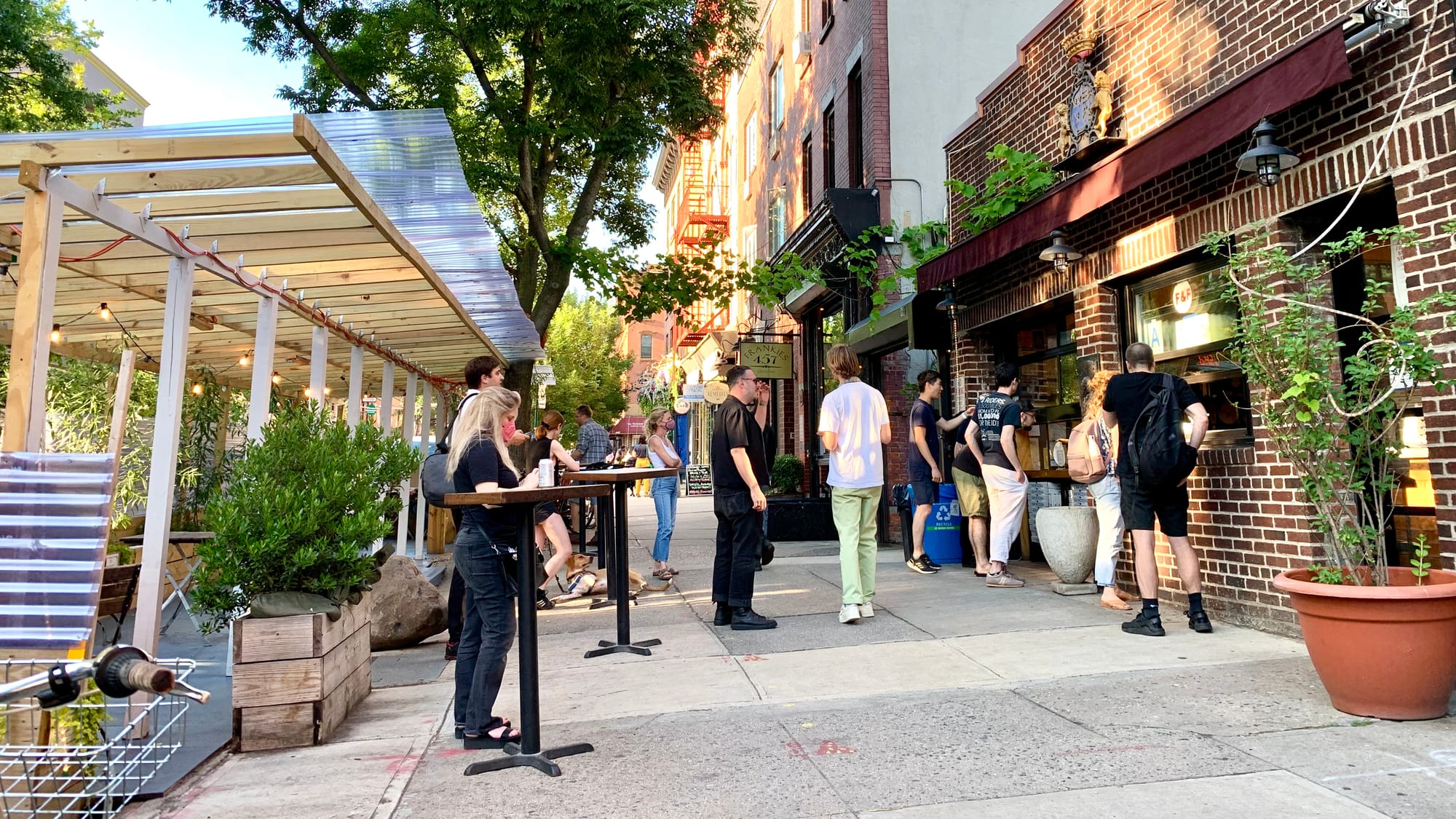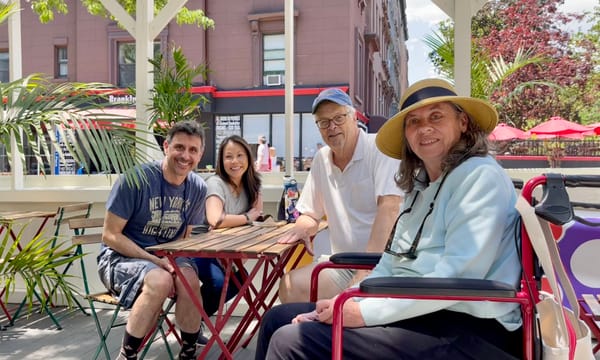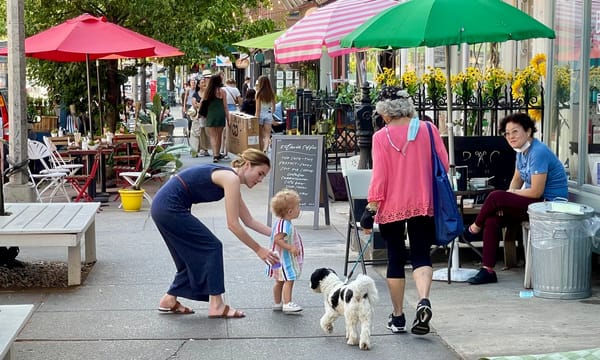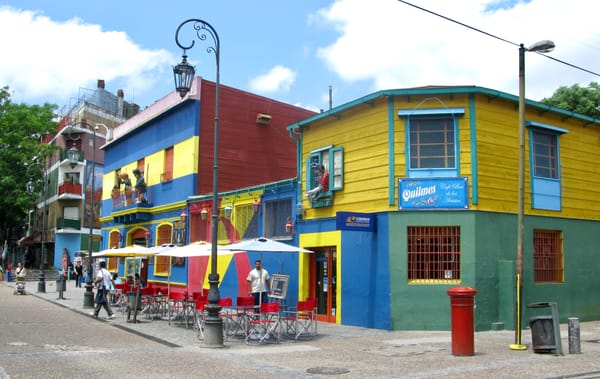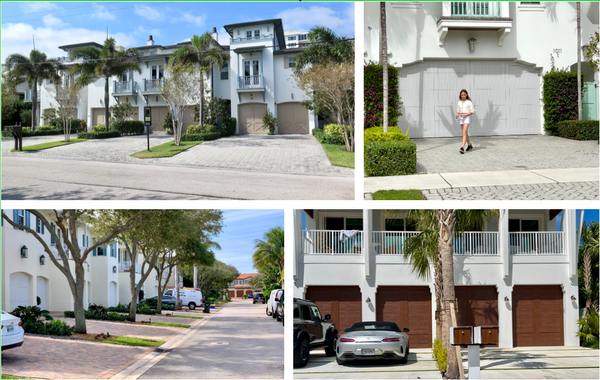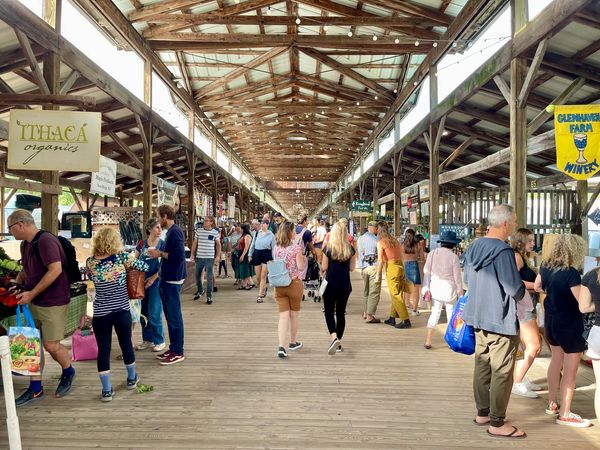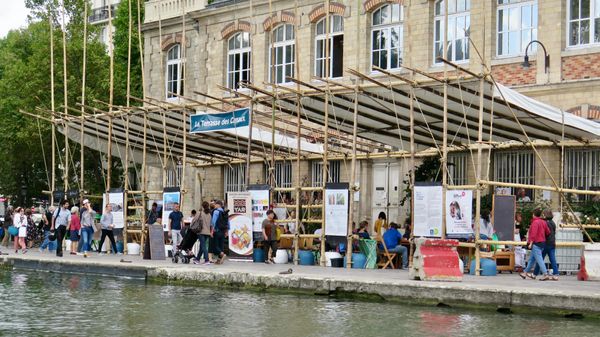New York's beloved street dining sheds are being taken down in response to a push by the mayor and city council president, despite the fact that they are beloved by communities and even supported by NYCDOT.
A wonderful new trend emerged in New York during the pandemic that transformed sidewalks into major social gathering hubs. “Dining sheds” and sidewalk seating areas popped up all over the city, expanding the areas where we can gather, connect, and enjoy life. These places became truly wonderful hangout spots for all members of the community and revitalized the streets of our city.
Unfortunately, these spaces are now being removed. Because of new rules that put a number of costs and restrictions on street dining with the goal of returning space to cars and control to the government, the majority of these great places are being torn down. This is a tragedy for the city and one that we can't just stand by and watch. So much more than outdoor dining is being lost. What we are losing is social life, community connection, and the very soul of the city.
Before and After Examples
Poppy's
Poppy’s, a Brooklyn-based restaurant expanded its seating area into the street to create a wonderful outdoor eating and socializing environment that everyone enjoyed. Now, that lovely dining shed is a parking spot for ONE CAR...
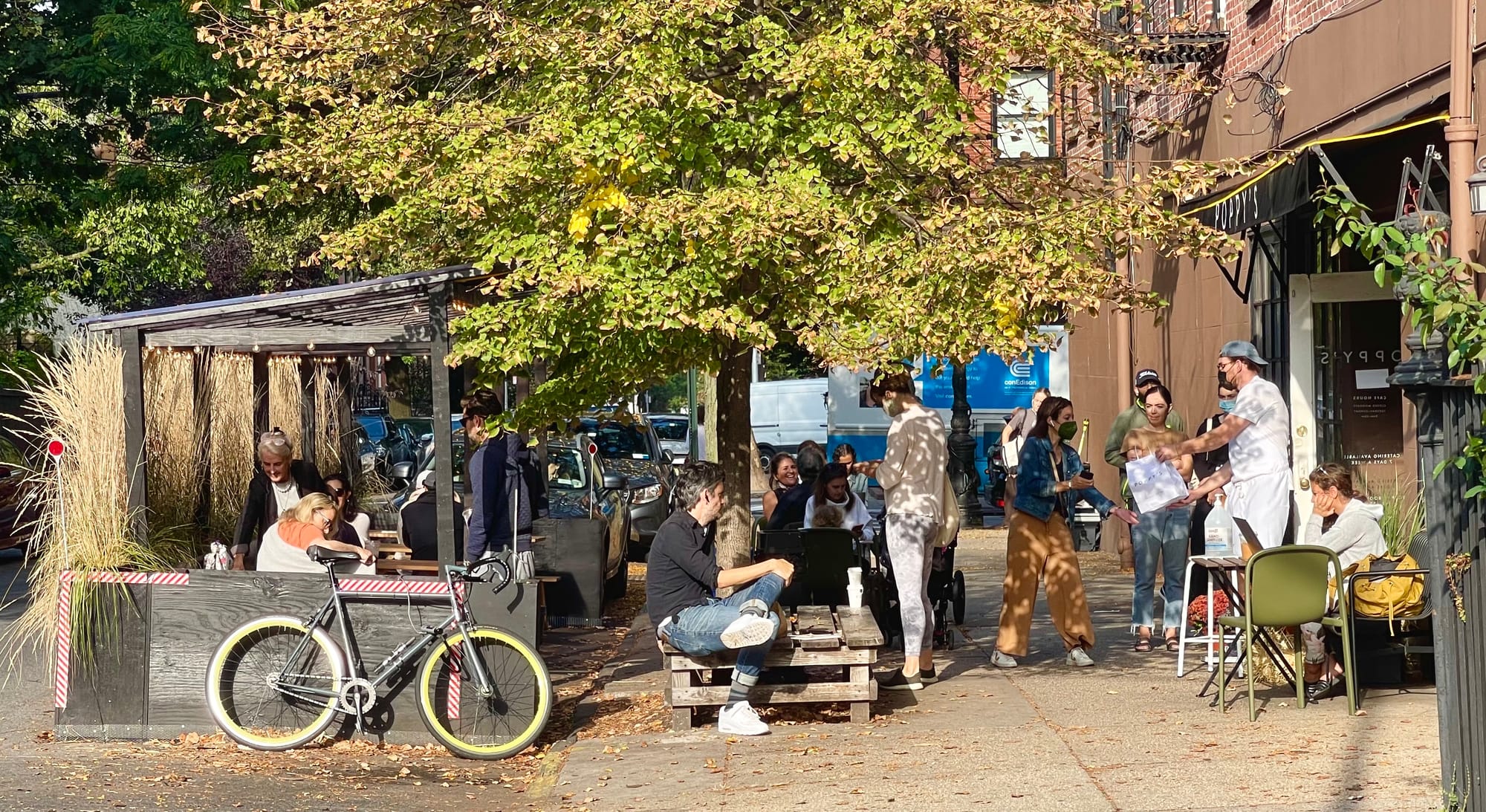
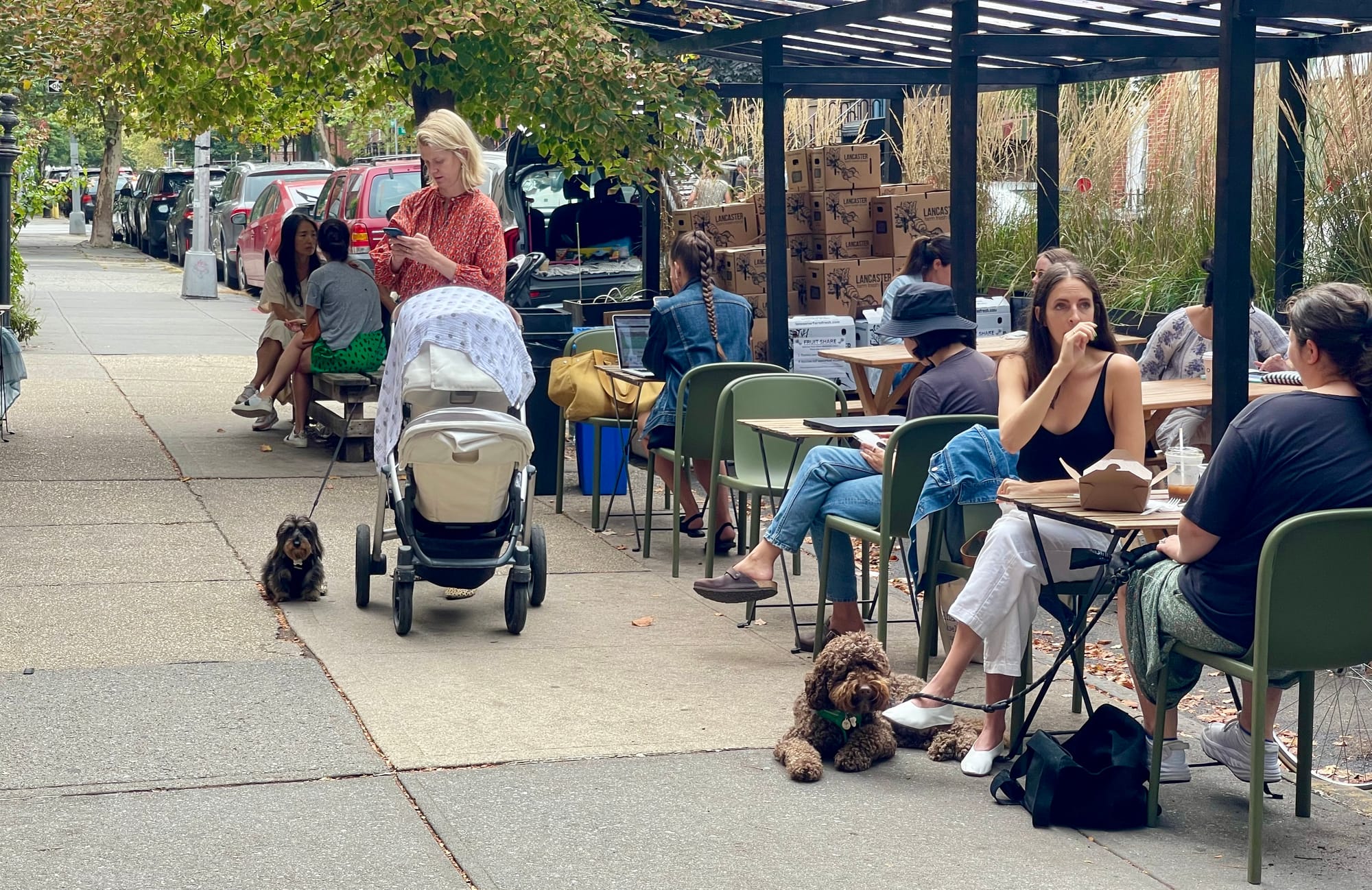
Before - dining sheds
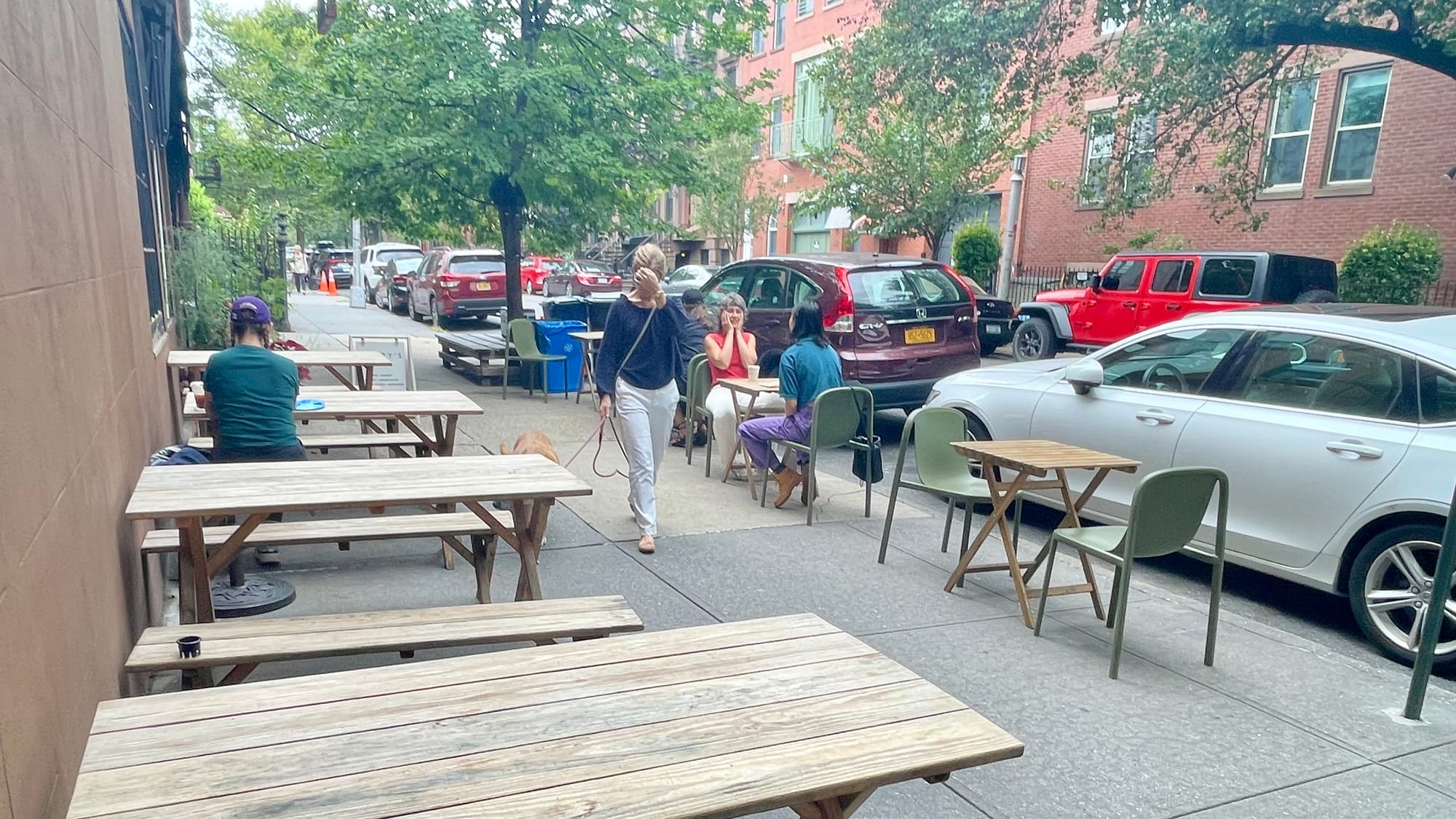
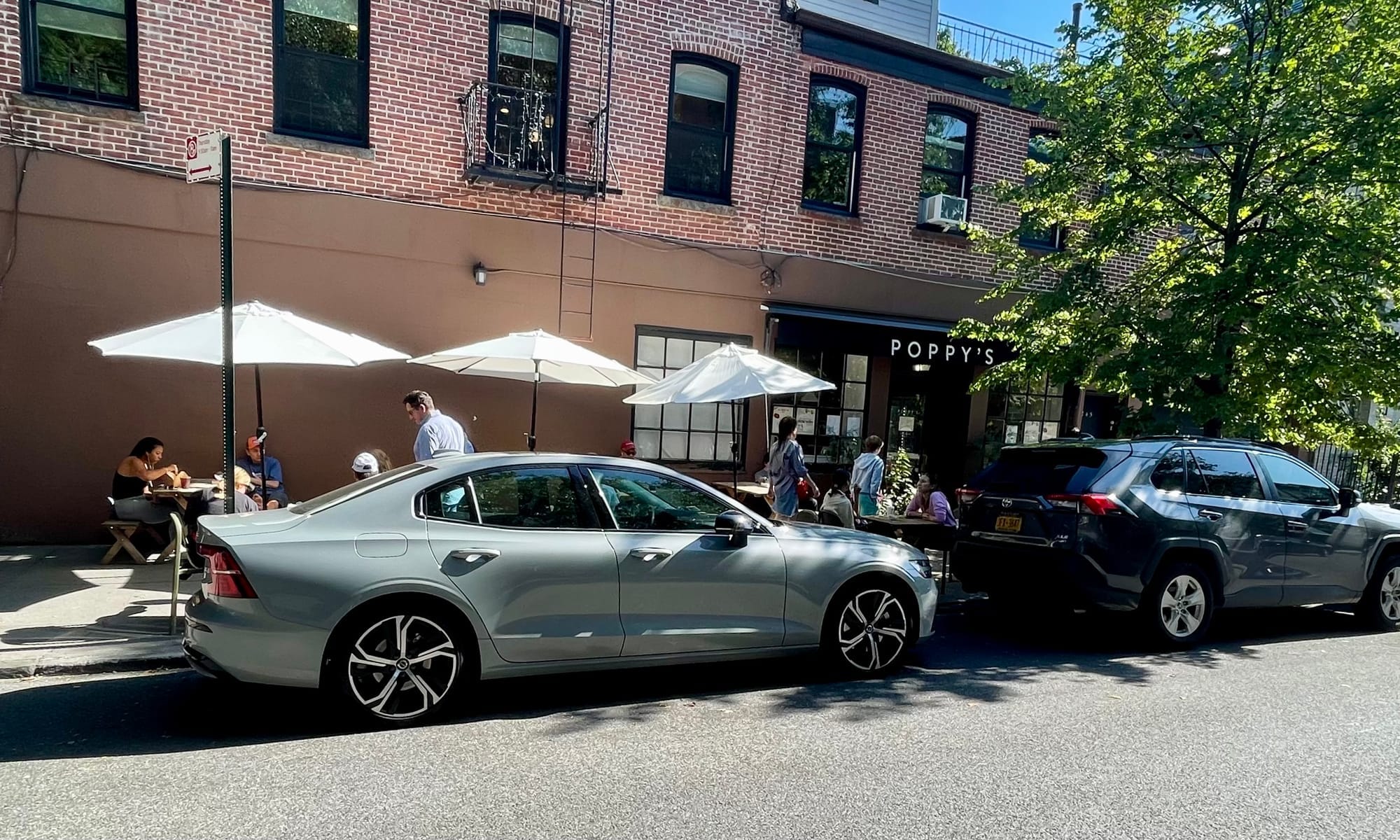
After - parking spot
Darna
Darna's street seating led to the transformation of the whole block as other establishments followed suit, creating one of the best gathering places in the neighborhood. Now, instead of groups of friends, neighbors and family members chatting and laughing in the open air, electrifying the area with social life and joy, there is one private vehicle taking up the space for hours.
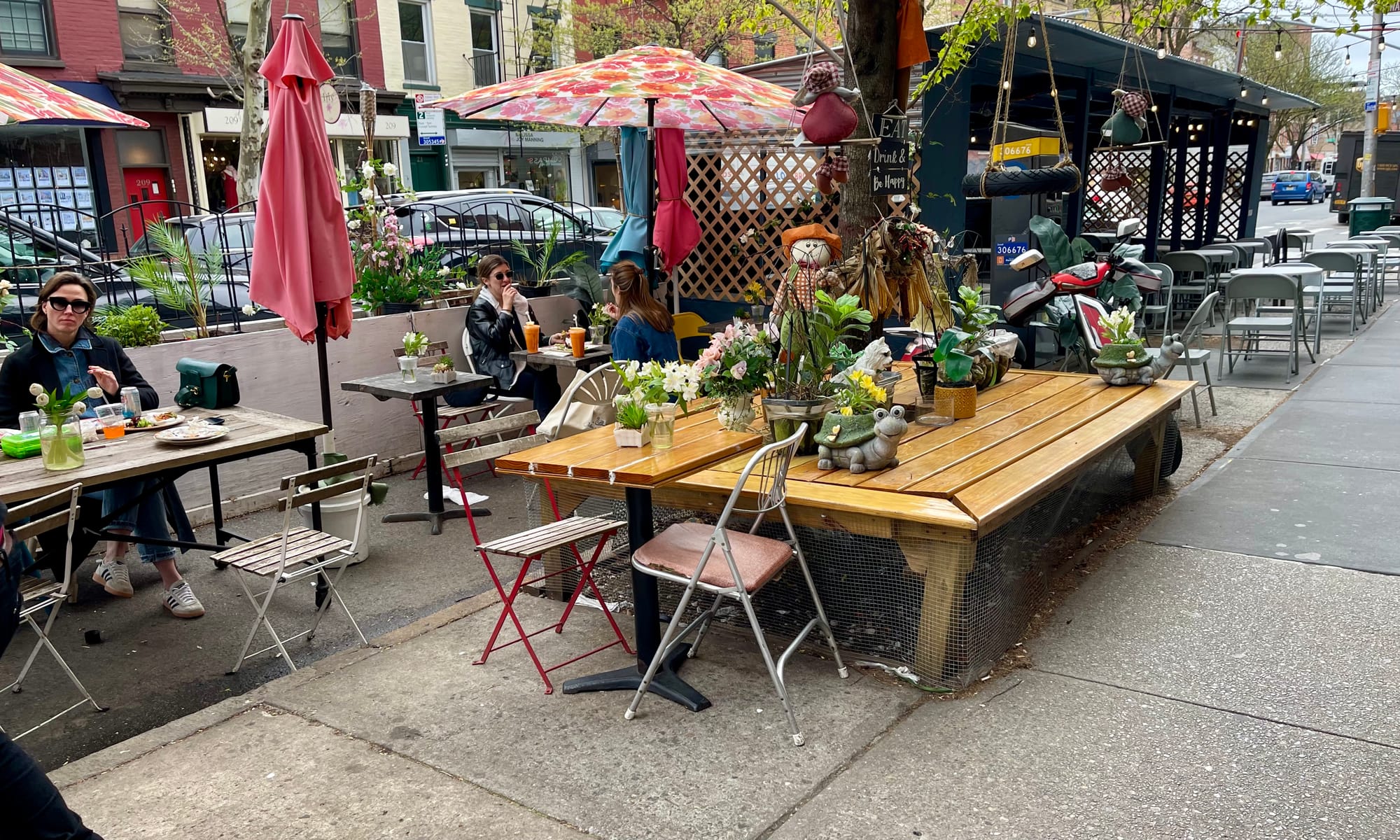
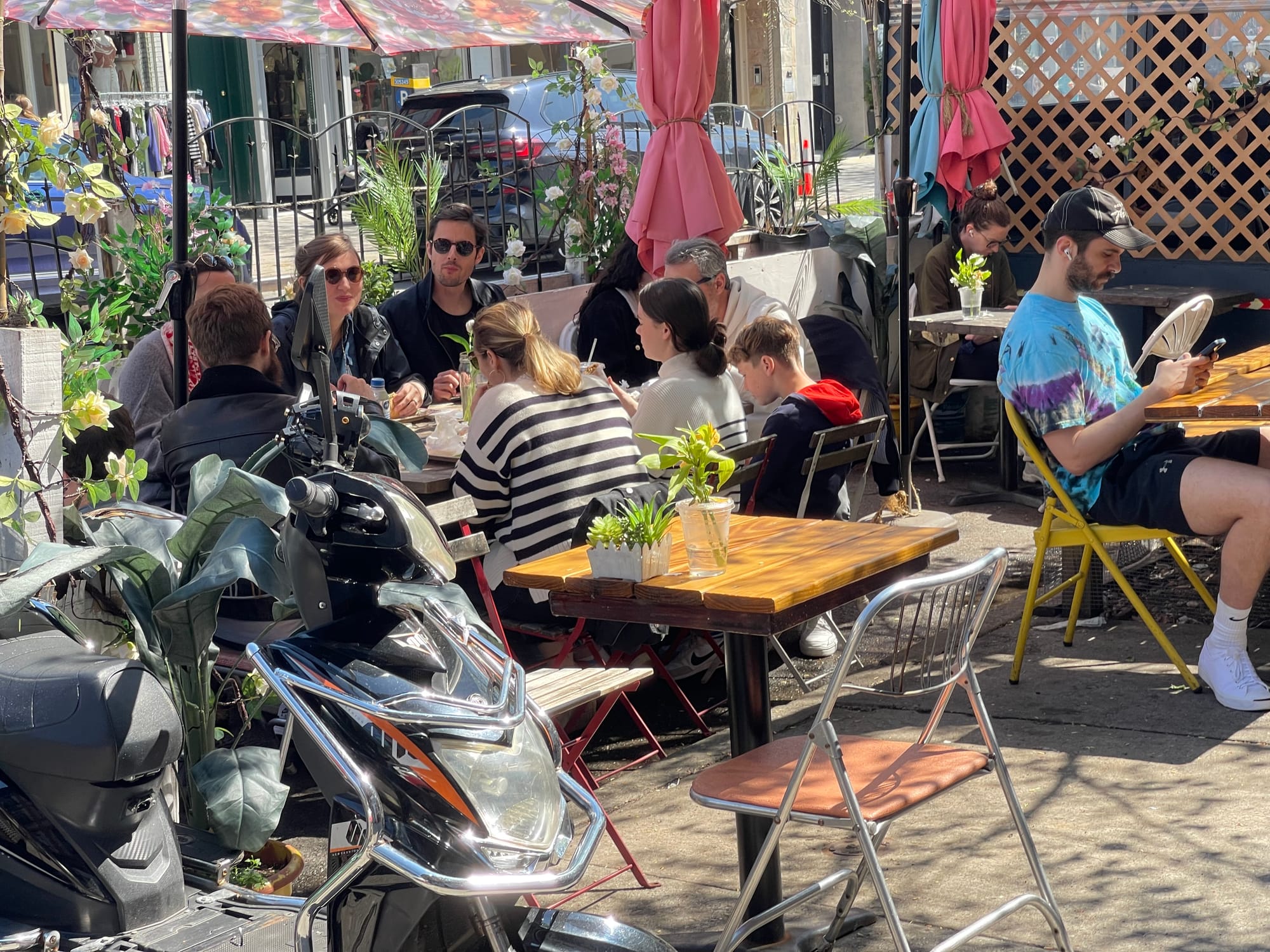
Before - dining sheds
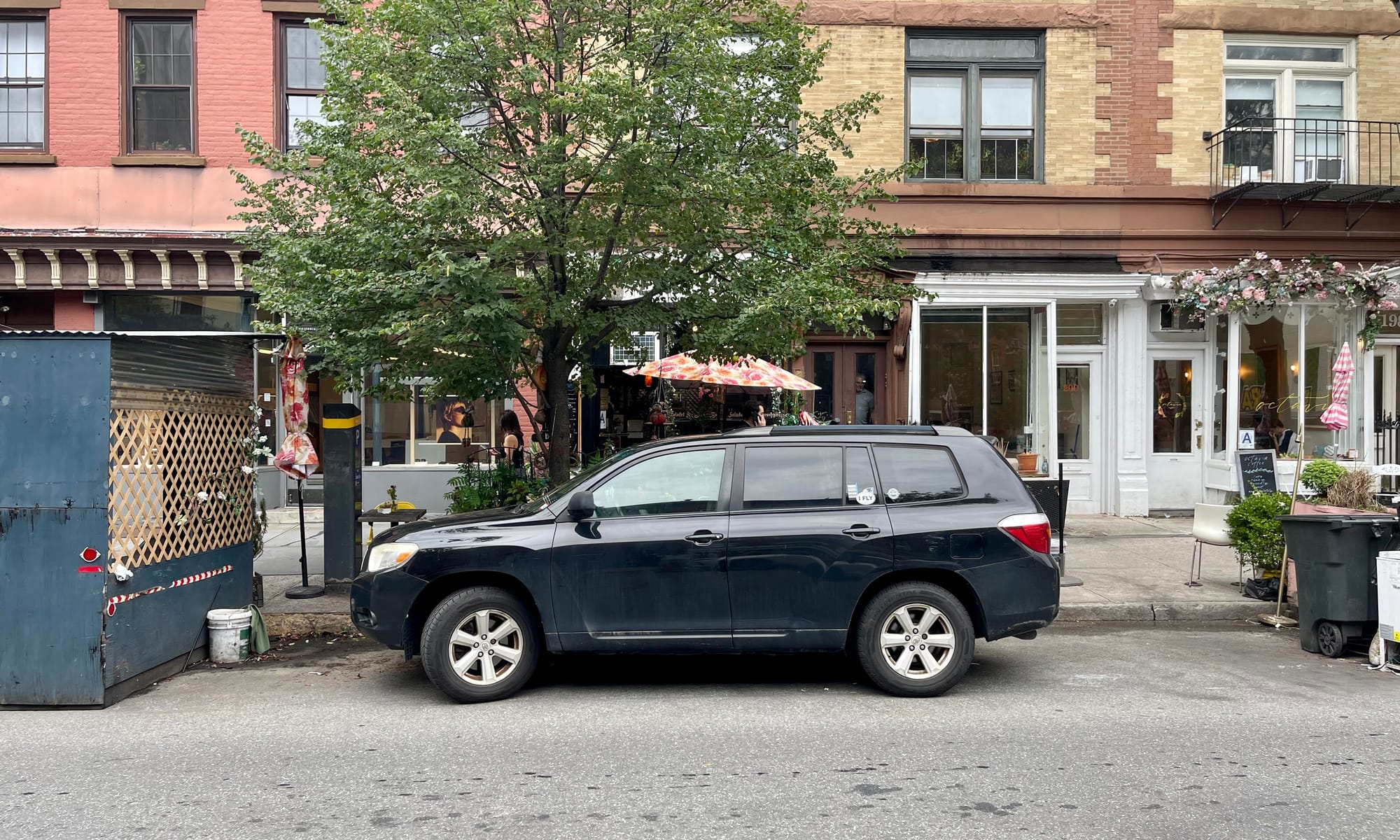
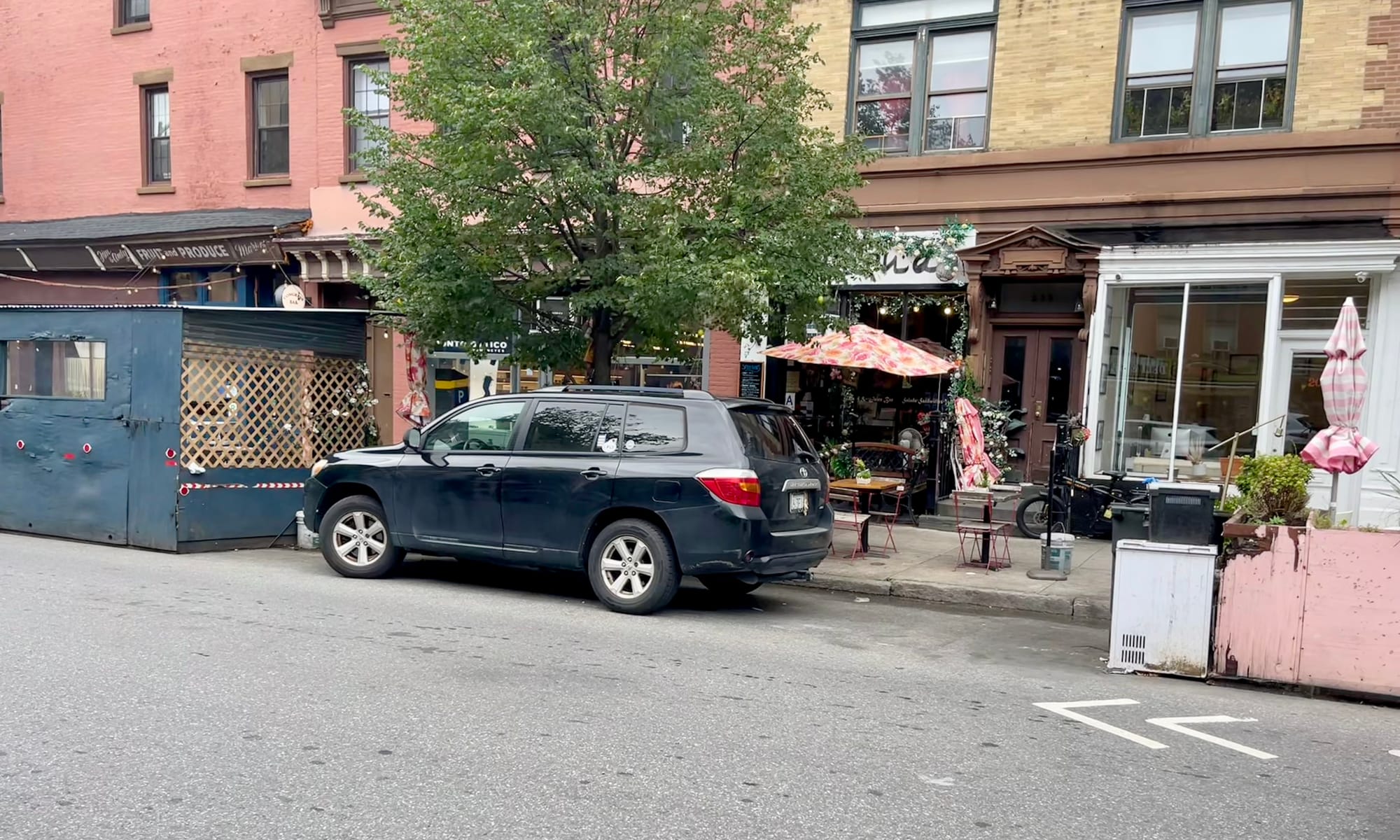
After - parking spot
Cobble Hill Cinemas and The Chocolate Room
This part of Cobble Hill was a true hub of activity as the chocolate shop and theater played off of each other to create a wonderful gathering place. People would go to the movie then hang out at the dining shed next door to discuss and grab a snack. That dining shed is now gone and, you guessed it, replaced by one parked car.
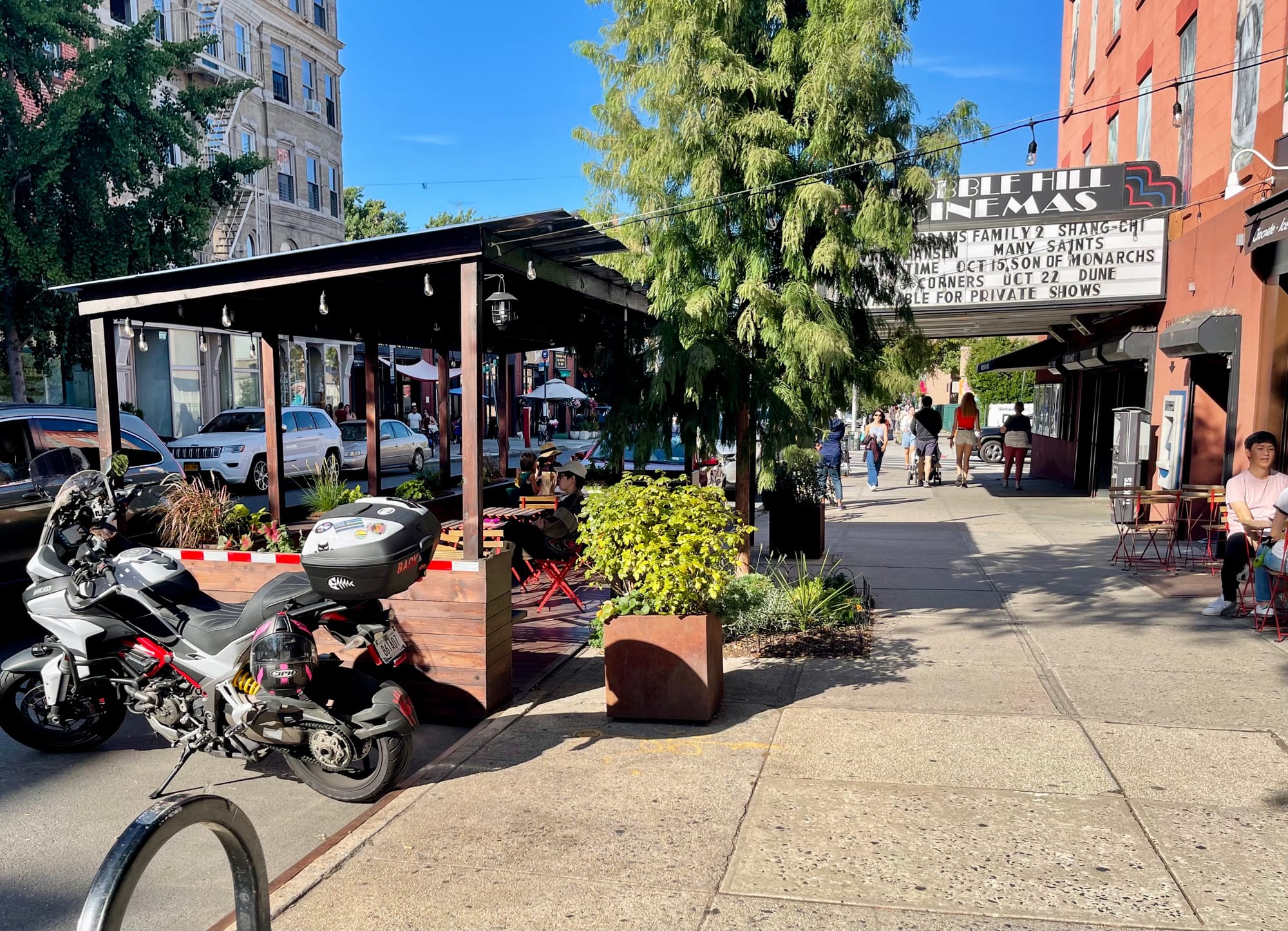
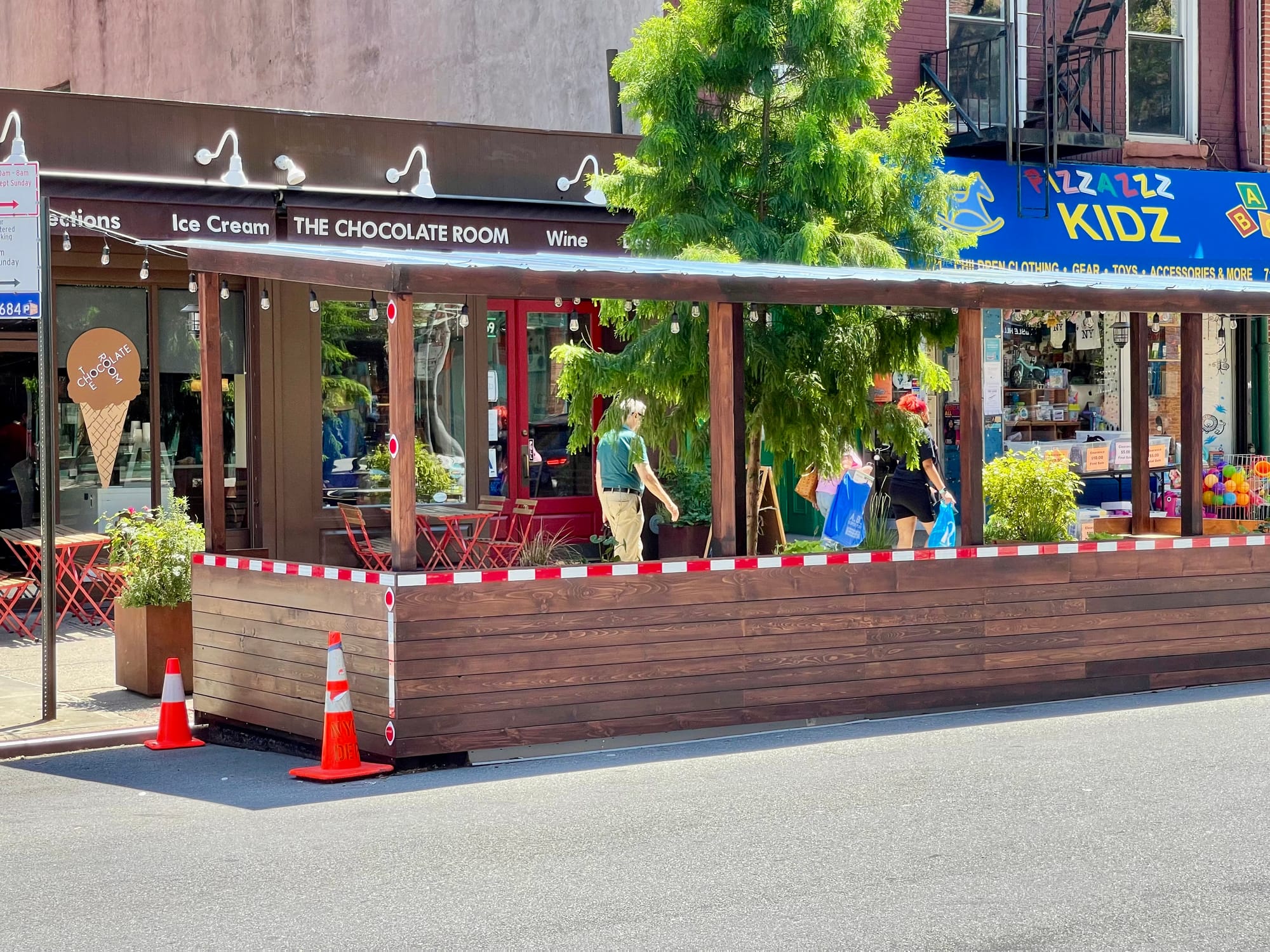
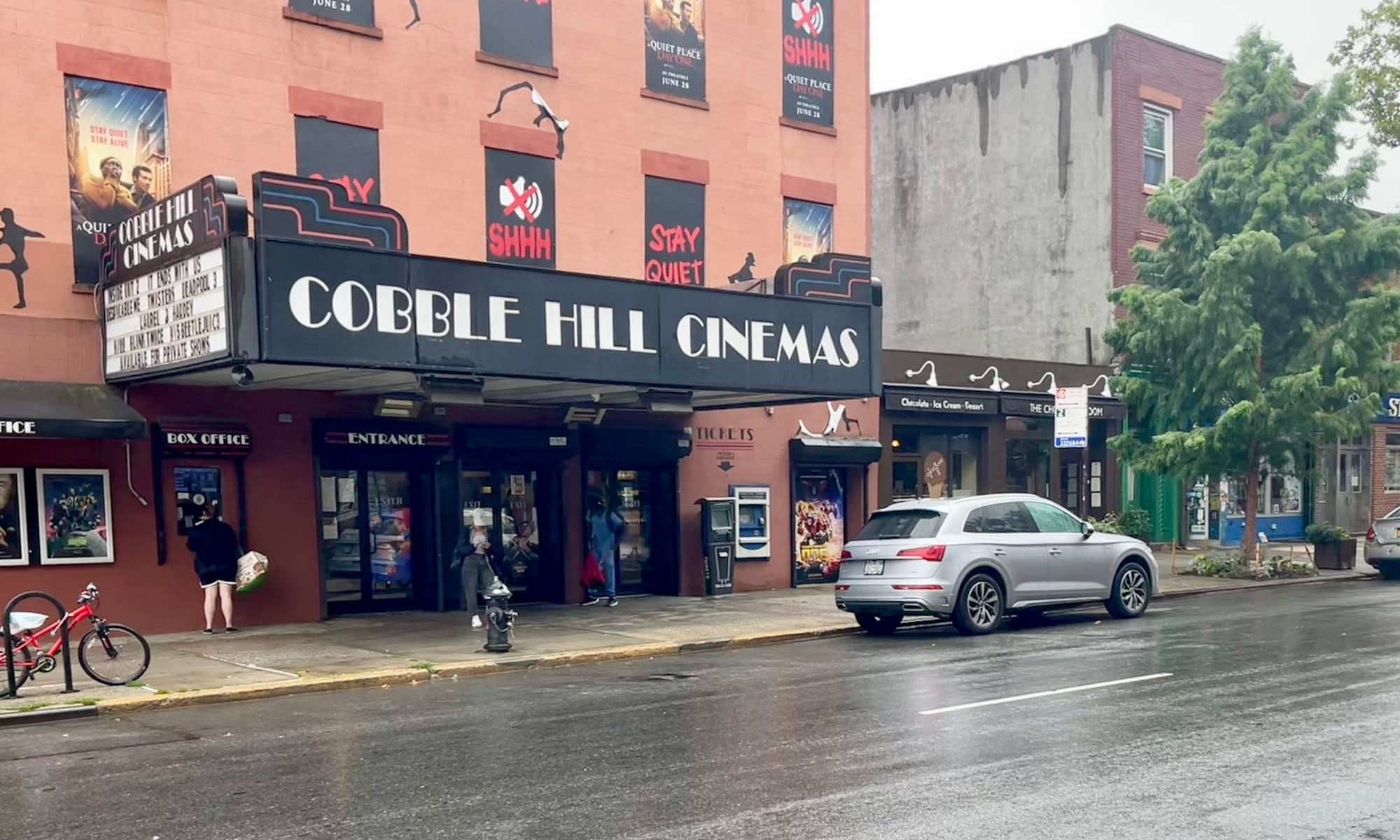
After - The car is where the dining shed used to be
Shame - Le petit Cafe Shed now gone
We thought odfthis as the Taj Mahal of cafe's It was beautiful inside and out
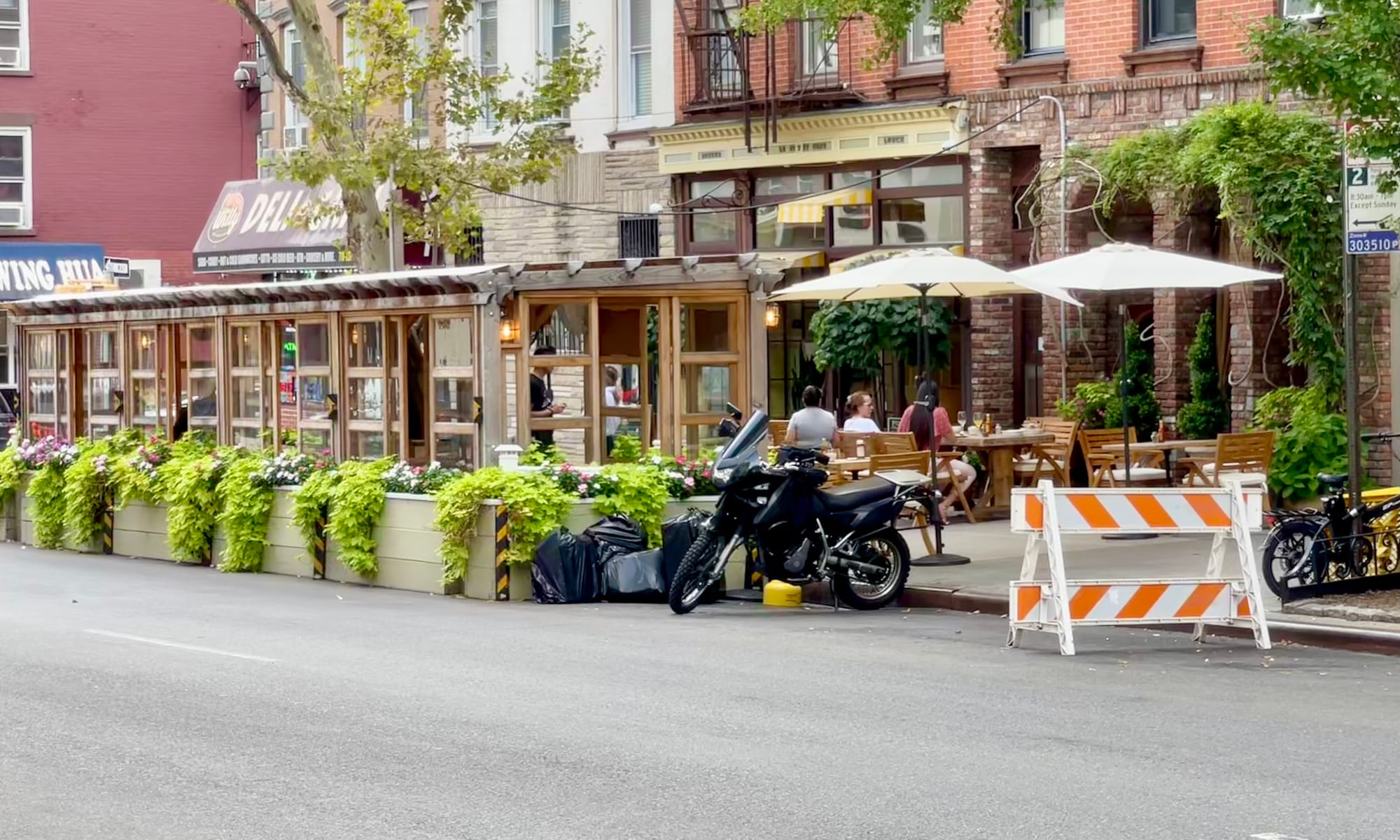
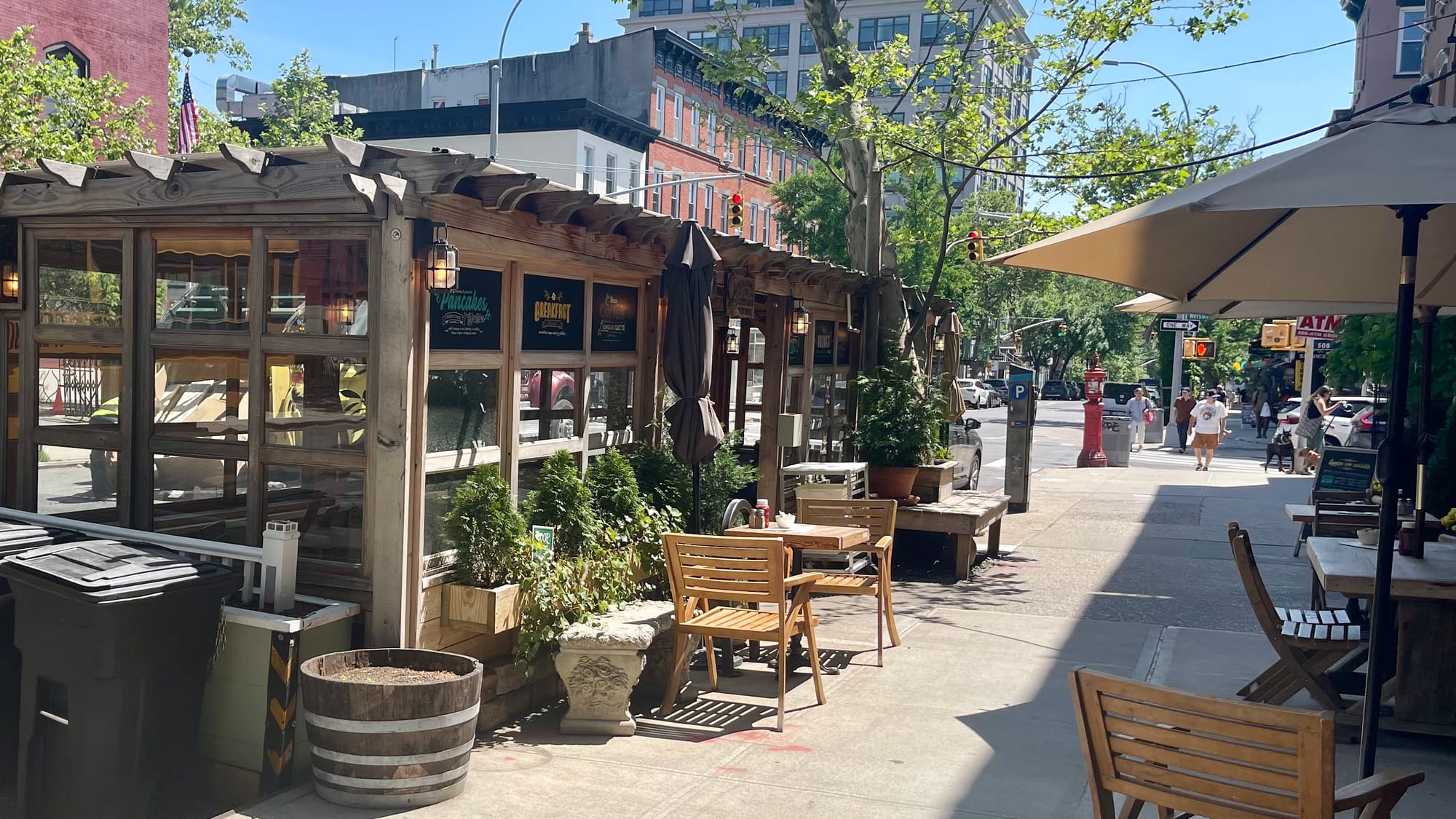
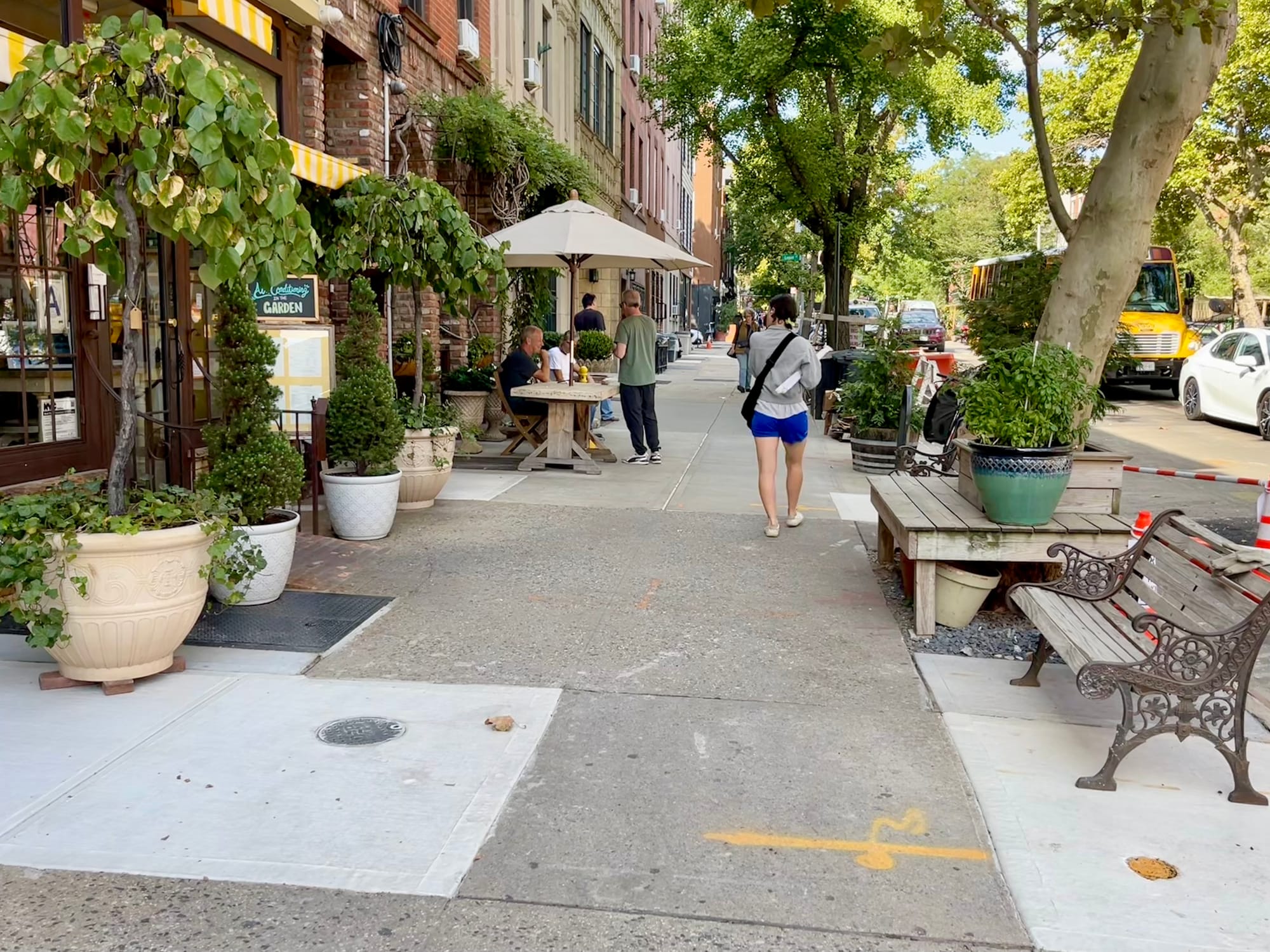
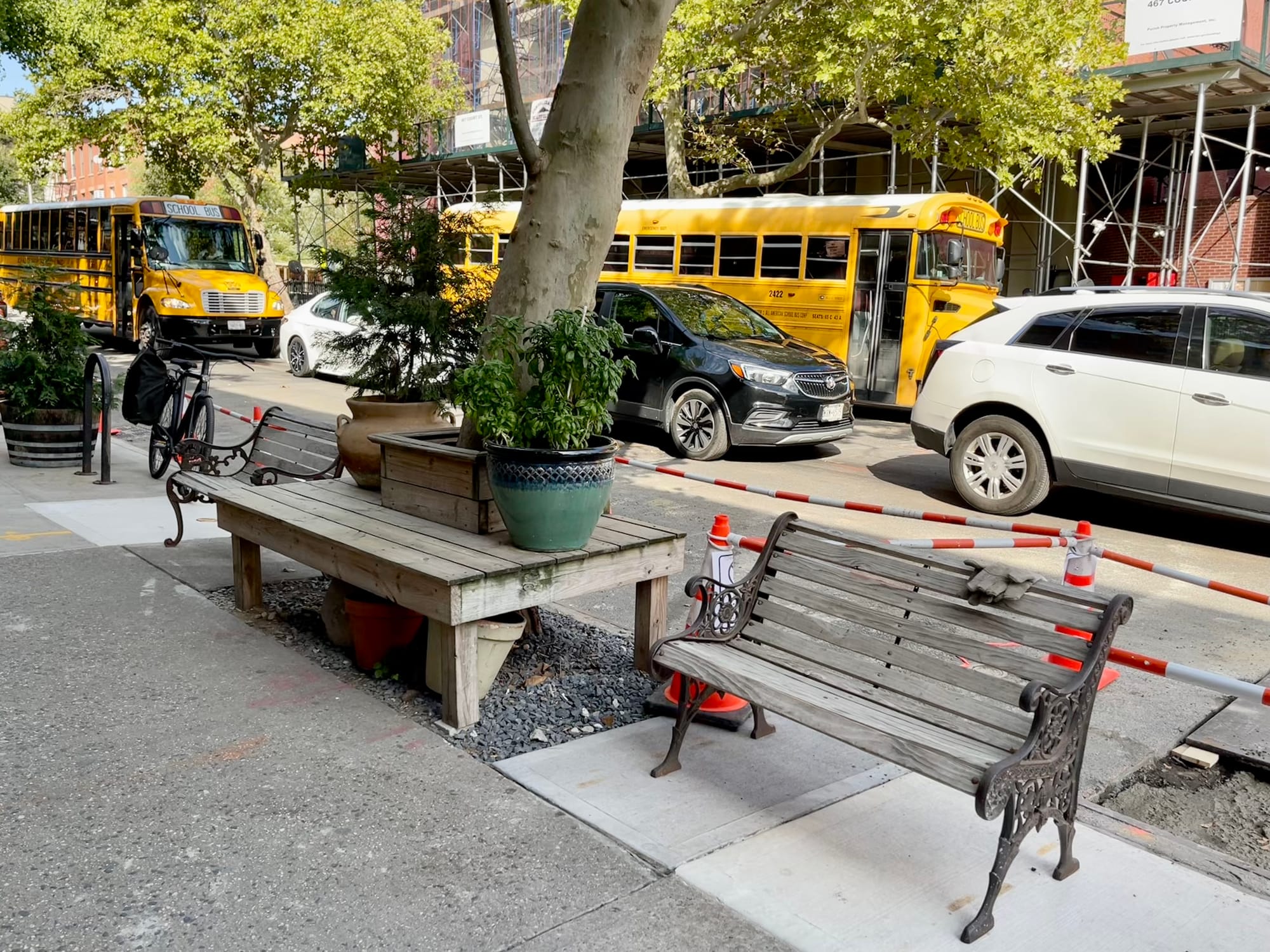
Le Petit Cafe
Darna Block
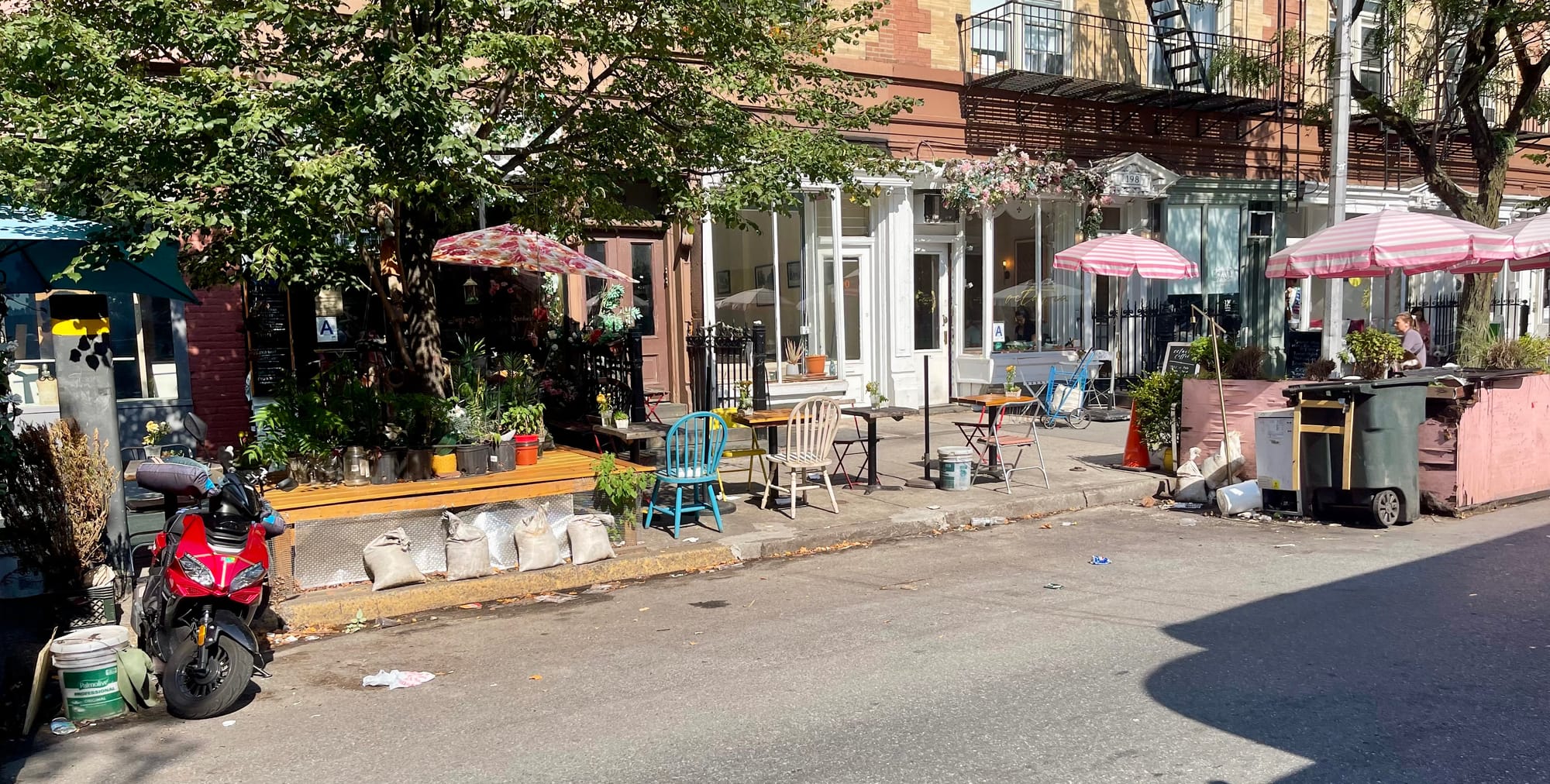
Sociale Block
Before the new dining shed regulations took action, this block was an exceptionally well-done collection of destinations crafted by each individual merchant and adding up to one of the best blocks in Brooklyn.
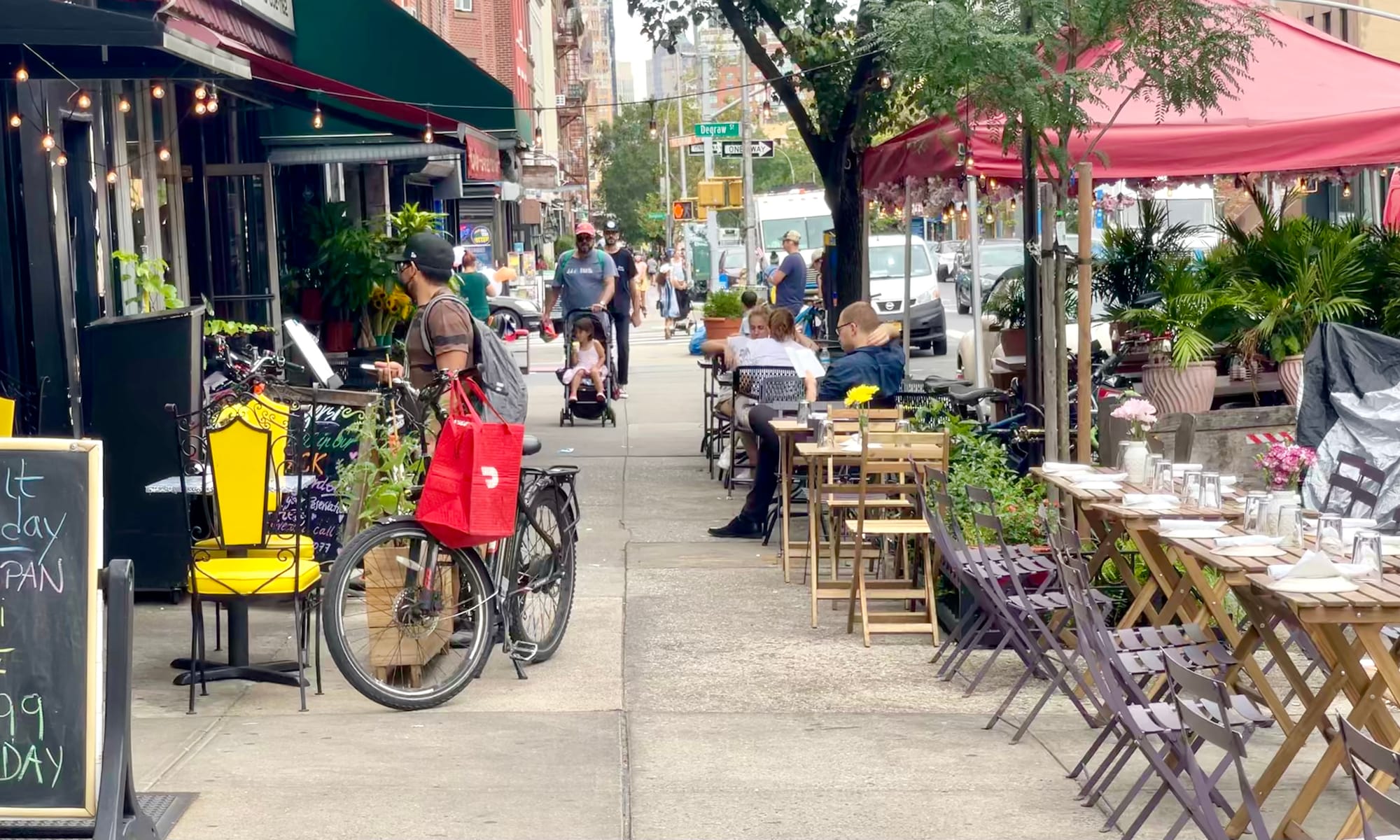
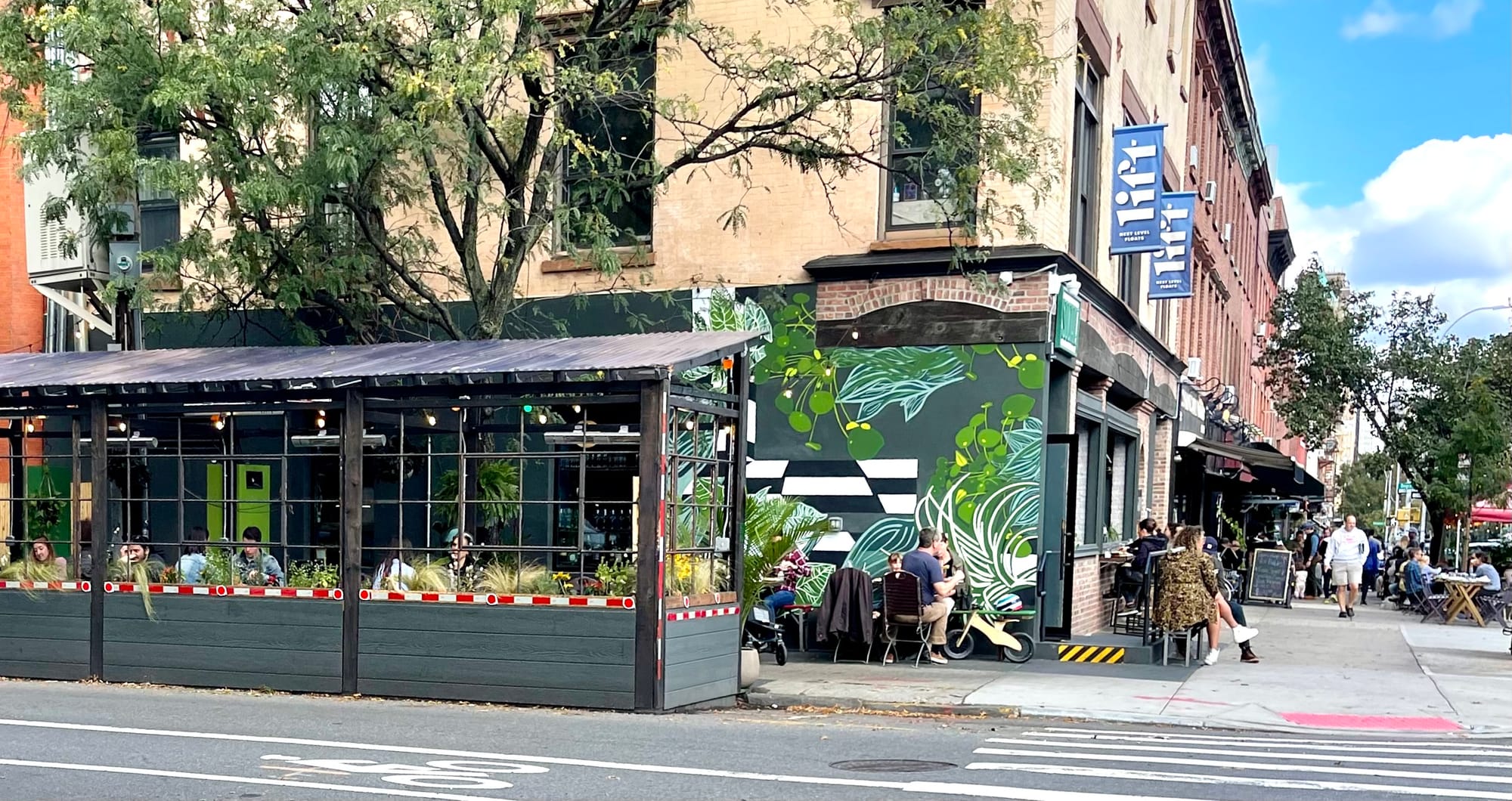
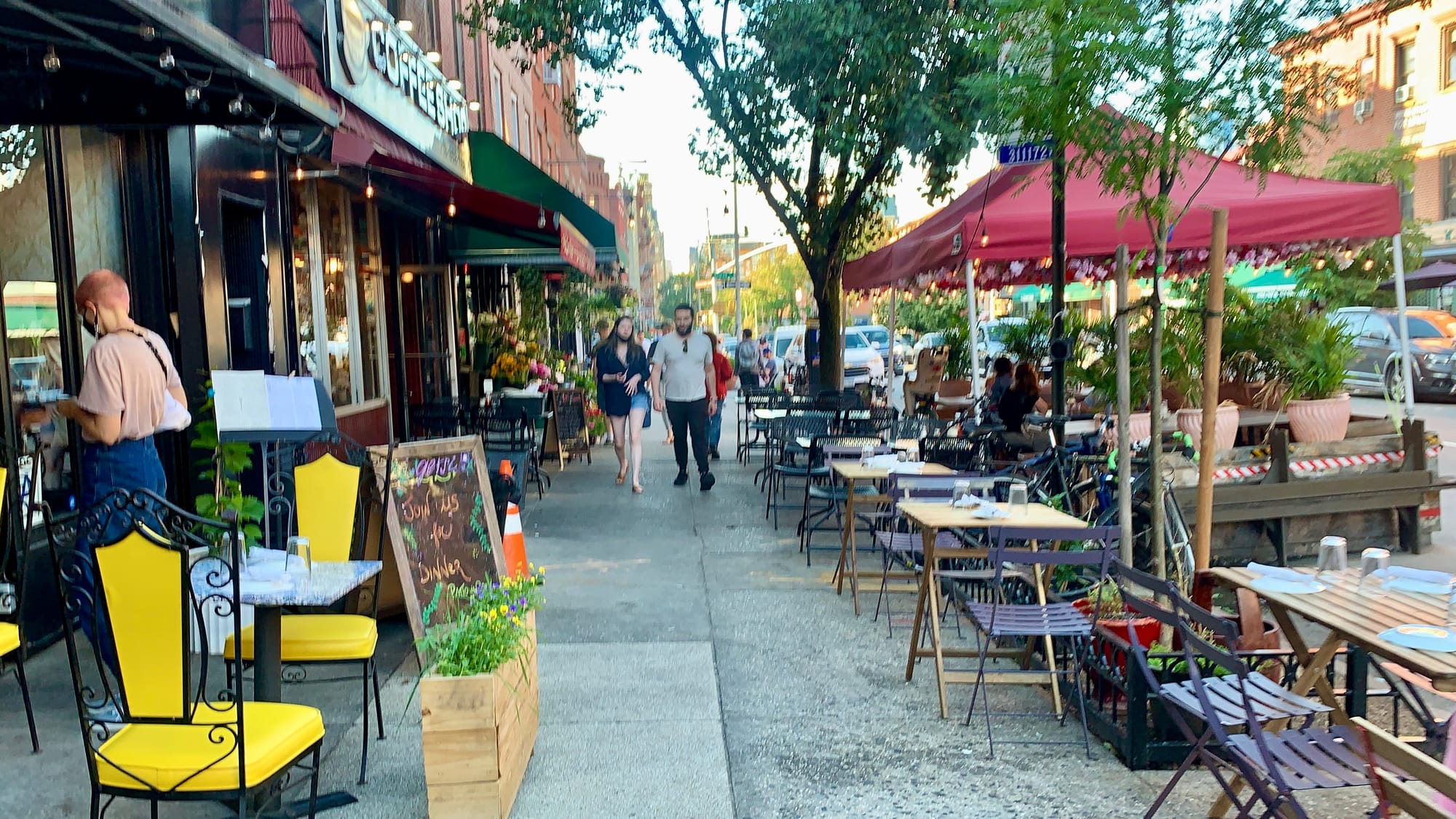
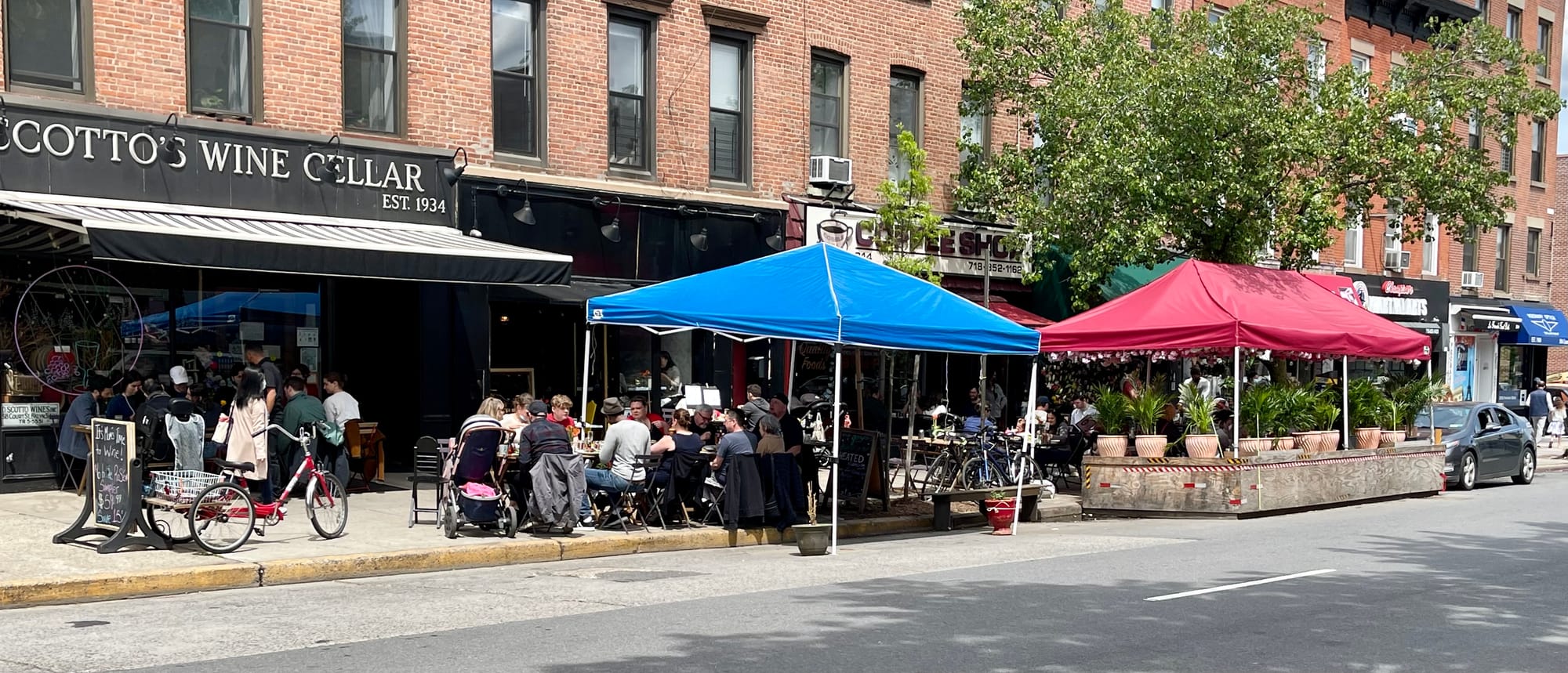
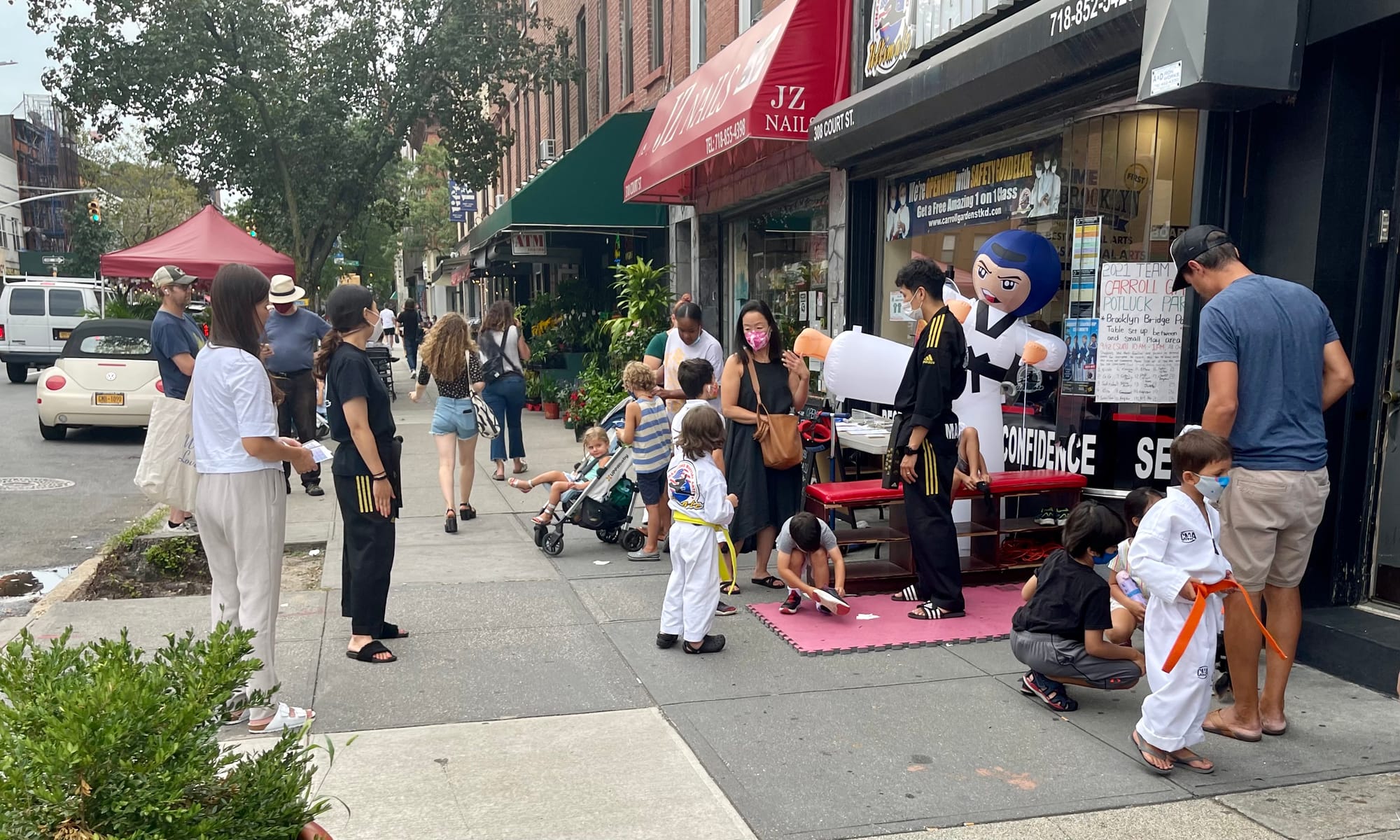
After the regulations were put into action, this thriving hub of activity became a dull and lifeless place full of empty storefronts and scooters/bikes on the sidewalks where once there was thriving social life.
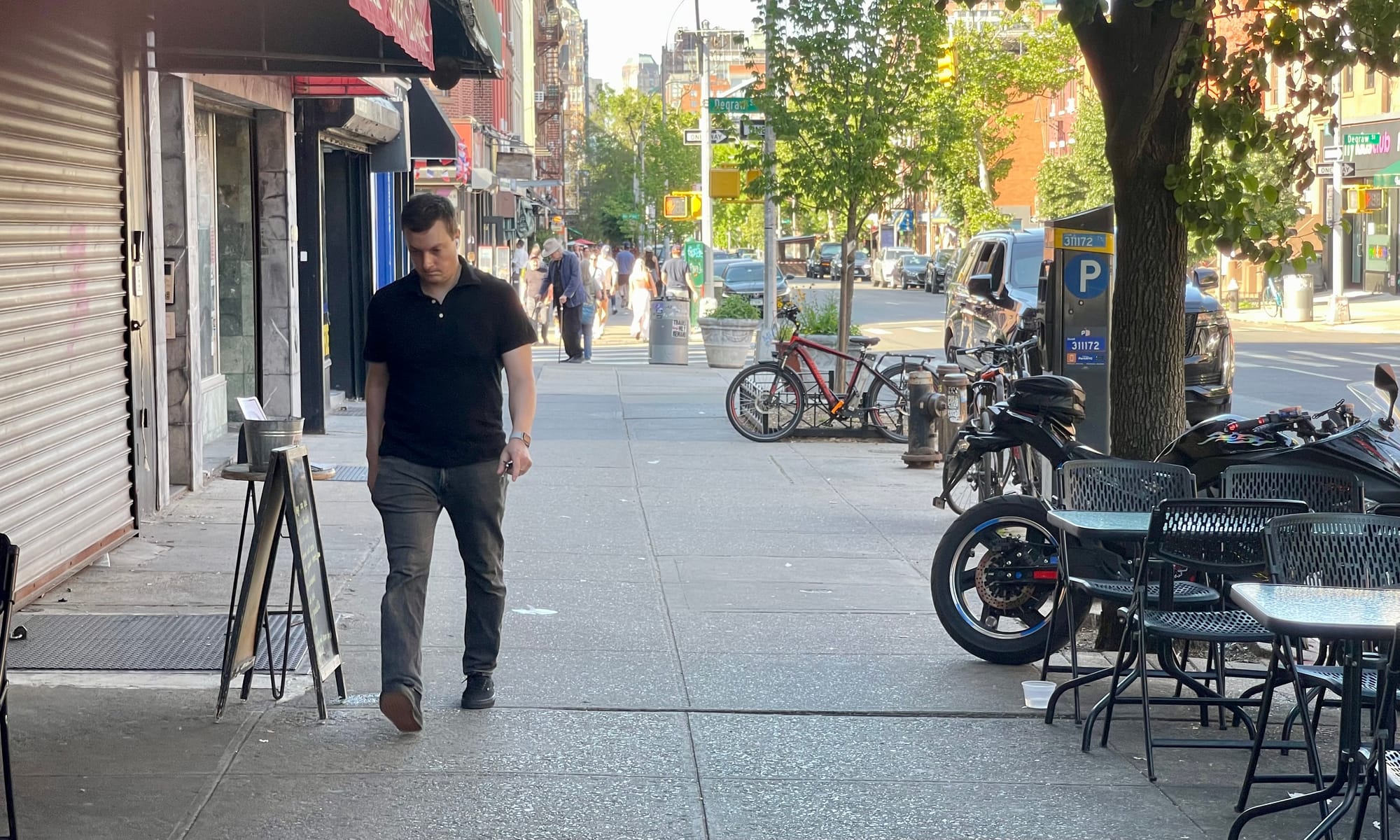
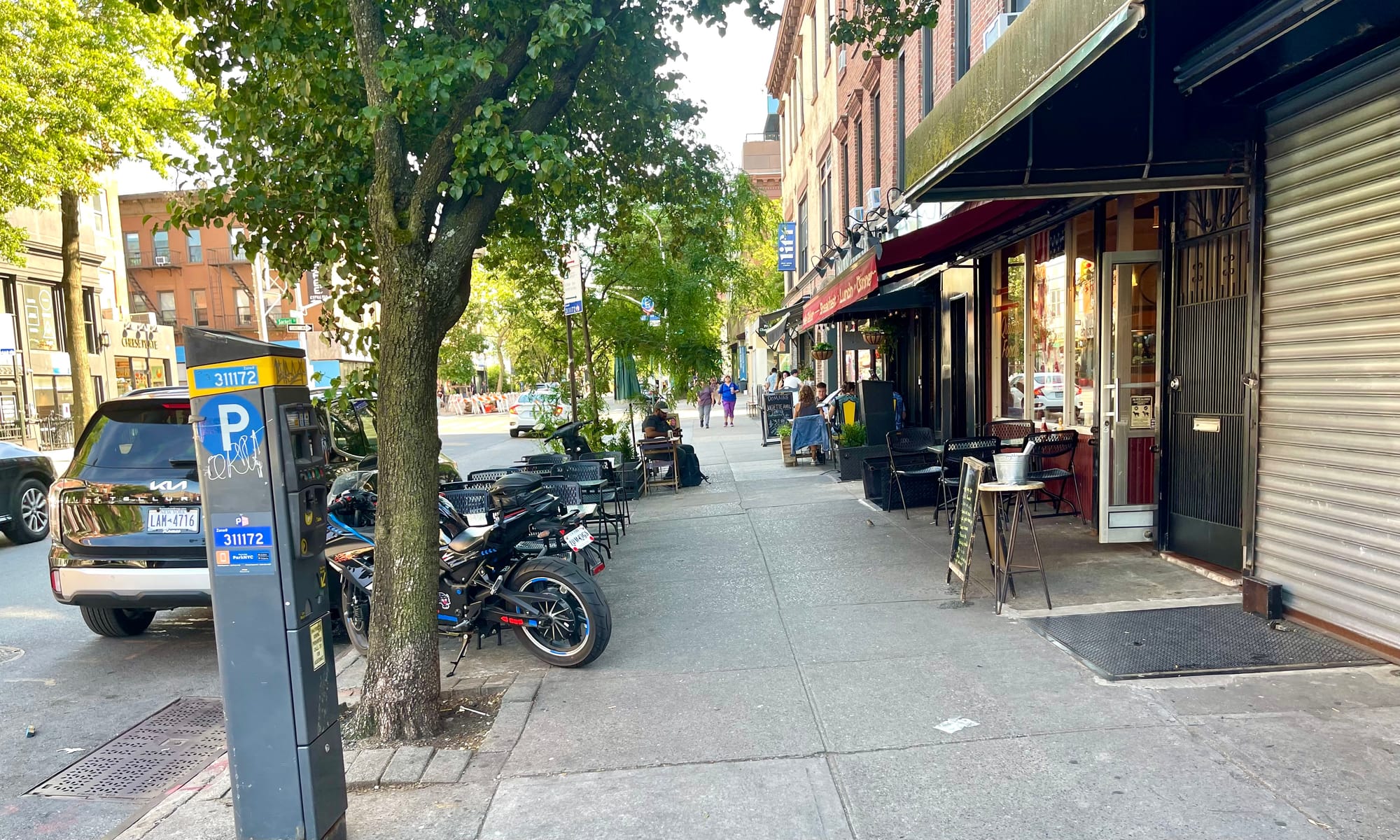
Atlantic Ave between Henry and Clinton
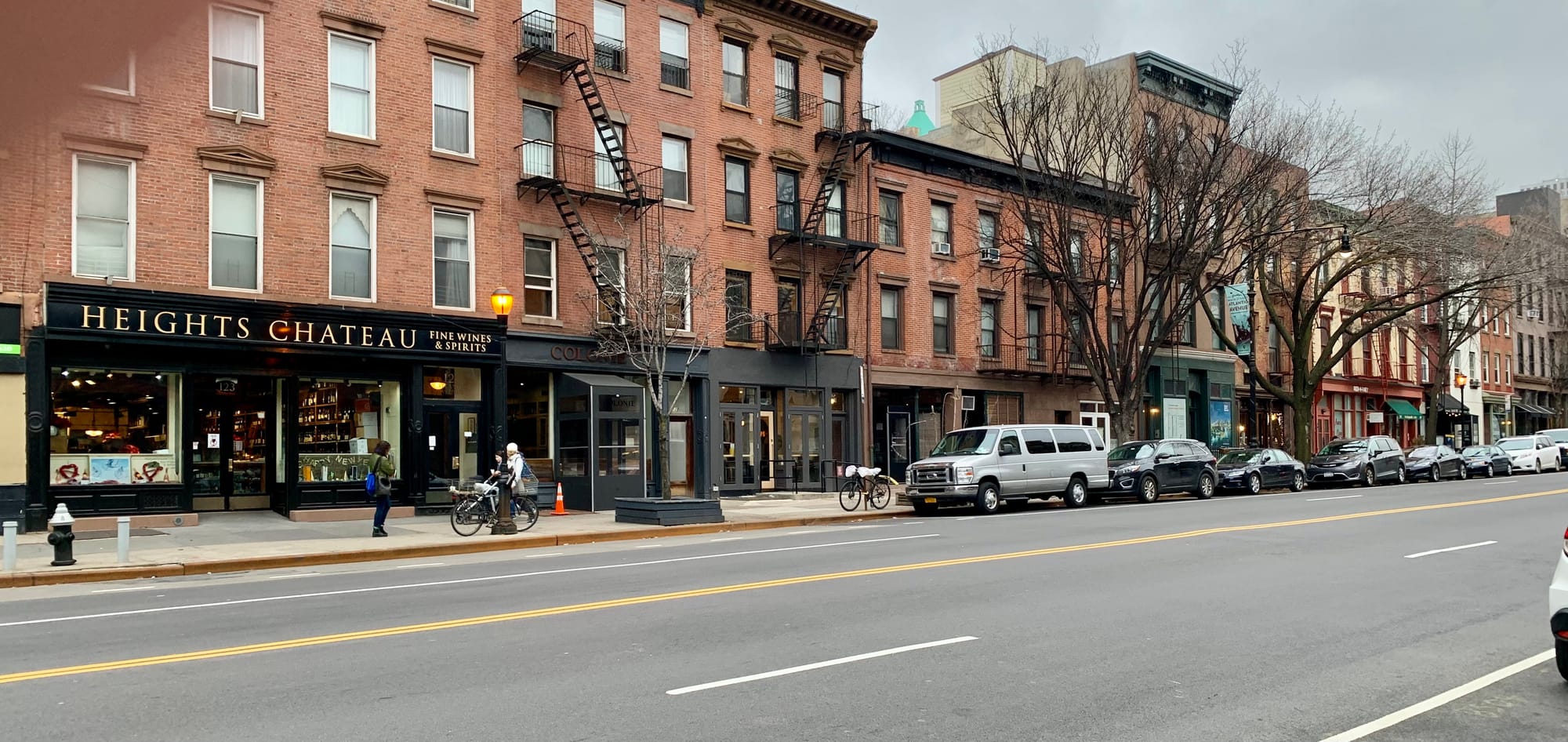
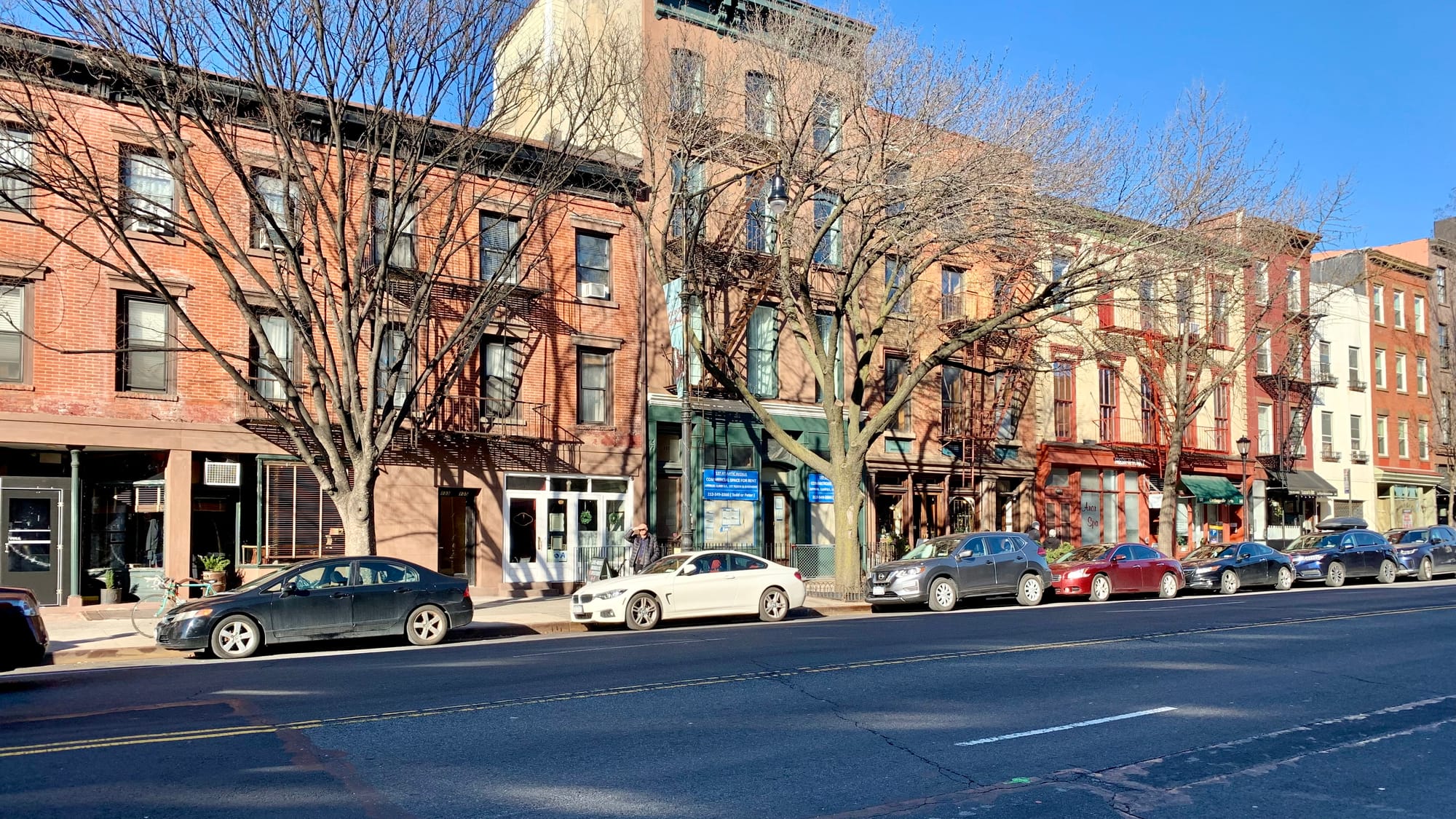
Atlantic Ave - Jan 2020
After Covid
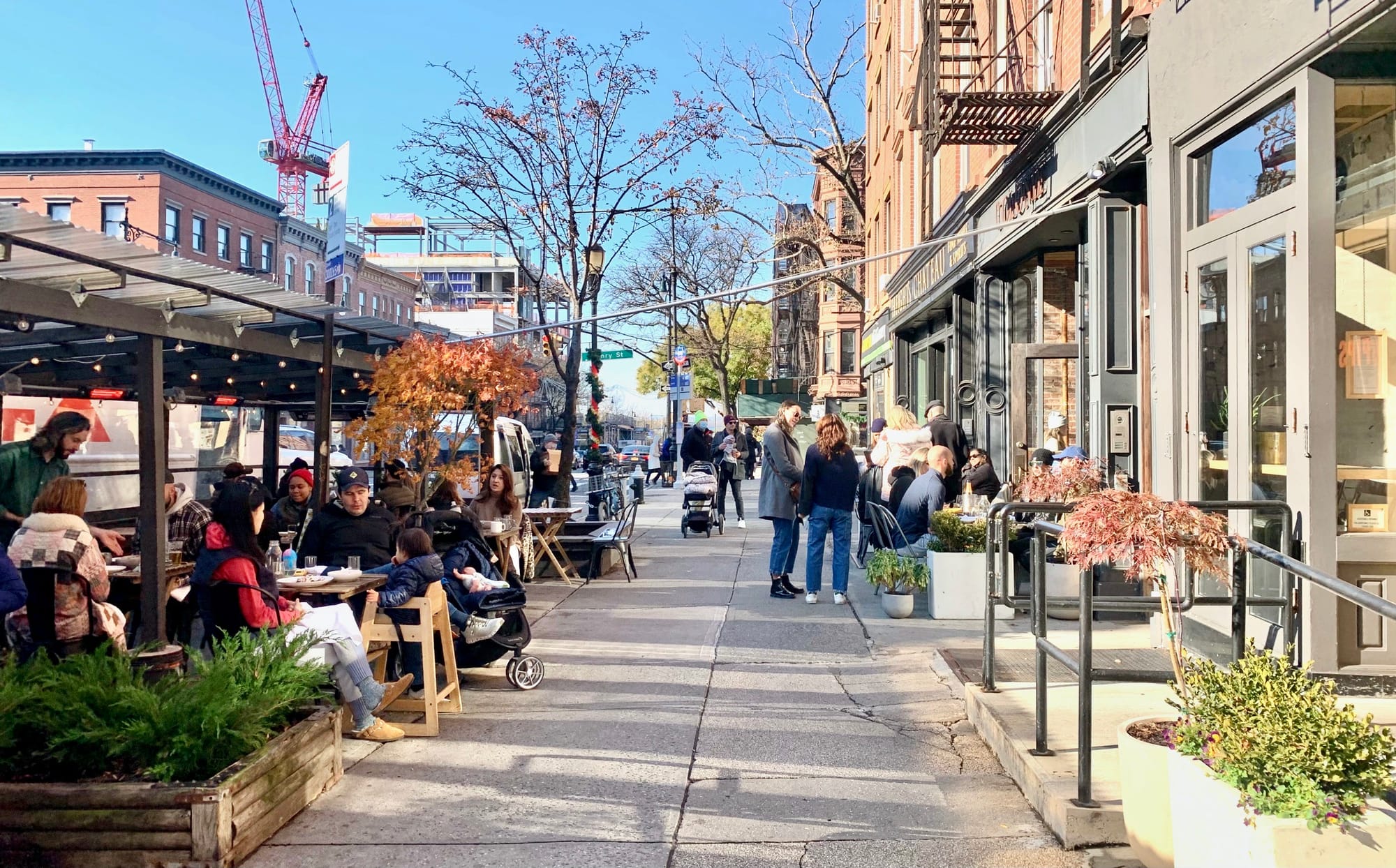
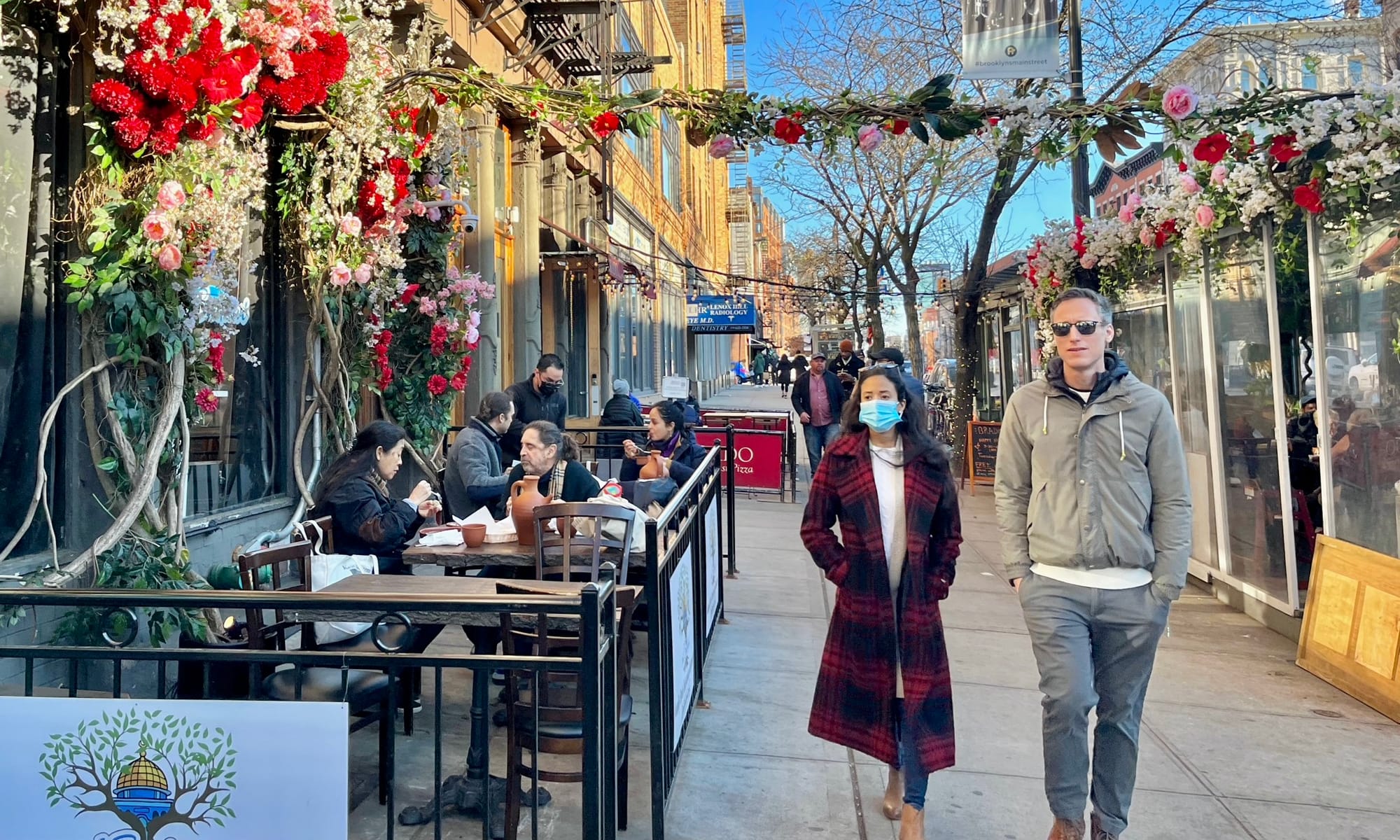
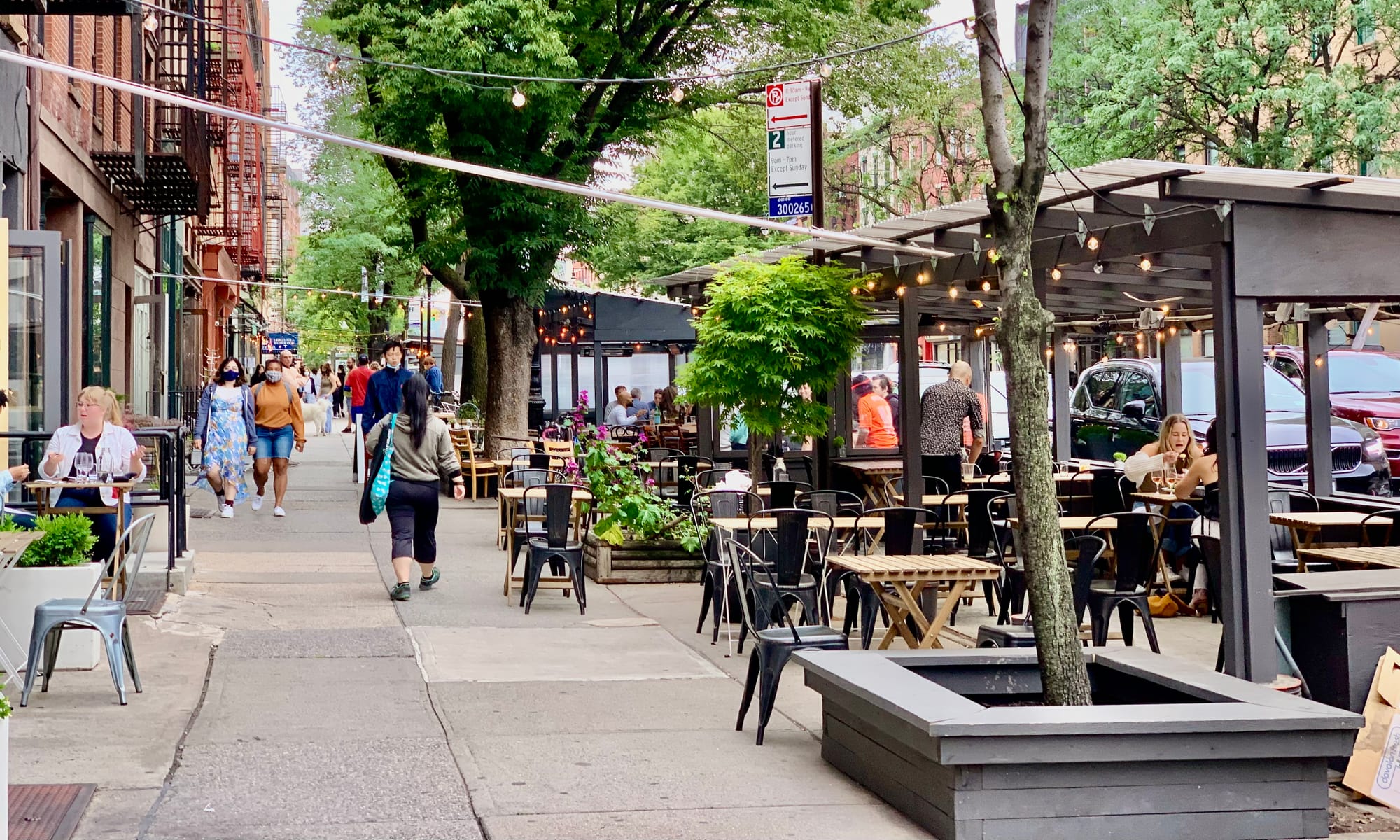
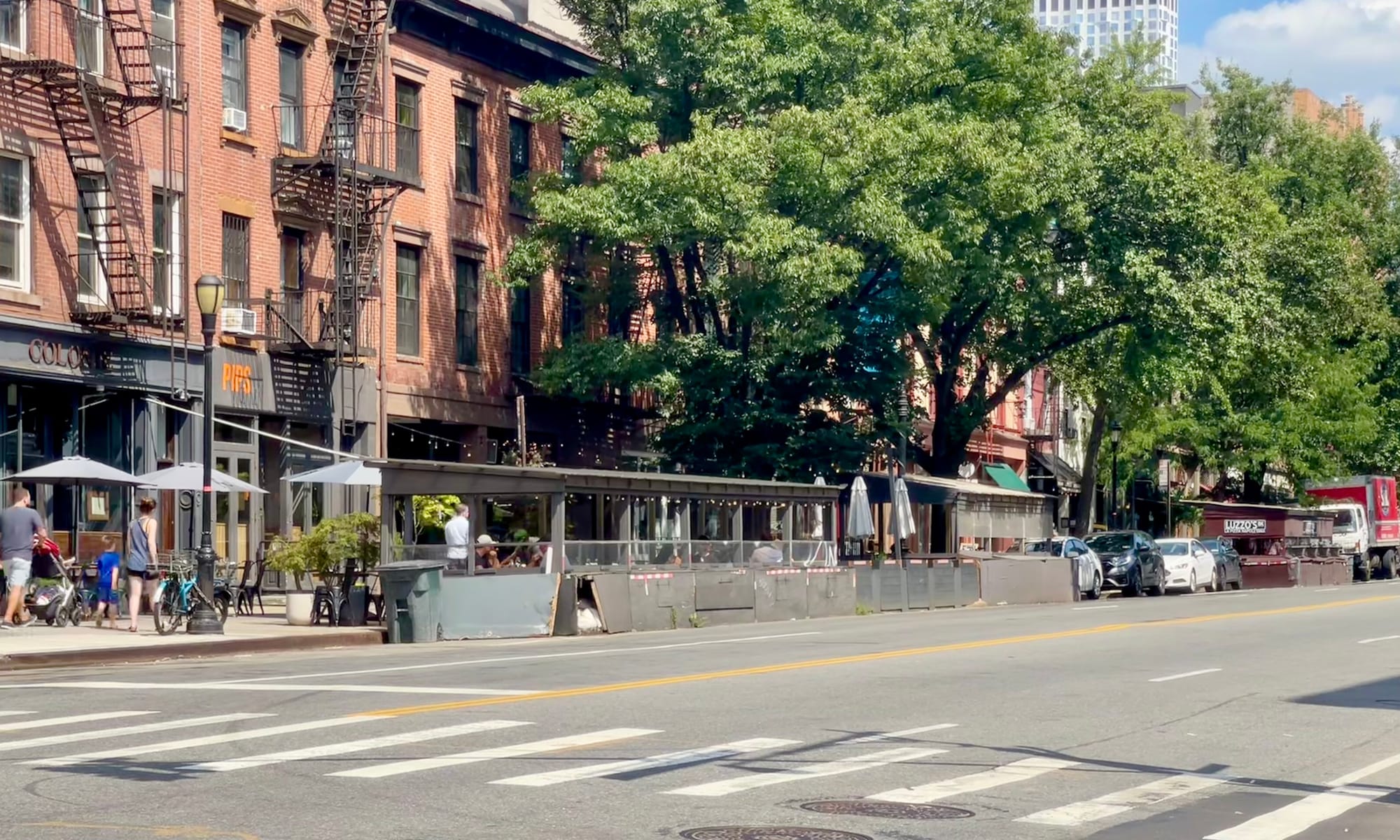
Is this progress? Is this what we think is bettering our city? How did we even get to the point where we believe that the after is better than the before?
How it Started
All around New York, amazing social hubs have sprouted up in the last few years. They are officially known as "dining sheds" or "streeteries." However, neither of those terms is fitting, because these places are more than a mere spot in which to eat – they have transformed our sidewalks and streets into vibrant places that people want to be, places where friends and neighbors gather to laugh, talk, and enjoy life. They have become magnetic destinations because of how valued they are and how they bring us together. Each one has a unique story and together they have shown how Placemaking can create a vibrant future. We call them social hubs.
Outdoor dining areas emerged around the time of the pandemic, as a response to the concerns that indoor dining was unsafe and therefore not allowed, which gravely impacted businesses across the city. What's more, the pandemic was taking a great toll on people's mental health because of how they were forced to isolate and be apart from each other. This separation was terrible for social connection, which elevated an already prevalent problem of loneliness into a full blown epidemic.
The outdoor dining sheds were a brilliant solution
Restaurants were allowed to pull their offerings outside in the fresh air where it was much safer to be, thus staying in business, and people were able to gather and connect once again. It turned the dining sheds into a savior of both commercial and social life in New York. This created a powerful moment of realization about how the shape of our cities – especially what happens in public spaces like our sidewalks – impacts health and wellbeing. This transformation has given us a new idea about how outdoor dining and social hubs in neighborhoods can offer a new vision for the creation of the new "Main Street."
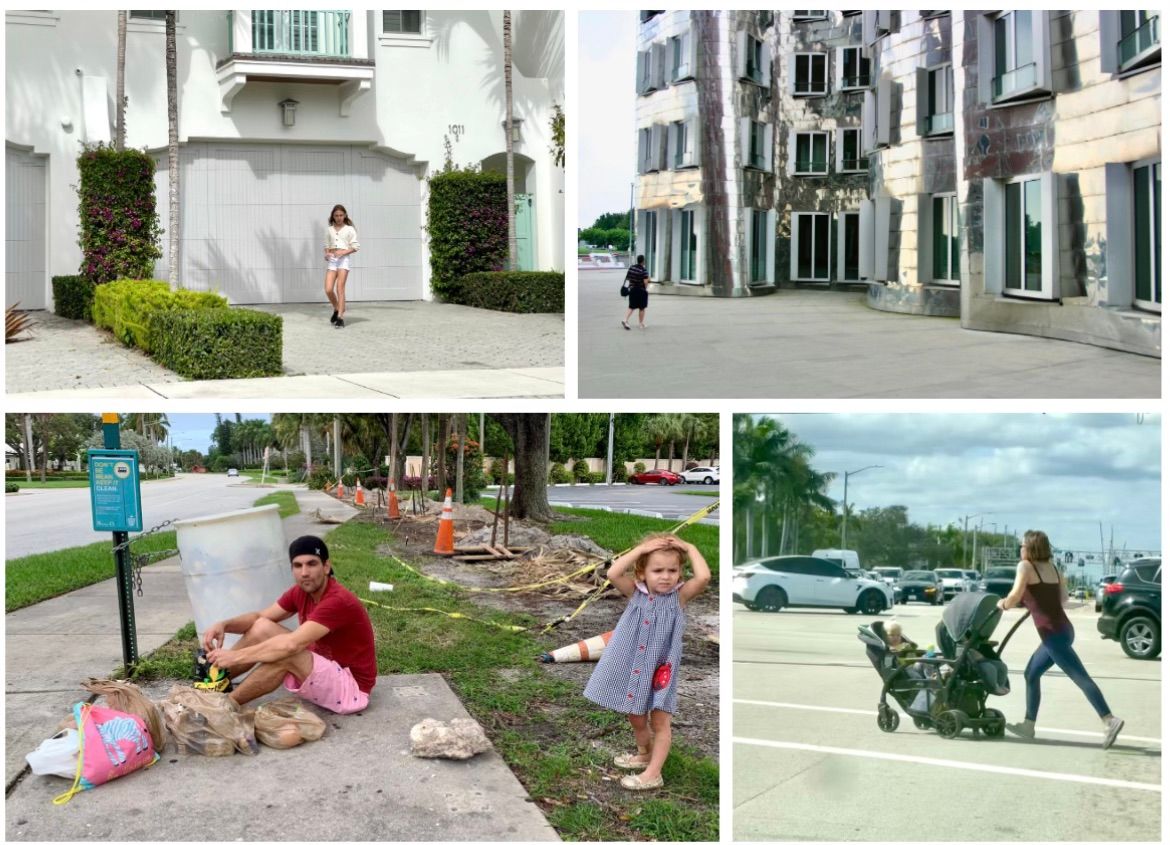
Main Takeaways -Basic Community Institutions
Many of these social hubs had been fully integrated into their neighborhoods, becoming anchors and institutions of community life. Because the pandemic required that indoor activities be moved outdoors, sidewalks and intersections became essential platforms for social connections and commercial activity. In that period, they suddenly became the main venues where our lives played out and the most important public places for maintaining health, vibrancy, and happiness in each community. The activation of these public places quickly became a solution to the major public health issue posed by the pandemic and communities began to revive, creating unique destinations throughout neighborhoods.
The process of creating these dining sheds and social hubs also showed us how each place had to be integrated differently into its setting, becoming unique to each site. Thus, improvisation and reciprocal gestures became essential. It was Placemaking at its best.
Sidewalks are essential public spaces and sidewalk life is unique to each community
Sidewalks should be set up in such a way so as to offer a multitude of places where economic and social activity can thrive. However, there is currently no agency with the responsibility of managing and supporting sidewalk activity and social life. The NYC Department of Transportation was the organization that made the dining sheds possible, and therefore the social activity they fostered. But government alone is not going to deliver — this is something that we have to continue to enable from the ground up. These sheds created community-owned hubs that are foundational to local social and economic life. They show us a whole new way of supporting our neighborhoods, and they need to be made possible year-round.
Local economies and community members alike have thrived in this dynamic new environment born during the pandemic, and therefore efforts need to be taken to preserve it and build off of what we have learned.
The Future of Dining Sheds in NYC
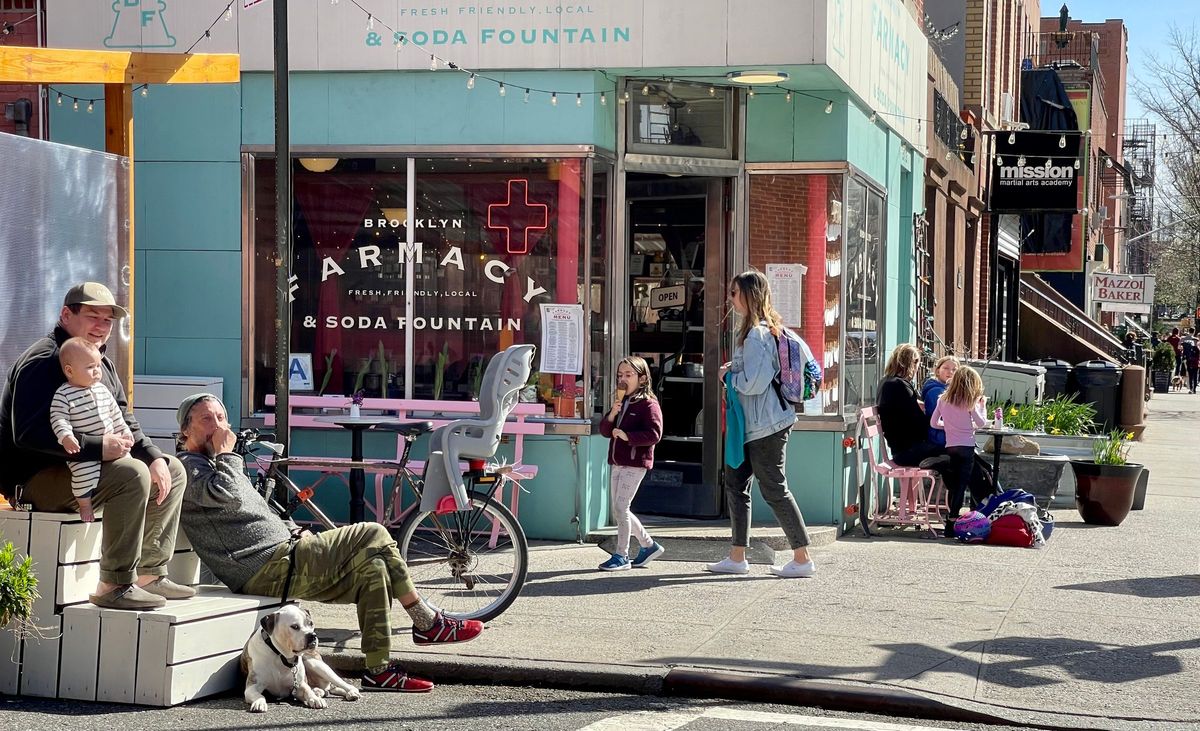
When the dining sheds were still in their early stages, we wrote a post on them titled "Emerging Social Hubs in Brooklyn." Now, it's a few years after they emerged and these places have evolved into an integral and beloved part of our communities. However, in a turn of sad irony, they are now of being taken down. New regulations by the City government are threatening to get rid of dining sheds for nearly half the year and to limit their creativity and uniqueness with a long list of rules for when they are allowed to stay up.
We cannot let this continue
These places have become institutions in our communities that have fundamentally shaped our neighborhoods. They have made them better, more interesting, more economically resilient and more enjoyable. They have become woven into the fabric of our communities and have given new life to our streets. What's more, they are the building blocks of the "Main Streets" of the future, where people and social life take center stage instead of cars and traffic. Because of this, we need to fight to protect their right to exist before they are lost and all the wonderful benefits they have brought to us are lost with them.
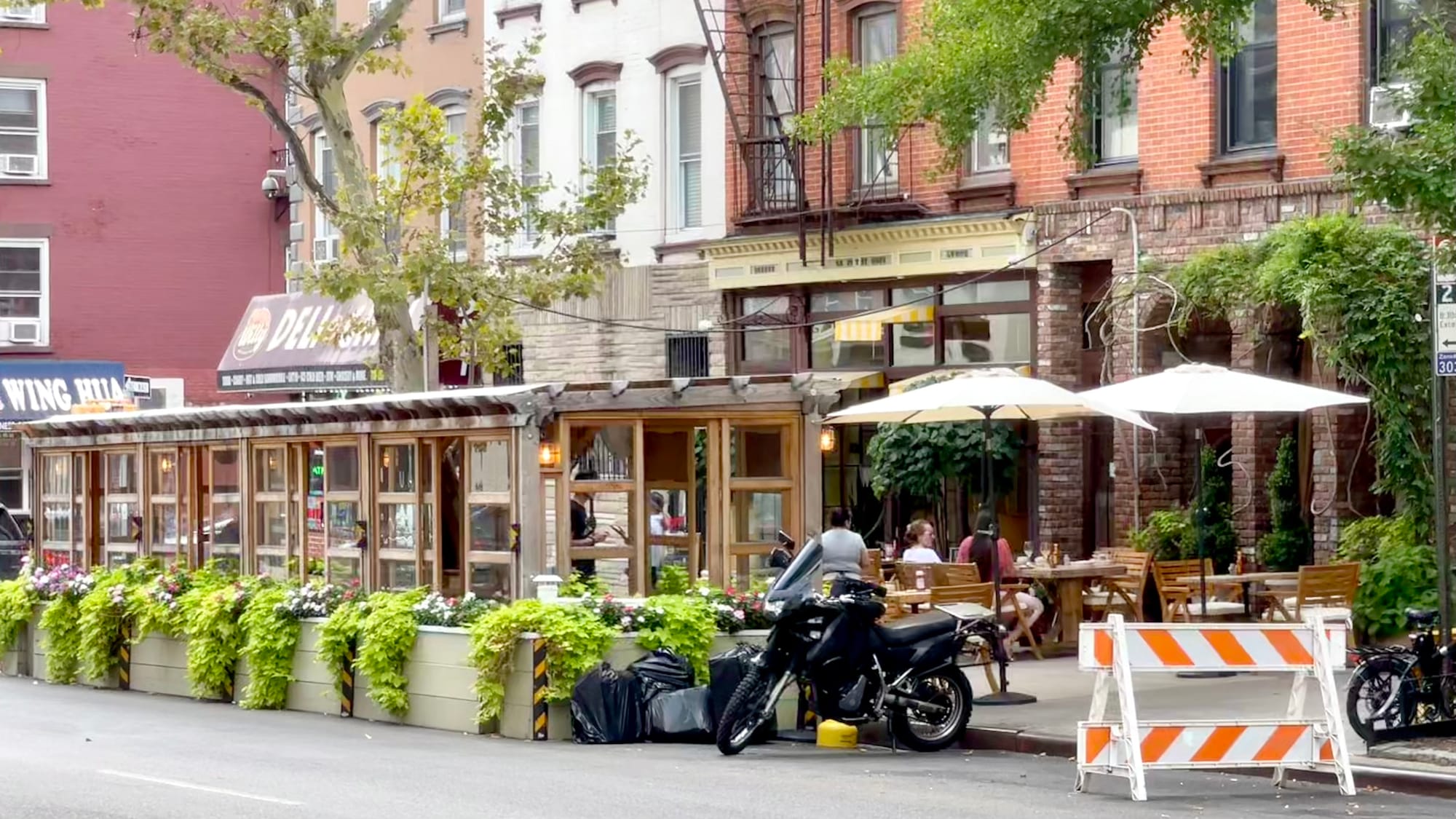
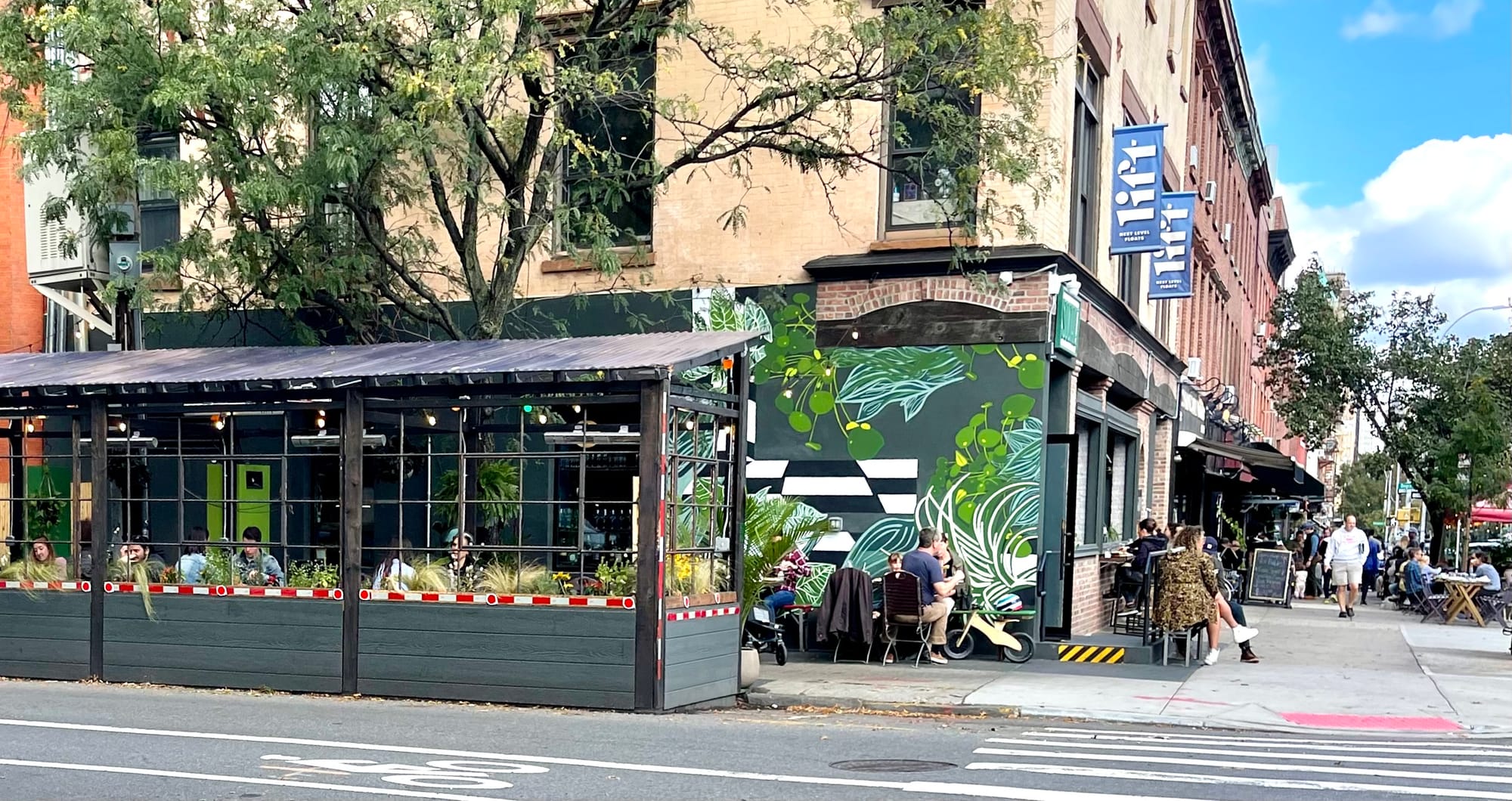
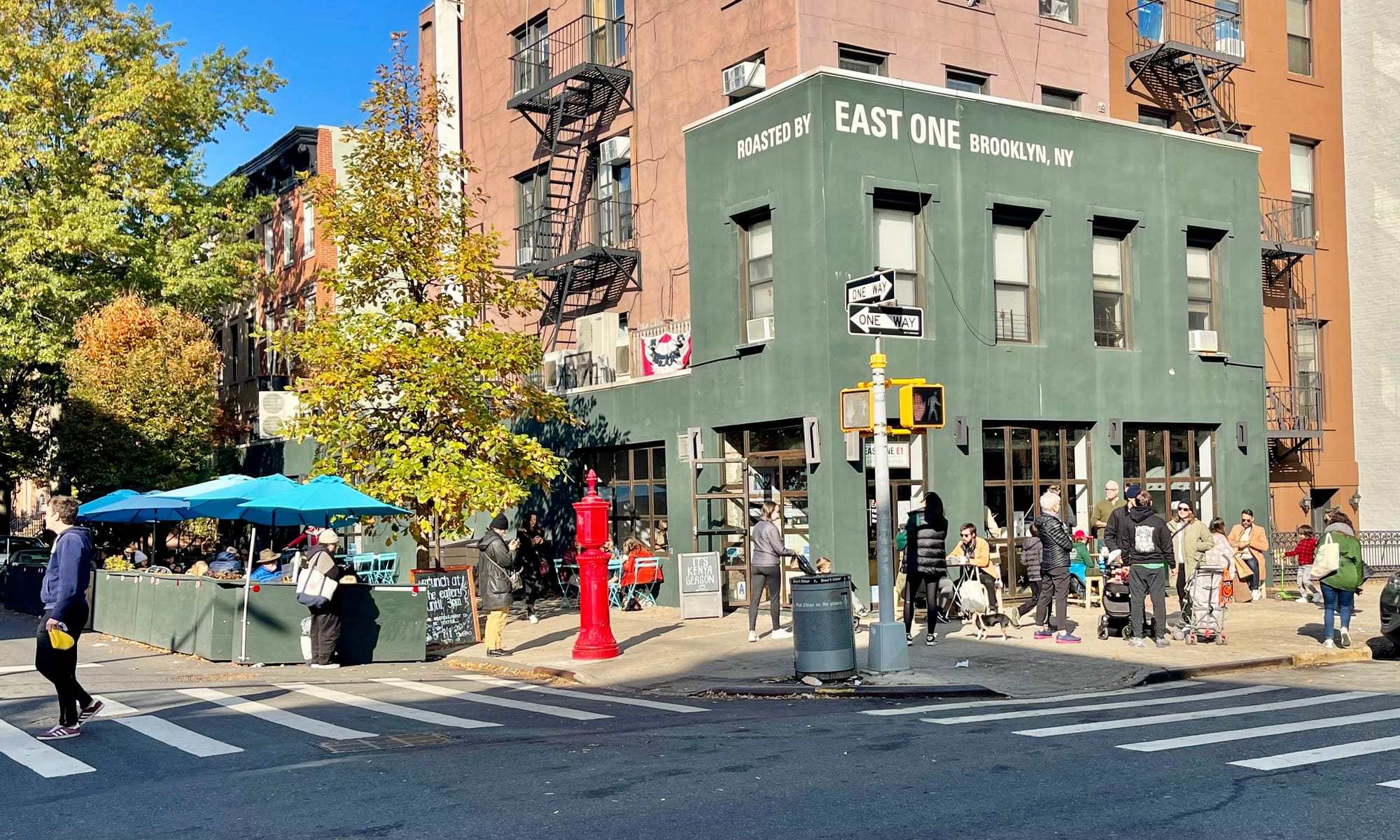
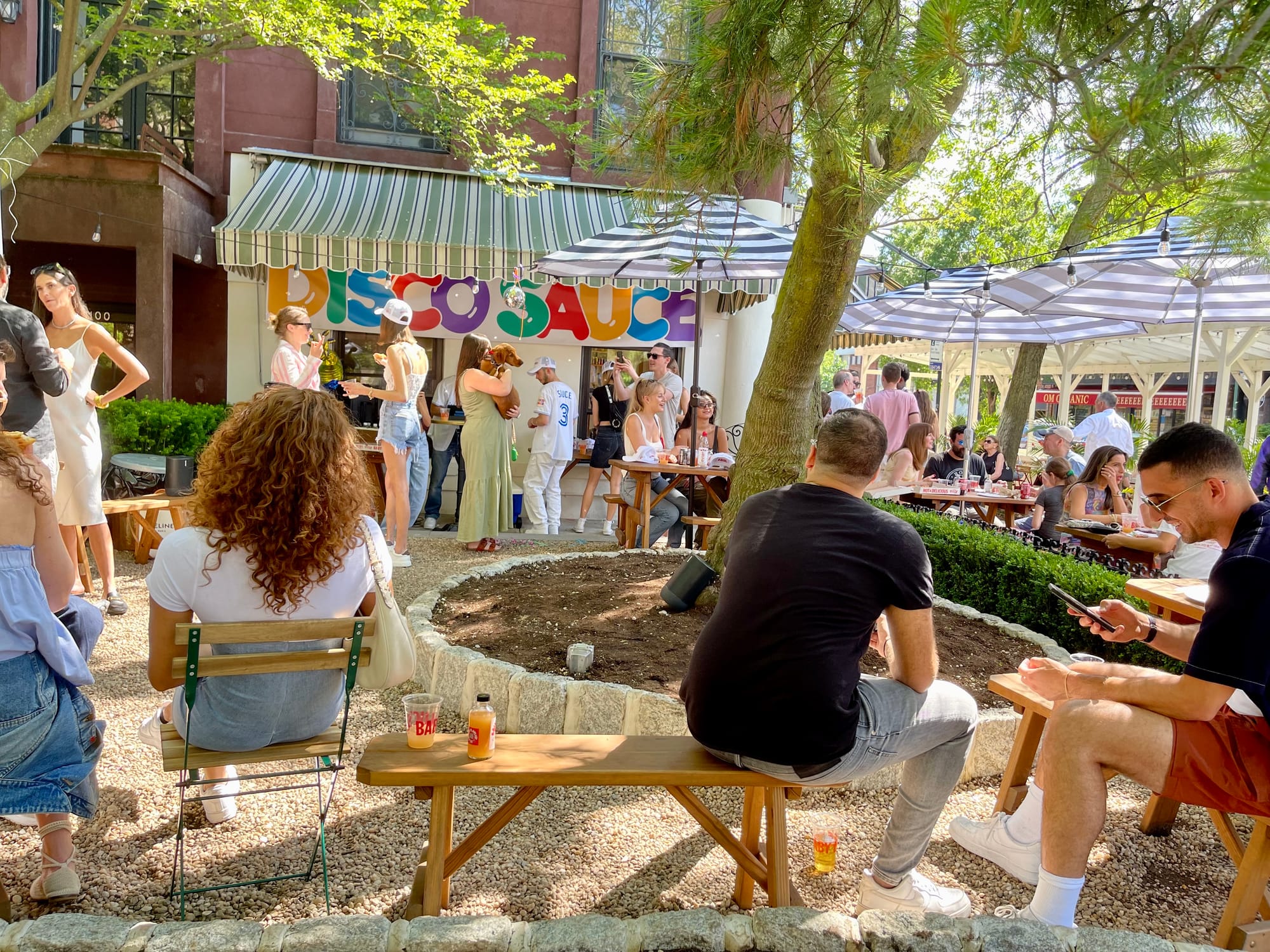
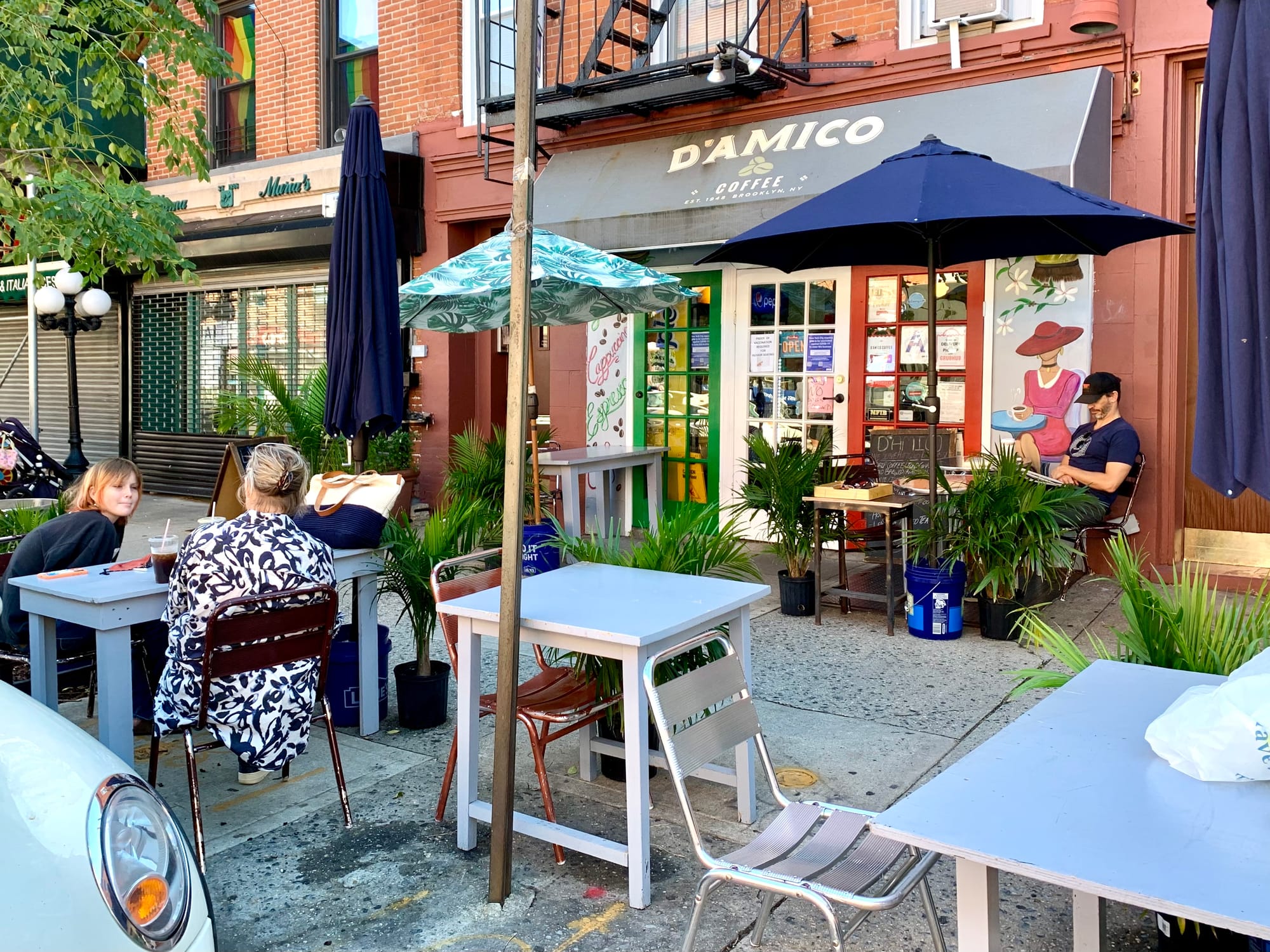
Dining sheds have brought an energy back to New York's streets like nothing else has done in the last few decades which have been defined by cars and traffic. The plan to make them seasonal, getting rid of them in November only to bring them back in April, will deprive our streets and sidewalks of their vibrant activity for a significant portion of the year. During that period, communities will be denied the wonderful atmosphere and sense of place that each hub has created – the magical spots that community members have learned to love. A drop in temperatures doesn't change our need to connect with each other or enjoy our lives... why then should our cities become less enjoyable, by design, for nearly half the year?
When the dining sheds were quickly erected during the pandemic, benefiting from a time of minimal bureaucracy in 2020, they were an economic lifeline to restaurants. In fact, they have saved an estimated 100,000 jobs. Since then, most restaurants that have fully embraced their sheds as social gathering places have continued to thrive economically — especially businesses that operate from tiny spaces and have limited inside seating. This new ill-advised City plan to limit dining sheds puts all these businesses at risk.
What's more, the rules of design and set up that the City plans to impose will limit their creativity, uniqueness, and ability to adapt to the feedback, needs, and specifications of their businesses and the patrons they serve. This will end up draining the soul of the neighborhoods where they make their home.
And even if businesses choose to abide by all the rules and retrofit or rebuild their sheds to be compliant, they will still need to take them down for half the year. Where will the average business be able to store something so large? The lack of storage space alone will force many businesses to opt out of having these sheds, stripping our streets of the best thing to happen to them in the last few decades. Why are we doing this??
What It Was Like Before the Pandemic
Most people probably don't remember what our streets were like before Covid allowed us to pull restaurant activities outdoors. Pre-Covid, the government-led DOT and planning department made it very difficult to get any kind of café or extension of uses onto the sidewalks in front of businesses. This led to our sidewalks and streets feeling bare, unattractive, boring, and often hostile because cars dominated these spaces rather than people. Even the rare seating along the street was not a pleasant place to gather because of the fumes and noise from the adjacent traffic.
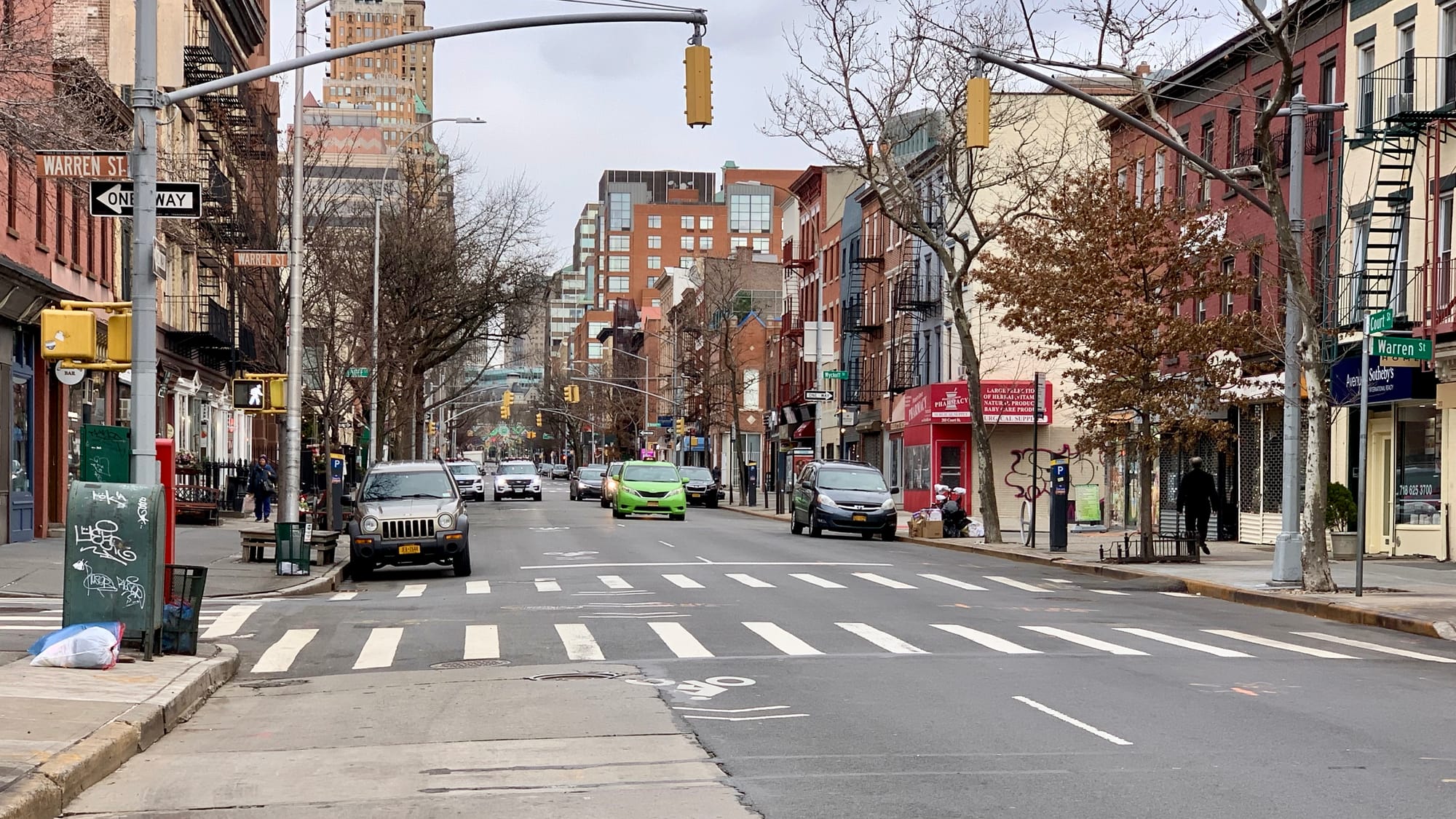
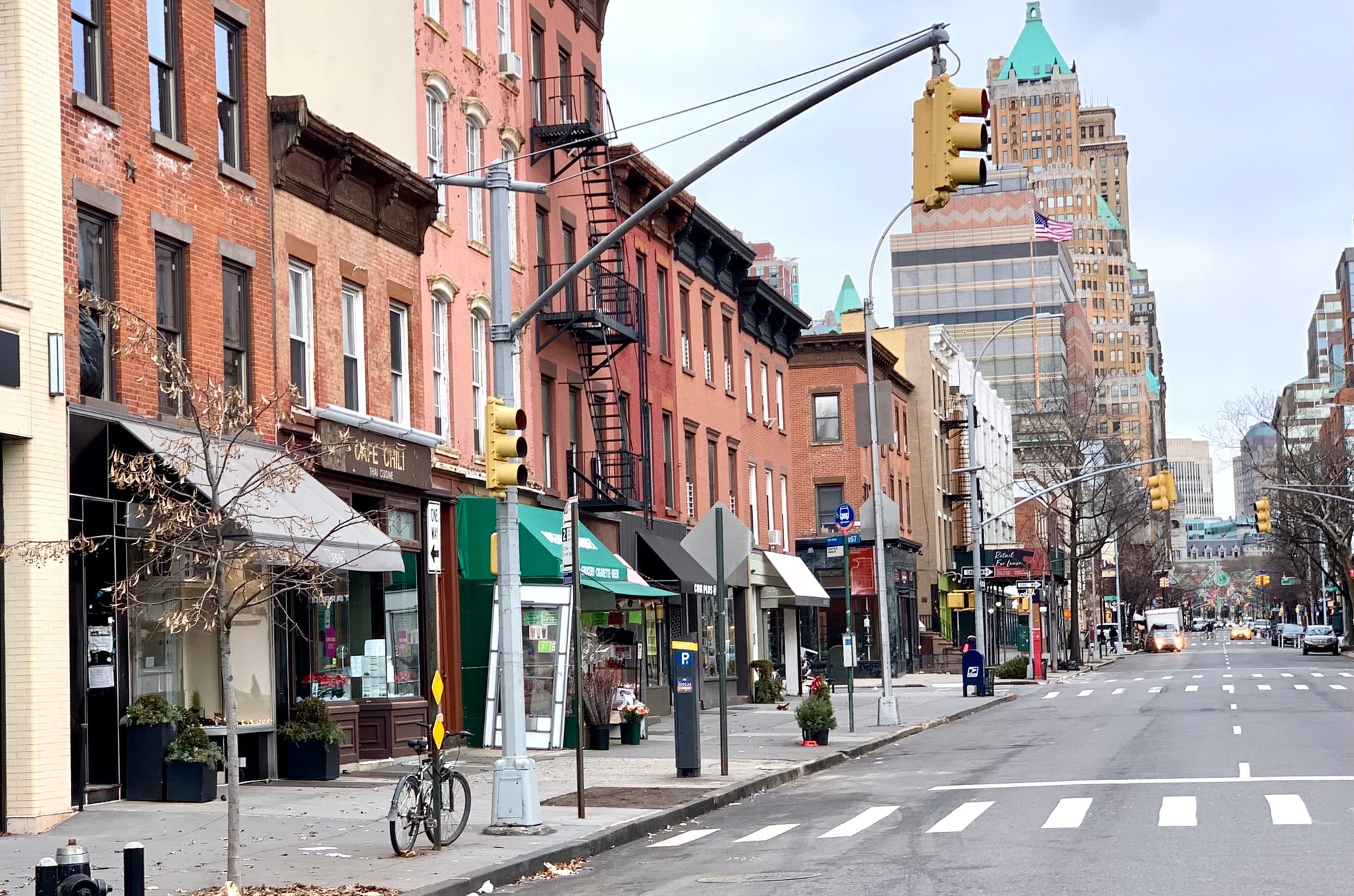
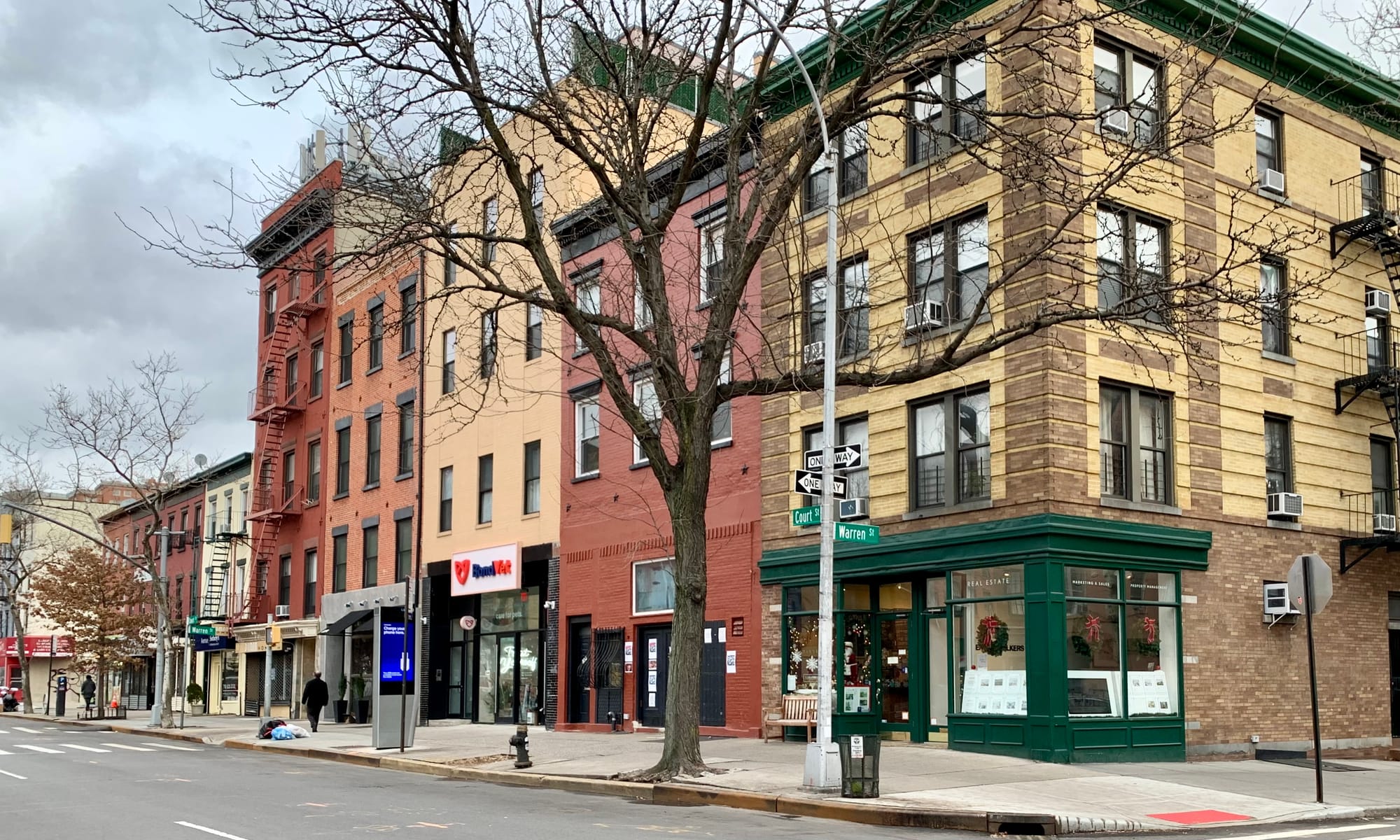
Nice streets with multiple interesting storefronts, but lacking any life
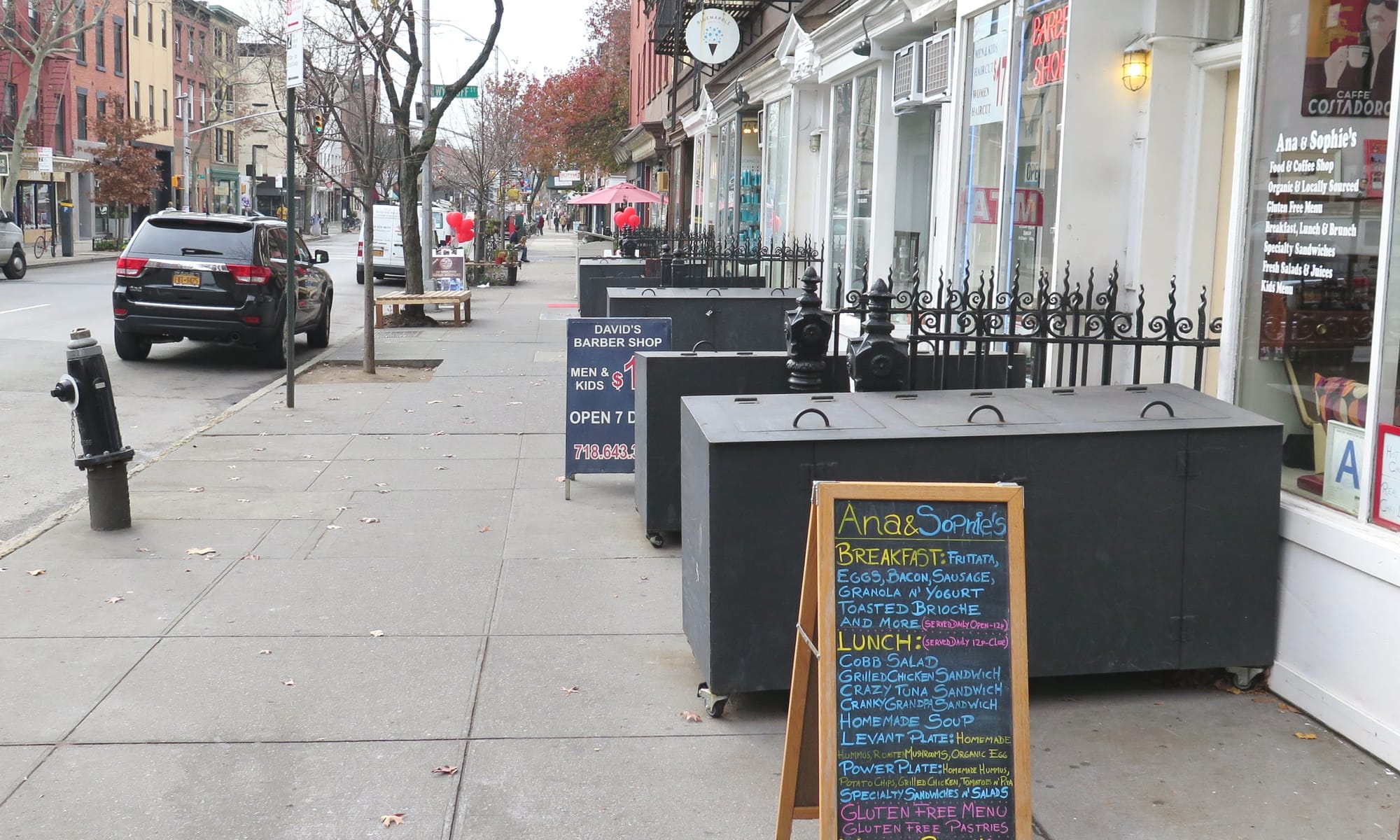
The main multistory building in Cobble Hill had fairly narrow sidewalks and four parking spaces for cars
The Pandemic Opened Up New Possibilities
A silver lining to the pandemic was the opportunity for massive street-level change that we thought could never happen. All of a sudden, because it was unsafe to eat inside and countless businesses were in danger of closing, cafés and restaurants were allowed to use their sidewalks and the street along them to create structures where their patrons could gather. It felt like breaking free from restrictive rules and regulations. A sense of fun, vibrancy and creativity filled our streets.
These changes, as well as additions of amenities like benches, have shown us the value of a process we call "reciprocal gestures," where adjacent businesses see the powerful impact that an intervention has on foot traffic and business visitation, so they feel inspired to add something similar to the outdoor presence of their own business.
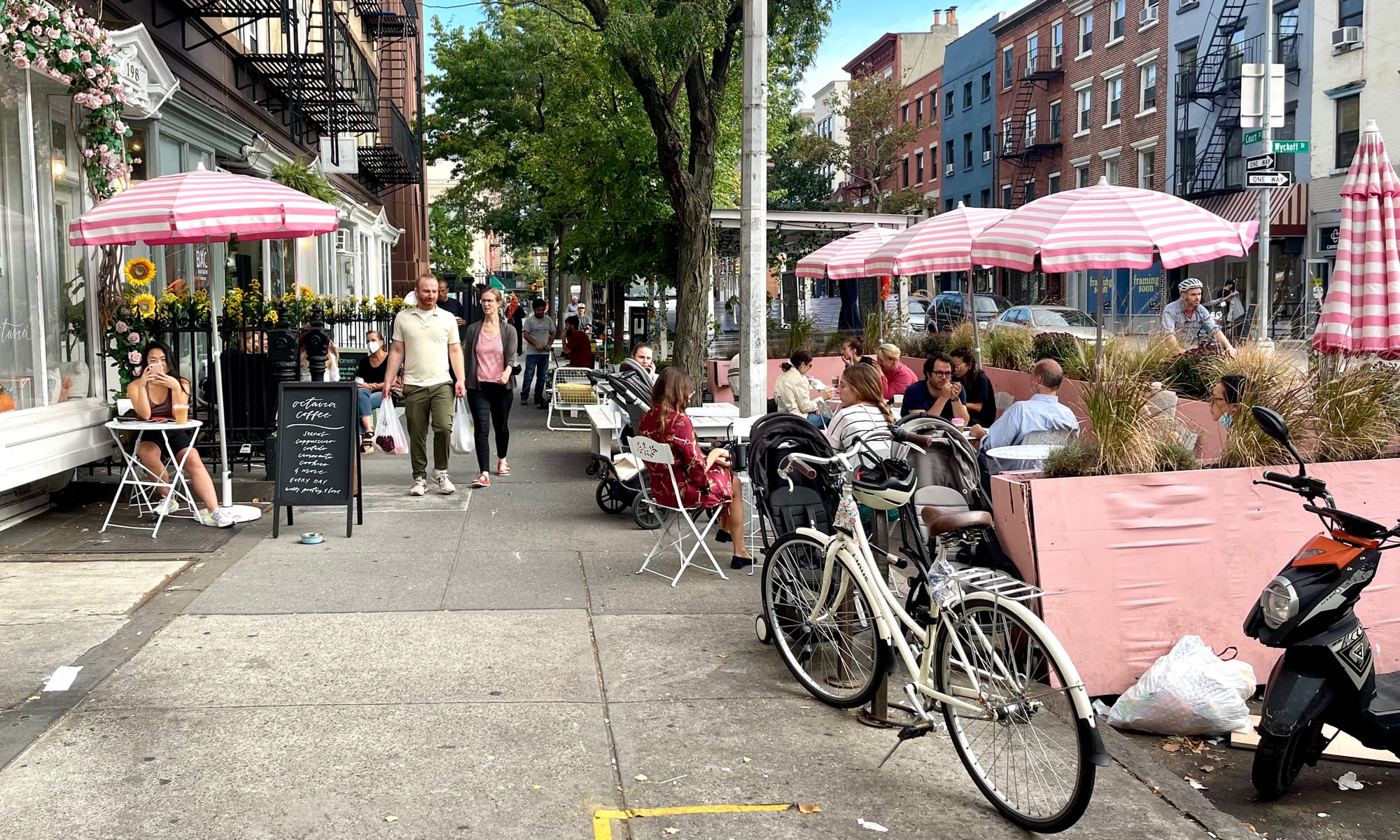
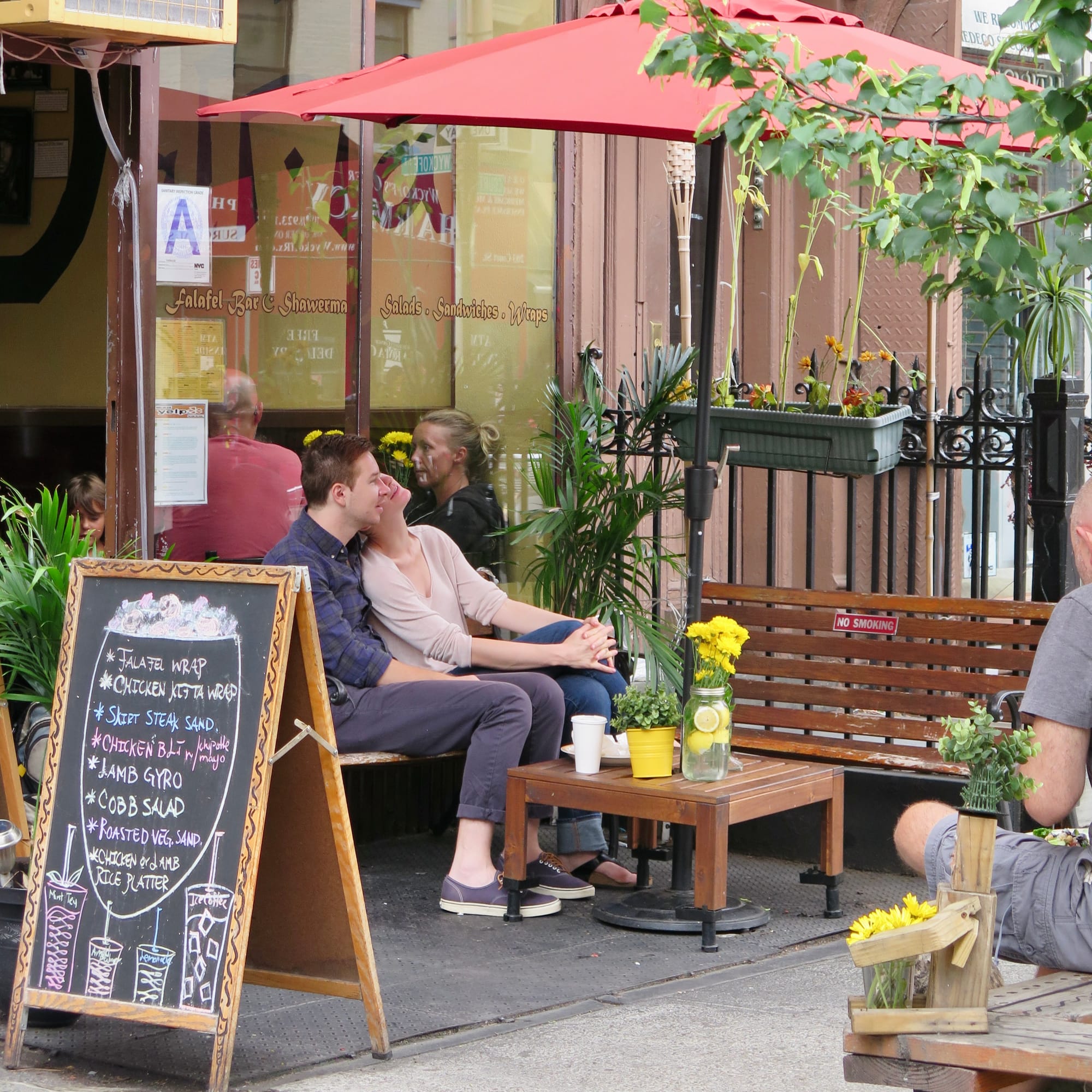
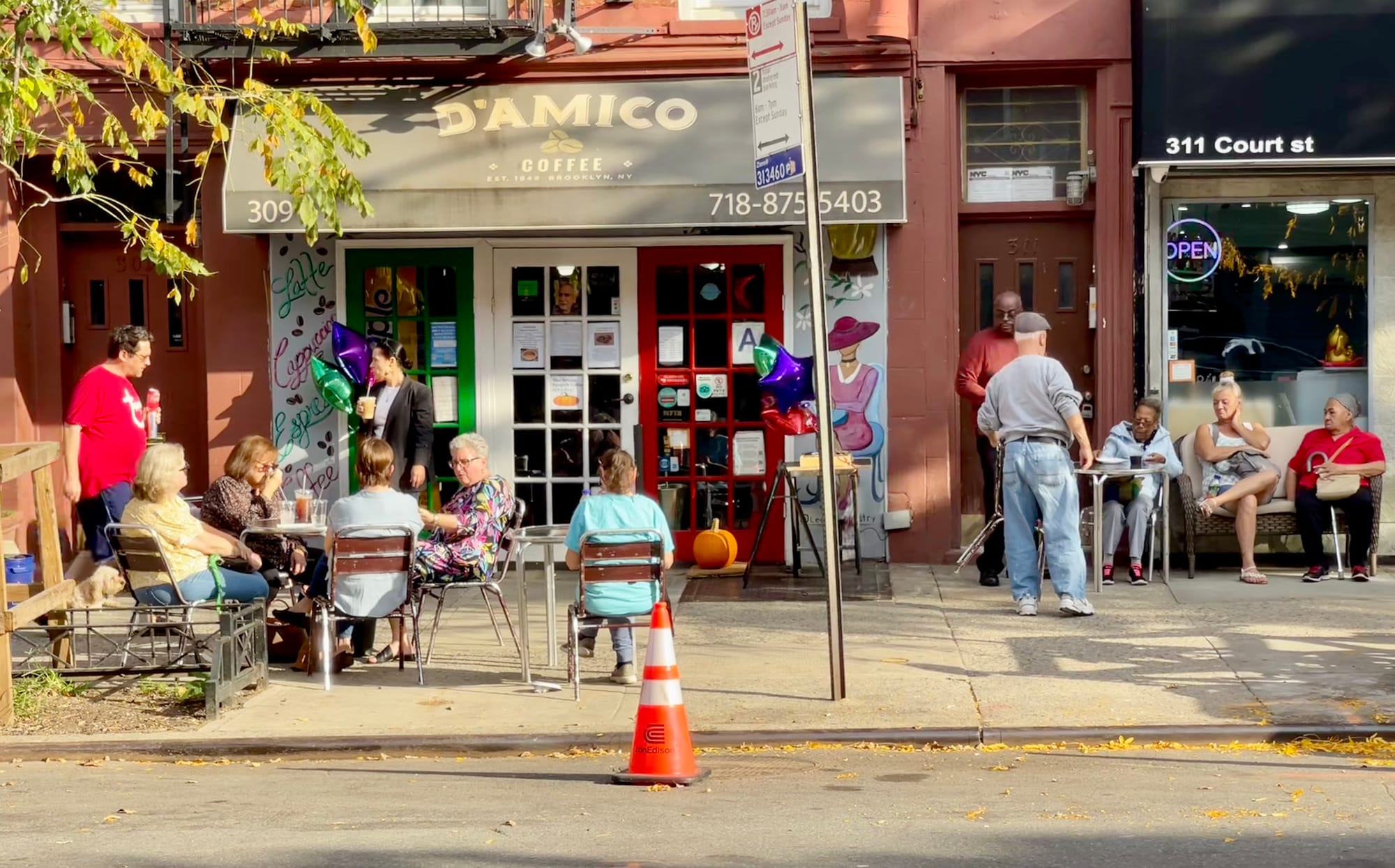
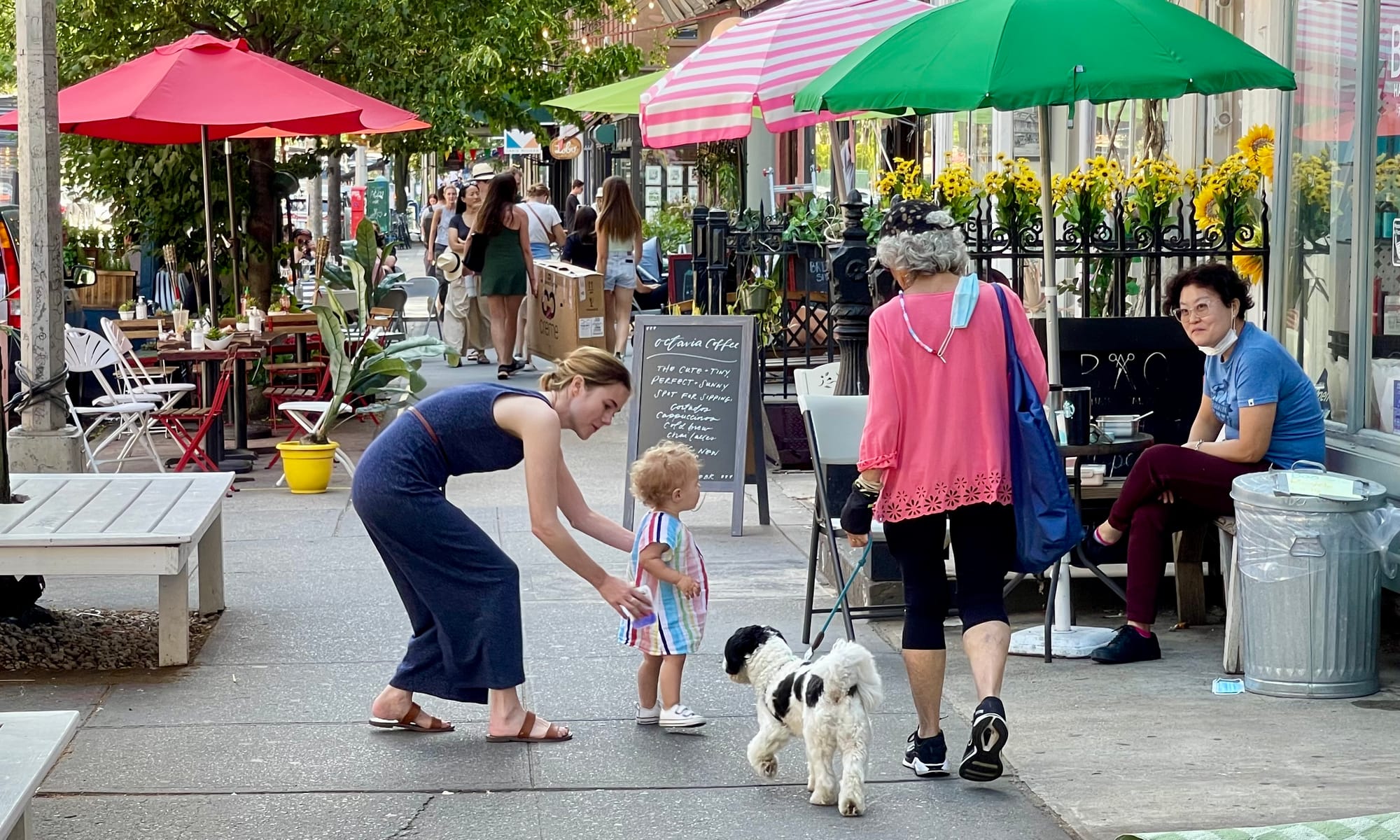
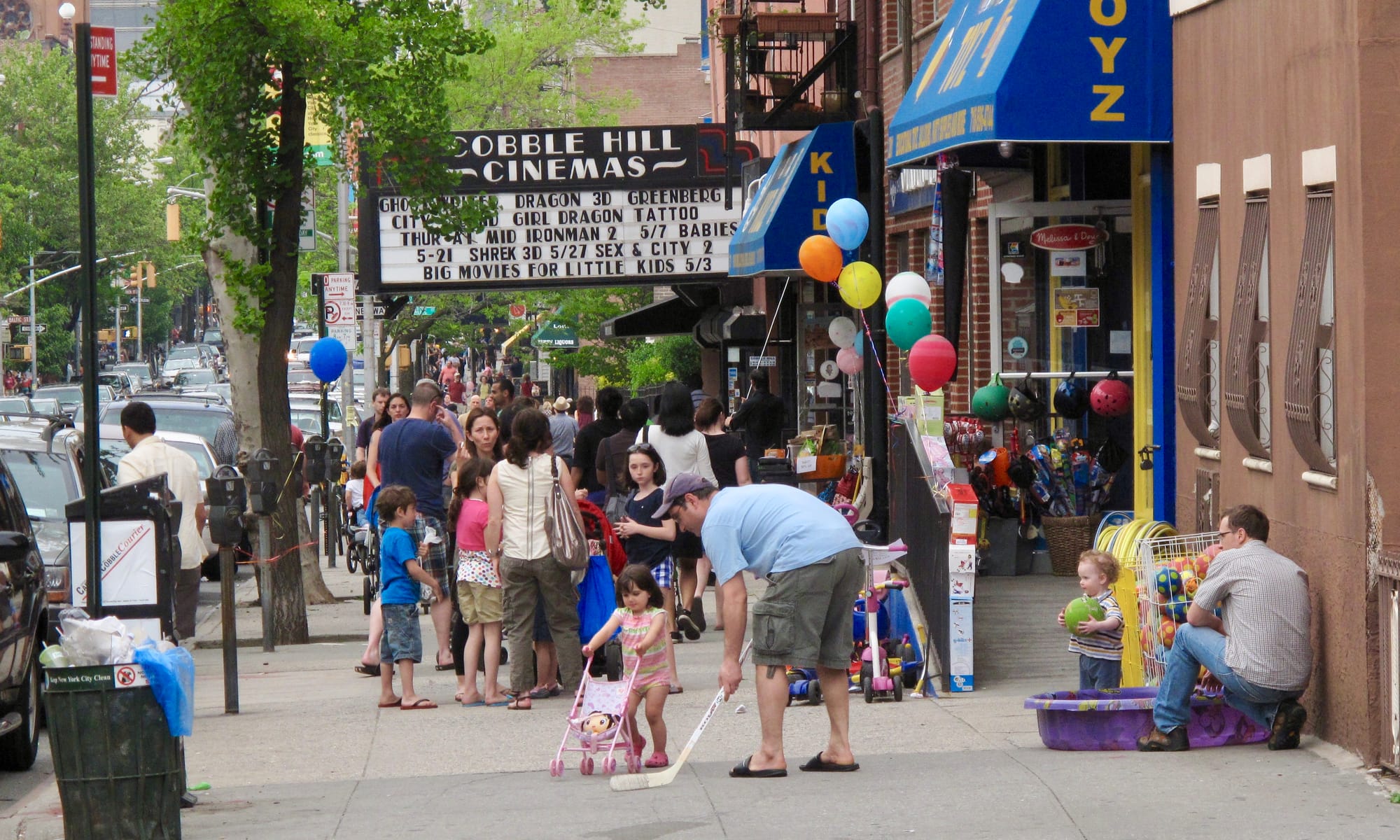
As part of the resurgence of sidewalk activity brought to us by Covid, dining sheds were allowed to be set up. These structures created charming eating areas protected from traffic while still benefitting from being in the open air. They had the effect of making the sidewalk feel wider and safer because they created a barrier between pedestrians and cars. Thus, the sidewalk experience improved immeasurably, becoming much more vibrant, comfortable, and interesting.
Heavy and onerous regulation and stiff design requirements had previously posed a major impediment to improving the sidewalks and streets in NYC. The era of improvisation and creativity around the dining sheds showed us how the future of the public realm can be different, better, and we are now we are seeing these amazing improvements get taken down for no good reason.
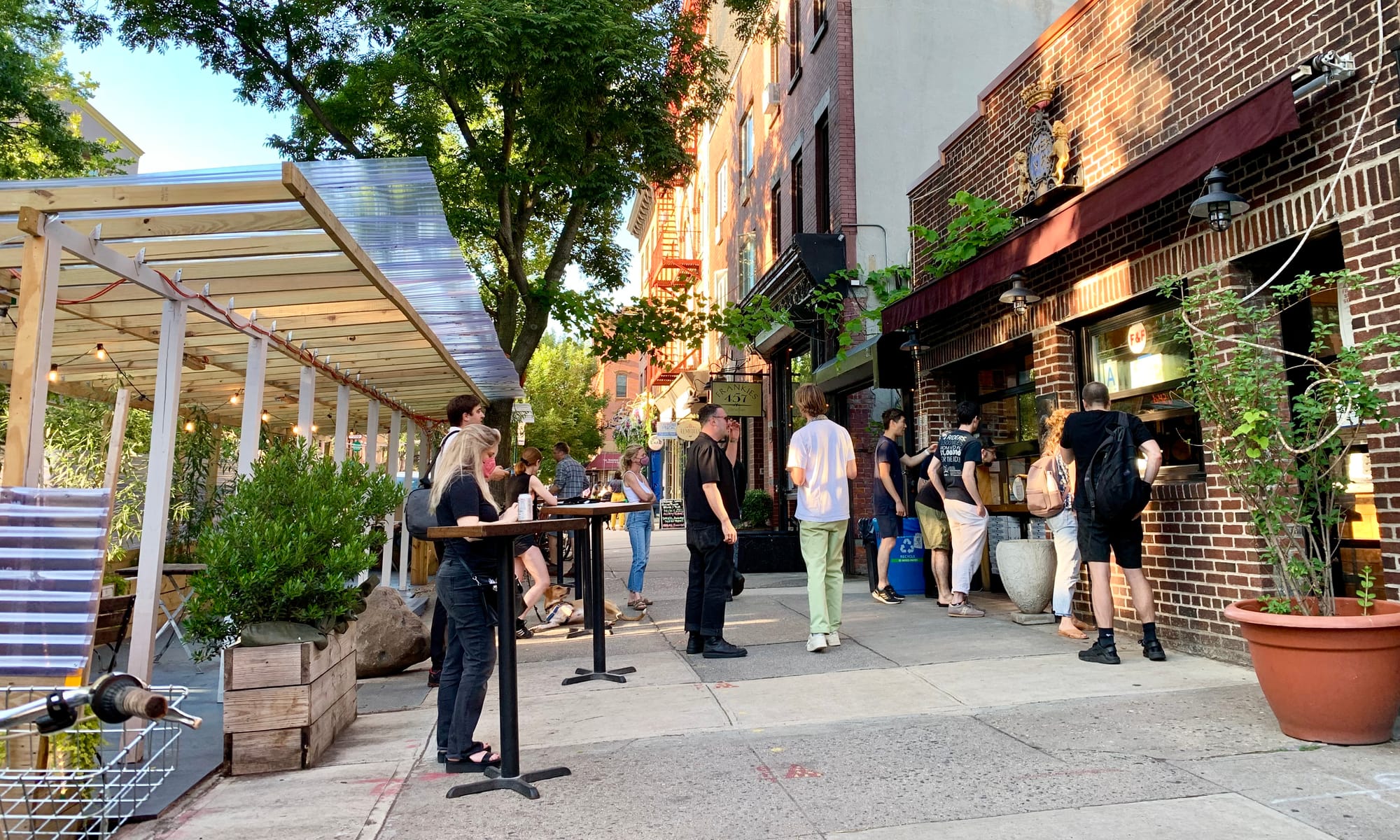
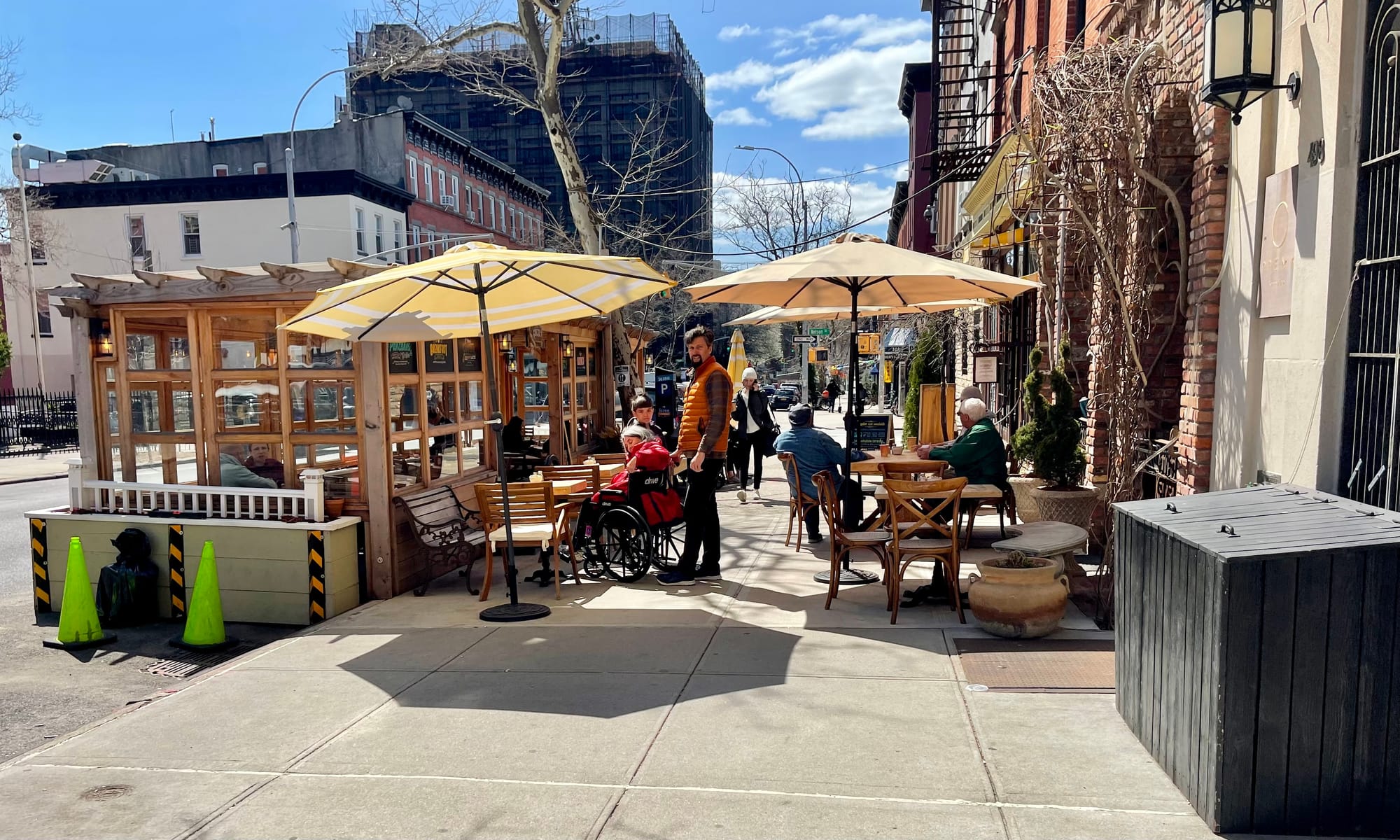
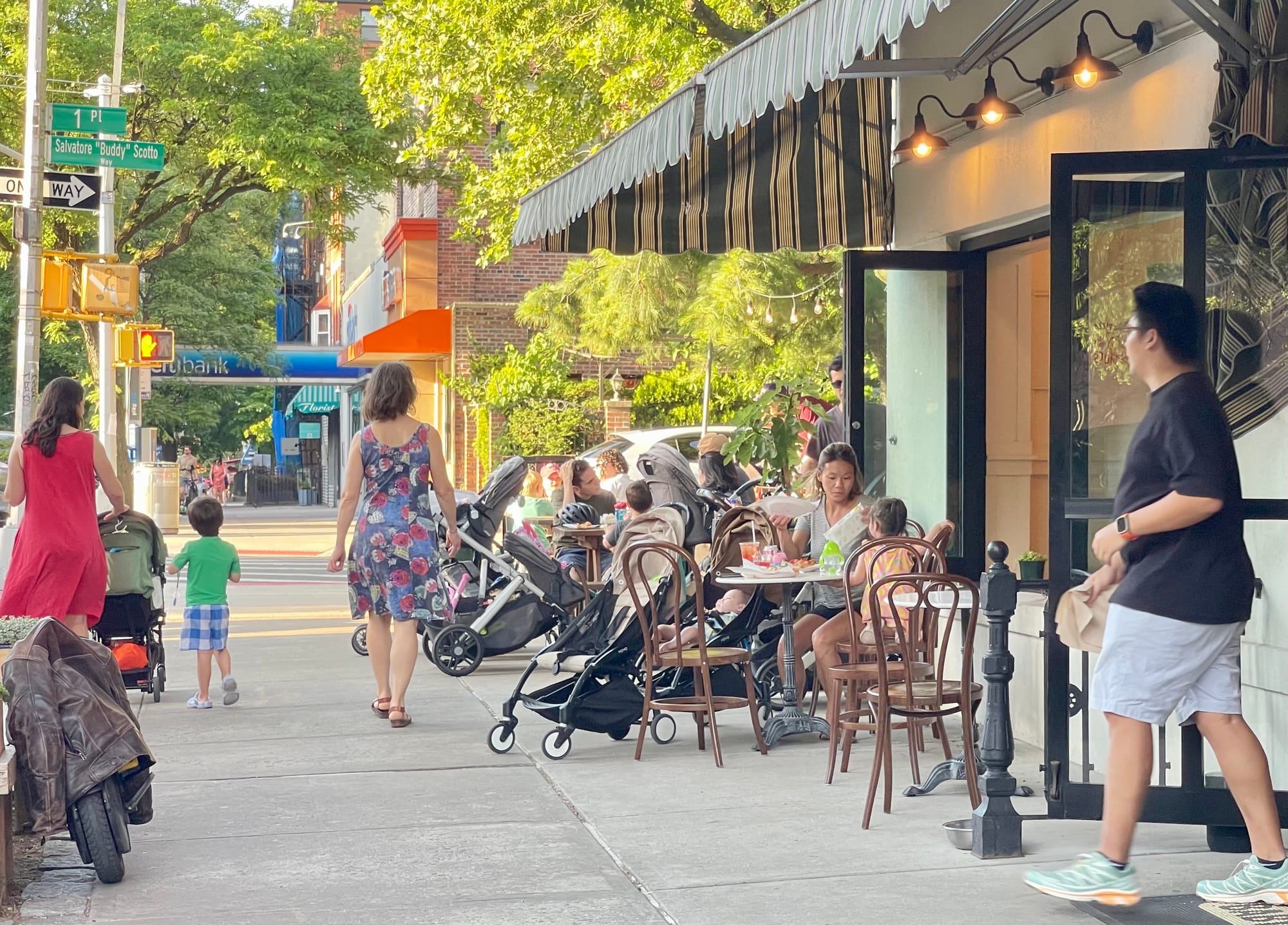
What We Have Gained and What We are Losing
The freedom to improvise and revitalize the sidewalks during and after Covid improved our public spaces and gave us numerous benefits. All of them are now being taken away with the new regulations. They include:
- A relaxed, safe urban environment where kids can explore and roam free and where baby carriages are ubiquitous because parents seek out such places where they feel comfortable strolling and stopping
- Year-round community hubs offering places for people to connect and gather
- A pattern of reciprocal gestures that empower and embolden local business owners by giving them the freedom to improvise
- Open windows for food offerings which create opportunities for families who don't want to or can't do a sit-down meal
- More opportunities for connection because people like to gather with friends on the street, not inside a restaurant in a more formal way
- Calmer traffic and safer streets because dining sheds creates visual friction and pedestrian activity, slowing down drivers who intuitively feel they must drive more carefully
- Much more engaging and interesting sidewalks since double loading creates a "pedestrian aisle" down the middle of the sidewalk where there are things to see and do on both sides
- More contact with the proprietor who is often out on the street with patrons, creating a relationship between community members and local business owners
- A feeling of community ownership and investment in local business activity because it takes place on the shared territory of the sidewalk, not inside of a private building
- People behaving in a more natural, comfortable, and relaxed way and being more open to connection. The sidewalk becomes shared space that welcomes everyone of all ages and types
- Neighborhoods that have transformed from "bedroom communities" into 24/7 destinations where people enjoy spending their time because there is a greater variety of things to do at all hours and all seasons
Dramatic Change to Community Life - Court and Henry Streets
In our neighborhoods of Cobble Hill and Carroll Gardens, we had an explosion of outdoor cafés/eateries and something amazing happened – many of them became much more than just a place to dine. They became hubs of community life, and beloved destinations that are frequented by all.
There are many exceptional dining shed examples that stand out in our neighborhood, as well as a series of other sheds throughout the area that have spectacular design. These places are still changing and improving as their initial round of changes showed a great positive impact and they are now evolving to be better and better.
Businesses are expanding this street revitalization with new seating options, turning the inside out by opening up their buildings and creating beloved destinations on sidewalks throughout neighborhoods. The entire community is now an exciting work in progress. But with new DOT rules, we could be at the end of this golden age. As these new rules take effect, we will see businesses lose their right to improvise, be creative and the entire community will suffer for it.
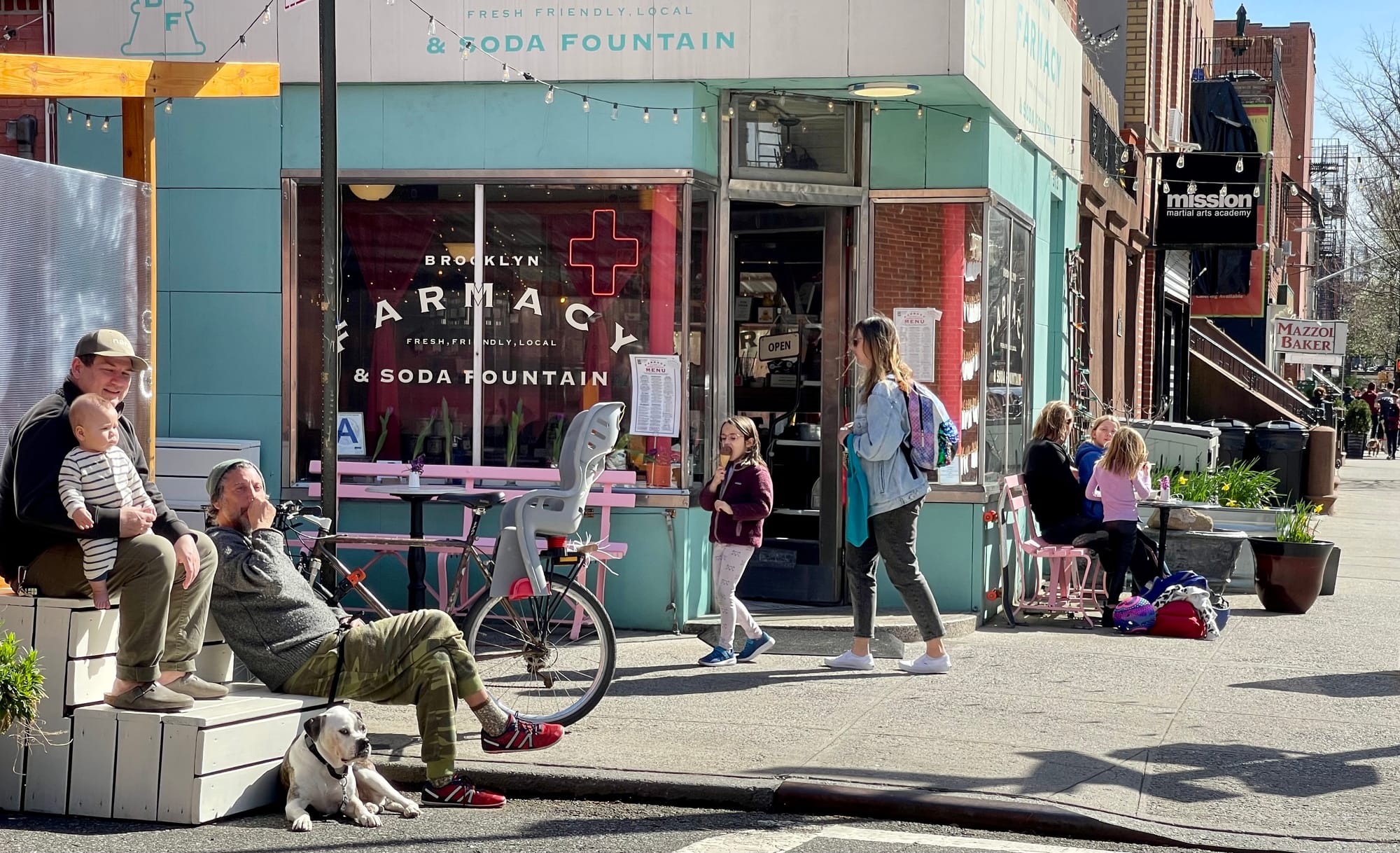

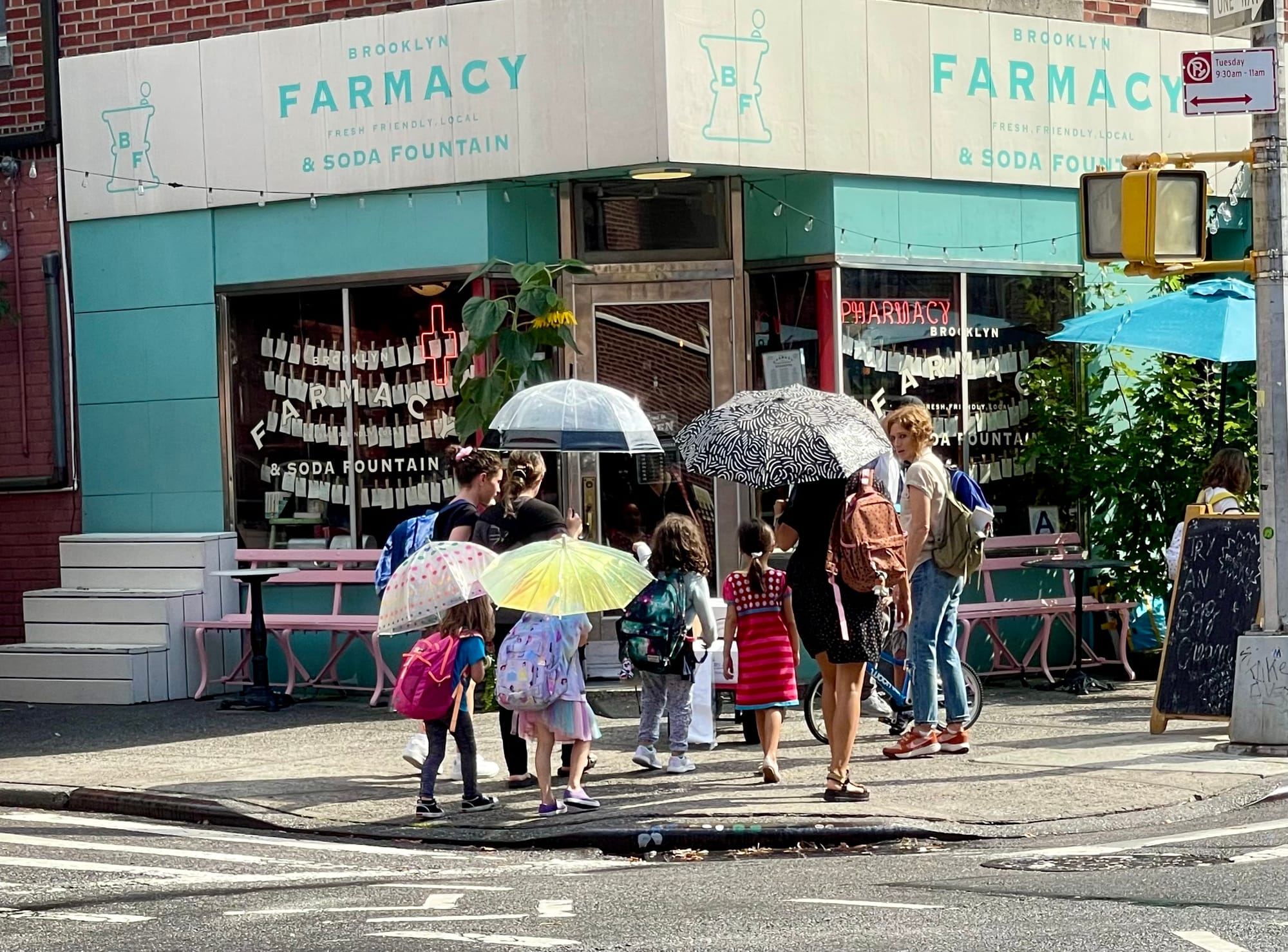
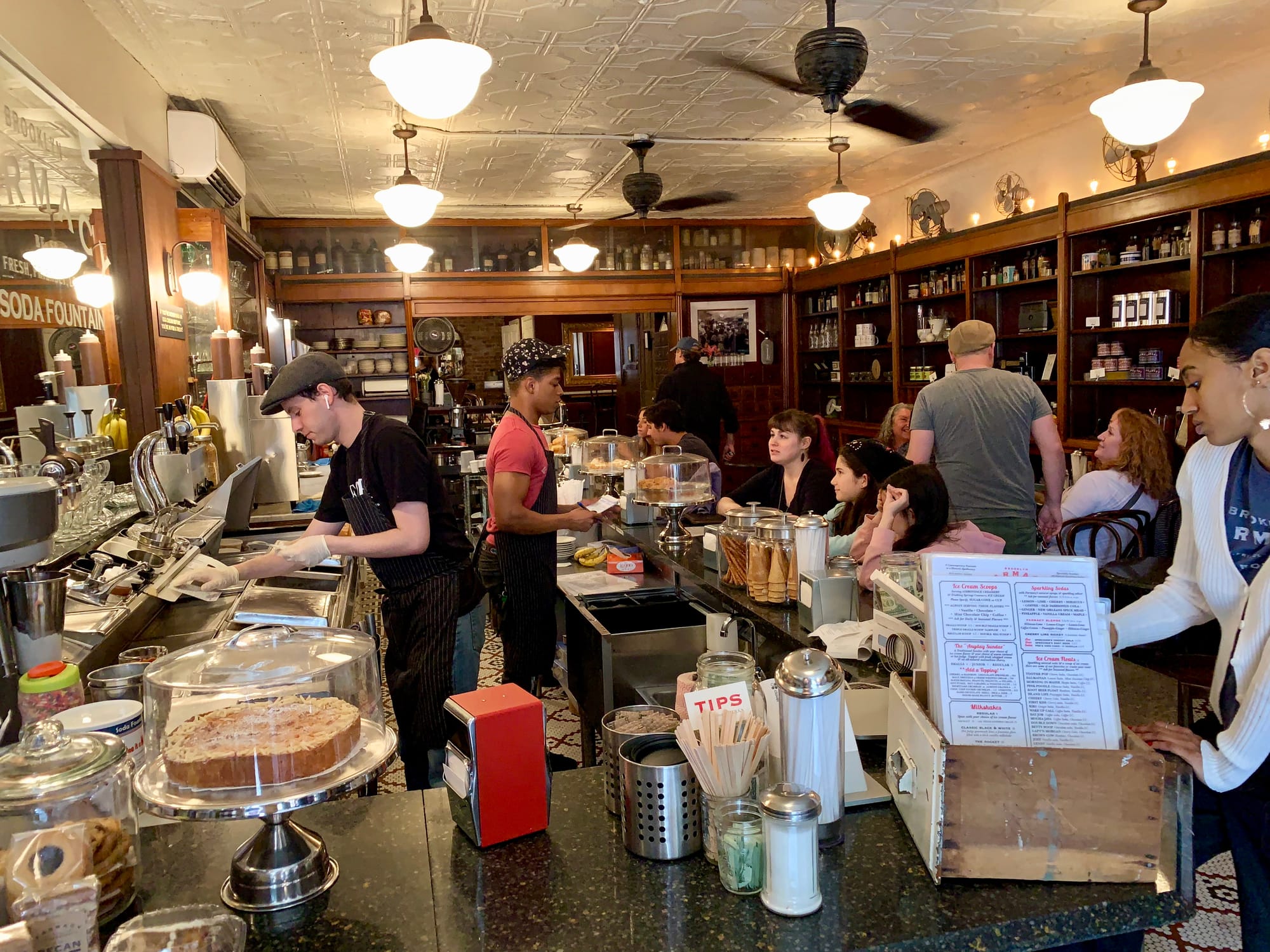
Brooklyn is a very different, much more vibrant, place now than it was before Covid and it is one of many models throughout the city that is worth exploring. It has helped us understand the implications of a new street paradigm in which sidewalks can act as destinations via their social hubs (such as dining sheds). Using this strategy intentionally can help us expand on the connections that people are able to make like never before.
It All Started with a Bench - The Power of the Domino Effect
Darna, a small Yemeni restaurant run by a local family, led the way to this block's transformation by putting out benches to protect the trees along the block. The first bench was in front of their restaurant, a popular, mostly take out, falafel food place.
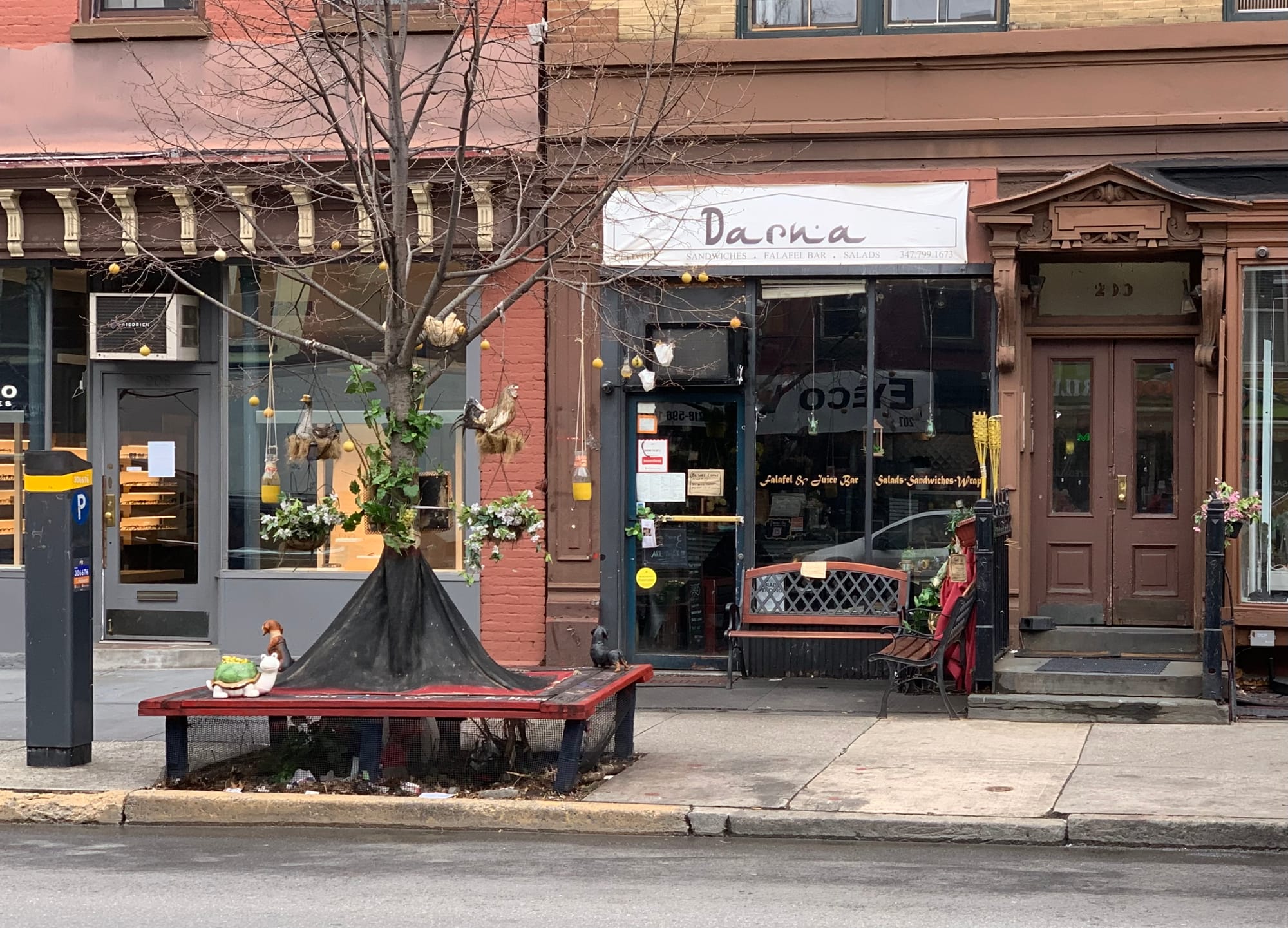

The bench and later umbrella seating at Darna started this process
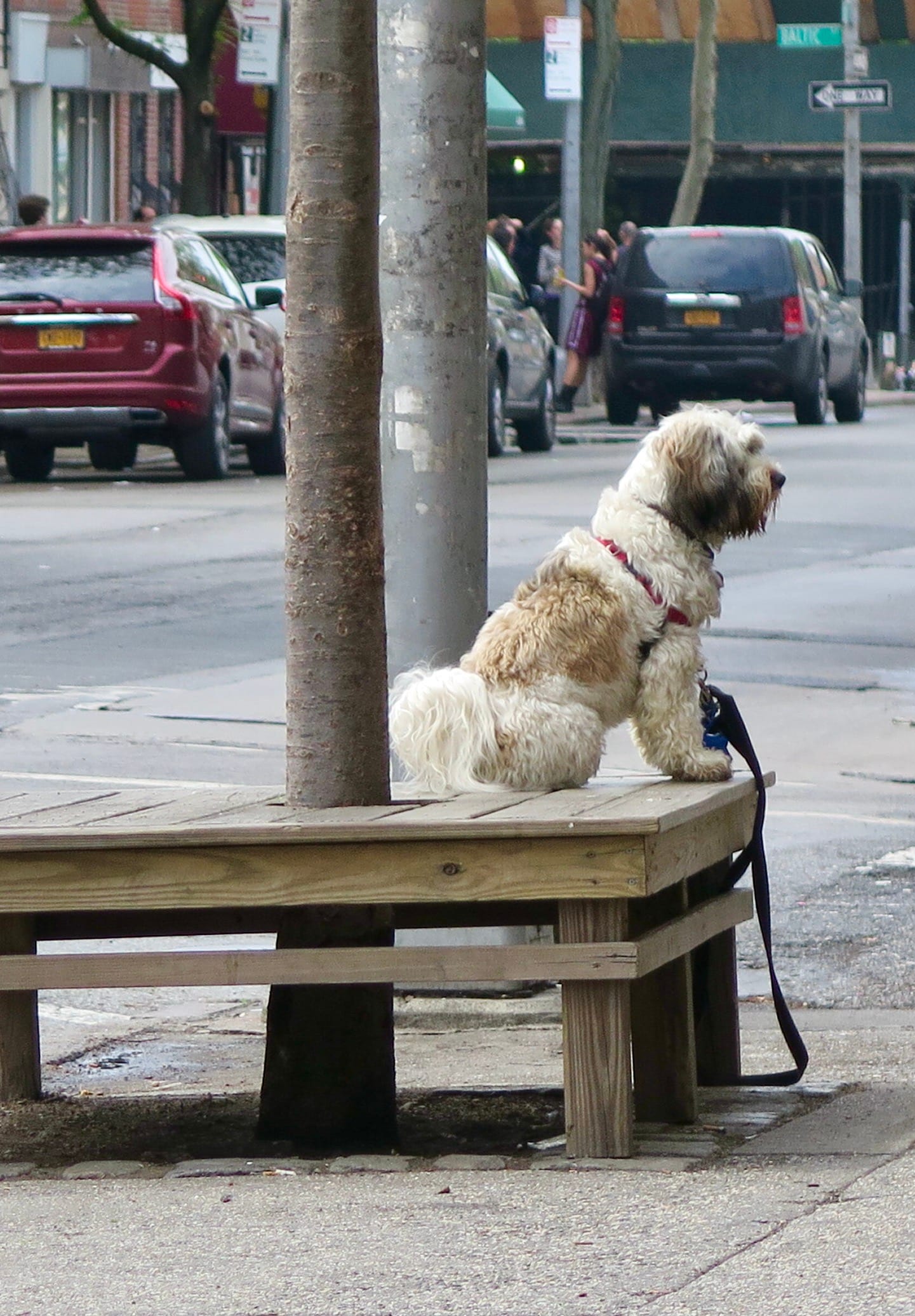
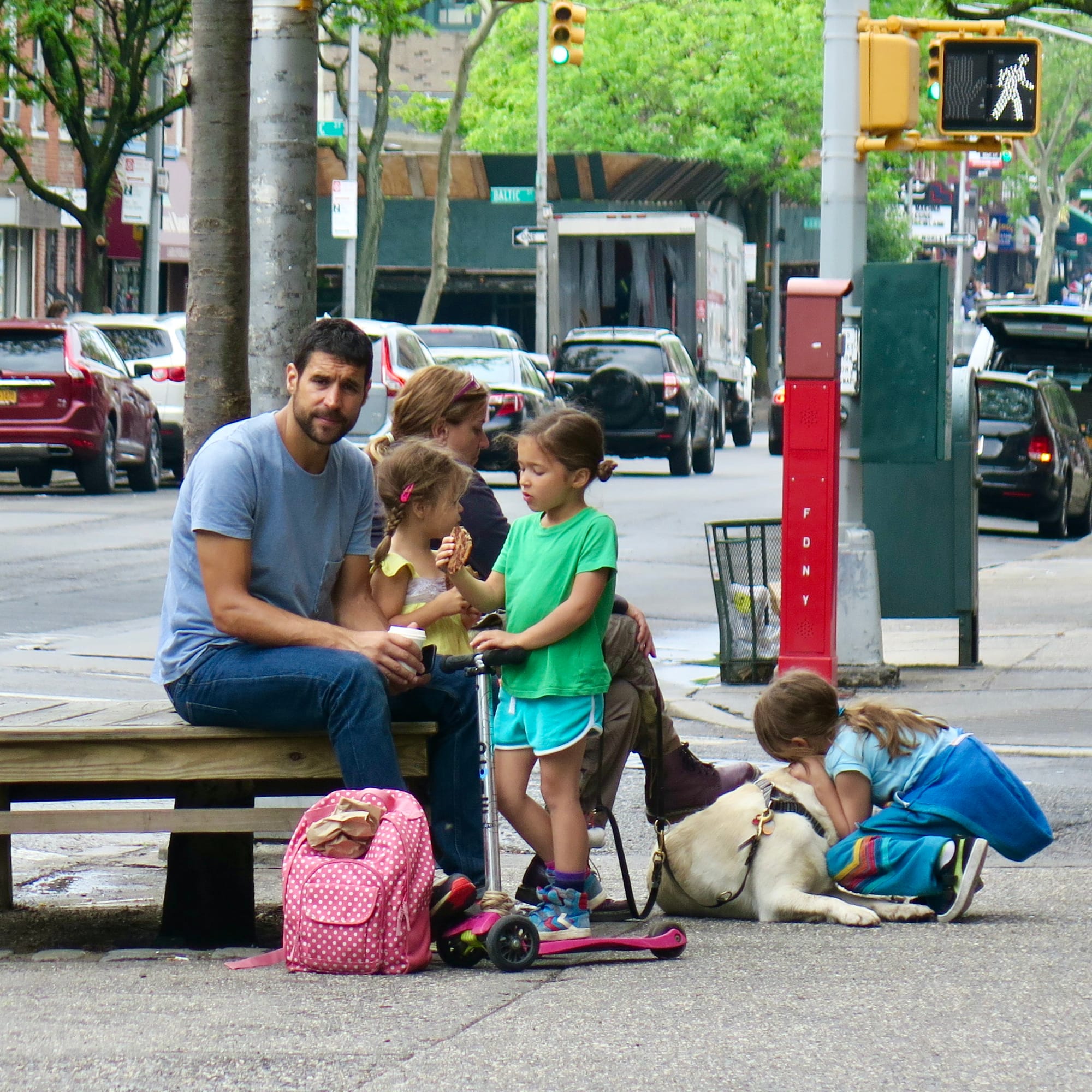
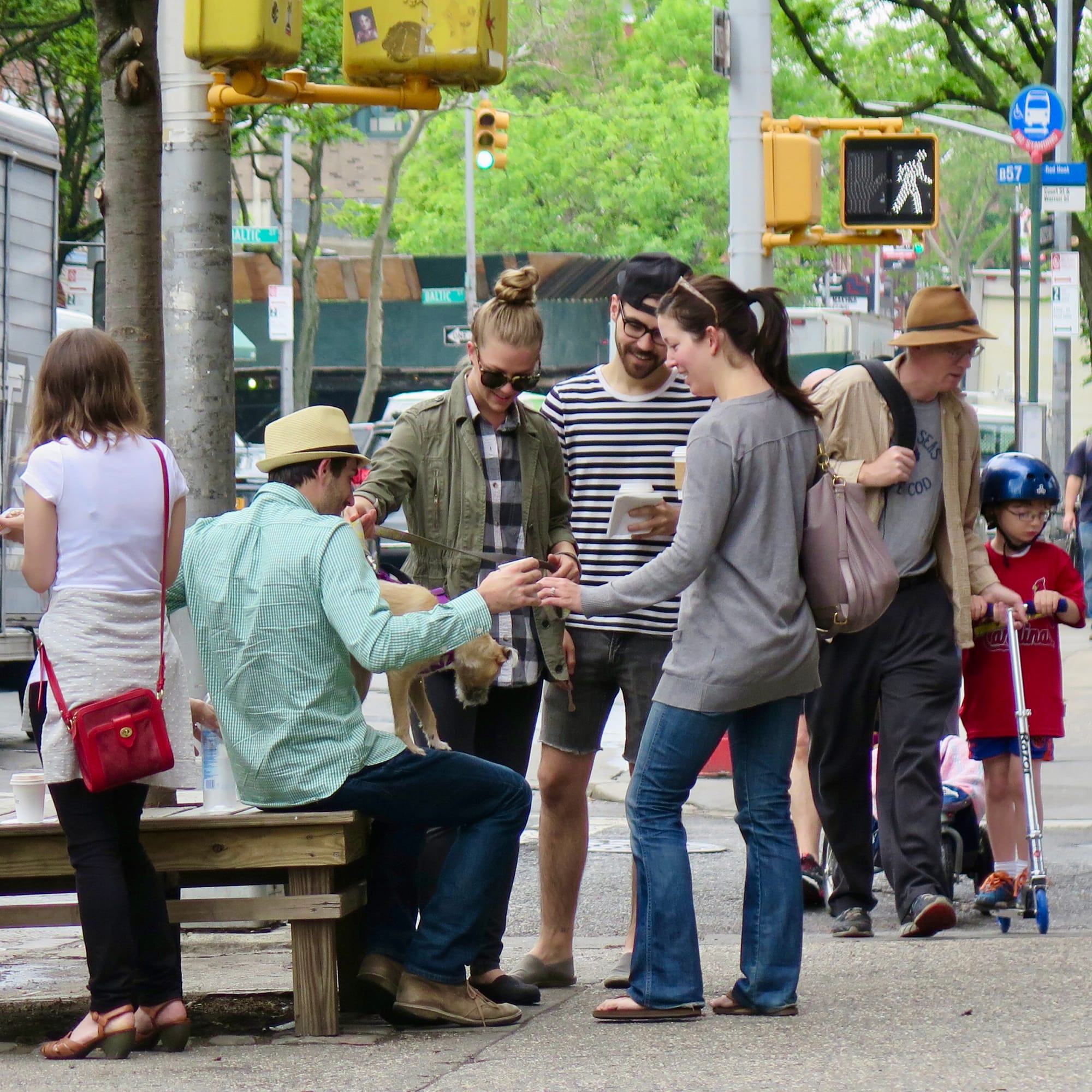
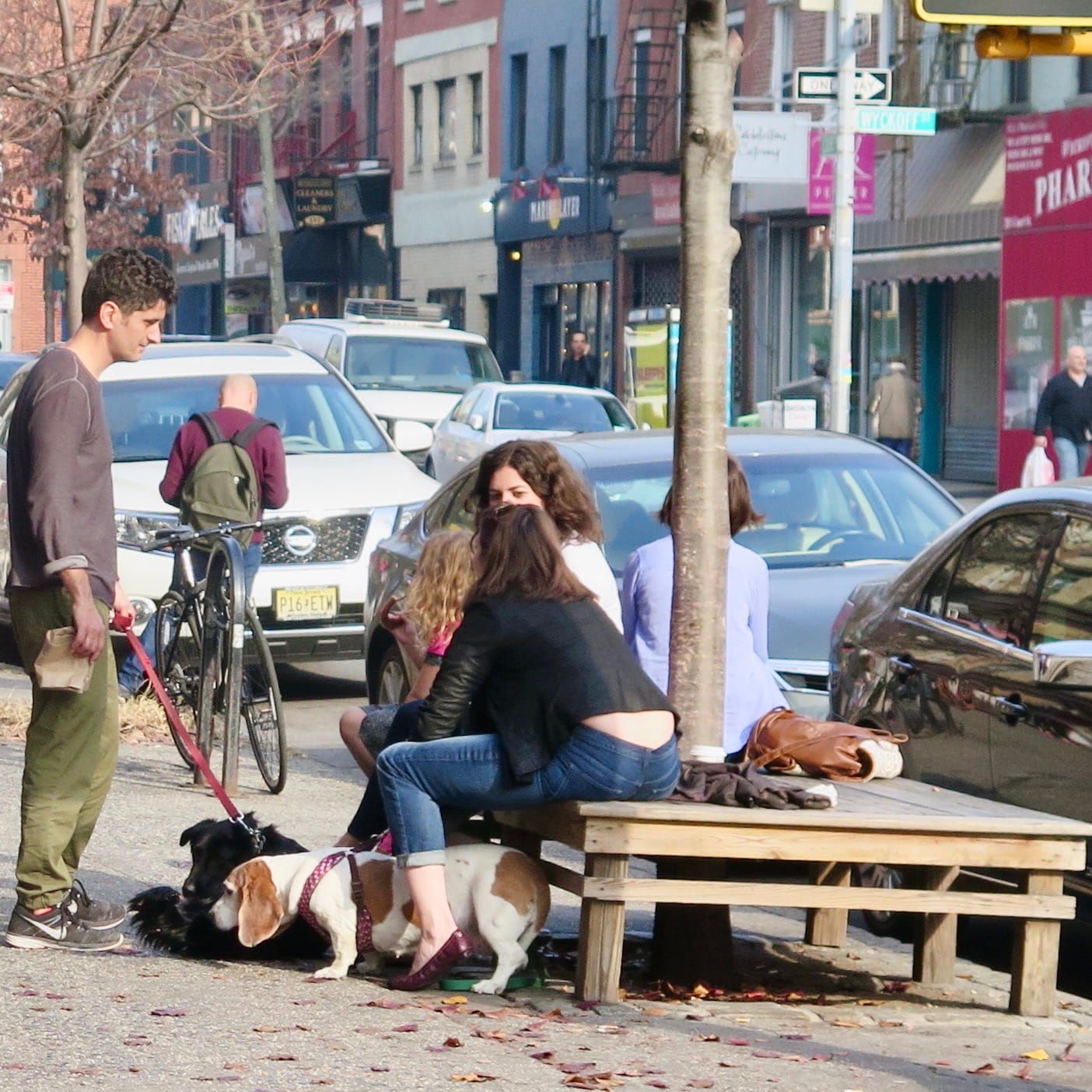
One bench became two, then two benches became a series of benches spreading up and down that block on Court Street and even over to Henry Street. This kicked off a trend in the neighborhood of creating places to linger. As additional benches were added, they became extensions of dining sheds, creating an entire block full of activities or what could be called a "super hub."
Darna's bench idea spread like wildfire down the block, creating a chain reaction of reciprocal gestures. Together, these places played off of one another, amplifying the social and commercial effects in an exciting way.
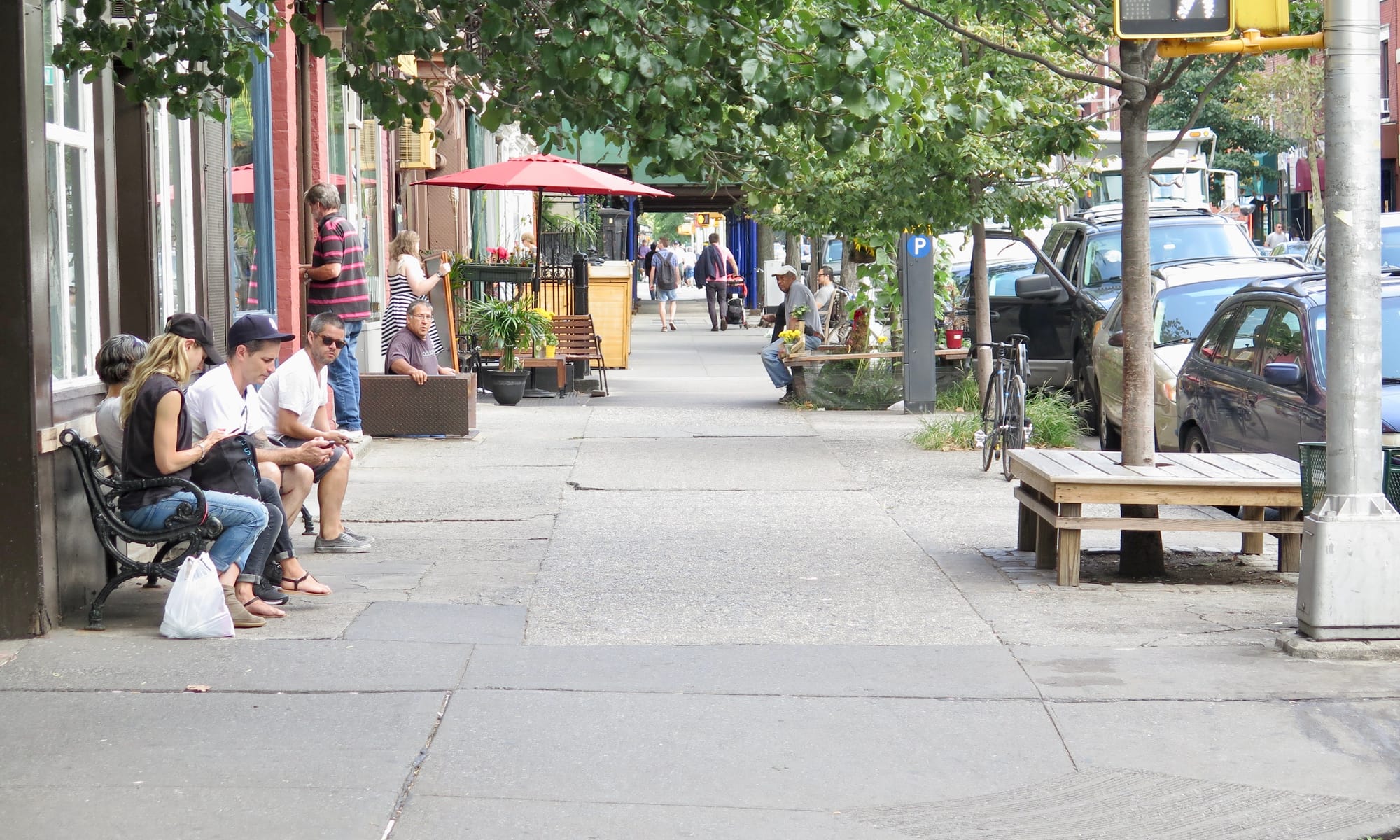
Reciprocal Gestures
Once a catalytic intervention is set up, like Darna's bench in this case, it attracts activity. People start interacting around it, gathering there, etc. Neighboring businesses notice and react by setting up something similar but unique to their own brand and offerings. This is a great example of the “reciprocal gestures” we mentioned above. It creates a chain reaction that starts spreading down the street and can lead to the revitalization of a whole area.
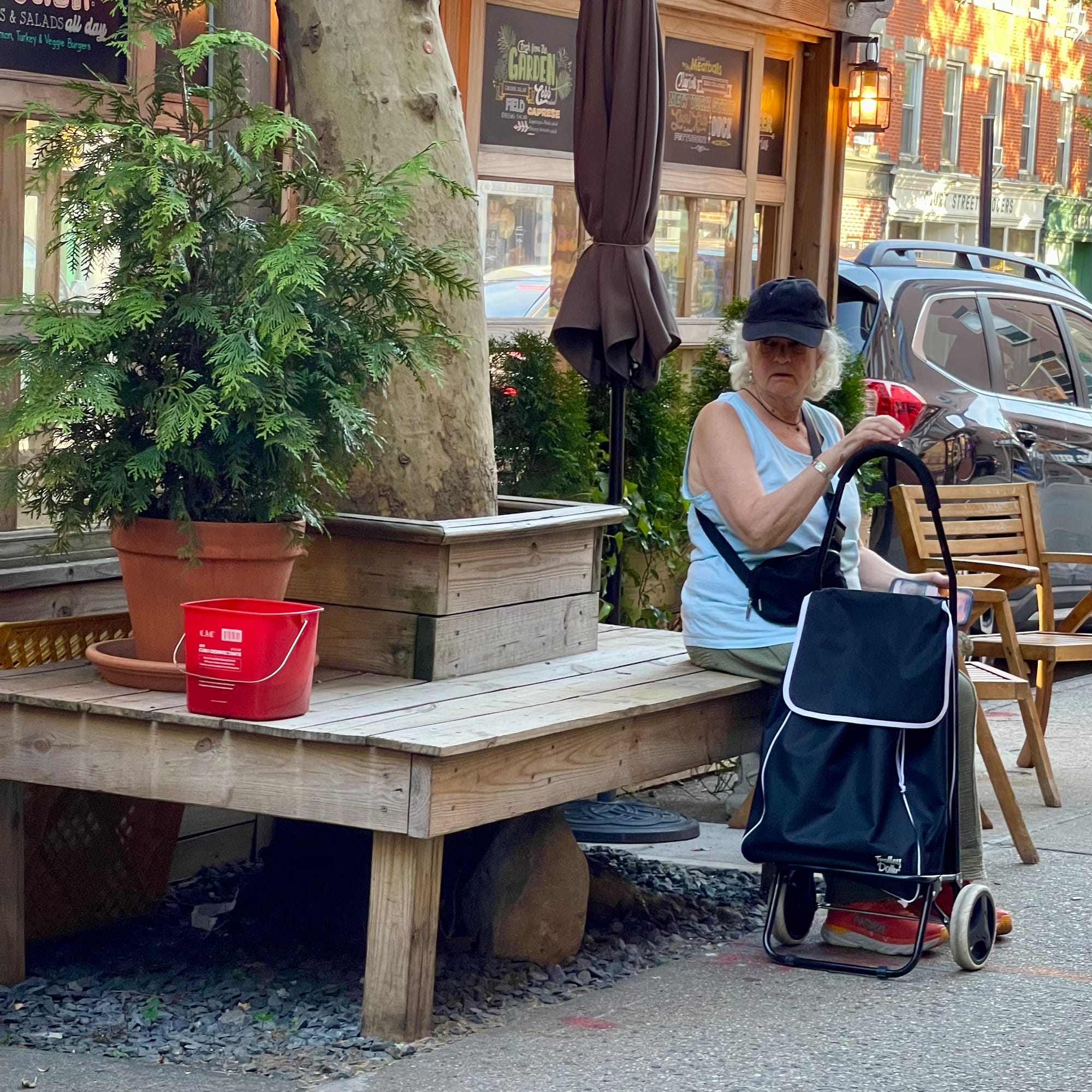
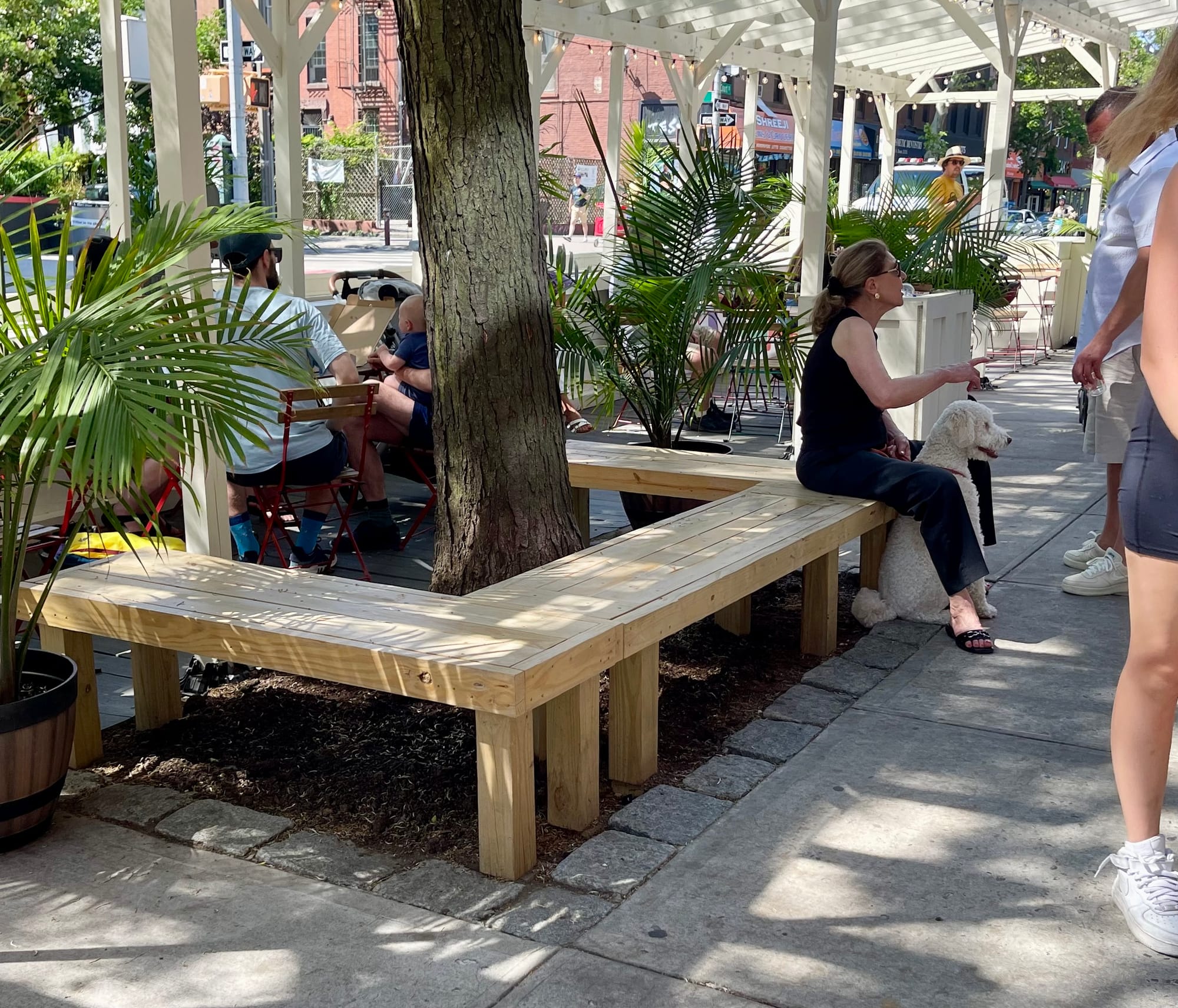
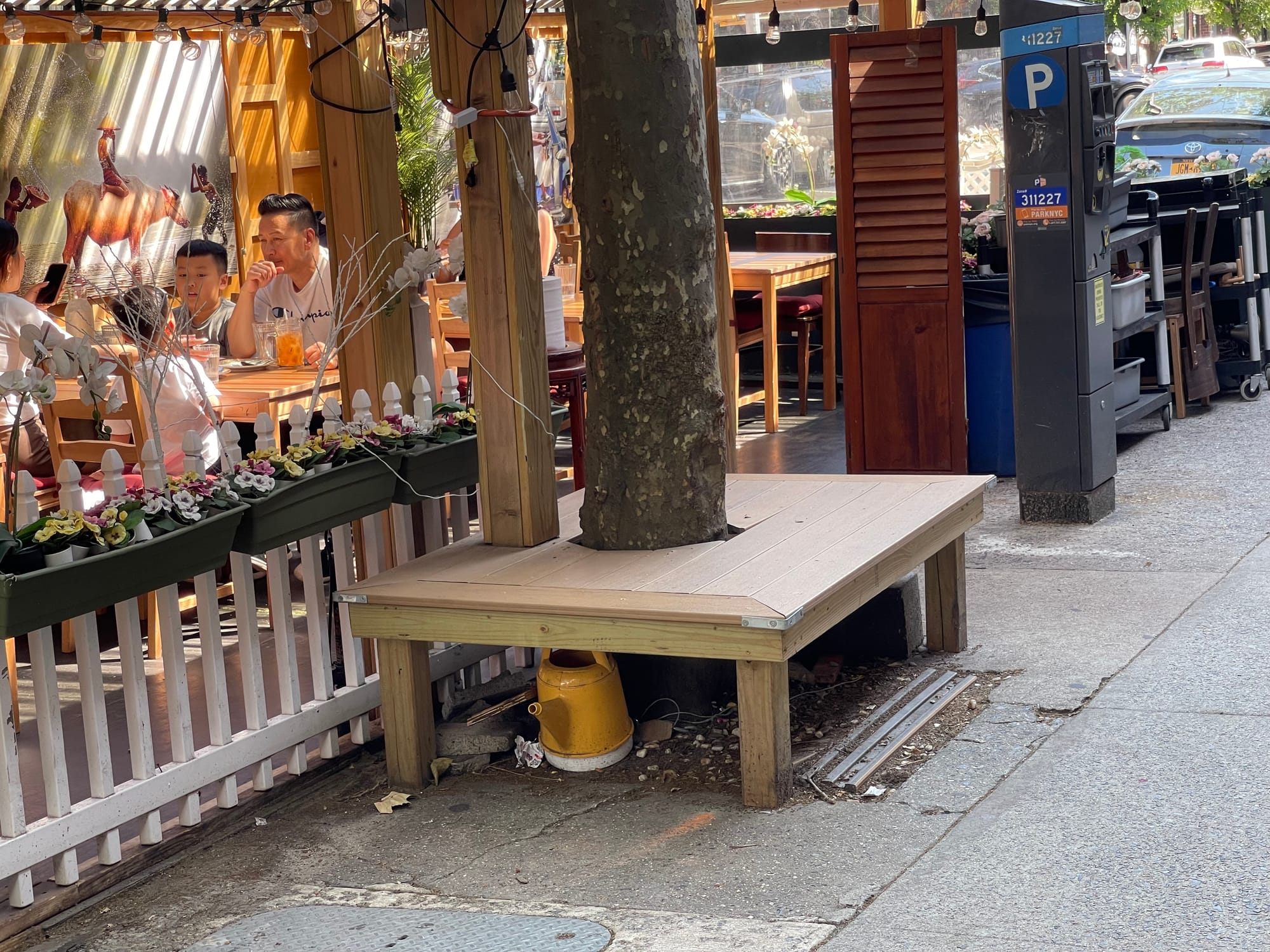
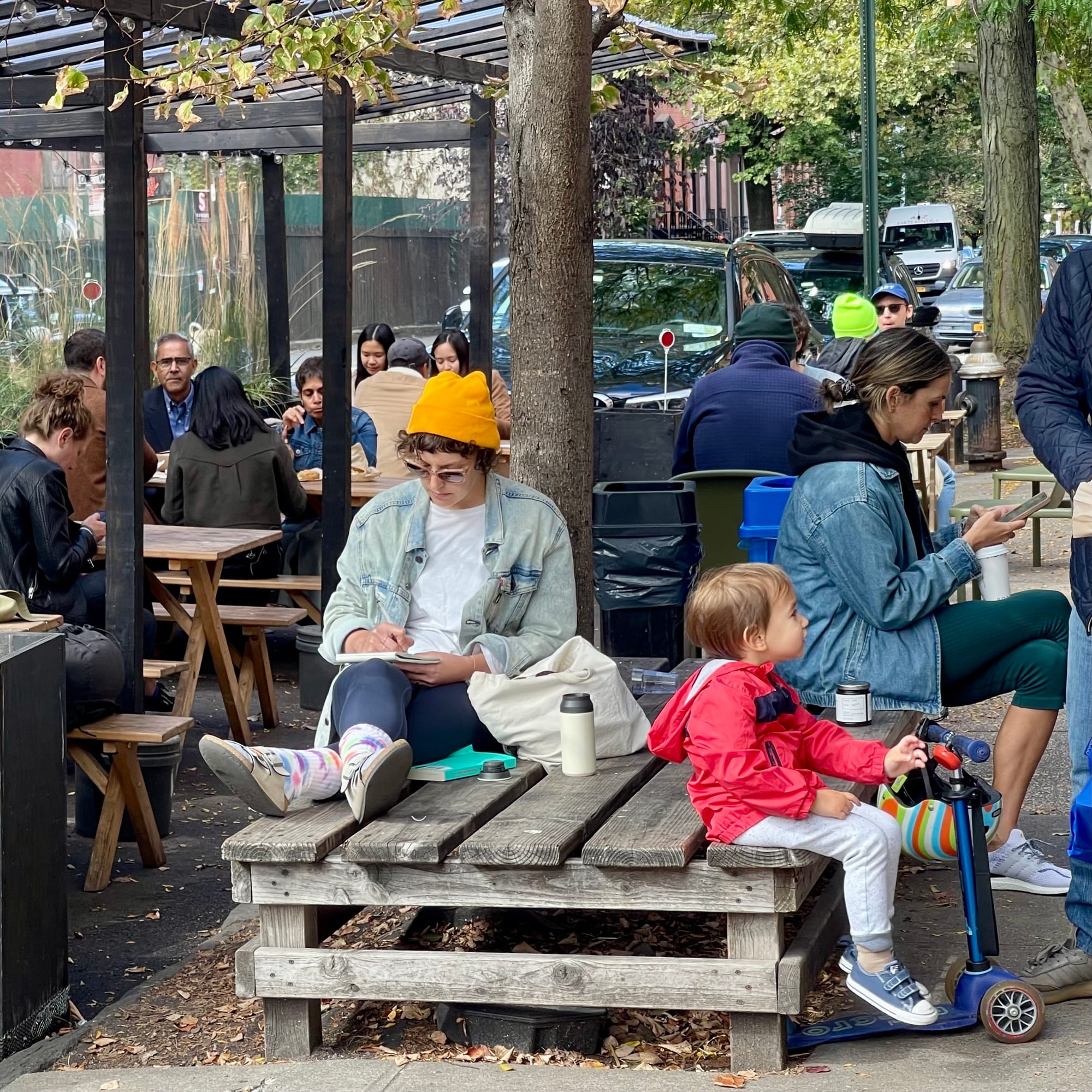
This process can be further enhanced by activating what Placemaker David Engwicht calls "eddy spaces" – those underutilized spaces on sidewalks between cafes and other elements on the curb side of the sidewalk. Eddy spaces can often be found between sheds, benches, and street trees. These little spots are often overlooked but hold great potential. They can be turned into play areas, small sculptures for kids, drinking fountains, game tables, a small kiosk for a start up businesses, etc. The combination of reciprocal gestures, "inside out" design, and activating eddy spaces leads to the further development of a "hub."
In the process of reciprocal gestures, gradually other features start being added – string lights, murals, umbrellas, etc. – extending the vibrancy and transforming the full extent of the sidewalk. Compare the "Darna block" before to after Darna added the benches and the dining sheds were erected. This block quickly became the center of social life on Court Street in Cobble Hill.
Before the dining sheds
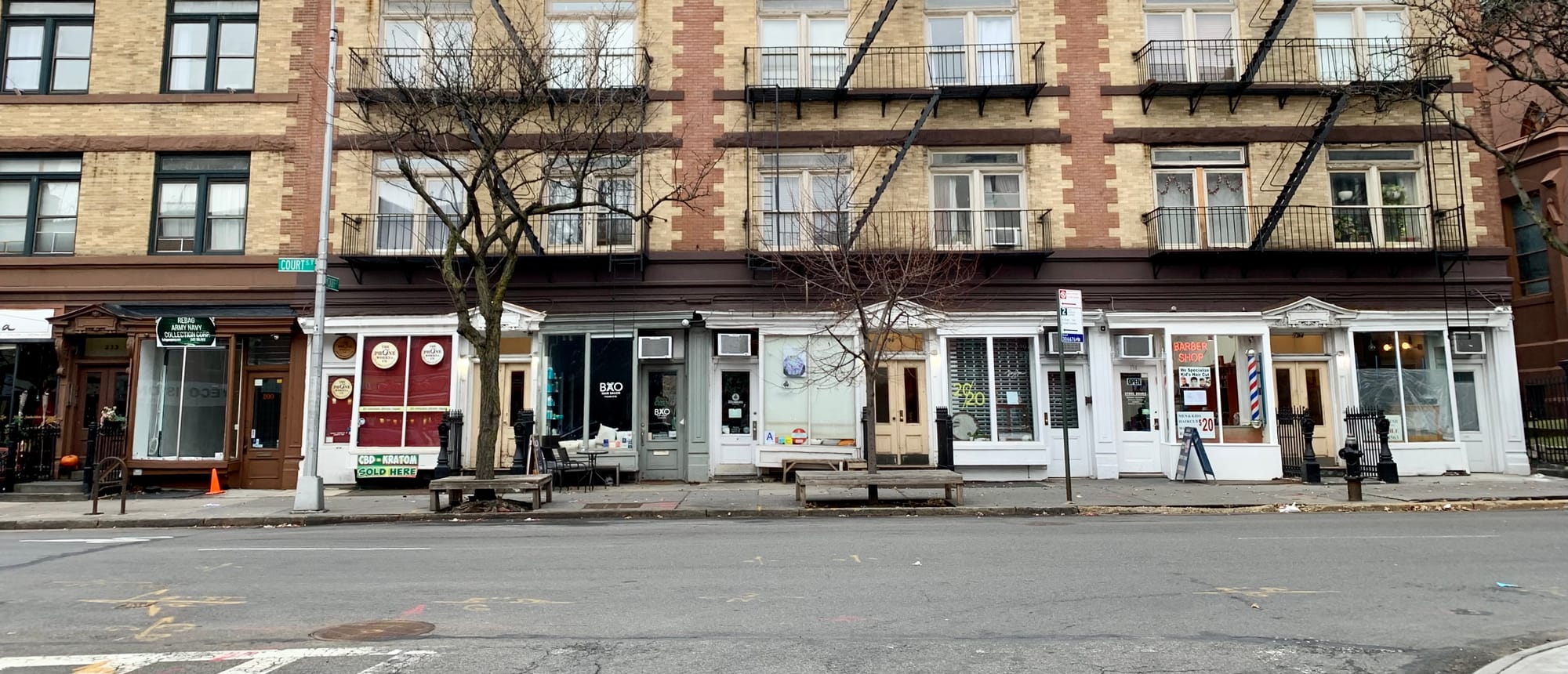
After, with the new sheds and activations
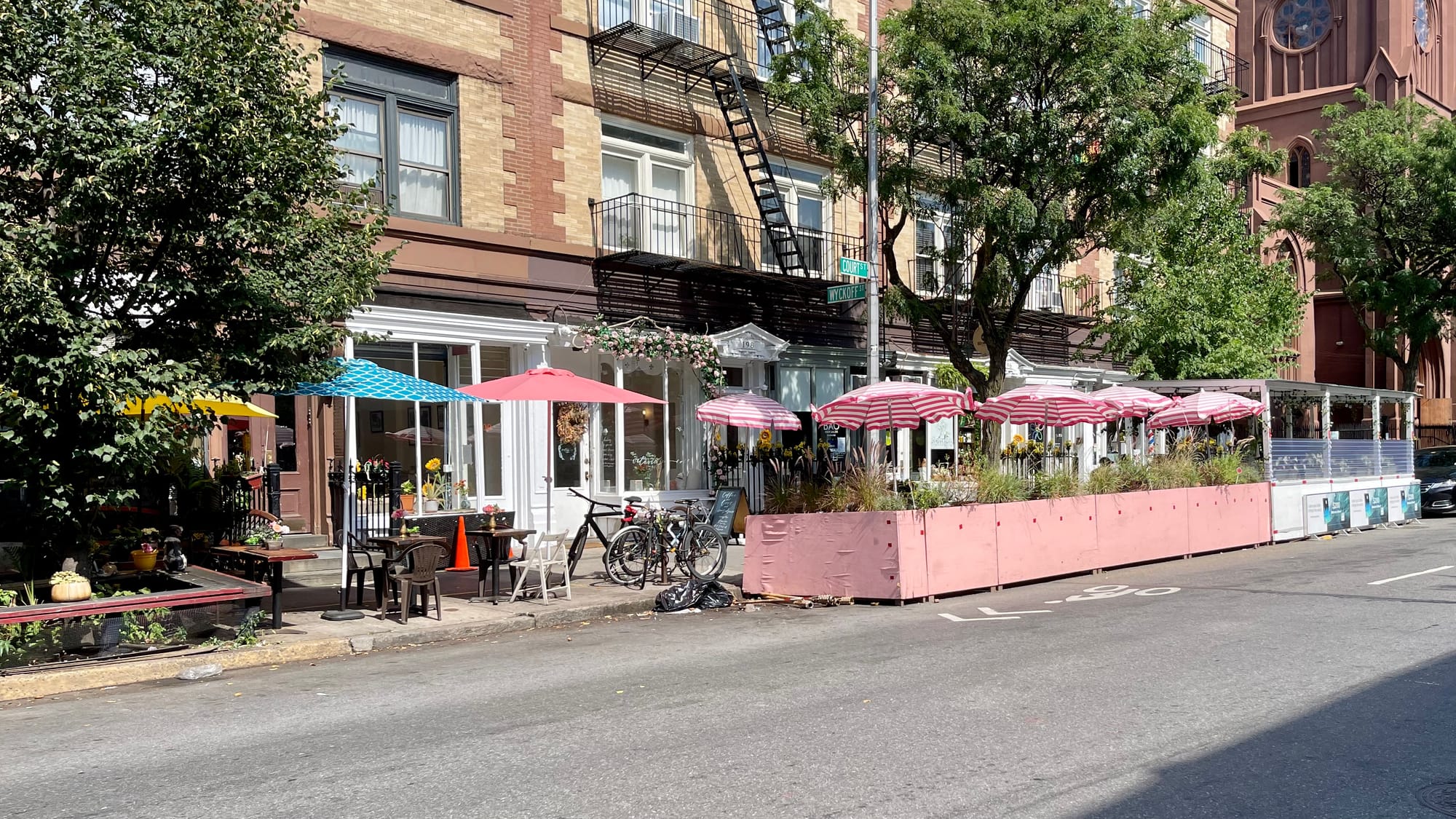
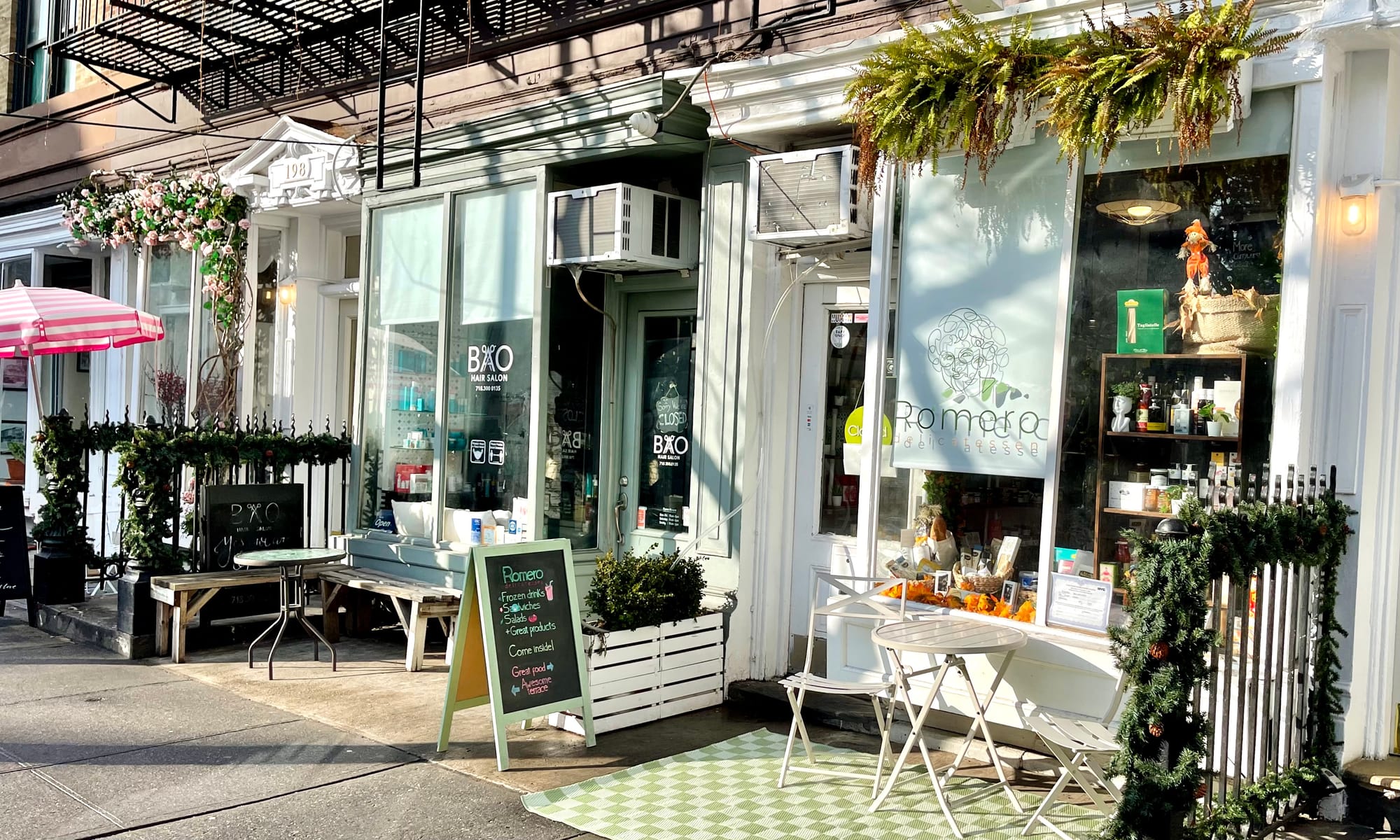
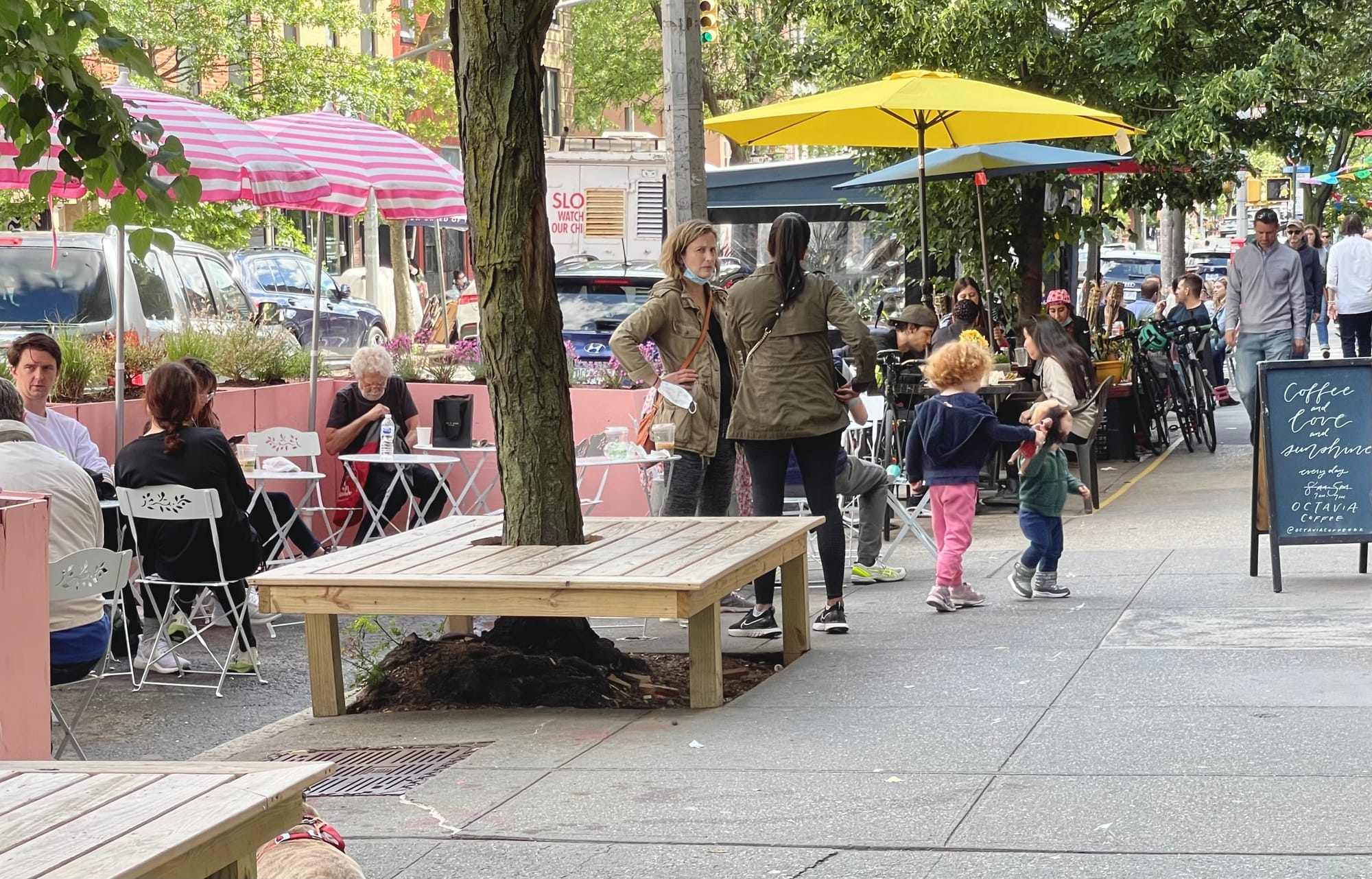
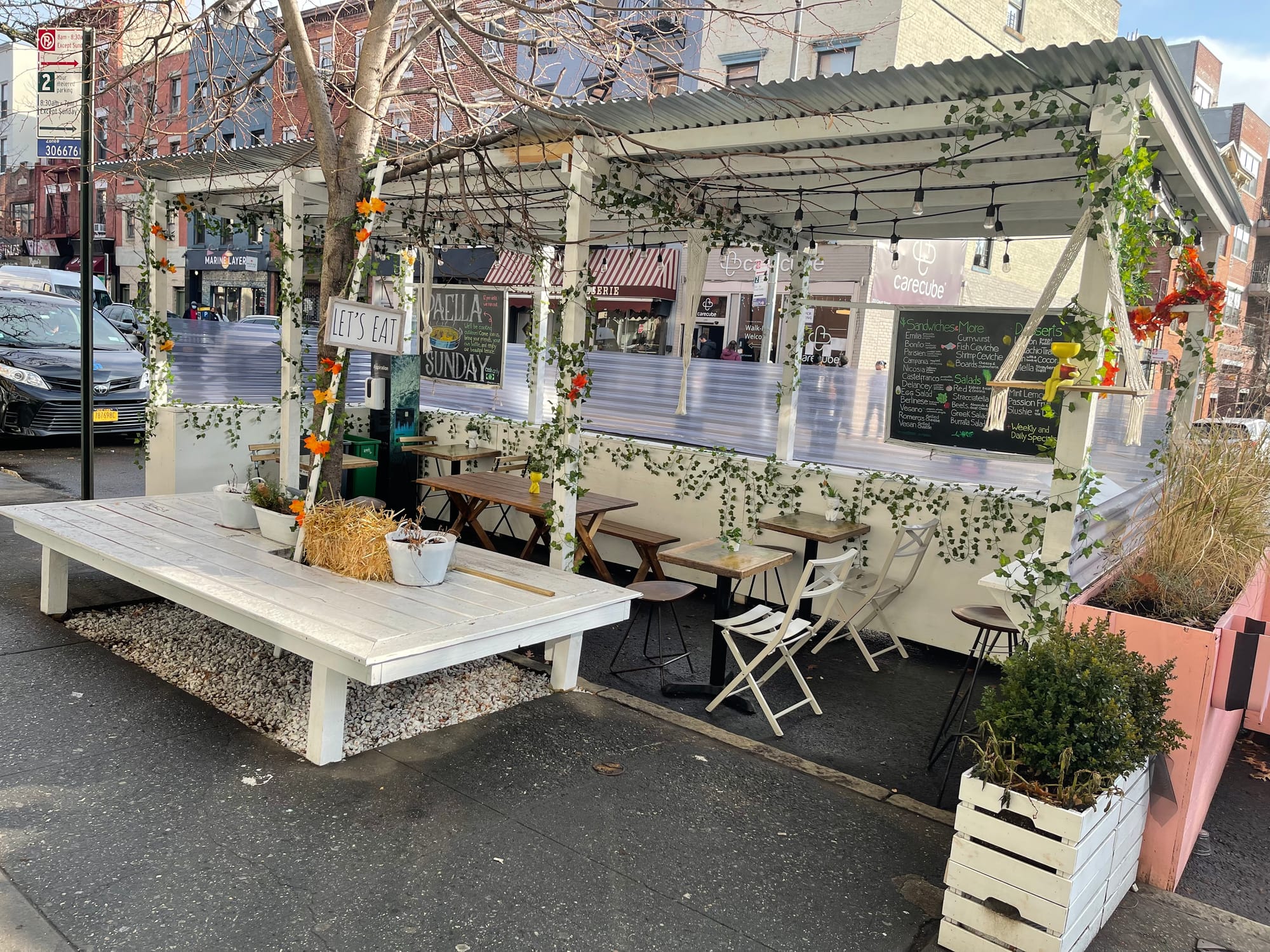
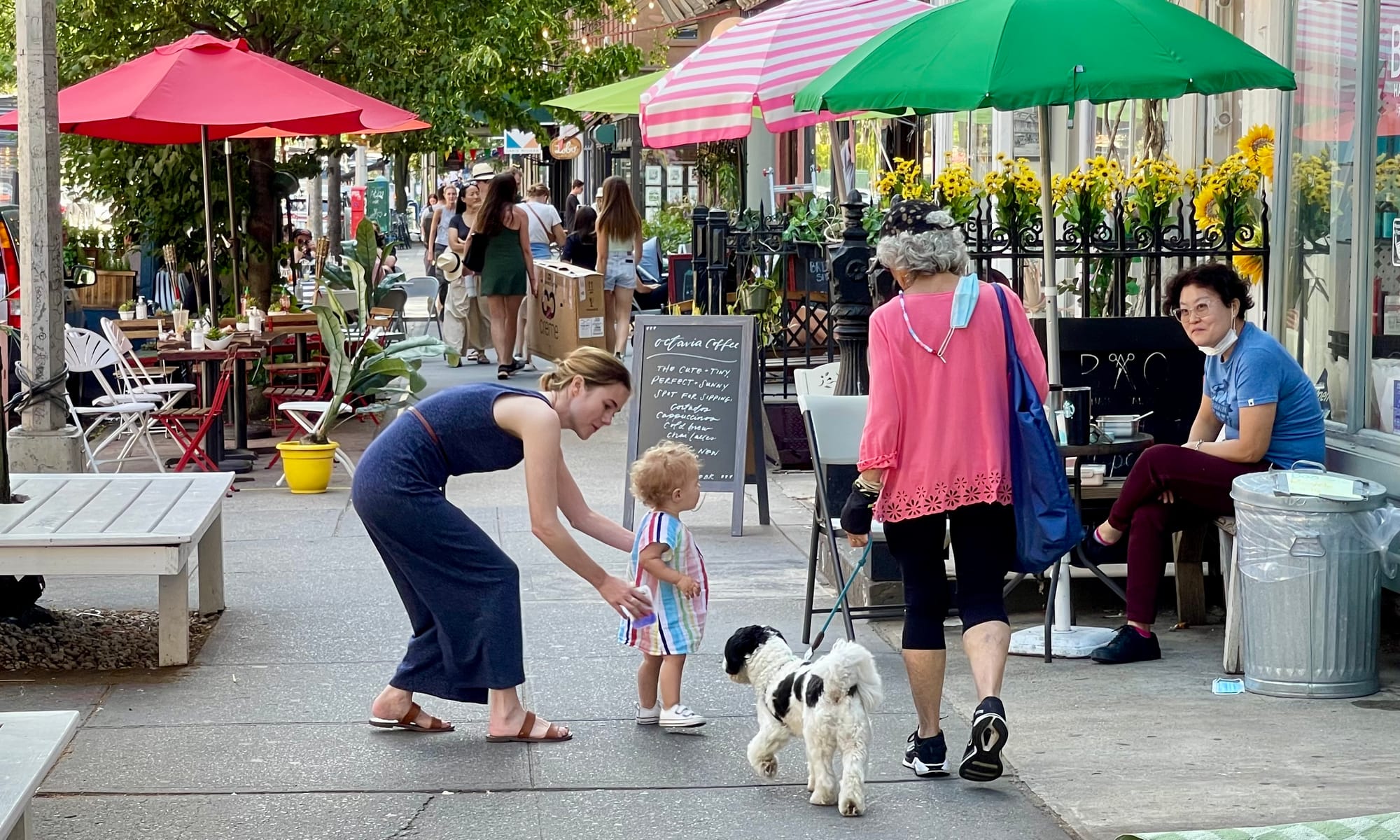
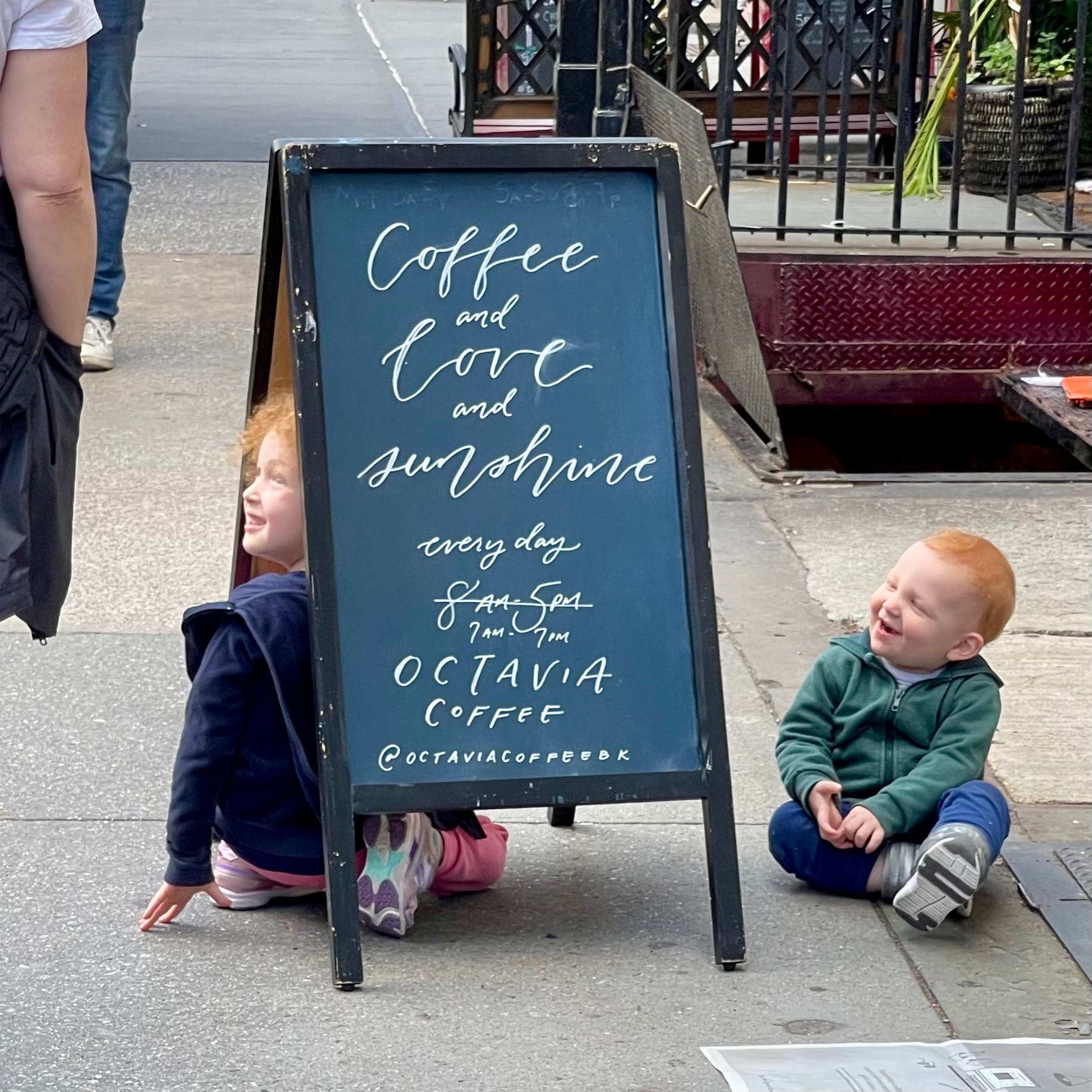
As it gained momentum, the cumulative impact of added amenities and assets can even grow to extend across the street or to another corner and down another block in a kind of domino effect. Through this process, something as simple and straightforward as a great bench or a dining shed can turn into the catalyst for a vibrant neighborhood.
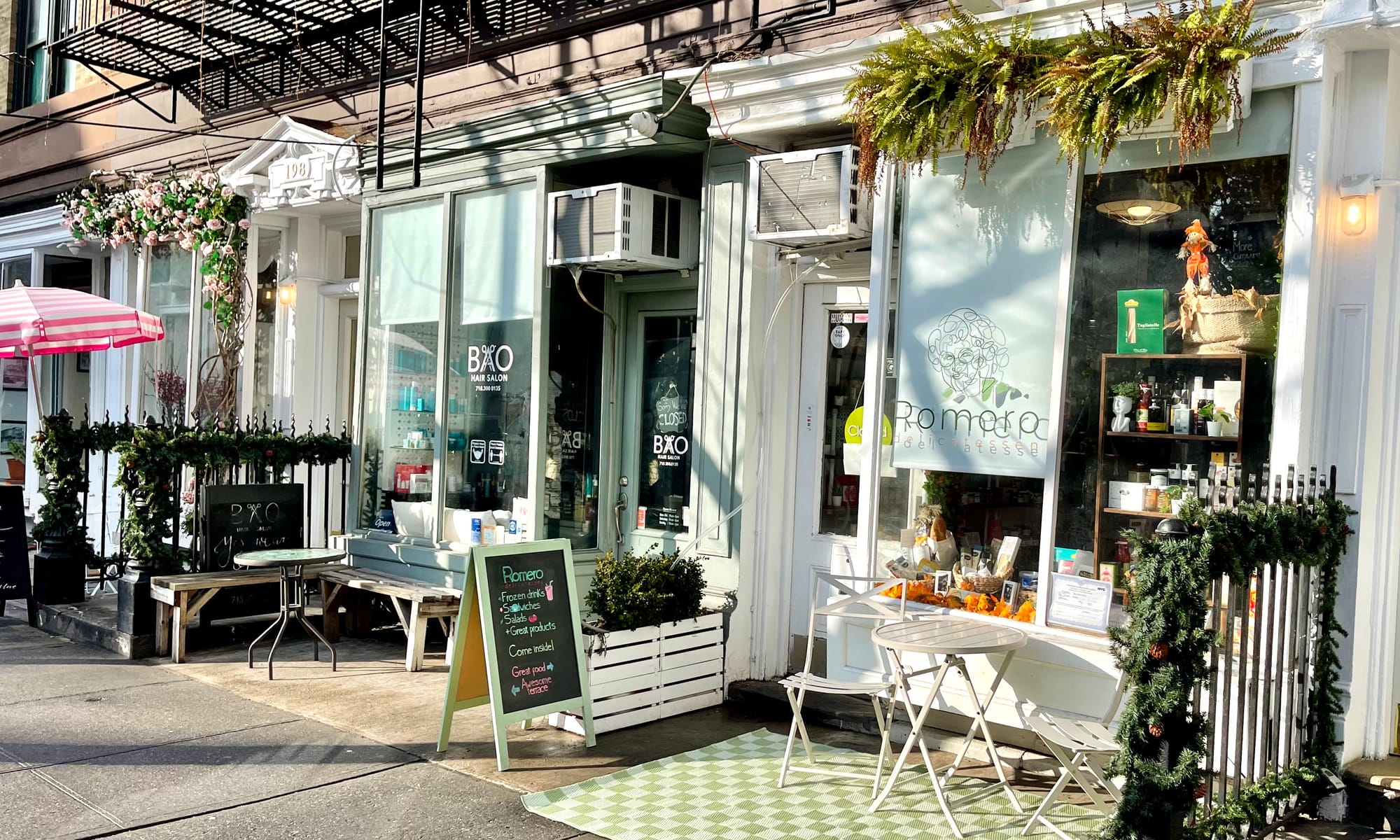
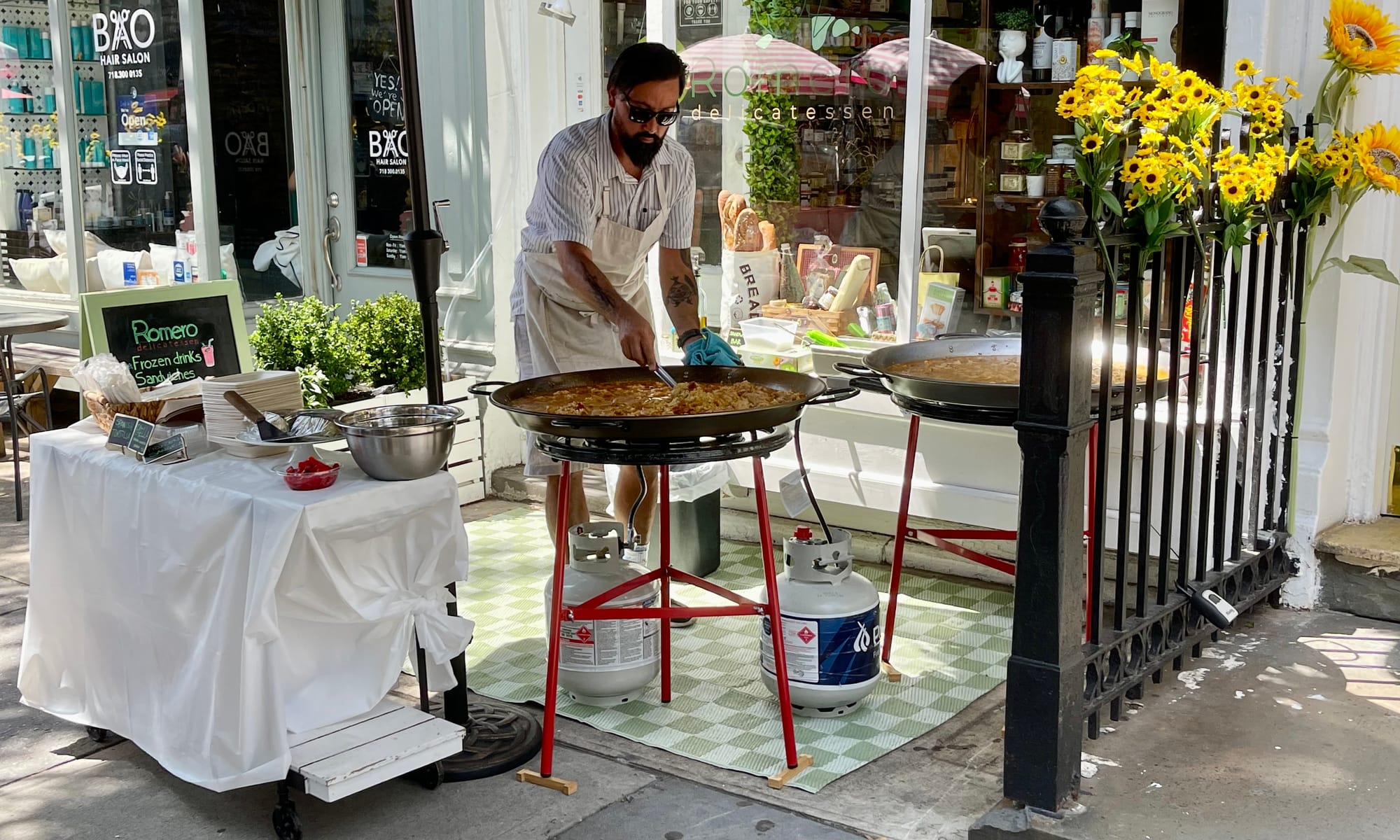
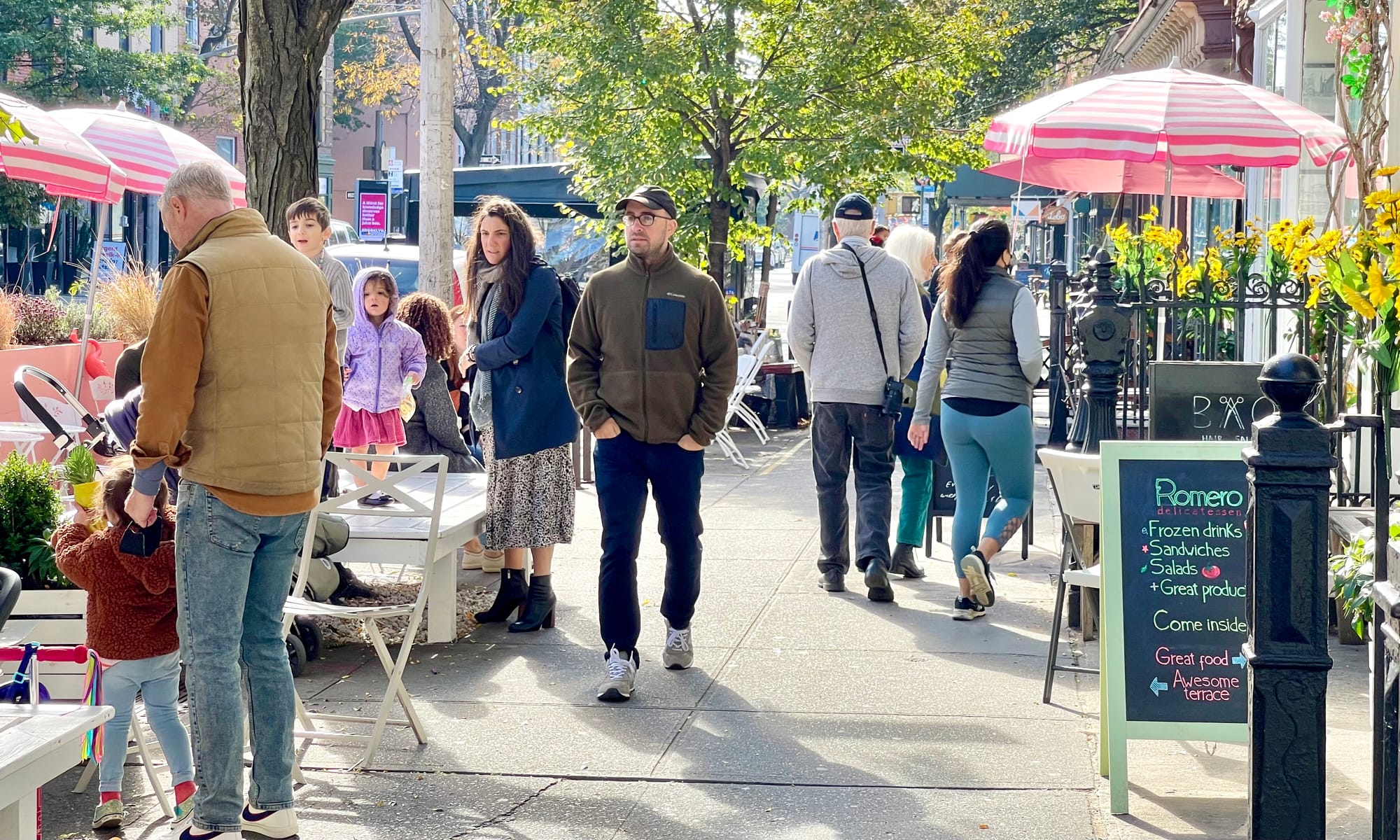

We also see this kind of impact in a nearby hub on Henry street where the main social anchors are across the street from each other, playing off of each one's improvements via reciprocal gestures.
The Farmacy and MozzLab – Two hubs on Henry Street anchor this historic neighborhood
Certainly one of the best social hubs in Cobble Hill and Carroll Gardens is the Farmacy – a true heart of community life. Everyone can enjoy their lovely outside seating area without being required to make a purchase. Most of the people in the images below are community members just gathering with their neighbors to chat and connect.
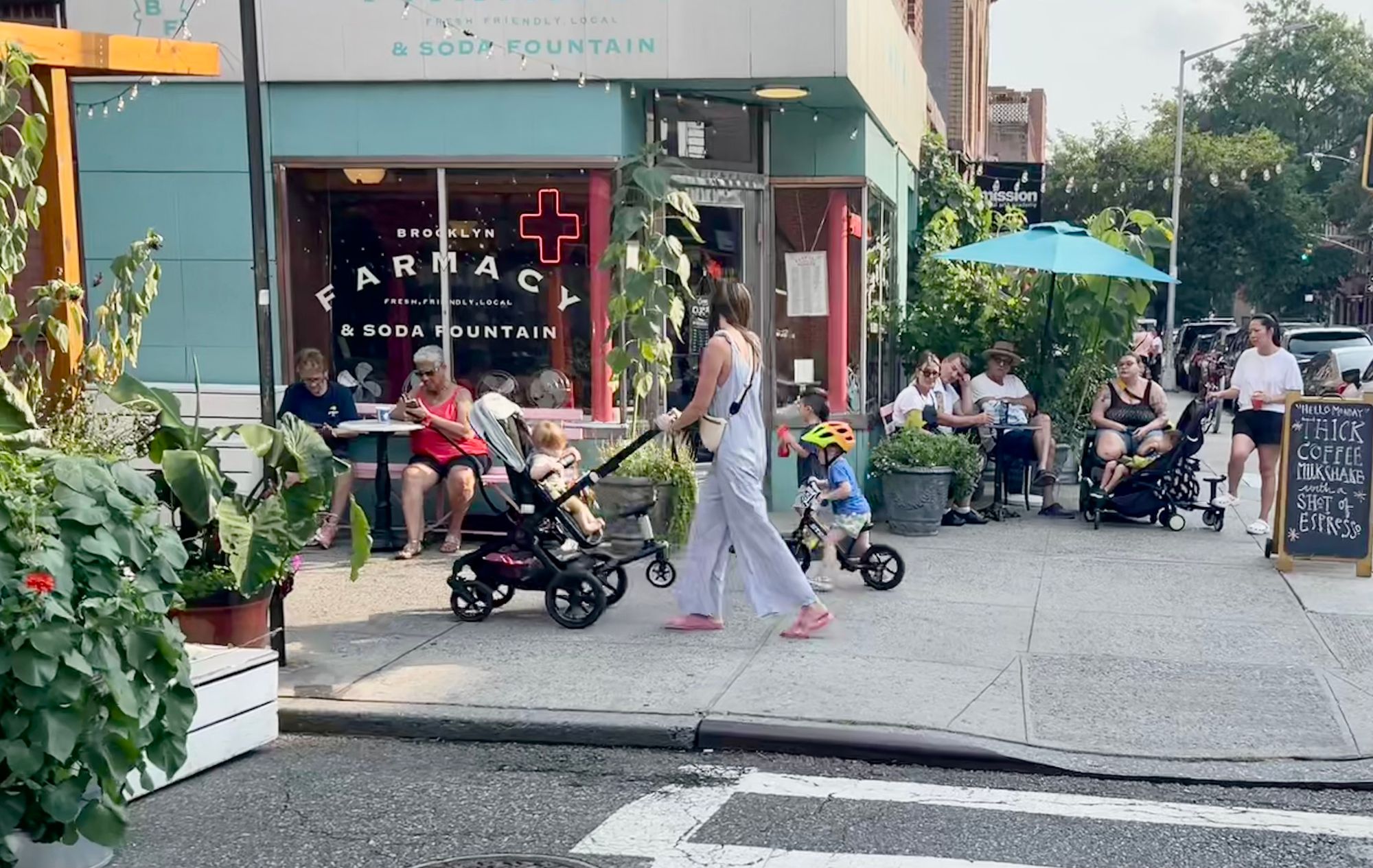
The young and old and everyone in between enjoy the atmosphere here. The Farmacy is open from 2 in the afternoon until 10 in evening. The afternoon is when the families with kids come. It is a major community asset with all kinds of people hanging out here at all times.
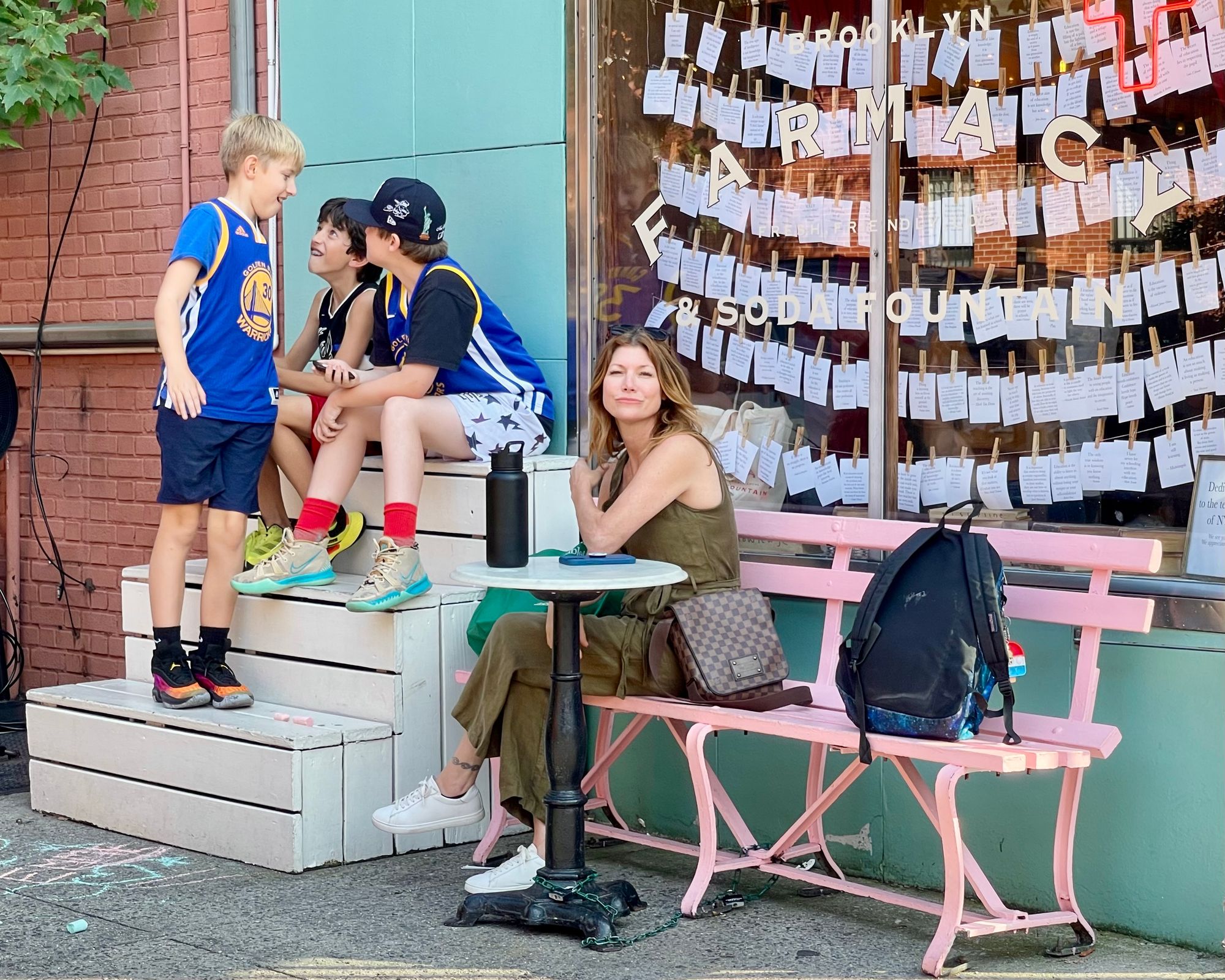
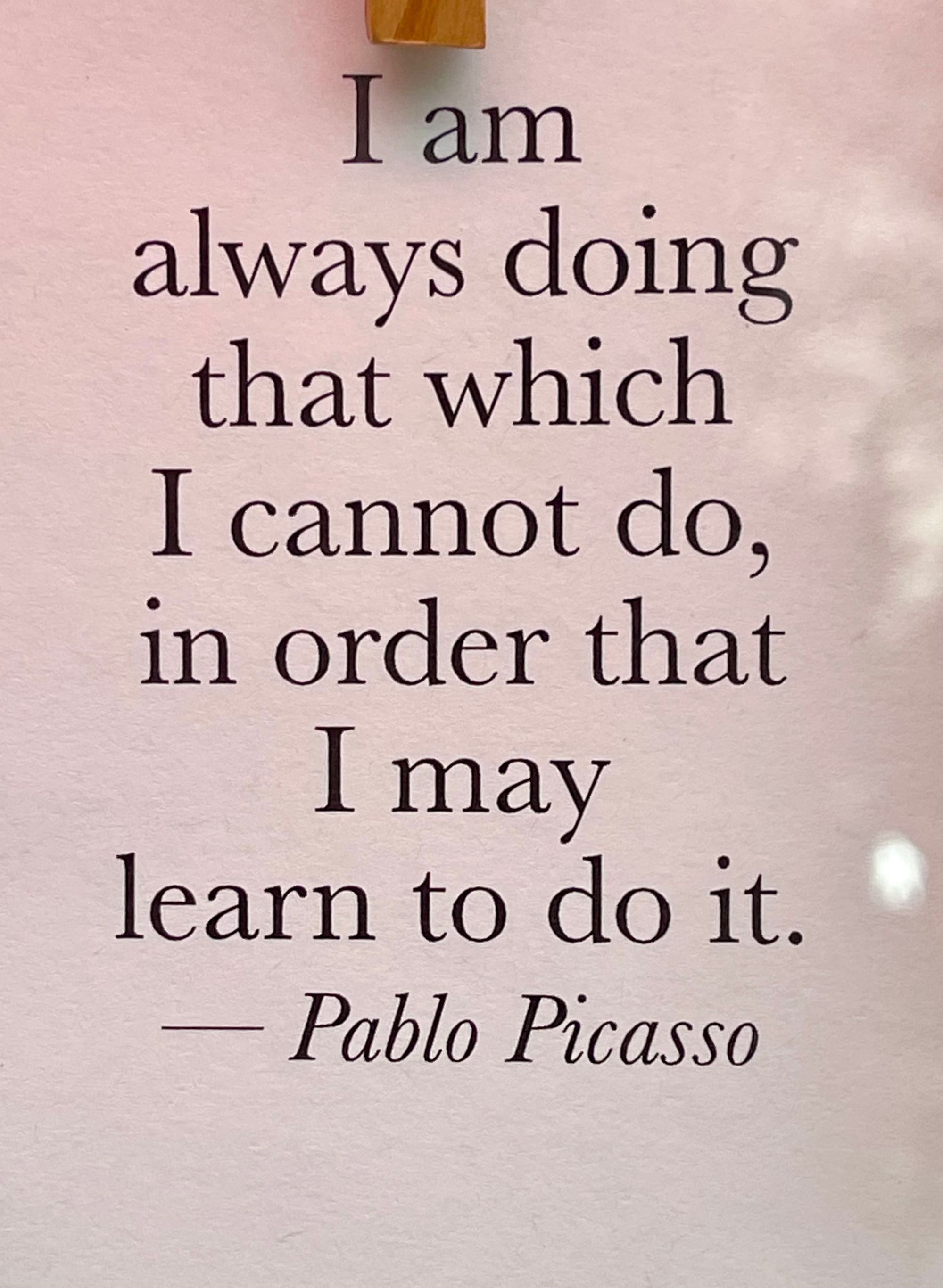
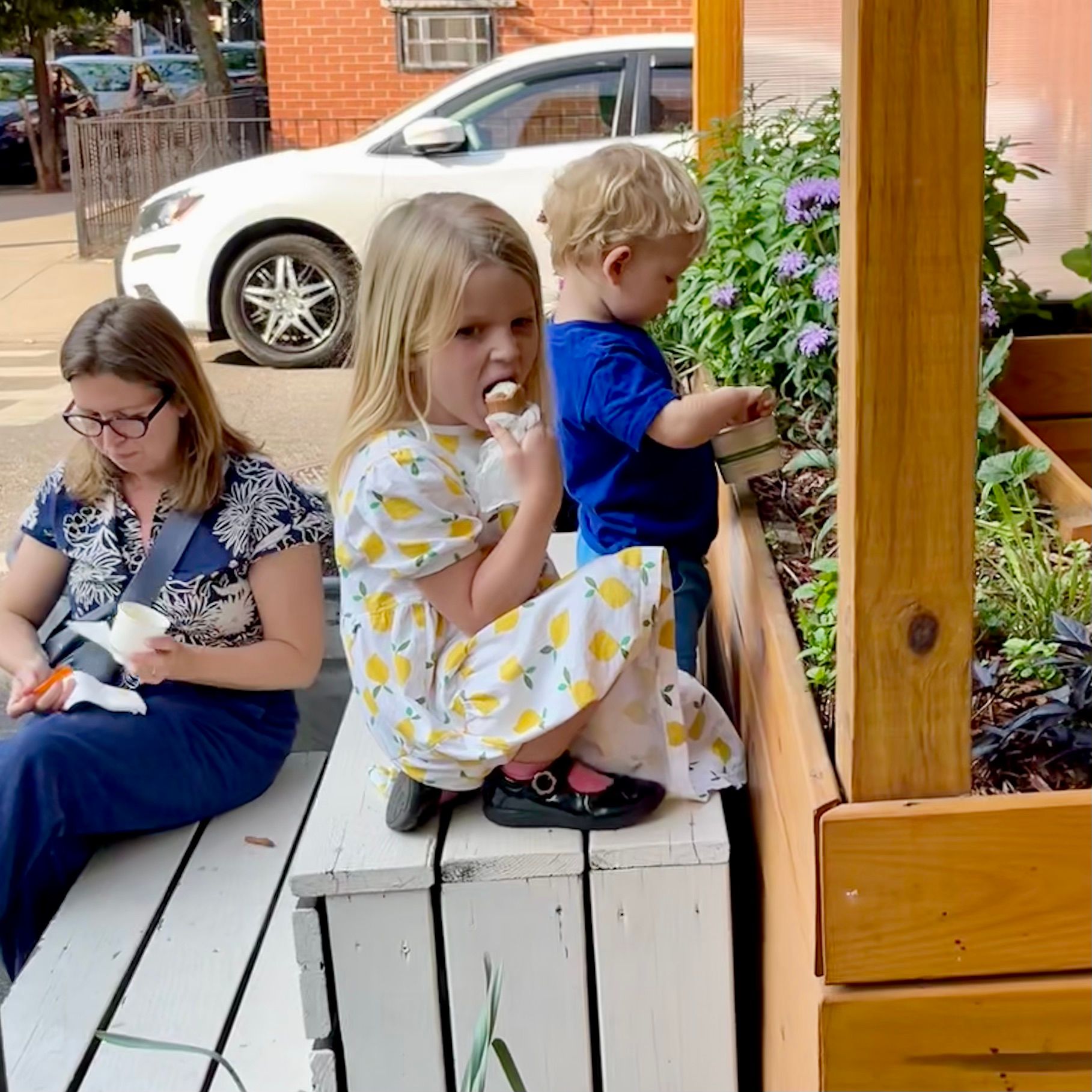
The cards in the window are meant to inspire, and that they do
Gia (below) and her family are the creators and owners of the Farmacy and true leaders in the community. They are an inspiration to others in our neighborhood.
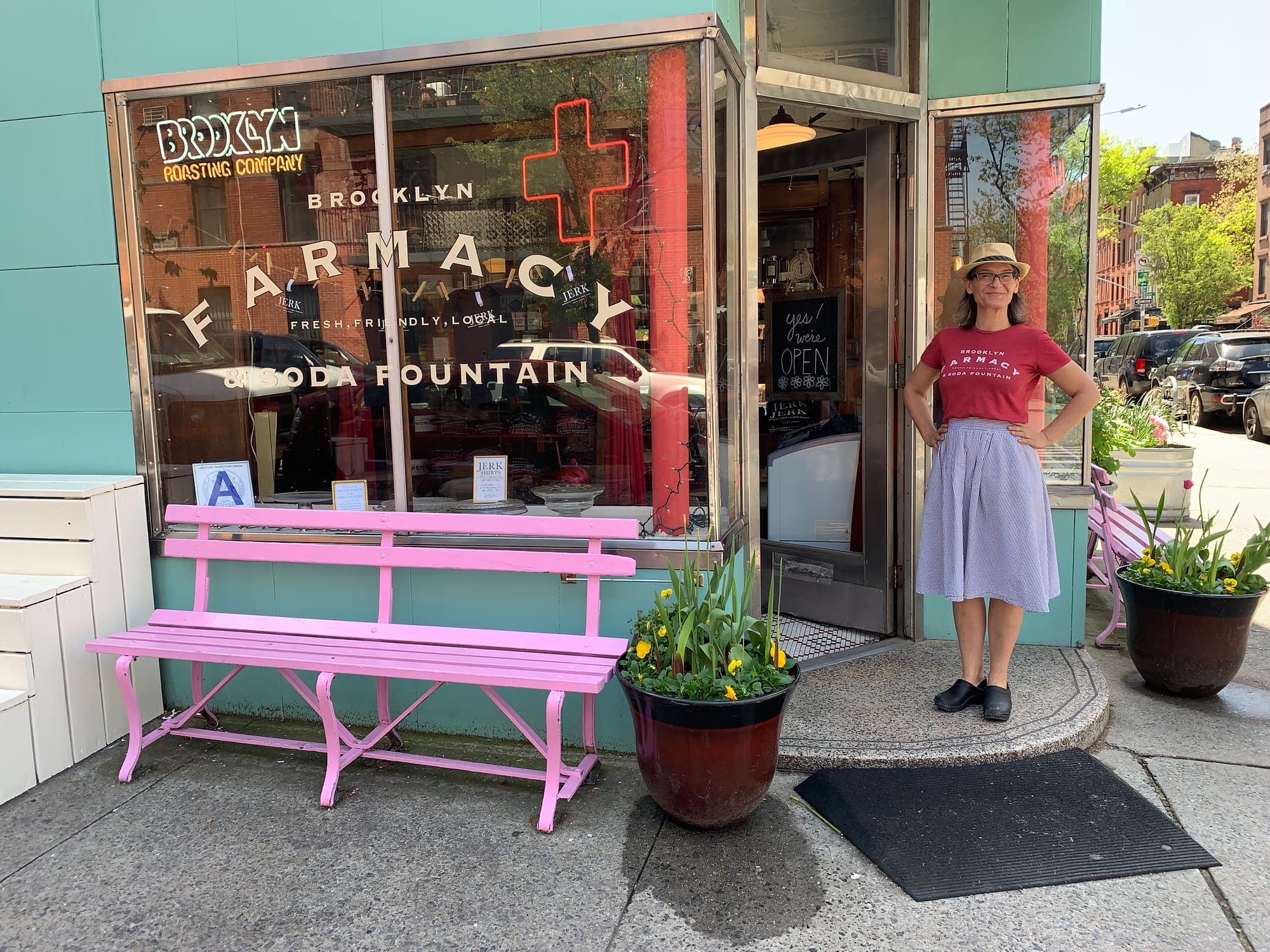
This wonderful community hub will also have to be removed by NYCDOT according to the new rules about dining sheds. Removing this community institution anchored by the dining shed will be a great loss, especially to the 30+ older women who love this place dearly and make it lively year round.
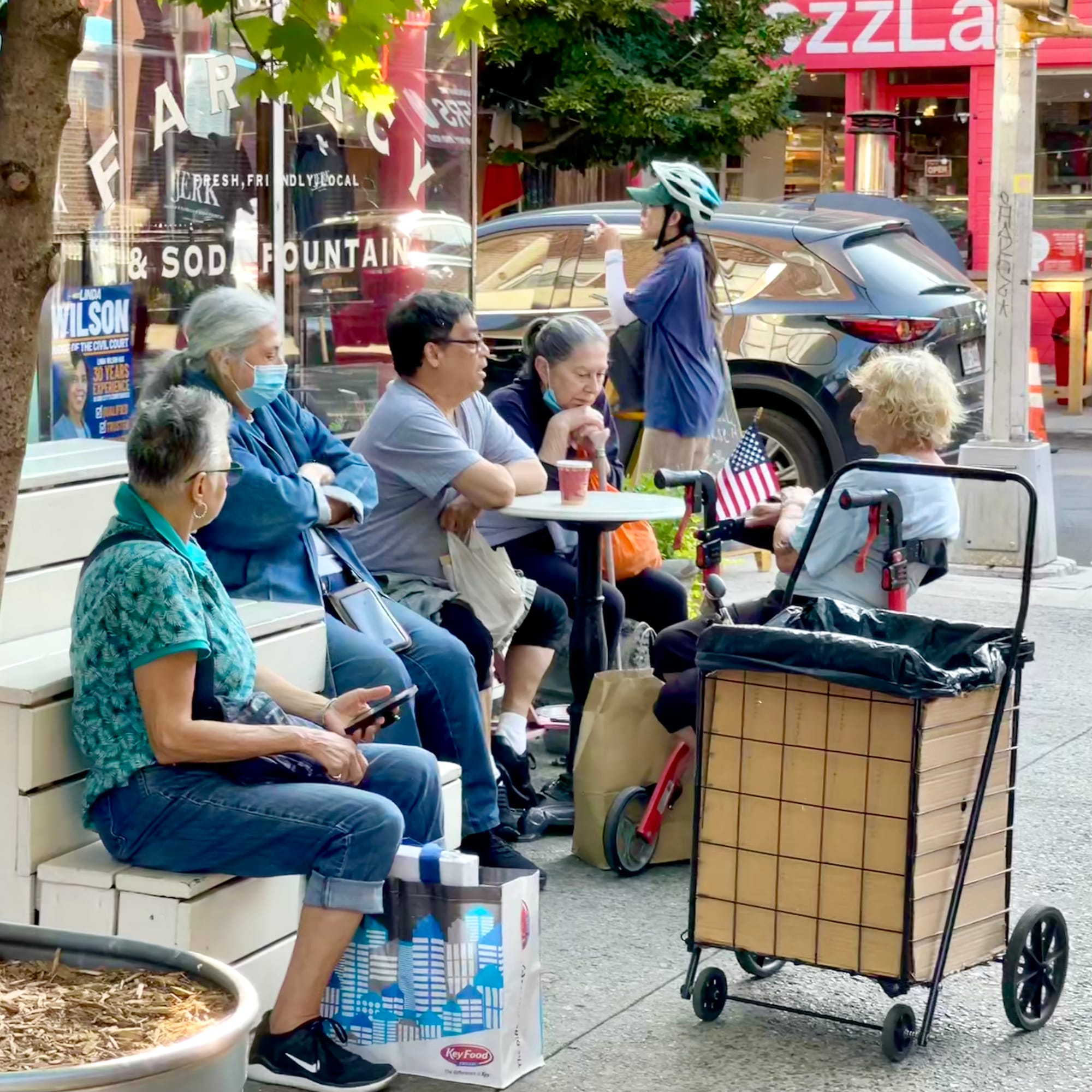
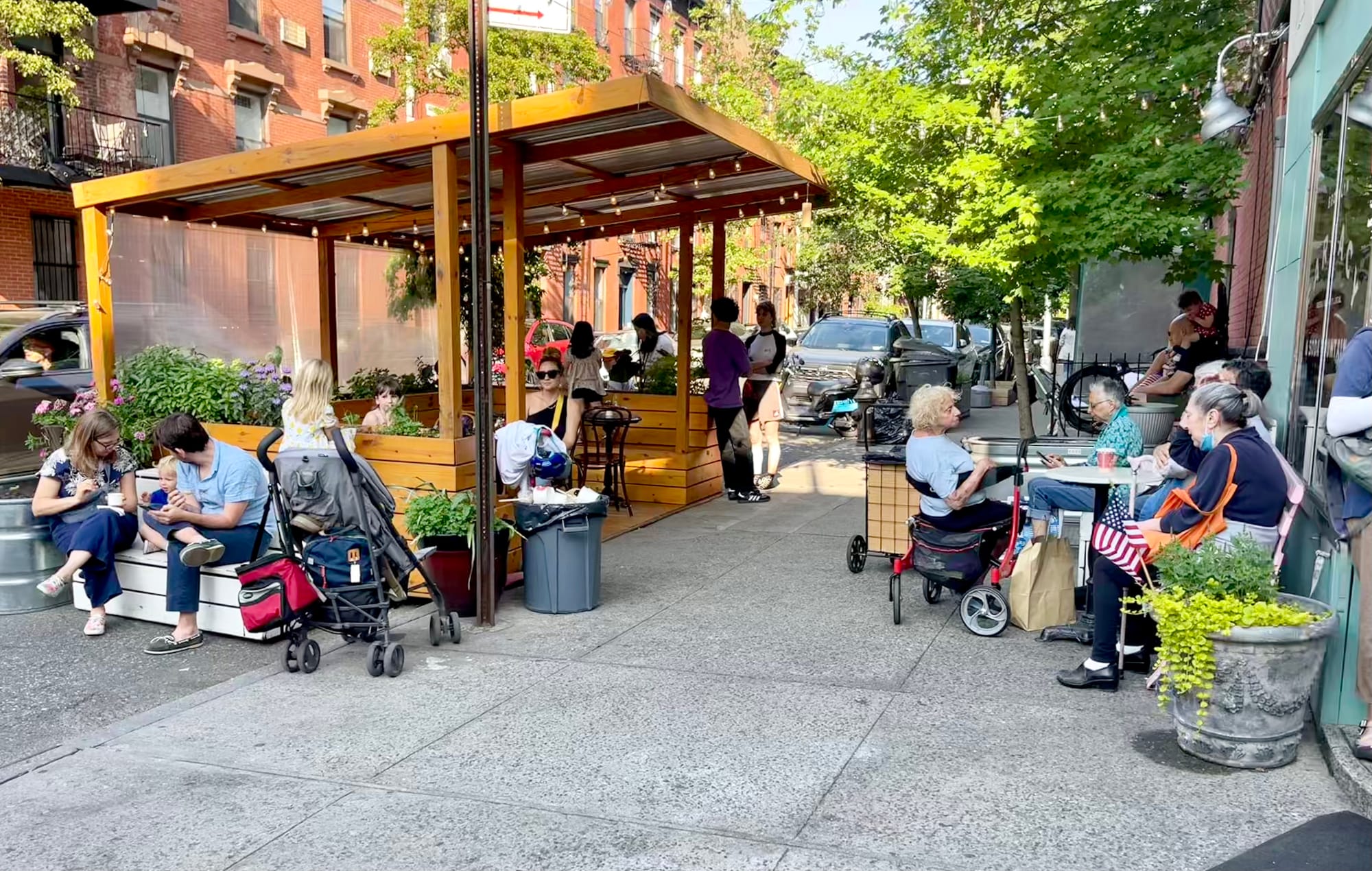
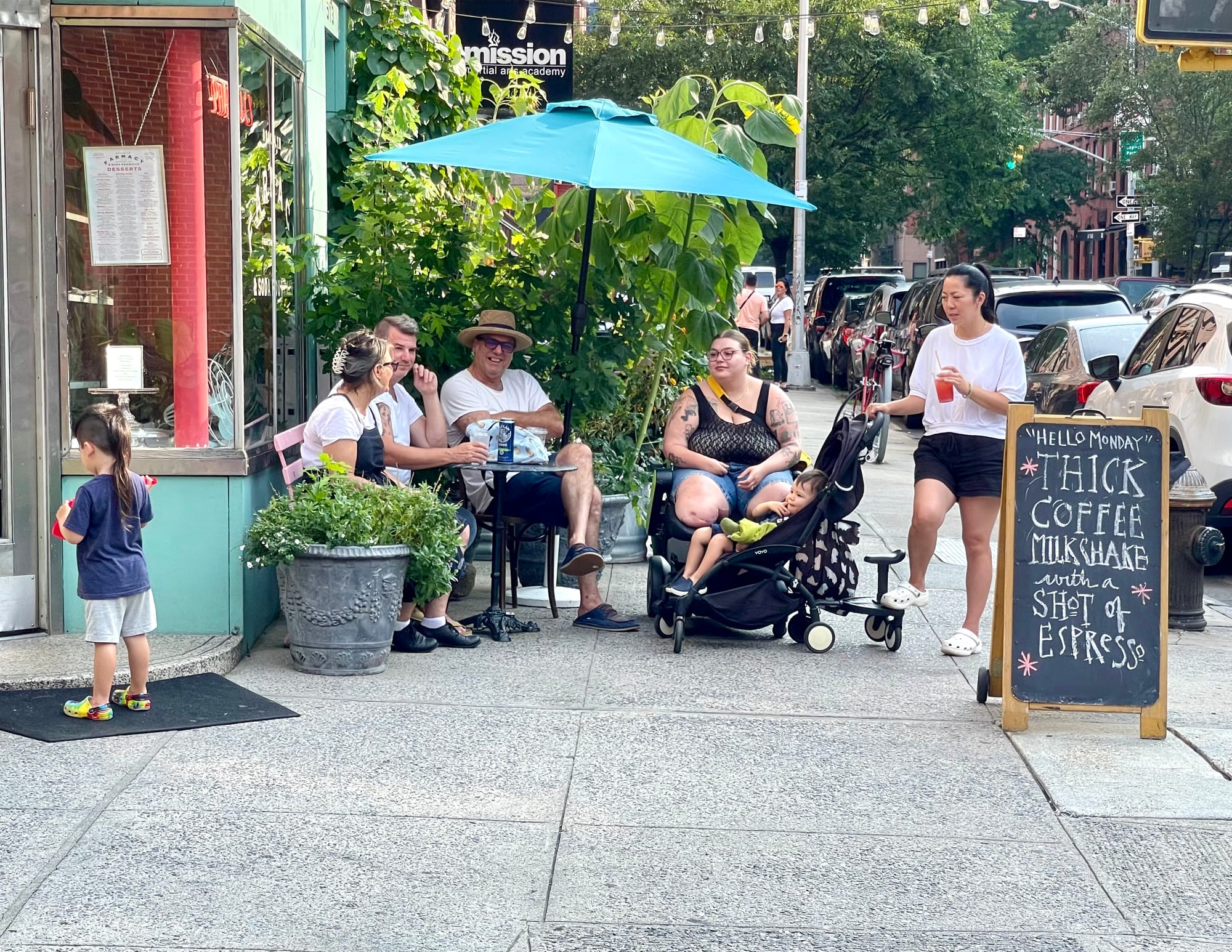
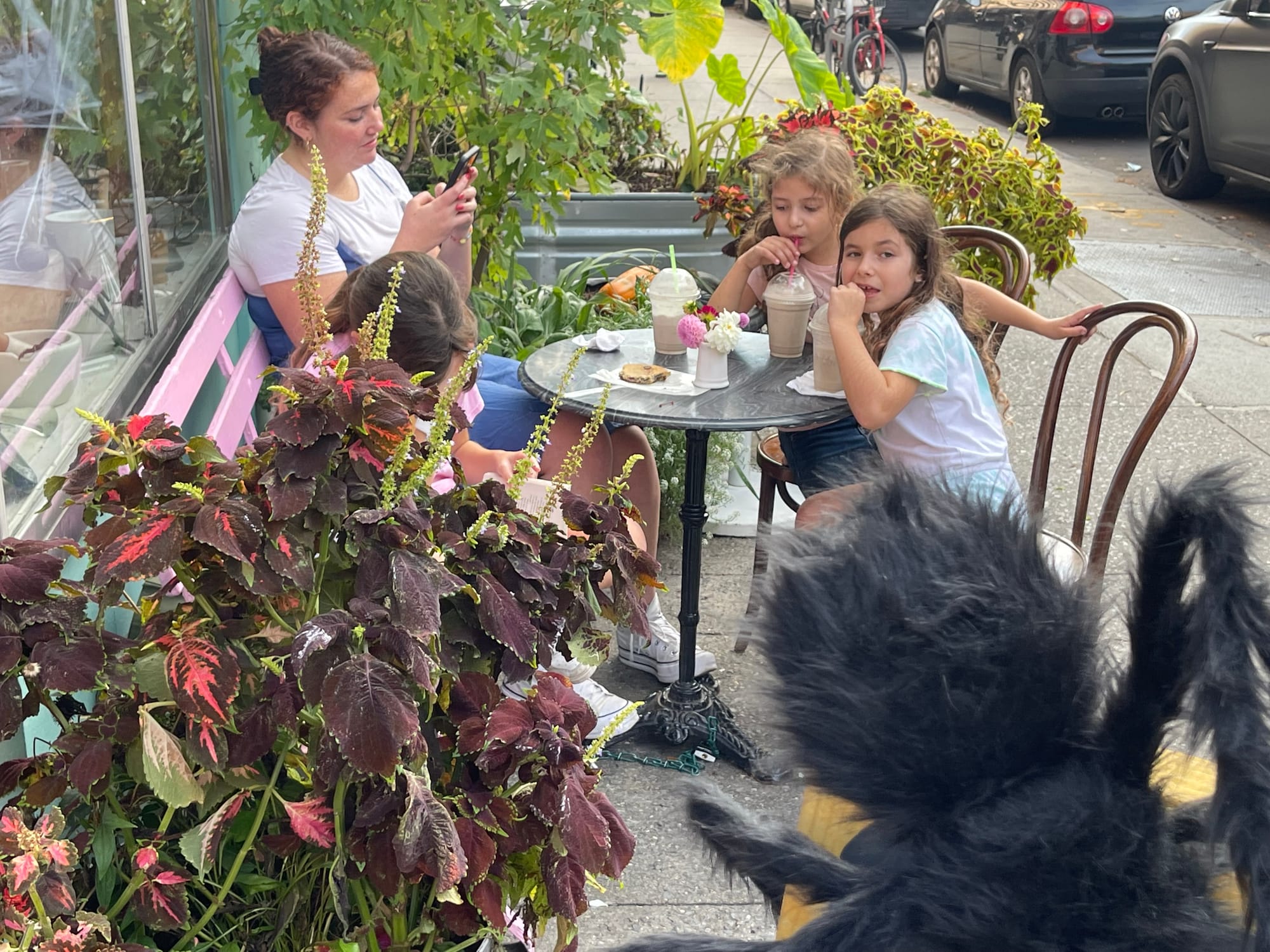
The Farmacy is an iconic soda fountain and community institution.
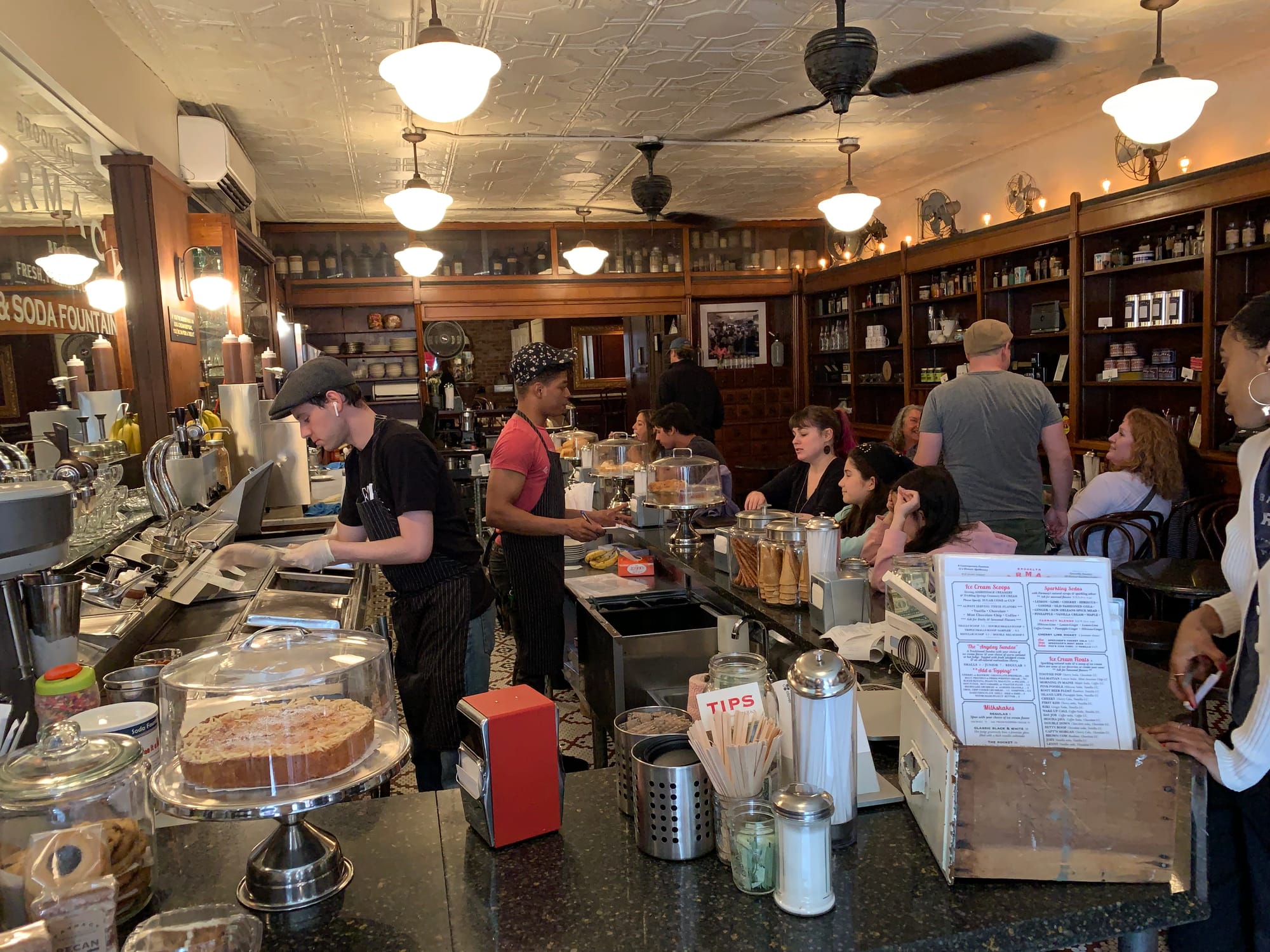
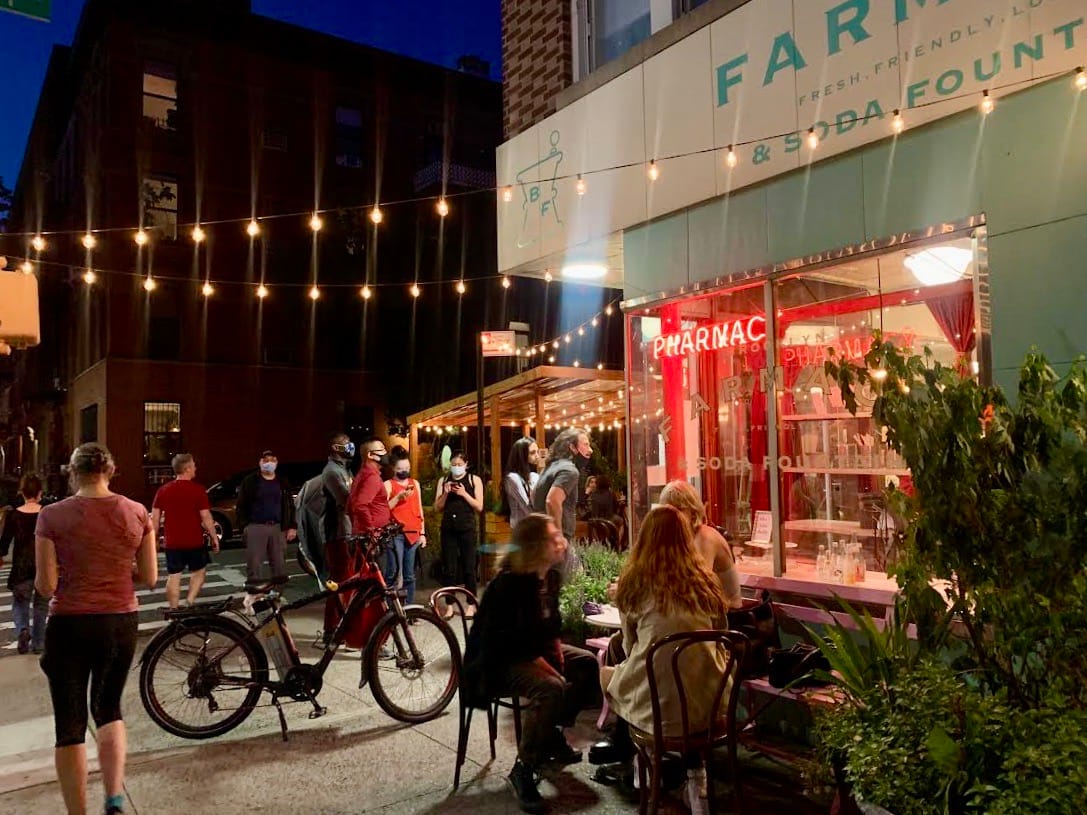
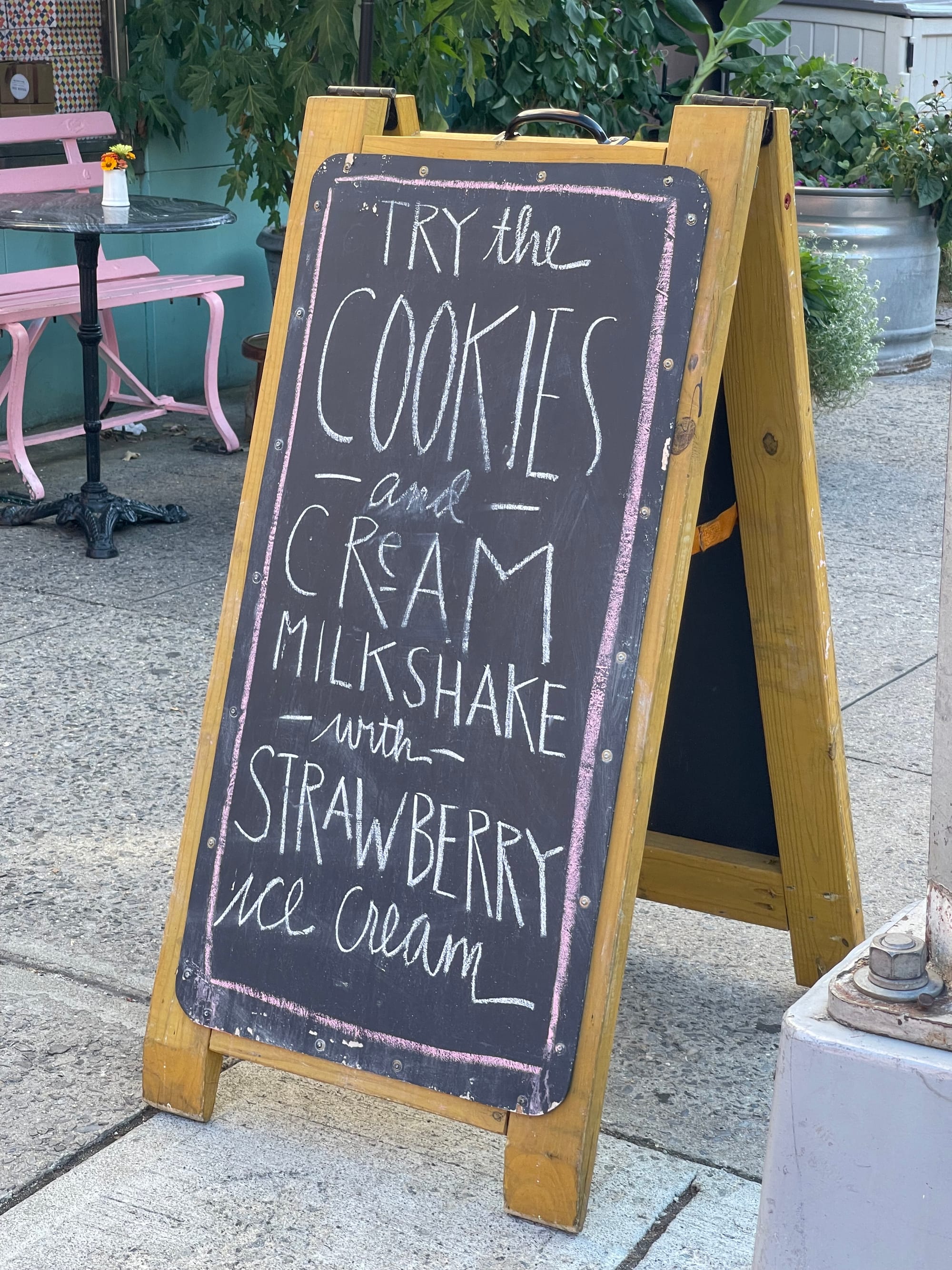
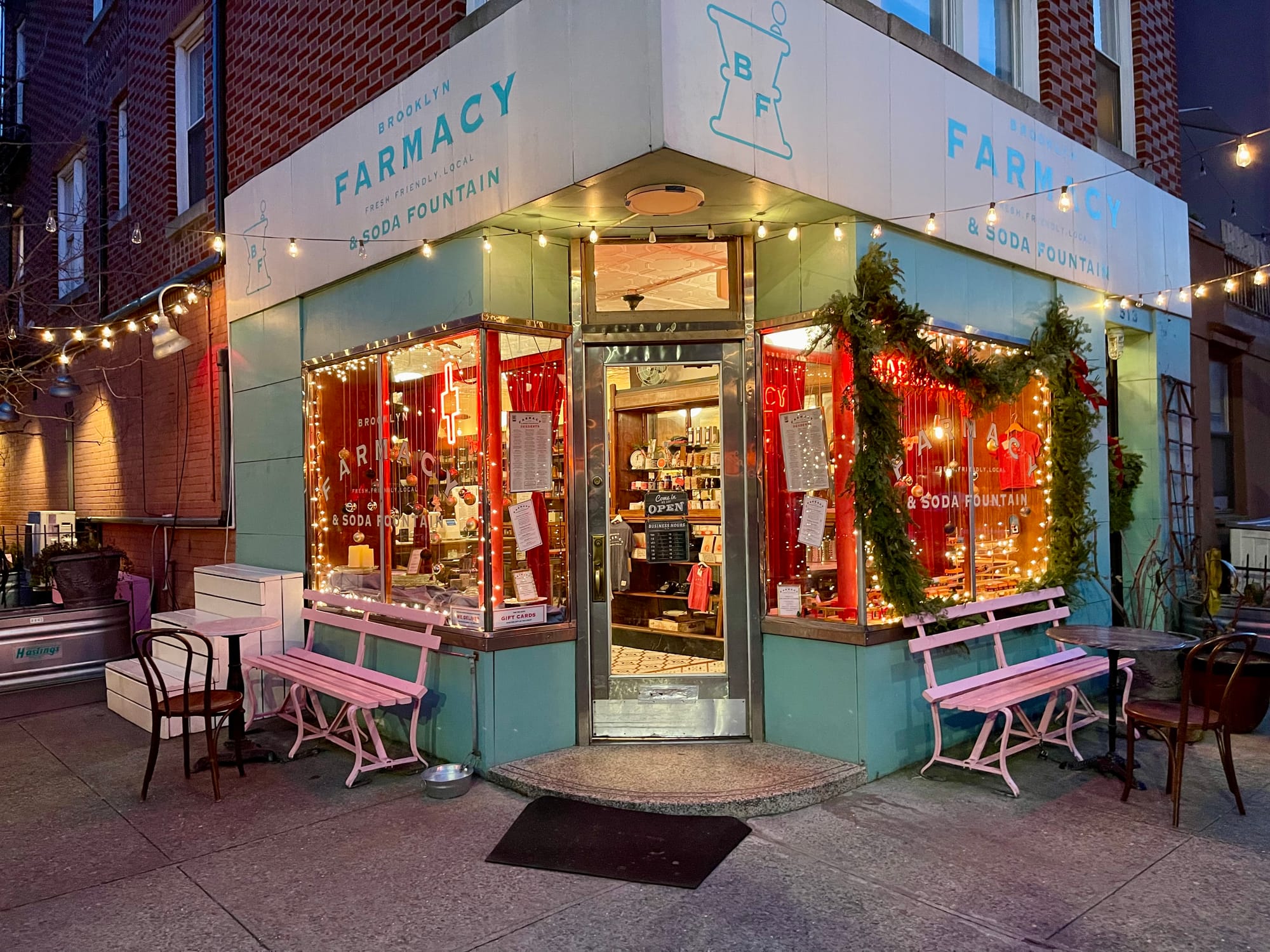
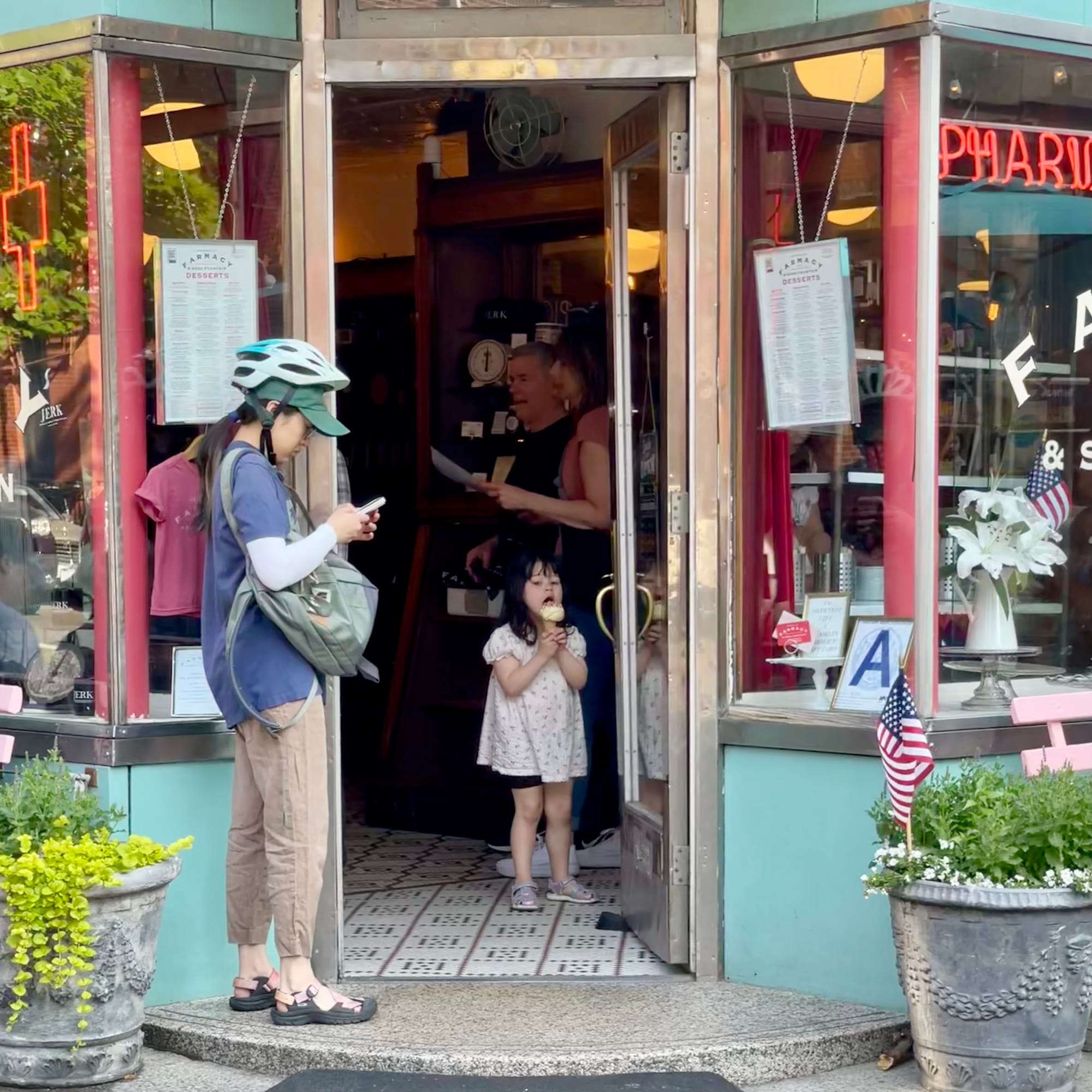
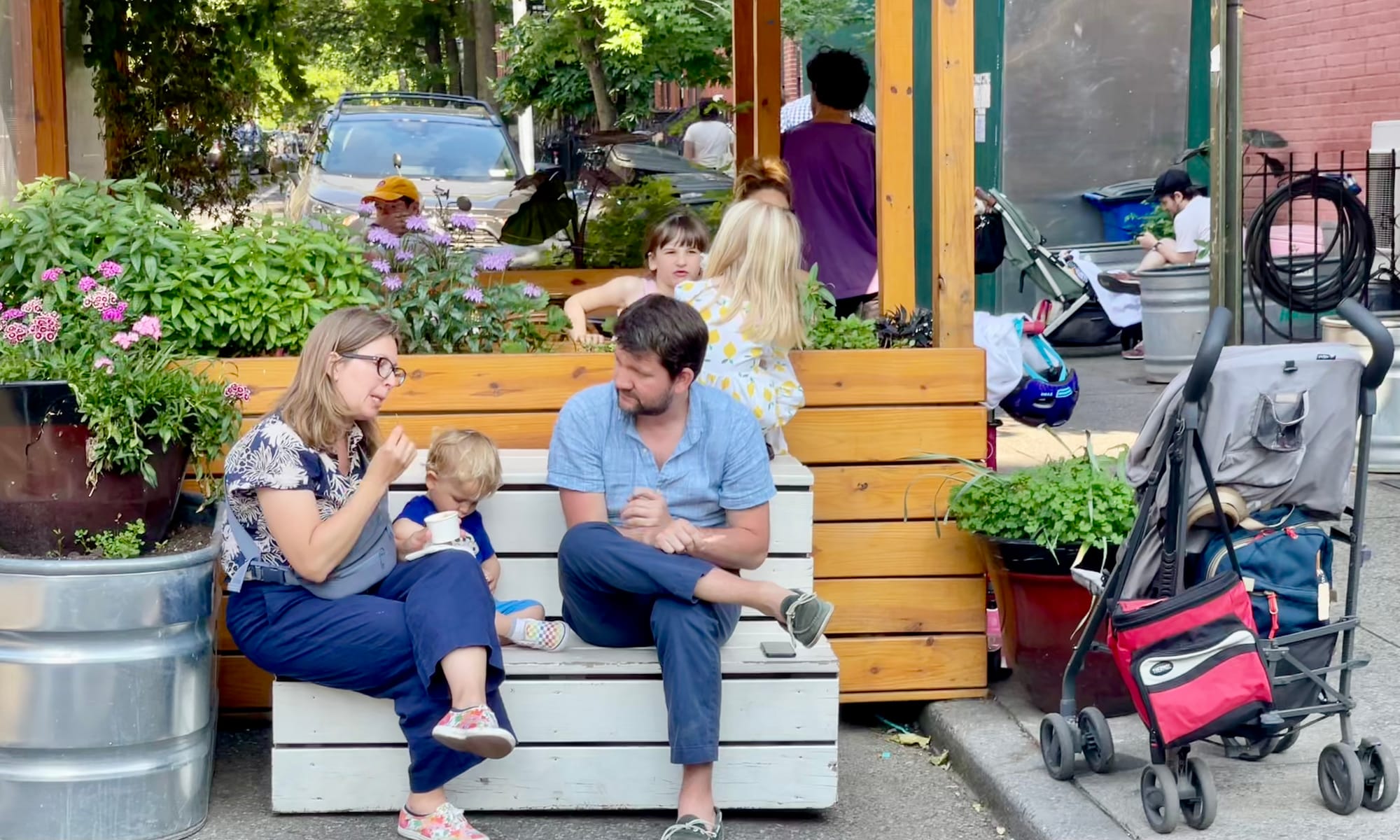
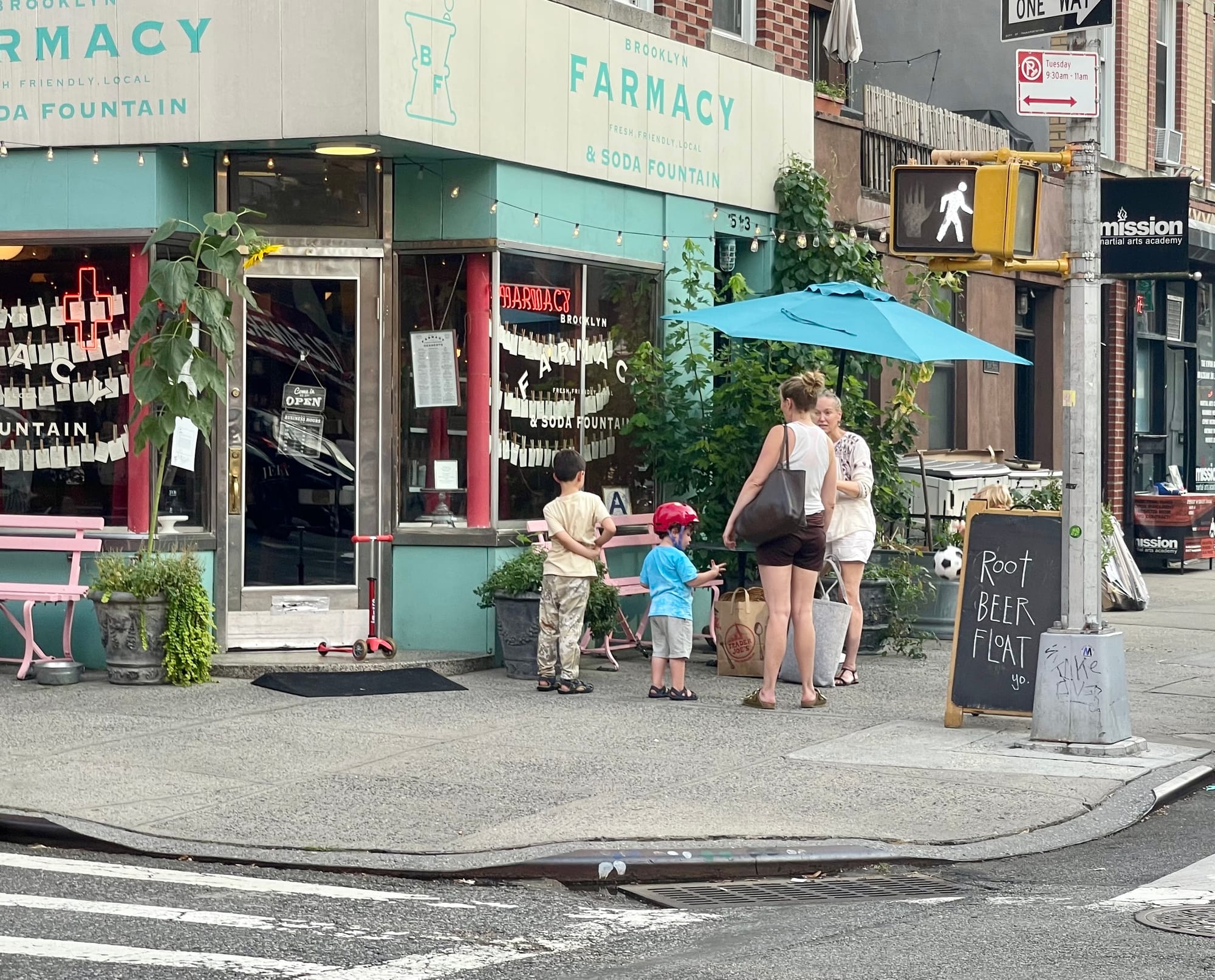

MozzLab
Across the street, a relative newcomer, MozzLab, has created another public gathering place, competing to make this one of the most social intersections around. Both corners provide seating that is available for anyone, day and night, open or not. Both provide food, but are not cafés and have no table service. They are places where people from the neighborhood love to gather and connect in a peaceful environment.
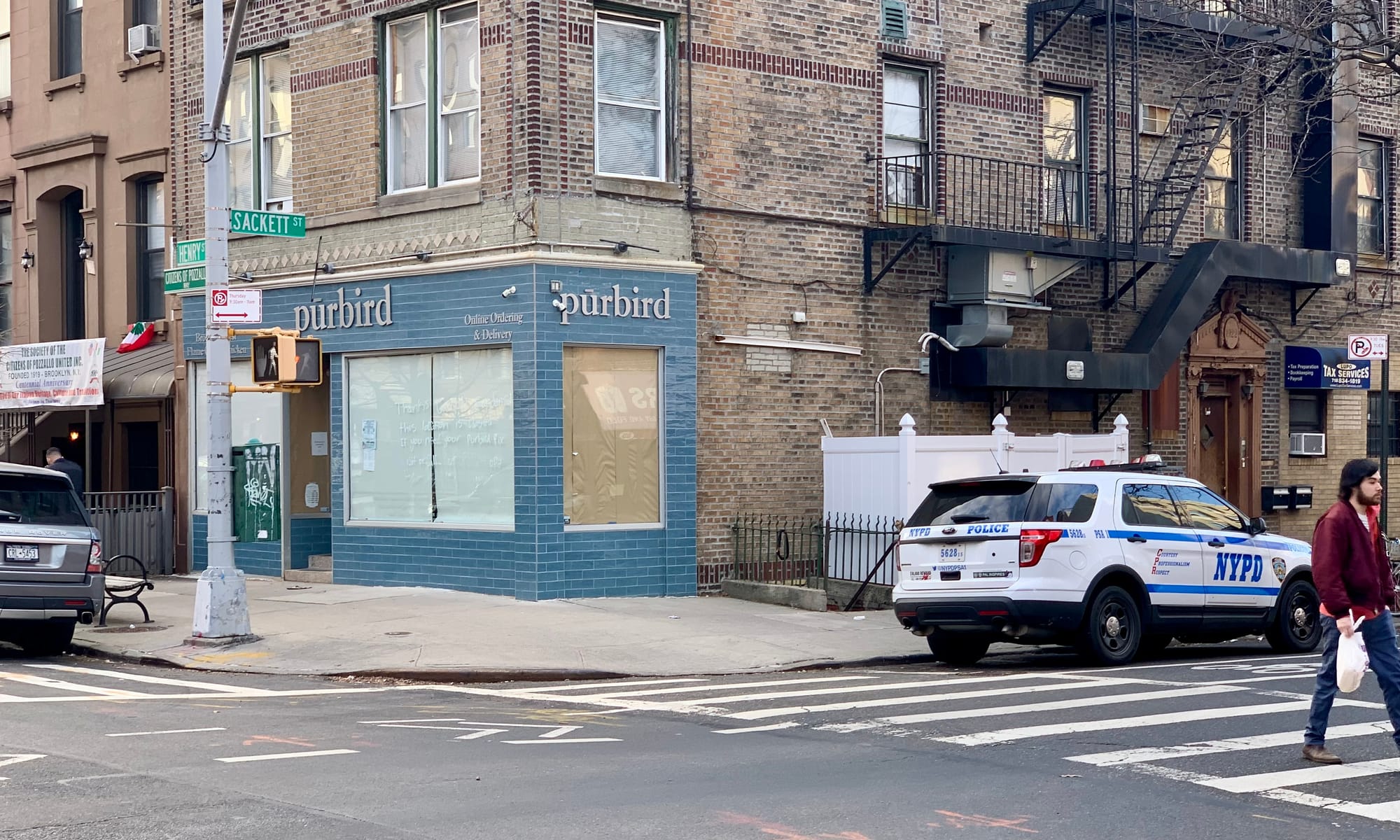
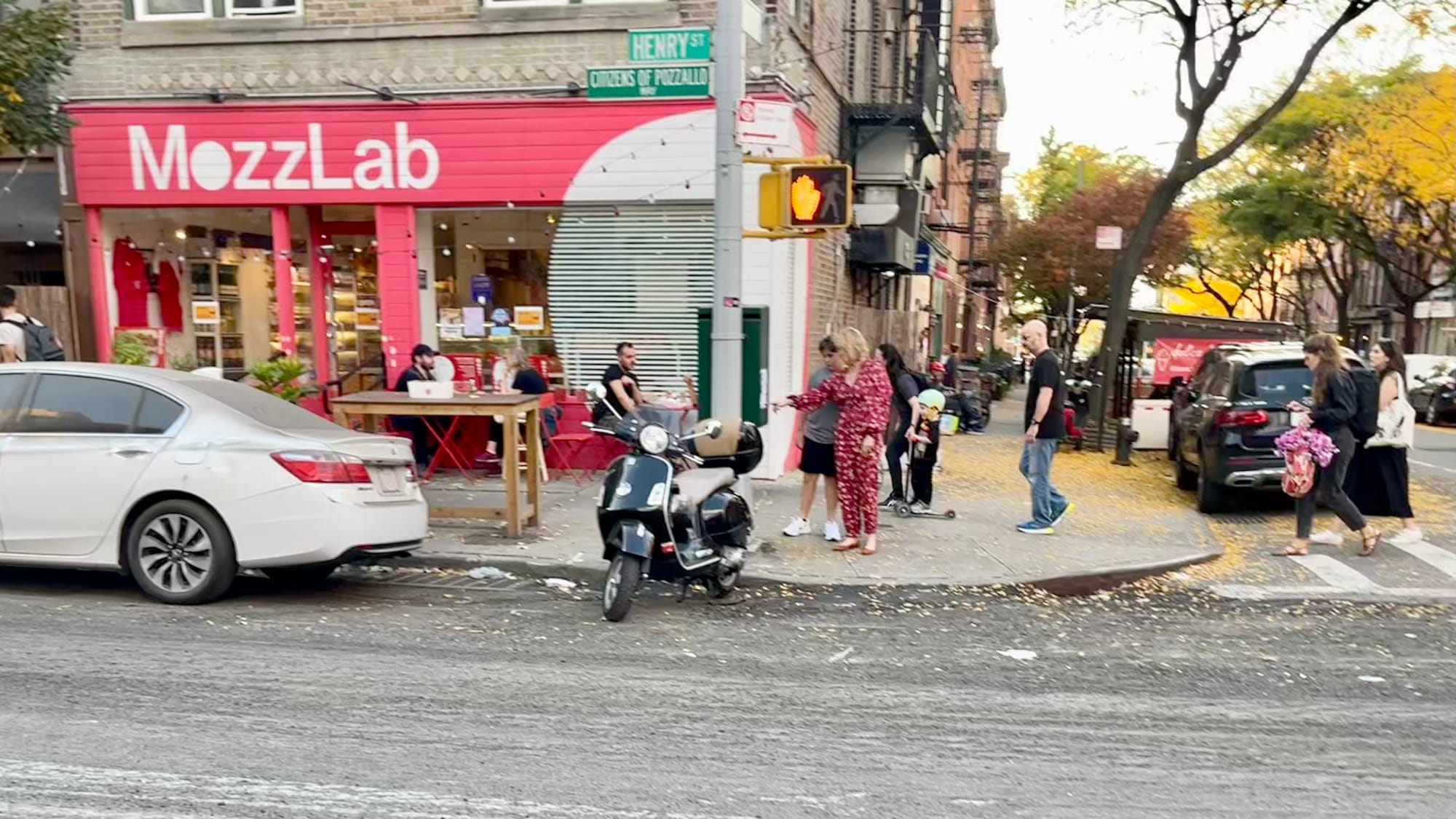
The initial attempt for the corner failed...MozzLab replaced it
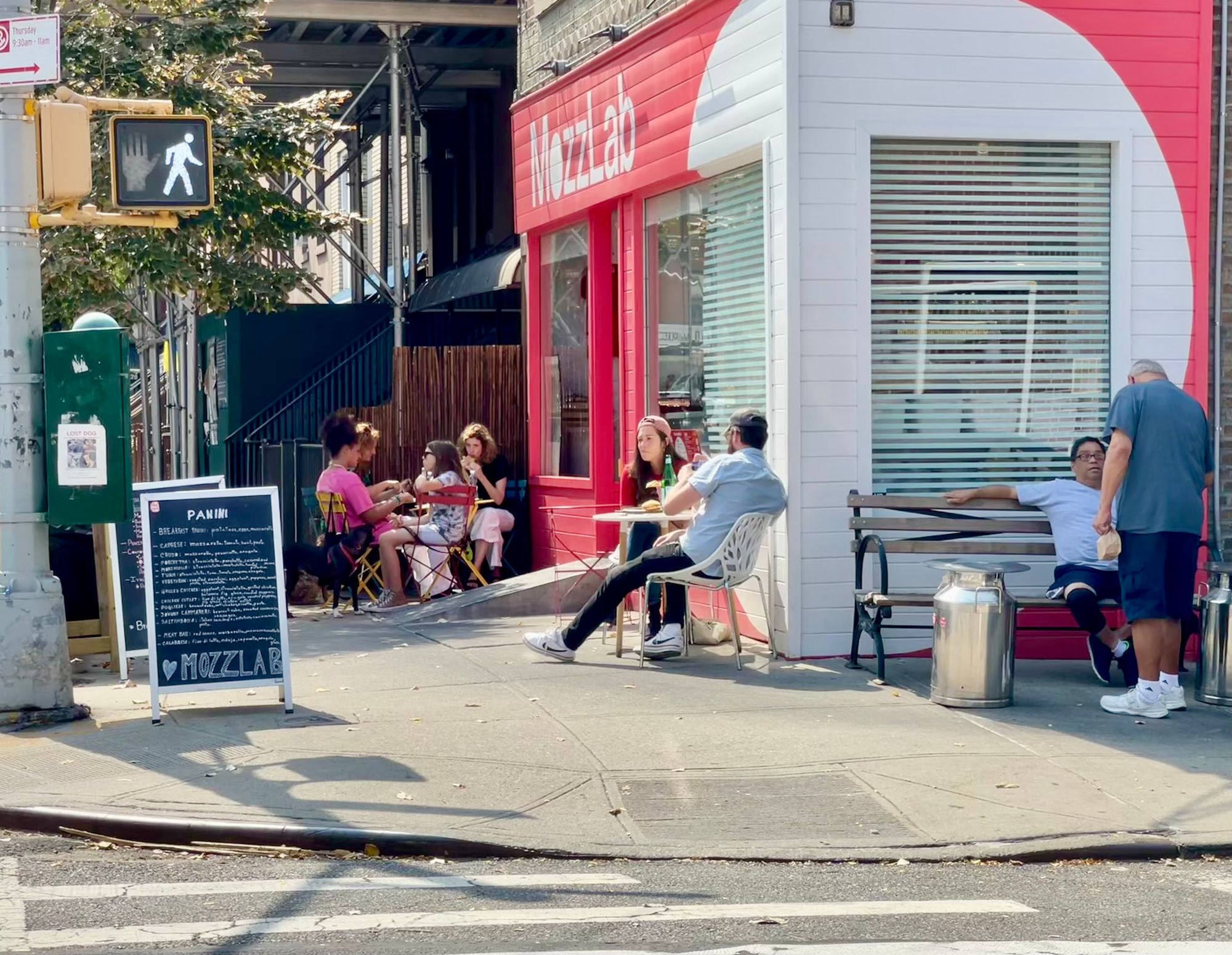
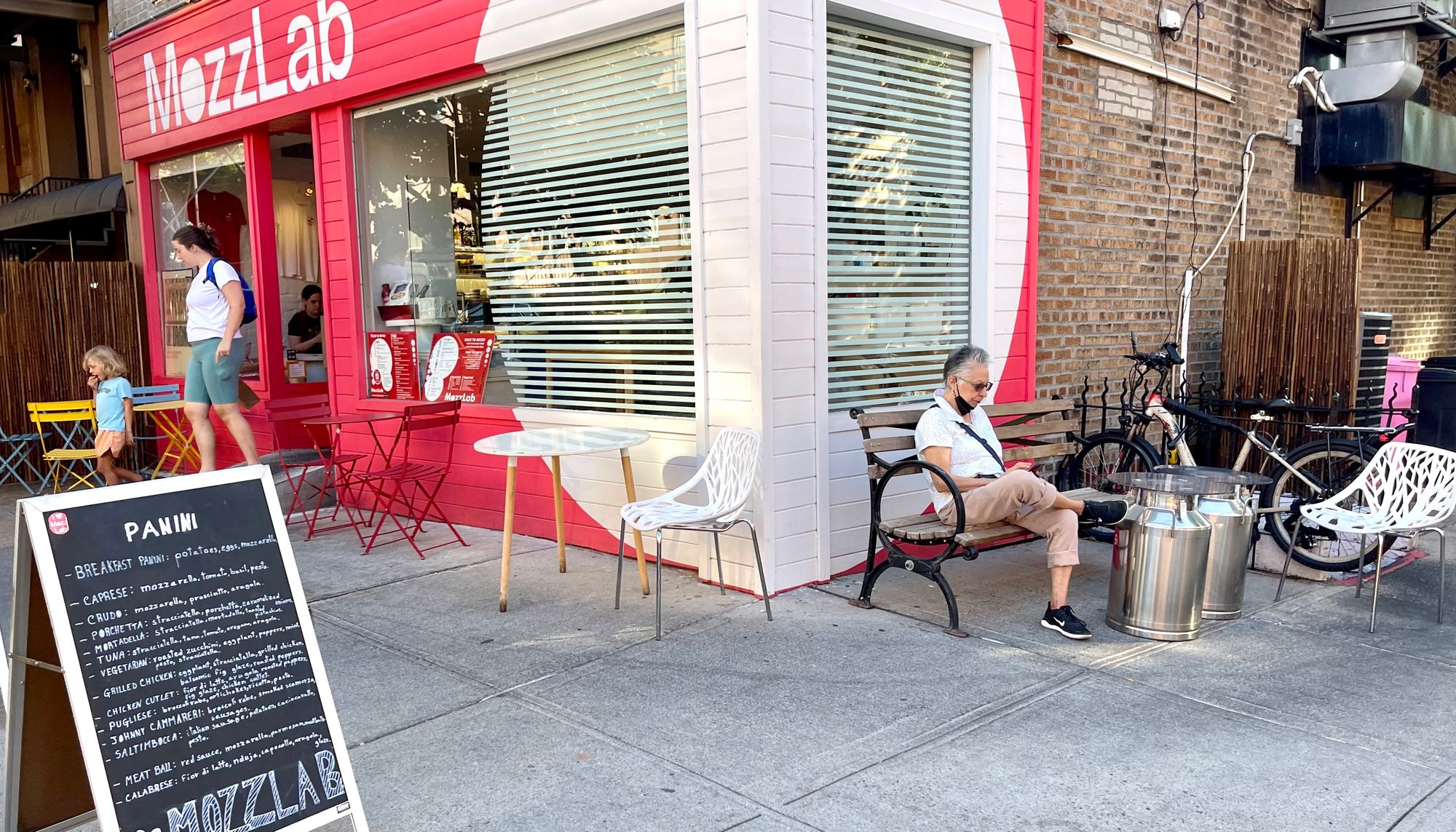
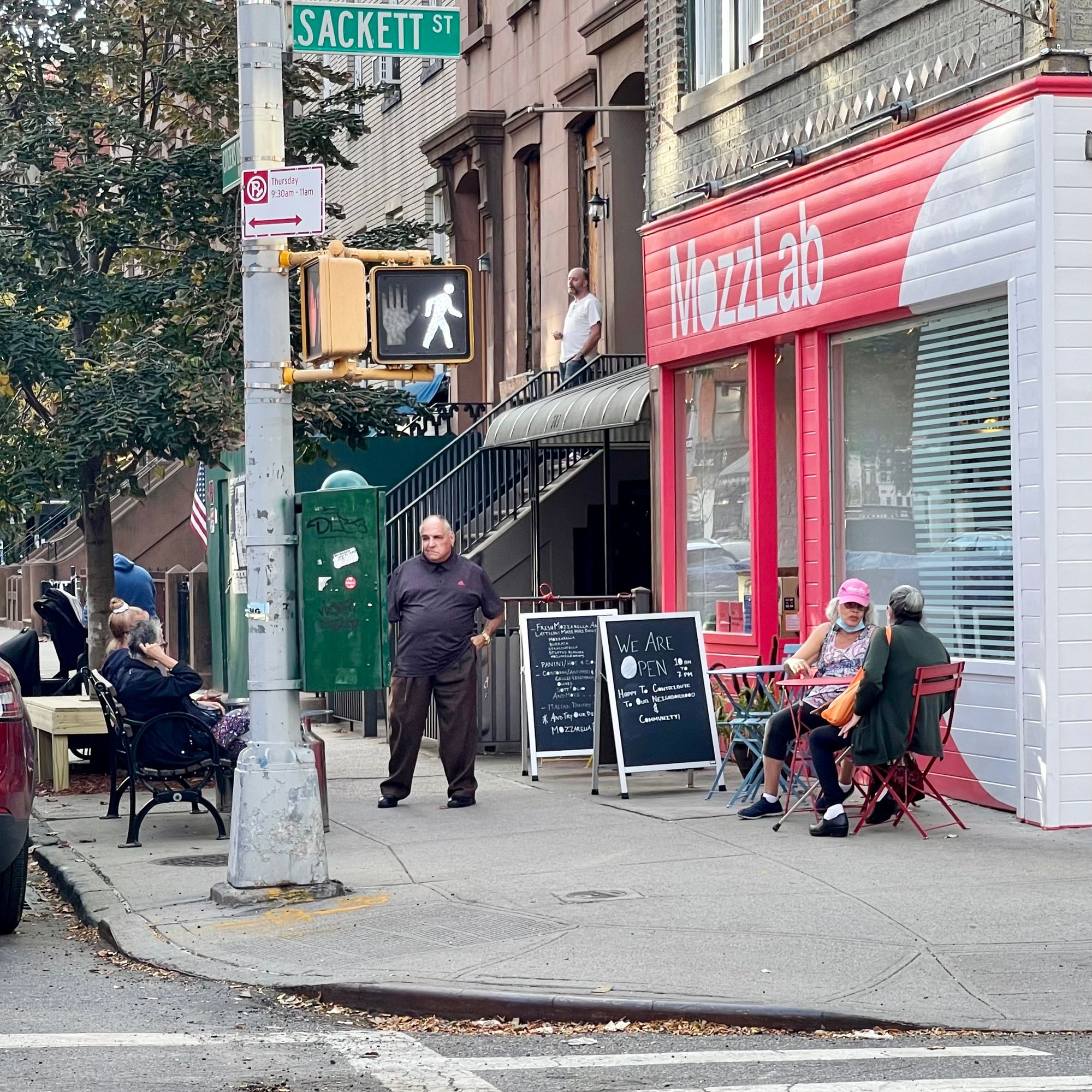
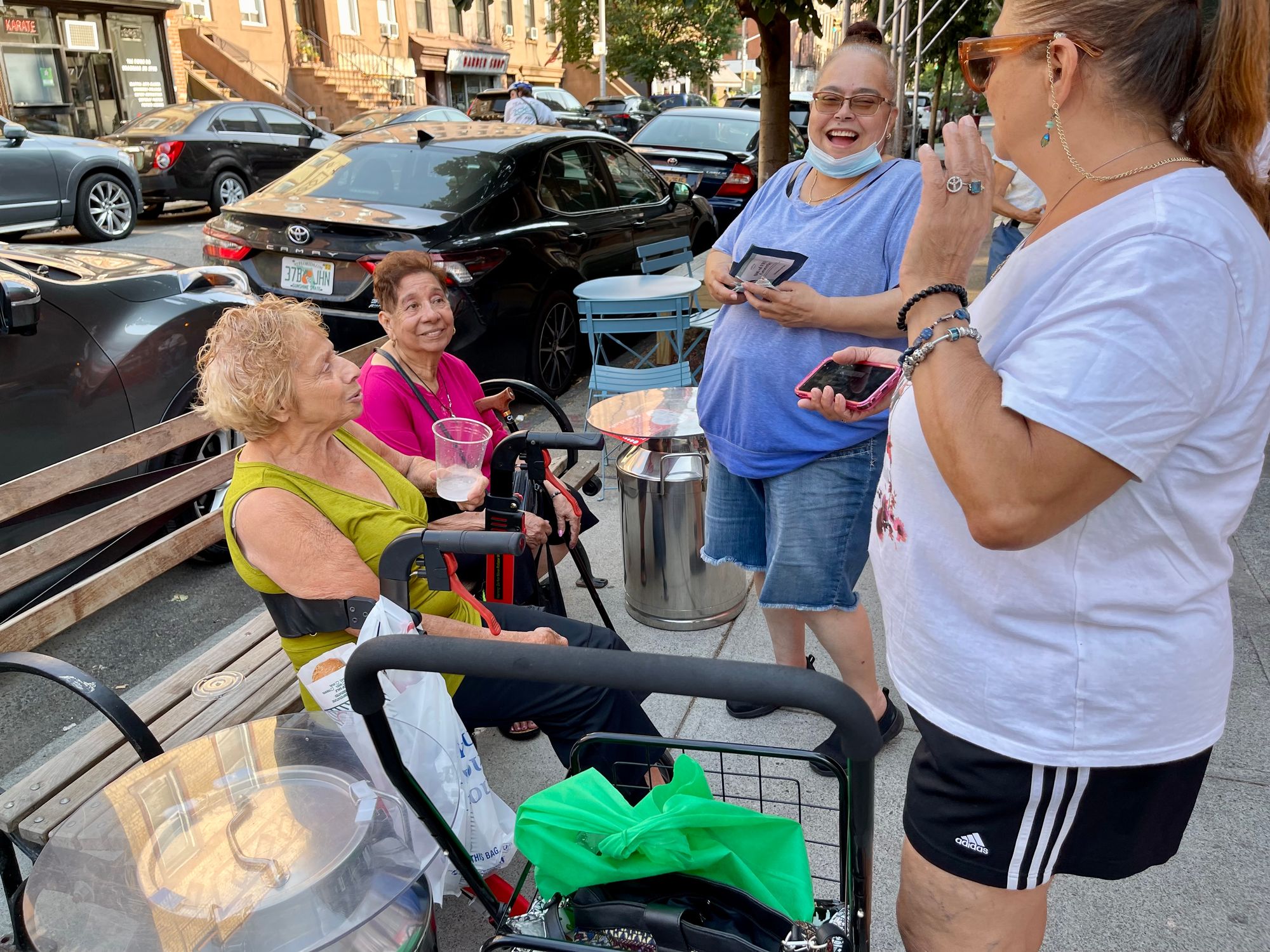
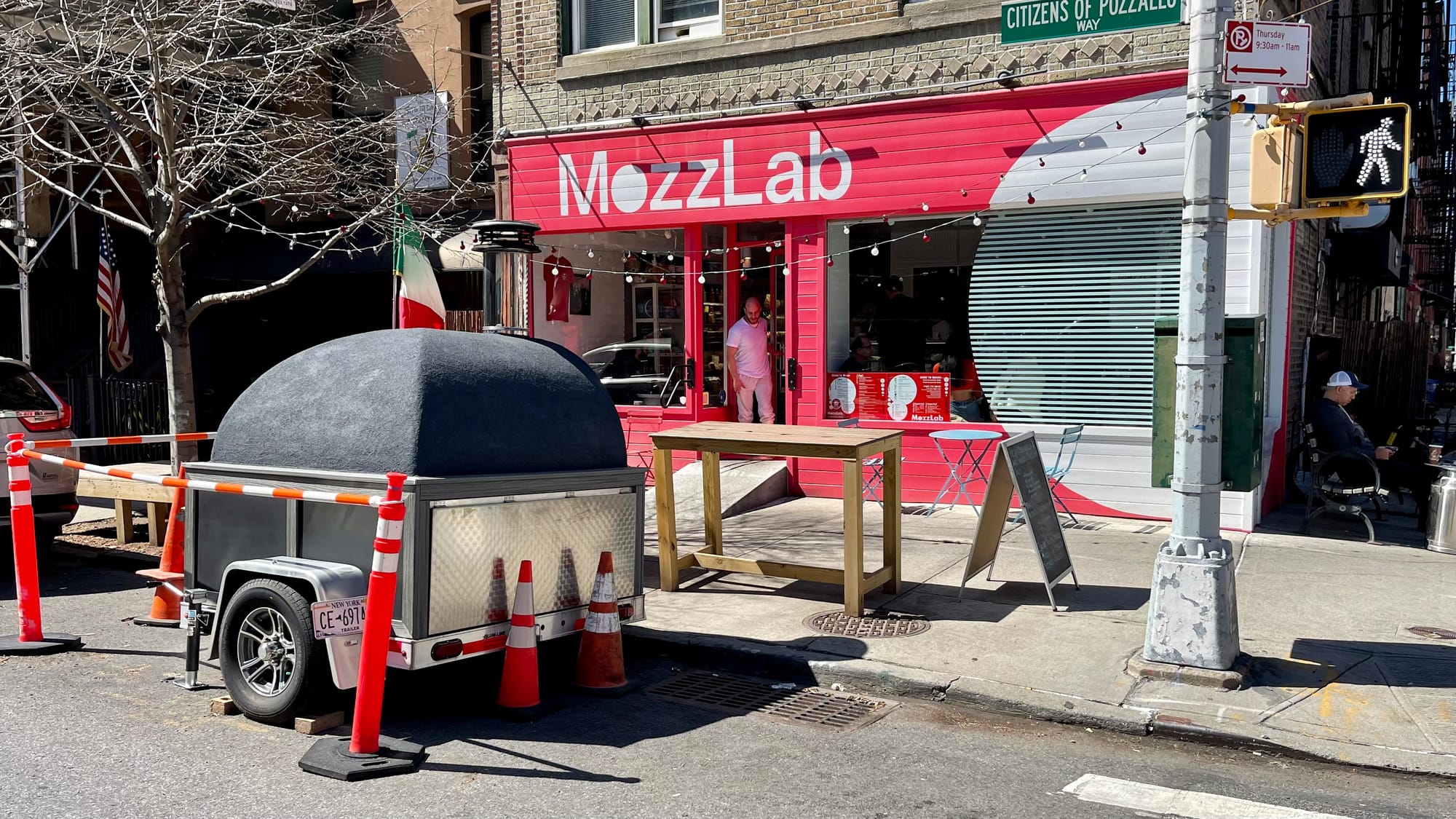
The third corner of this intersection and its local "security."
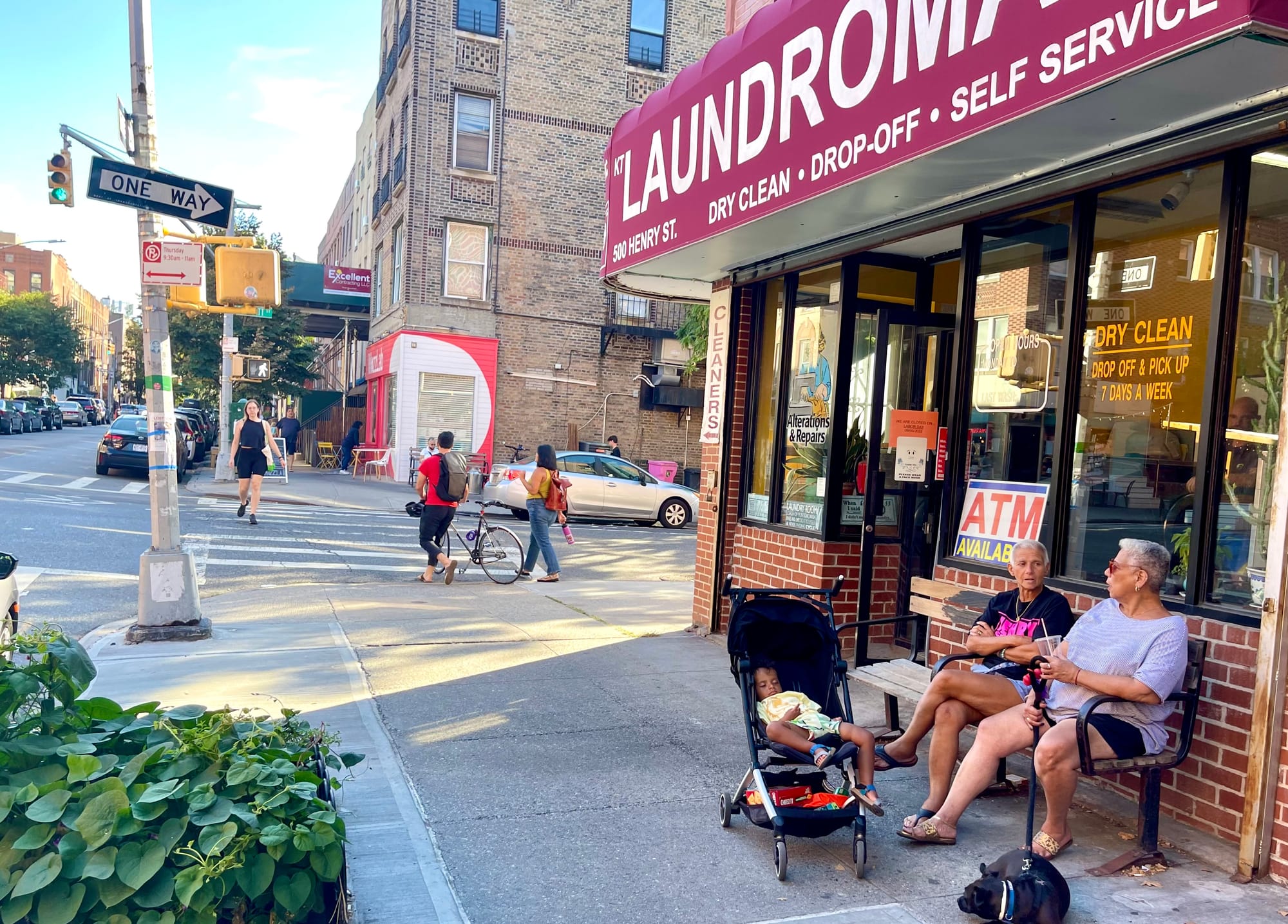
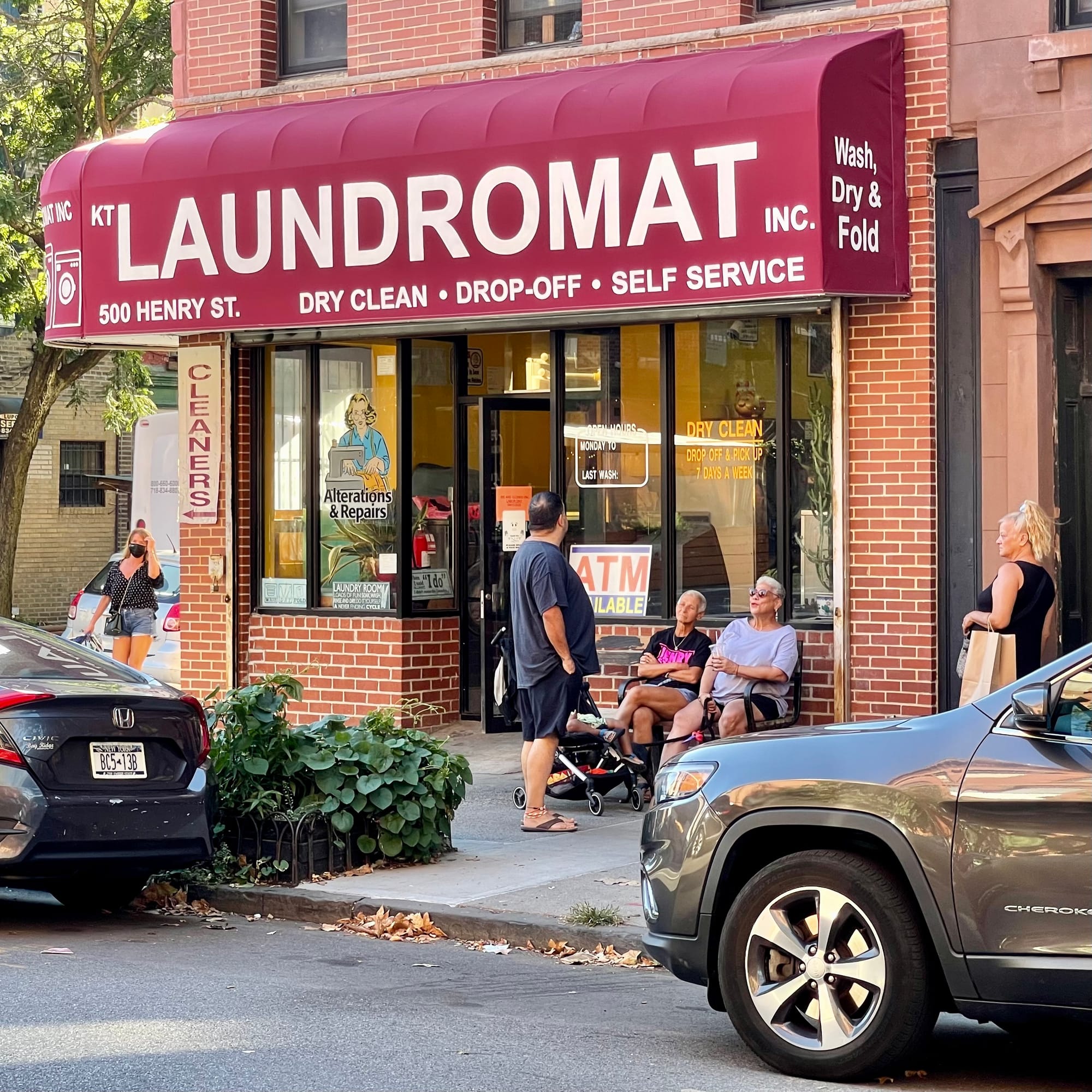
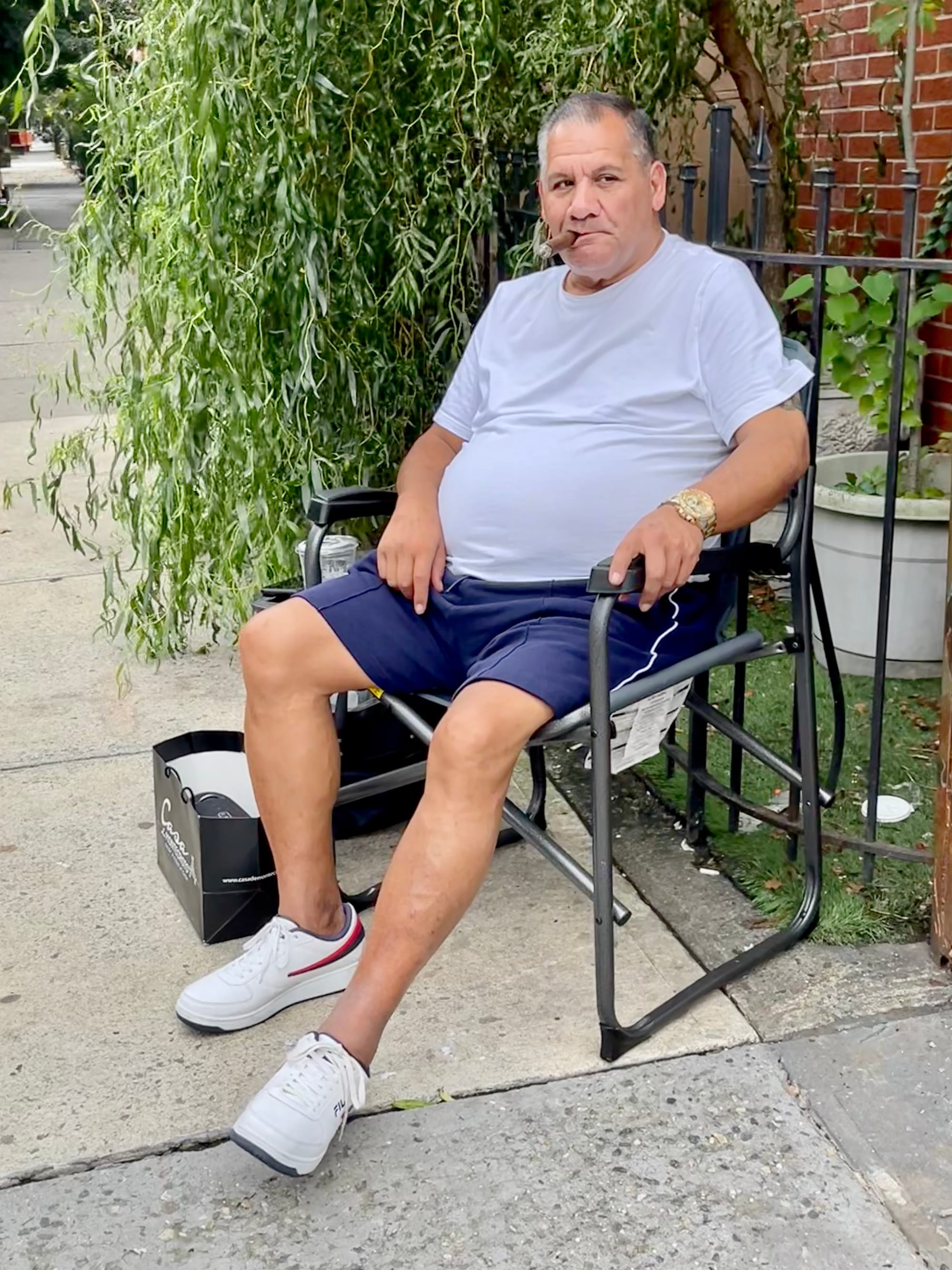
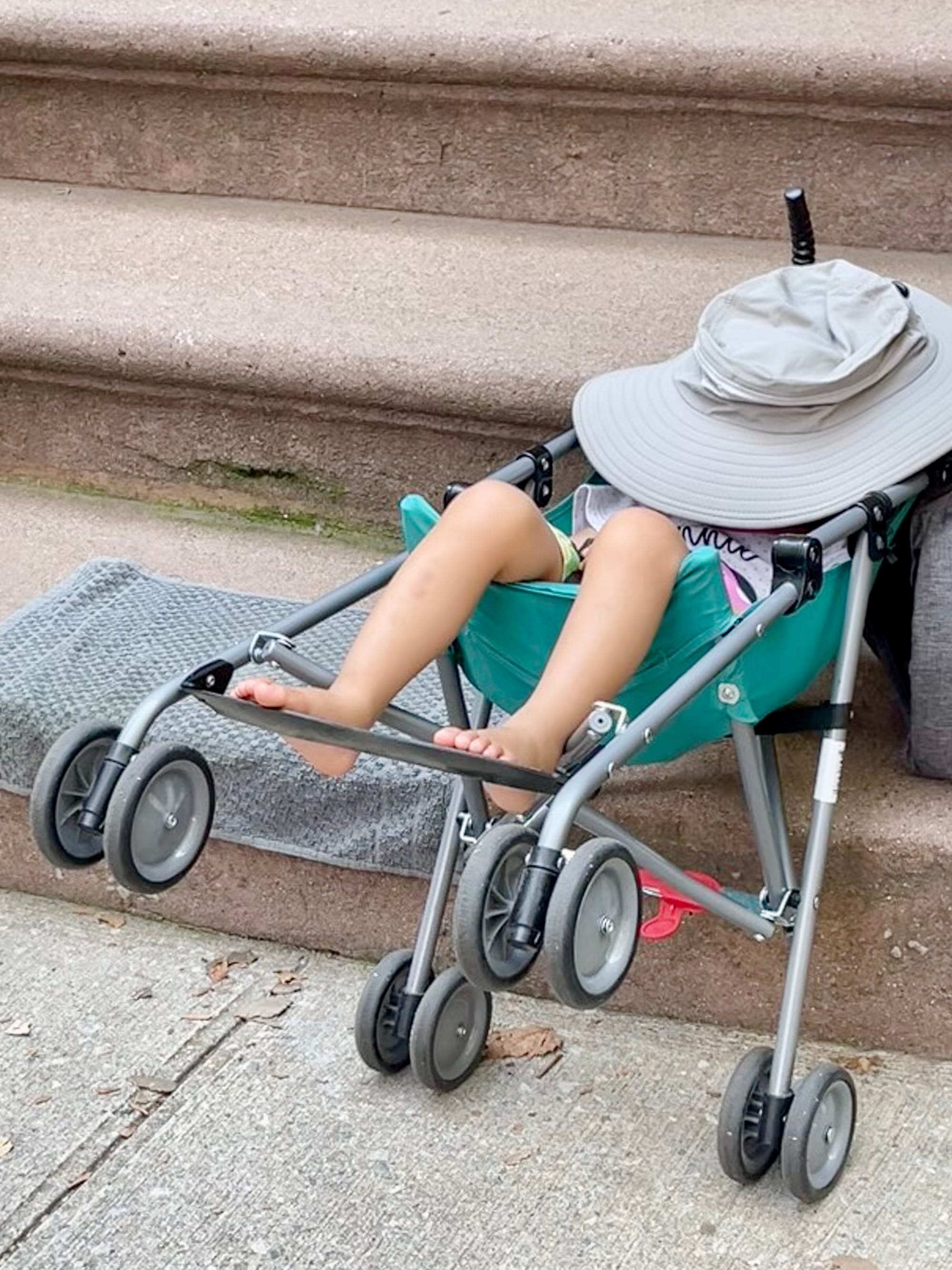
More Thriving Hubs that are Gone or Will Very Soon Be Lost
Poppy's Gone!
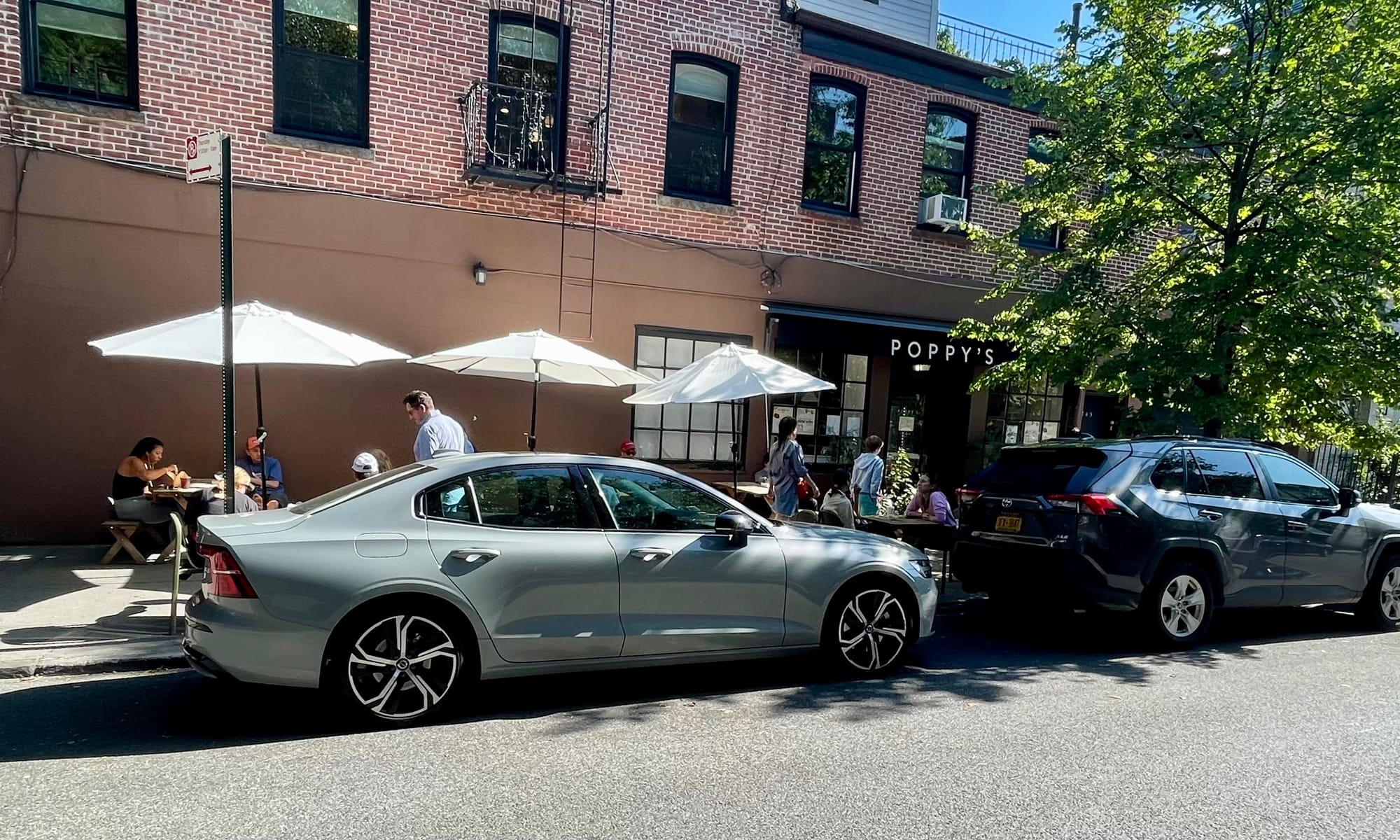


"Poppy's" on a crosstown street
A very popular takeout restaurant nearby is another important gathering place for the more trendy crowd that often come round with children and pets. The best aspect of this area is that kids can roam free because the dining sheds create a barrier between them and the cars, turning the sidewalk into a safe corridor.
With the new regulations, they will be forced to take down this dining shed and are reluctantly soon going to remove it. This will be a disaster for the community.

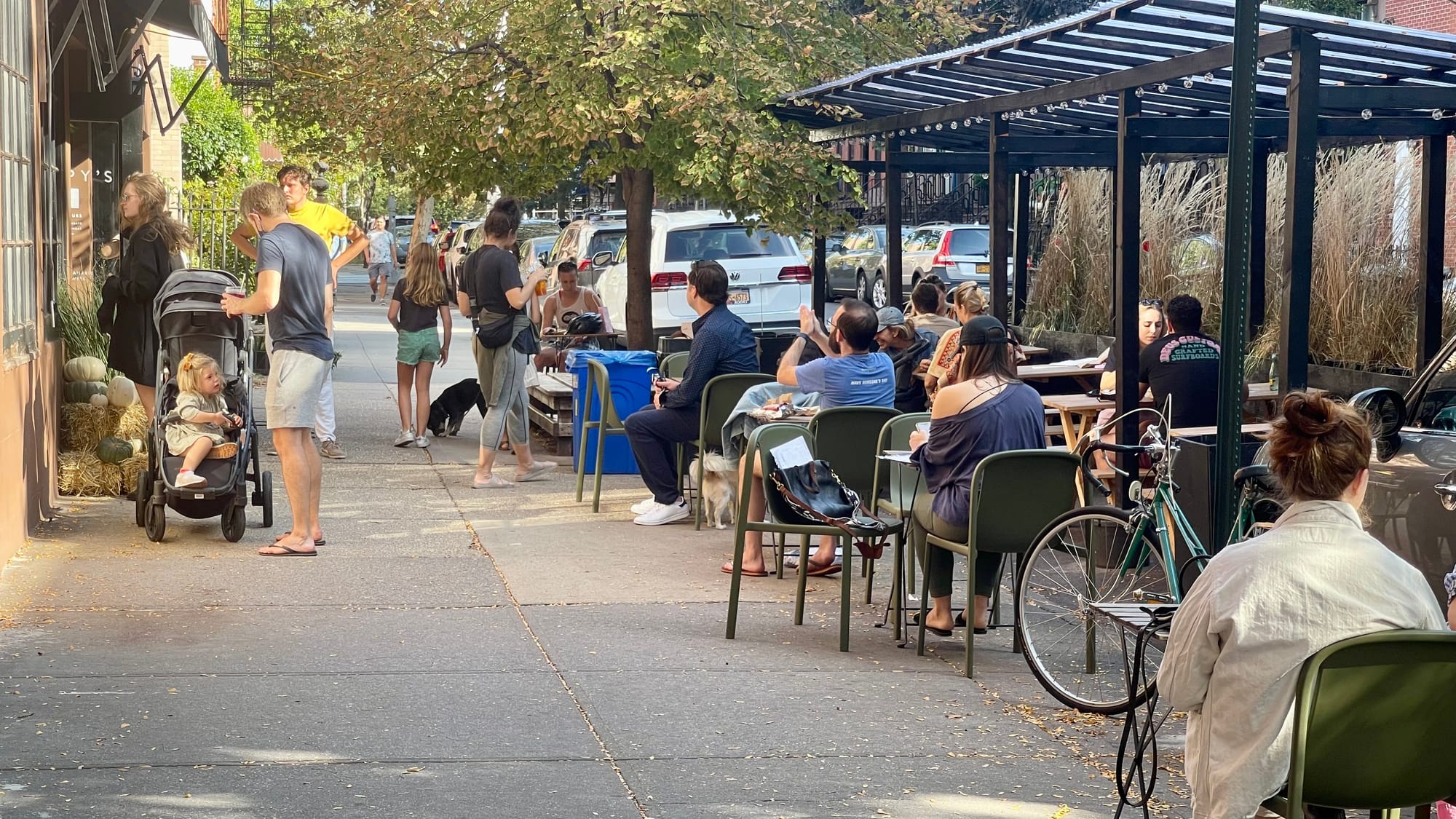
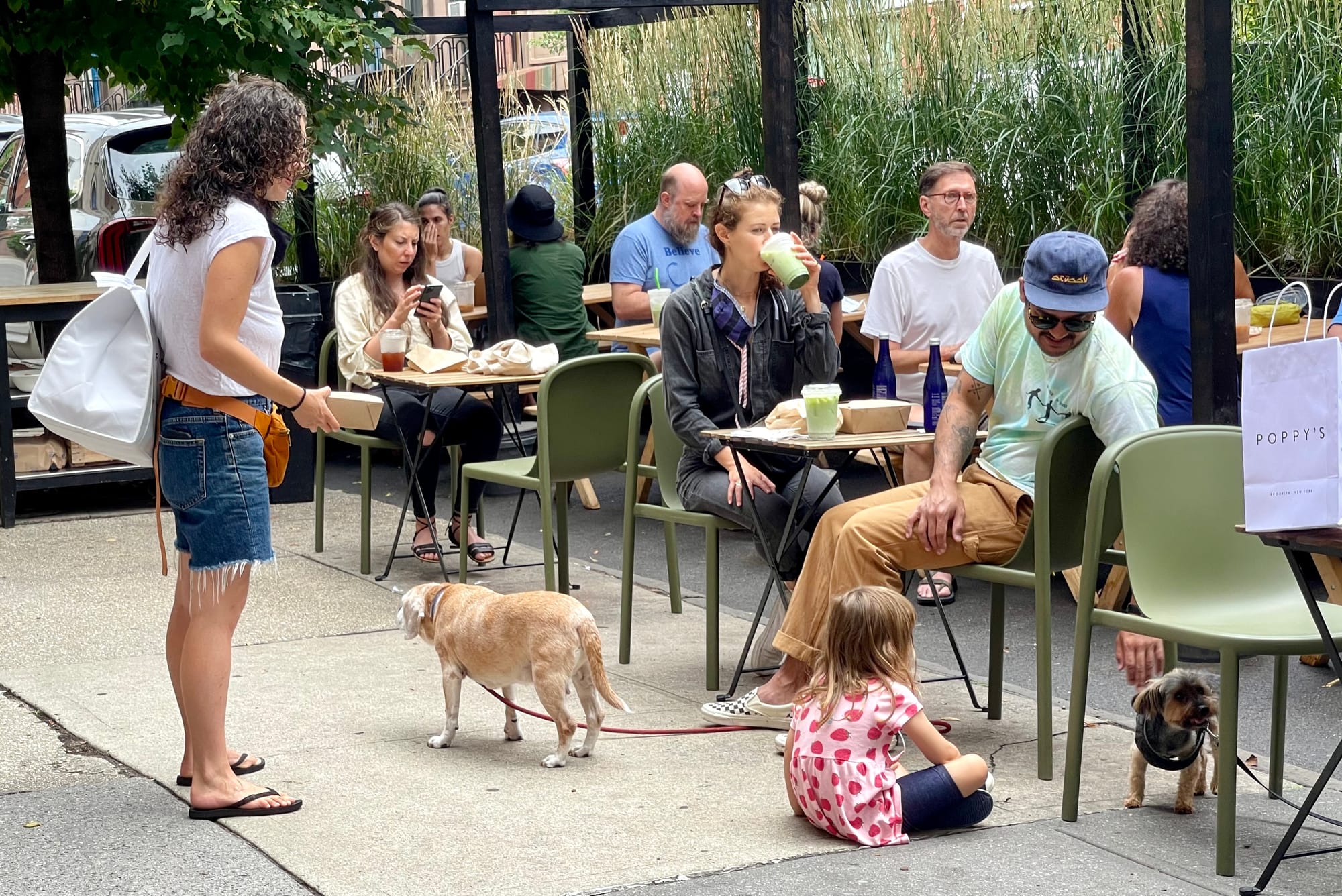
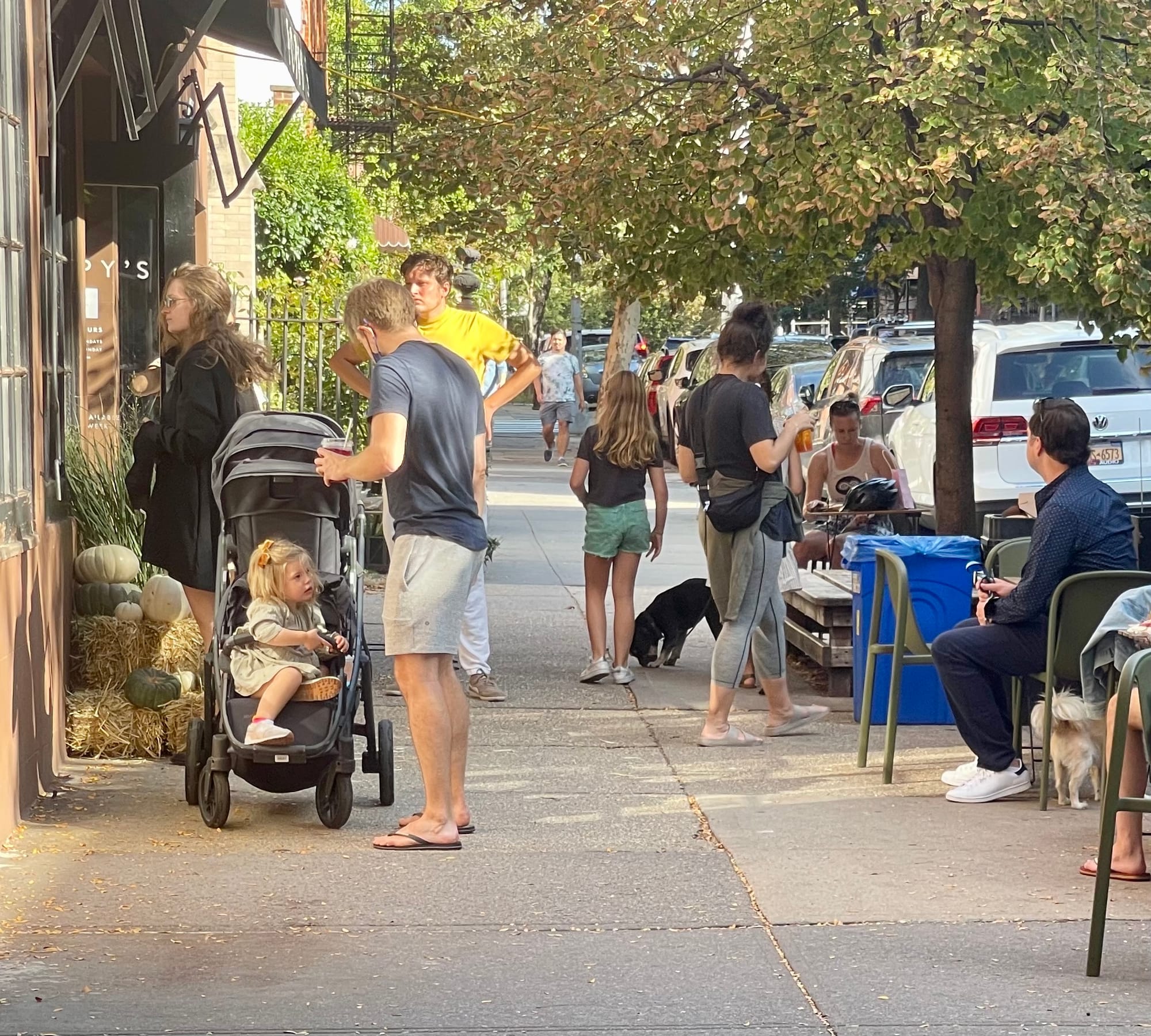
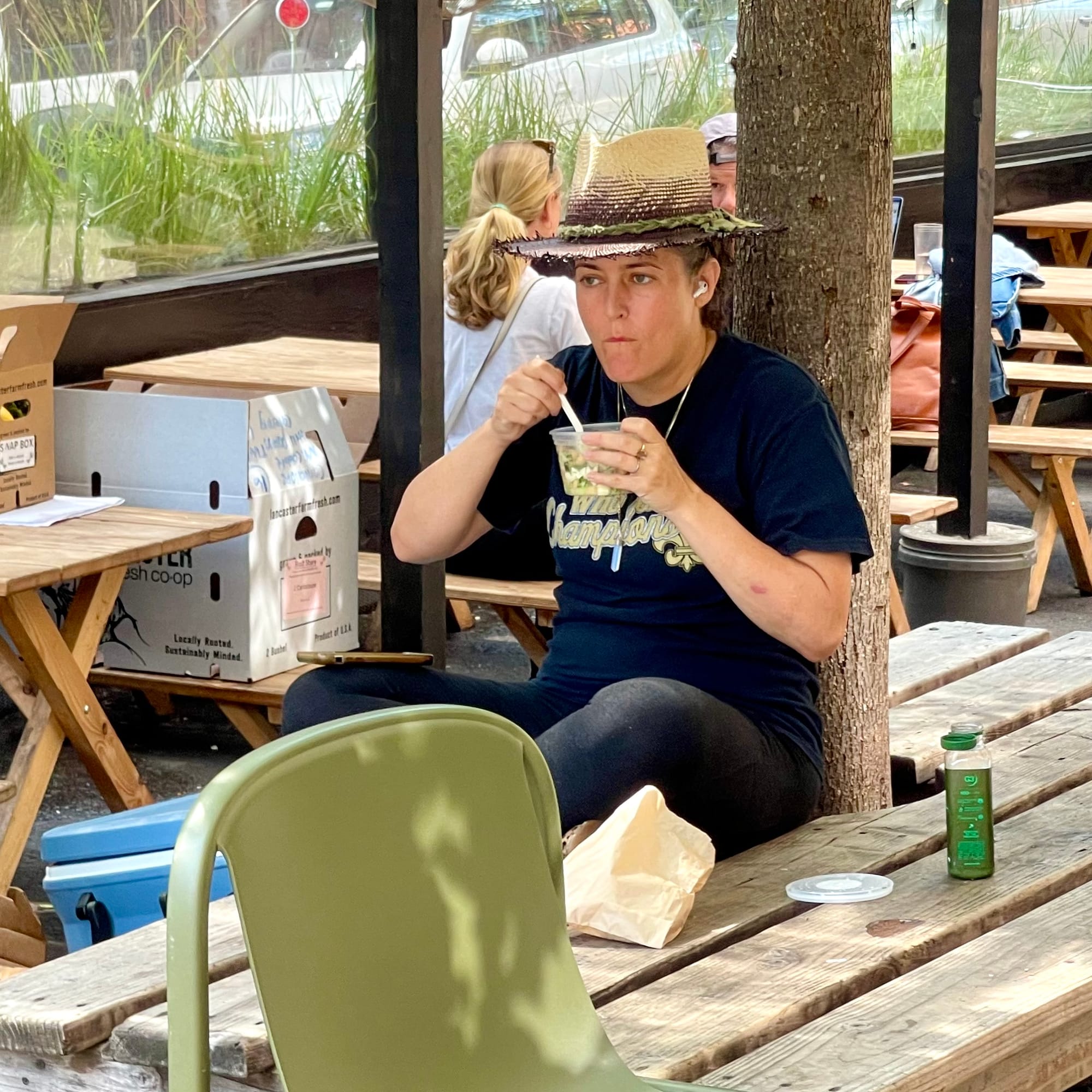
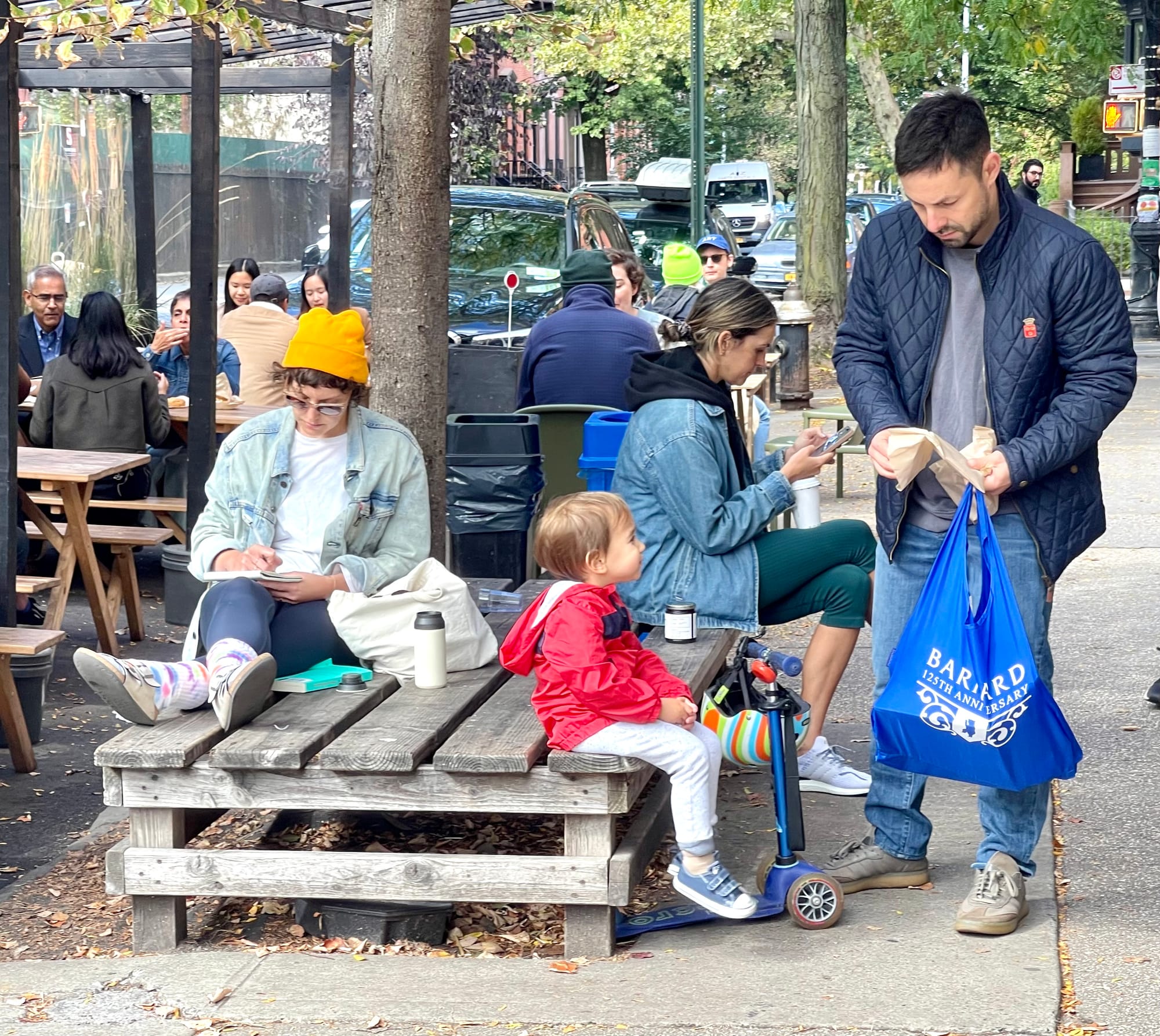
Court Street - full block activation
Back on Court Street, an entire block became a major destination with multiple businesses, four food offerings/restaurants including the popular Sociale, a karate studio, a bodega, and a bus stop. This is the place to be, but it will soon be gone.

These photos speak for themselves. This corner, between DeGraw and Sacket streets instantly transformed from a quiet intersection of pedestrians crossing to a magnetic meeting point.
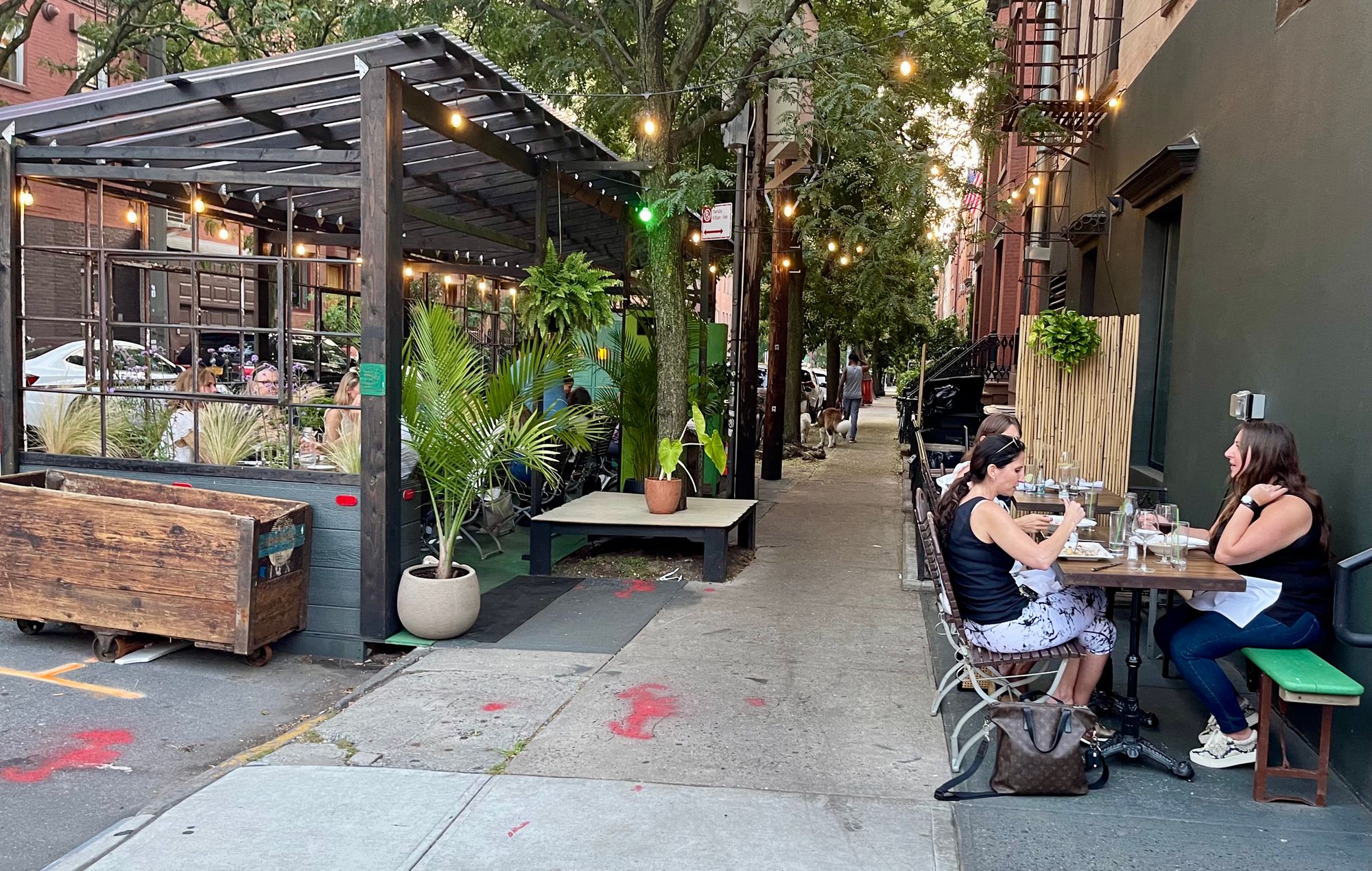
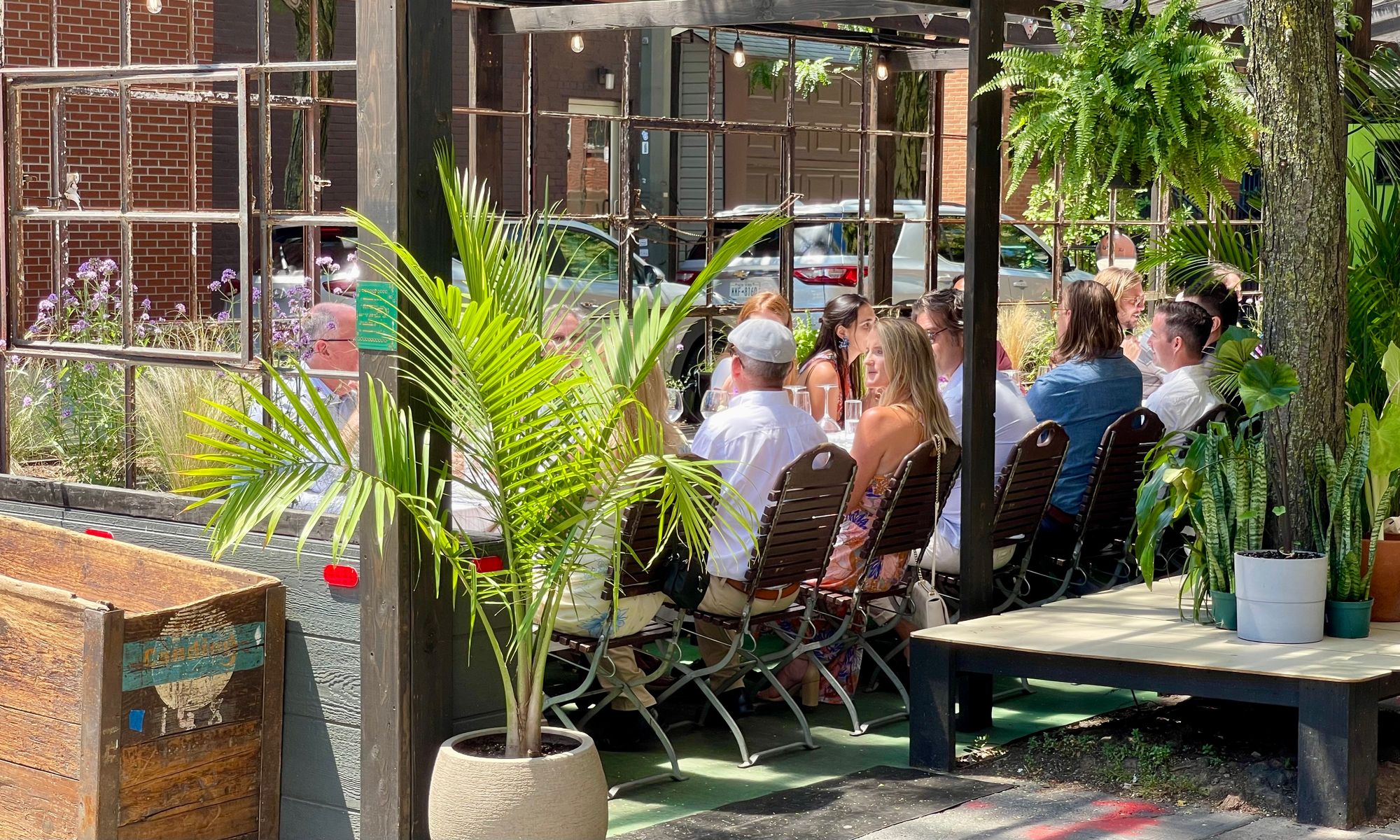
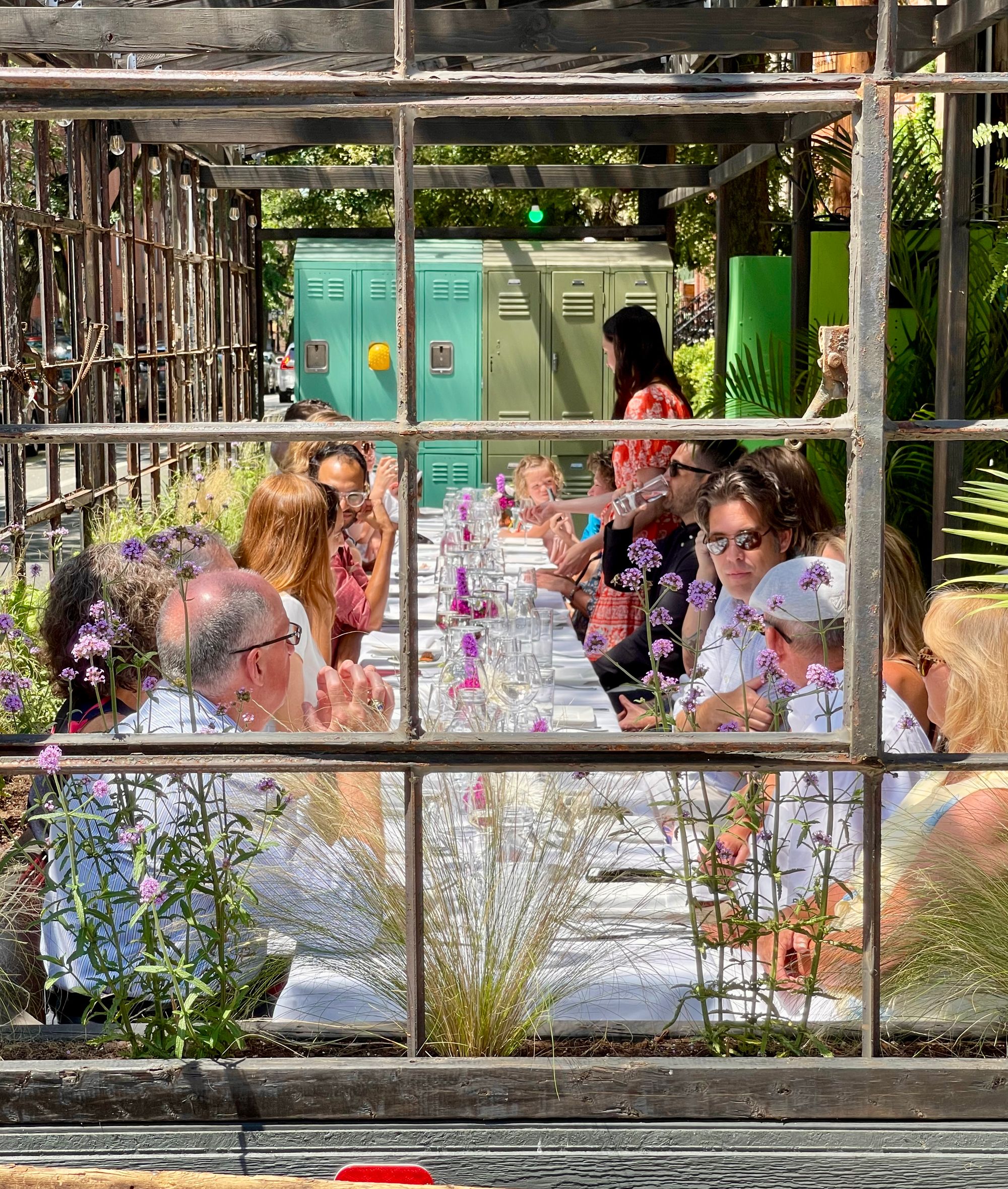
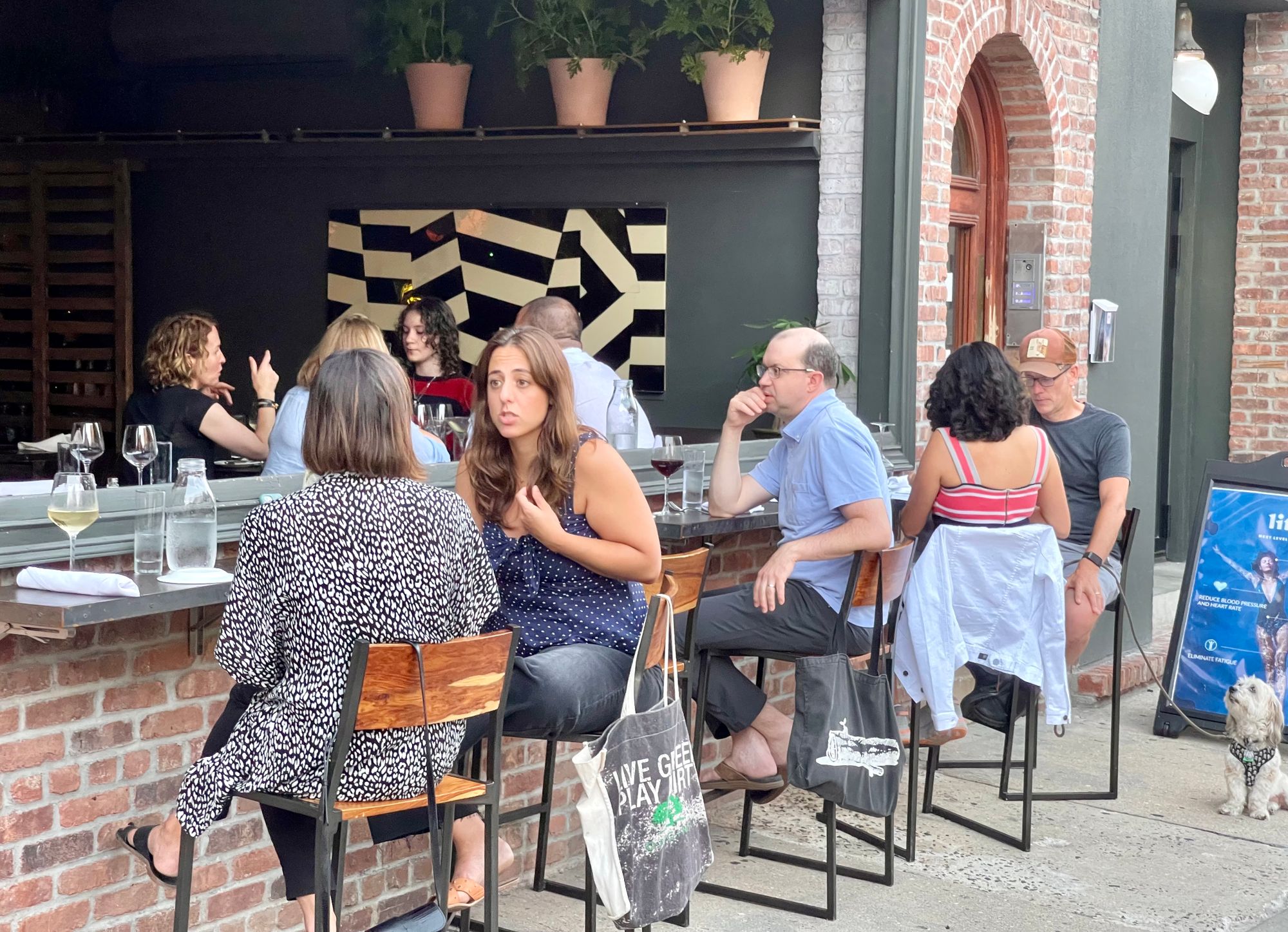
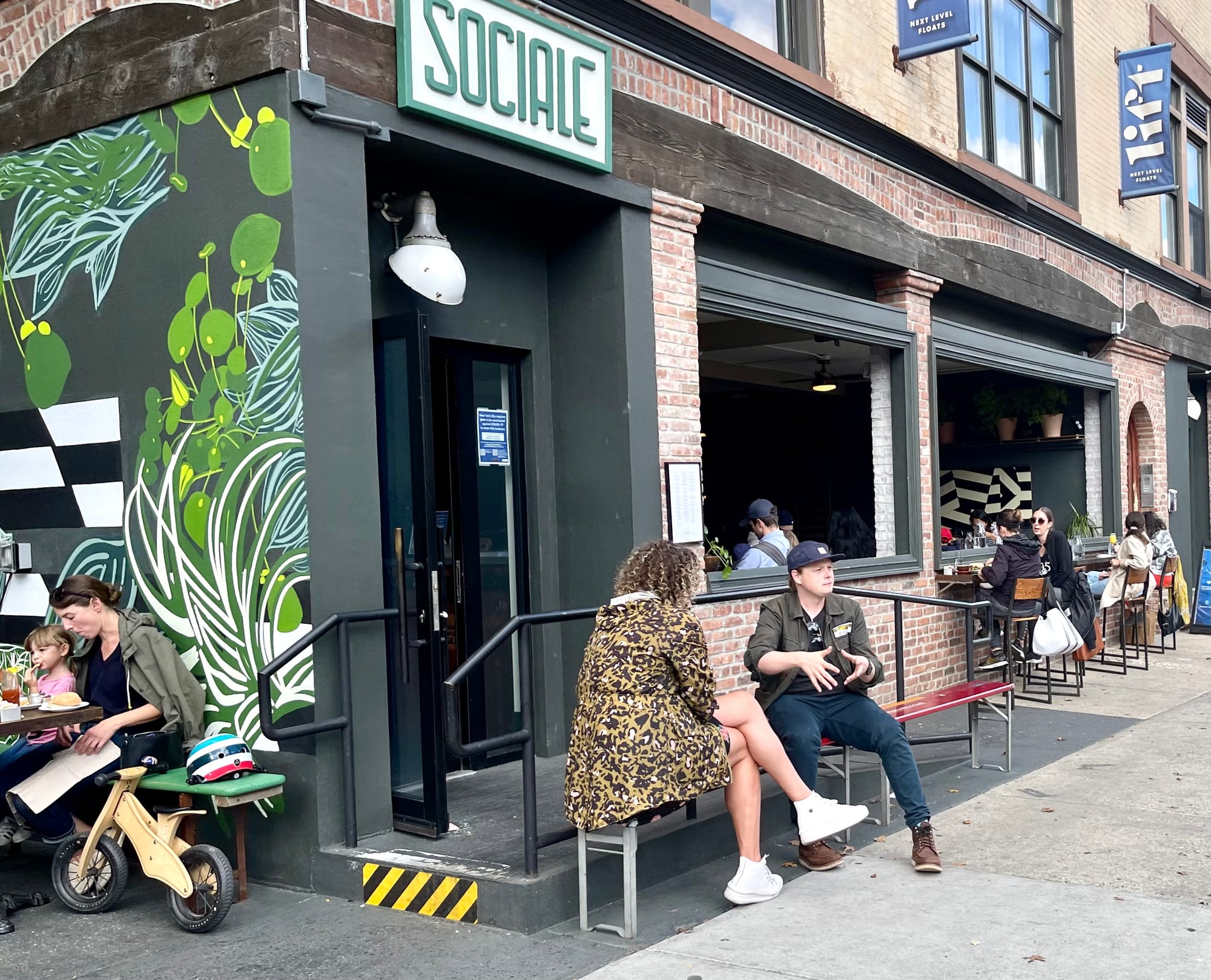
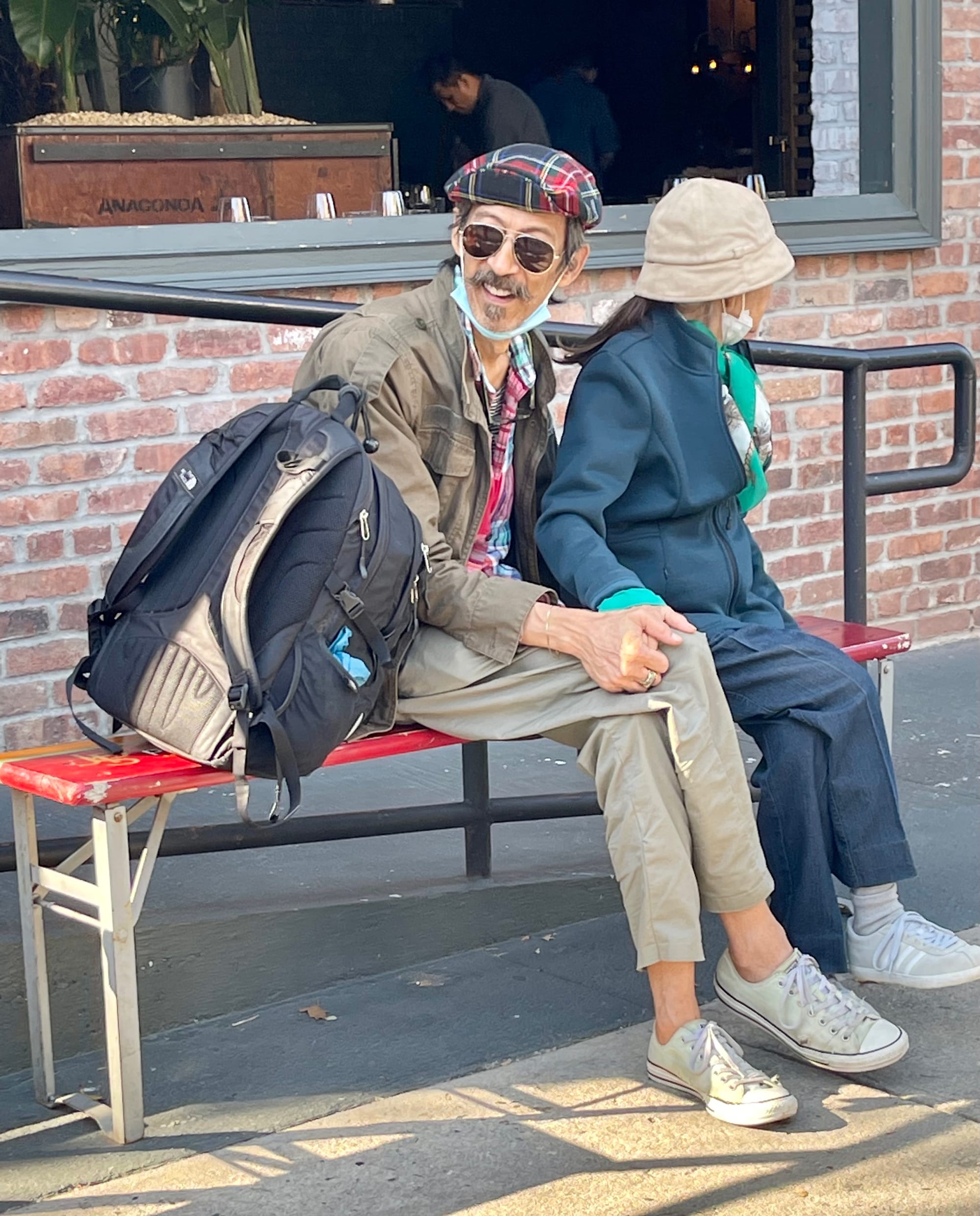
Bus stop
The Entire Mid Block Hub is now GONE
Gradually, a variety of neighboring cafés pulled their offerings outside, creating a unified outdoor experience for the entire block, including children's classes that spilled onto the sidewalks with outdoor waiting spaces for parents. It was community building at its best.
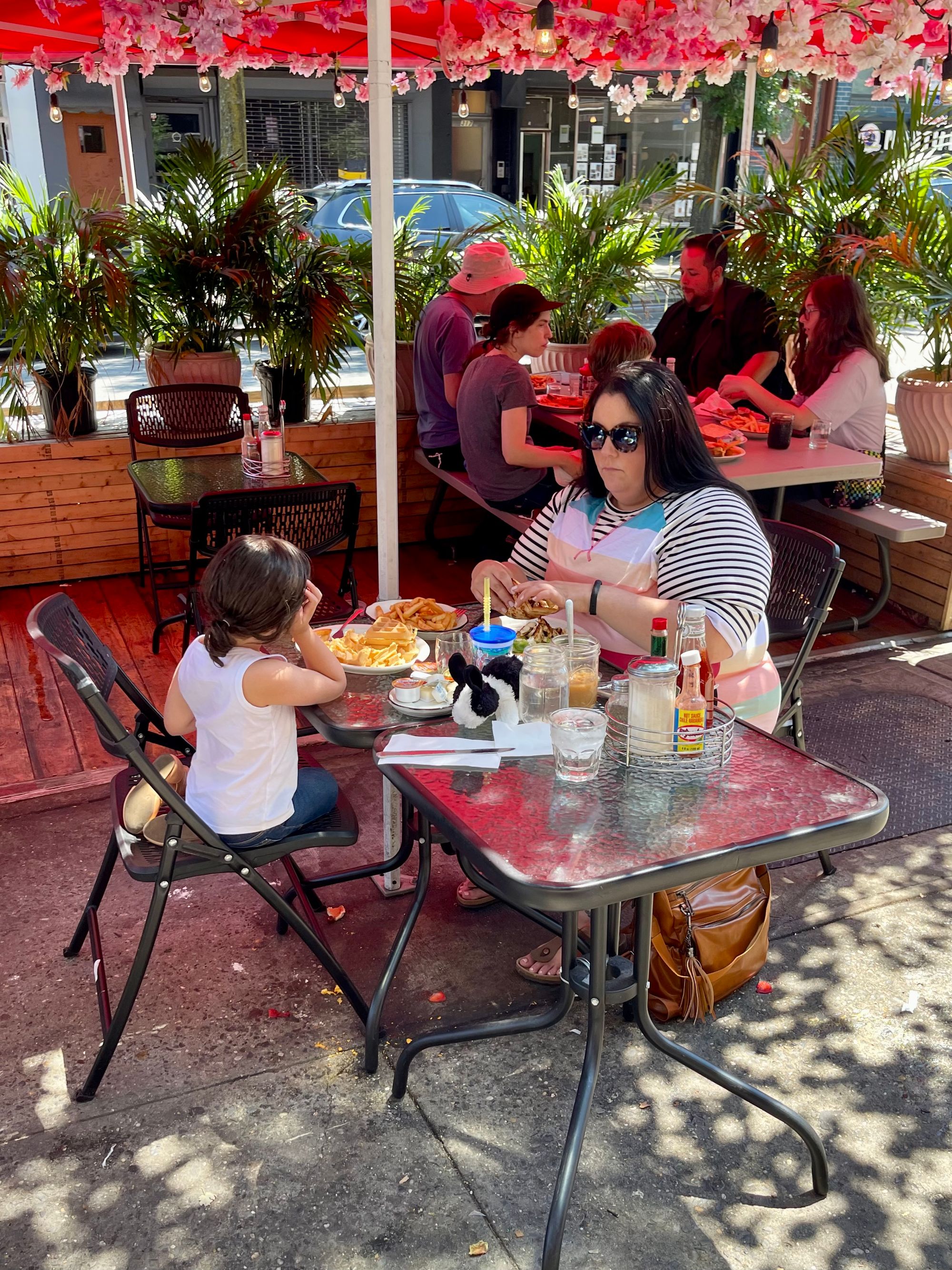
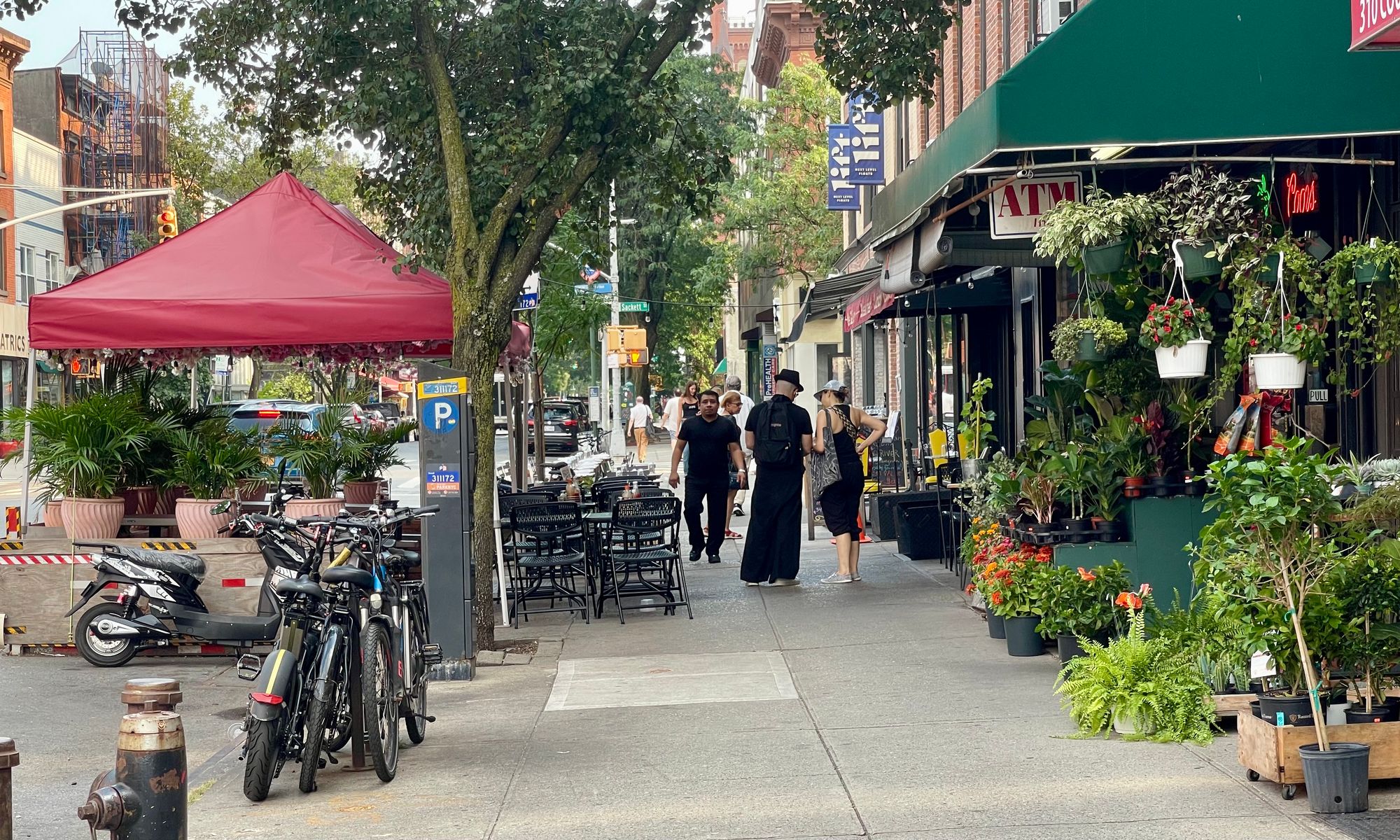

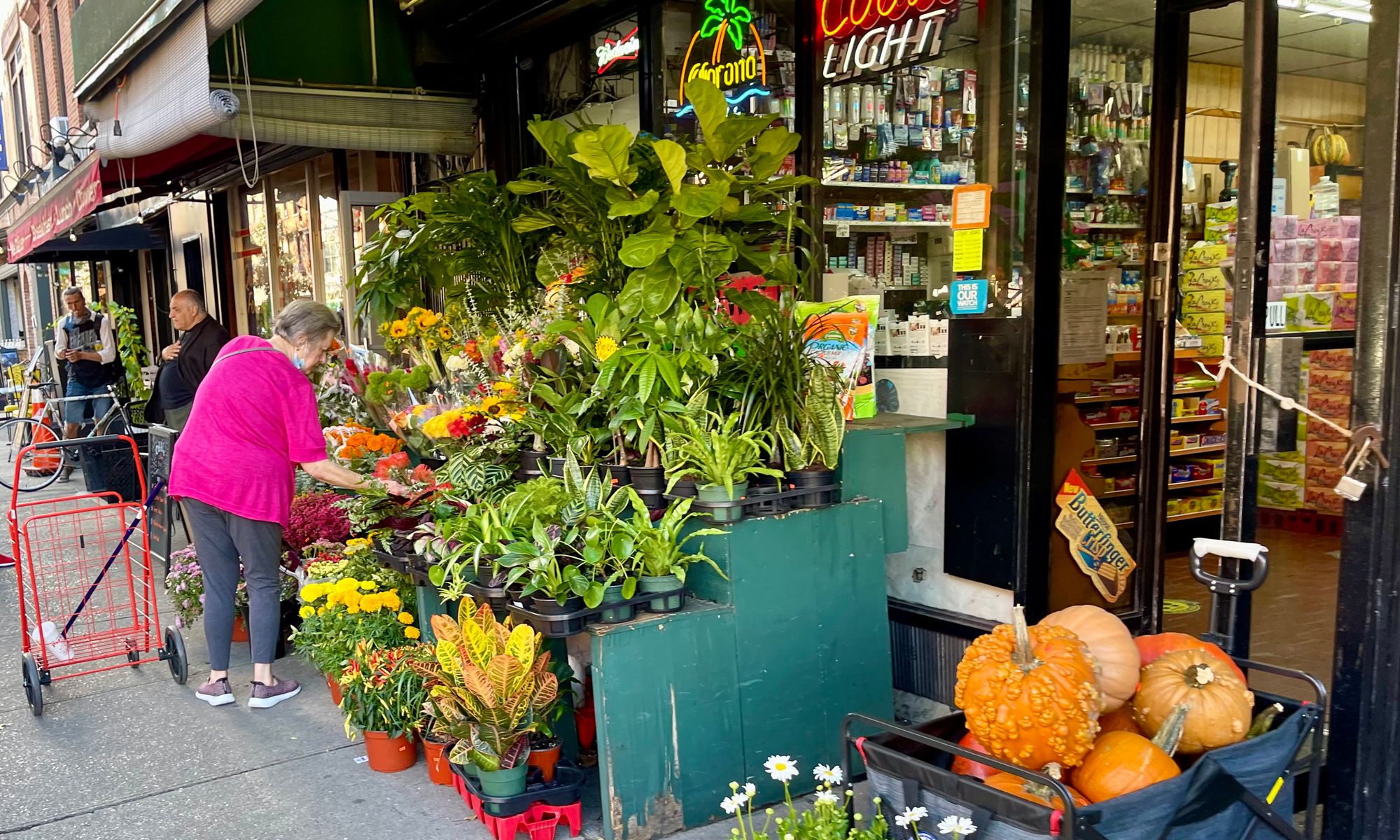
Adjacent stores include a liquor store and a bodega
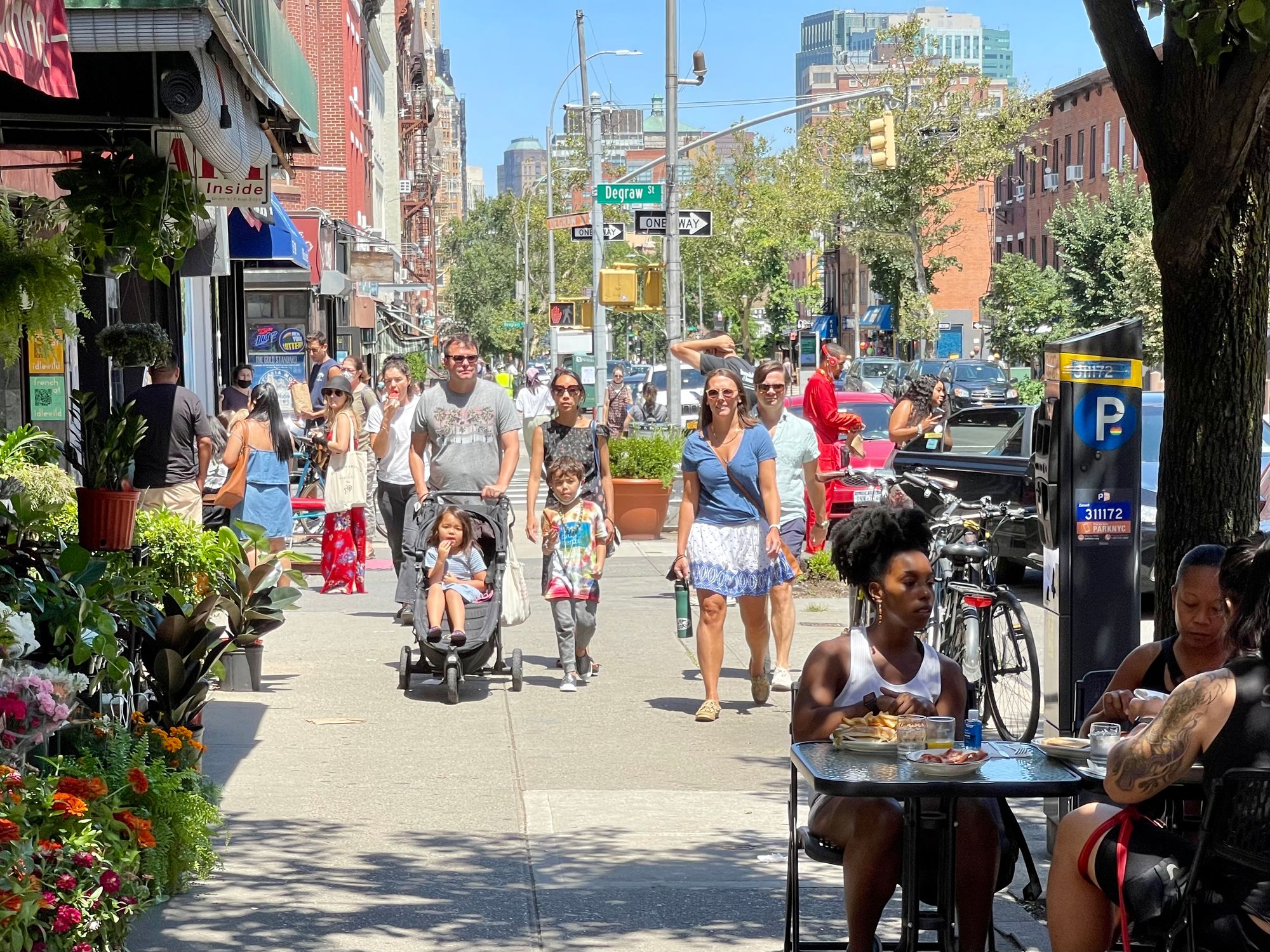
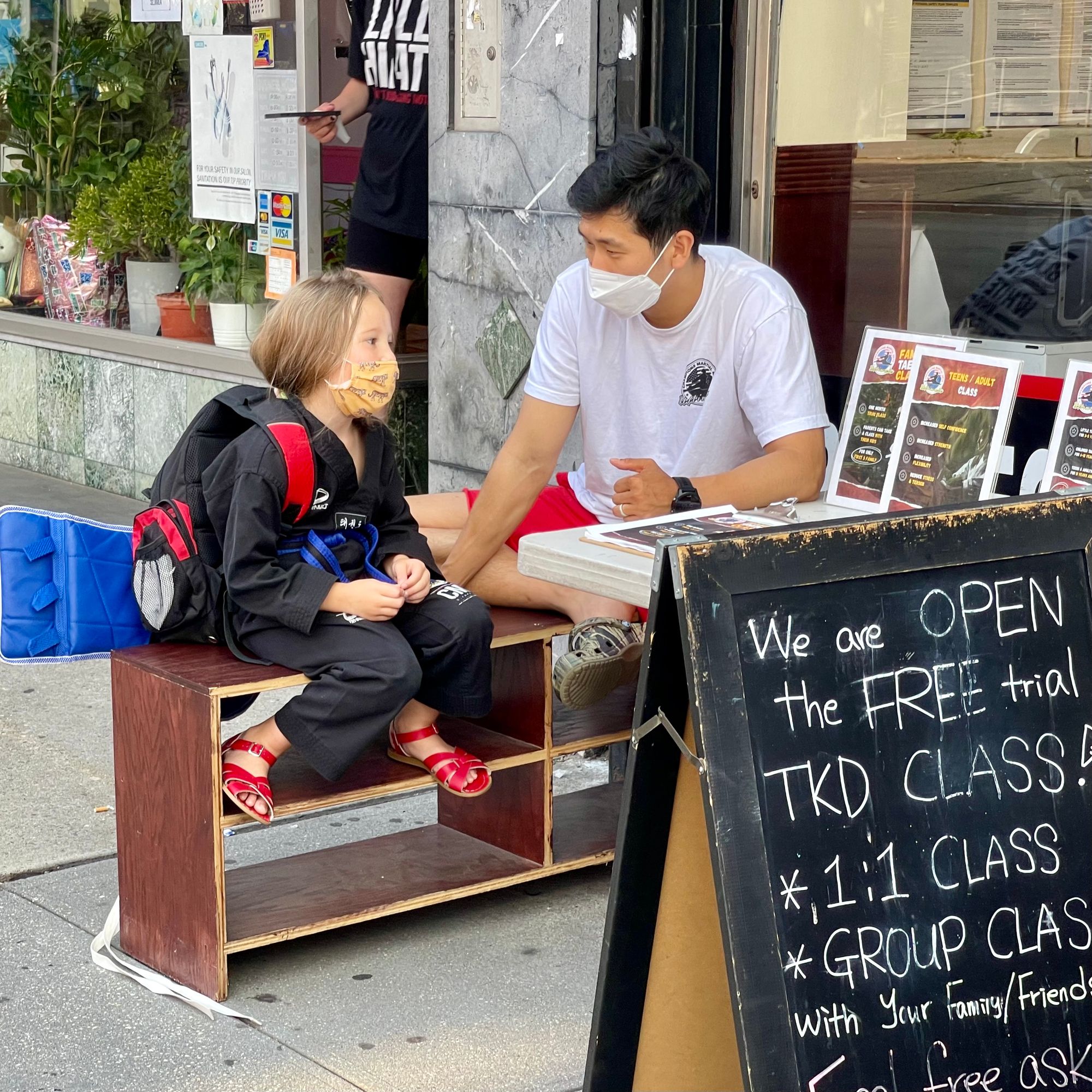
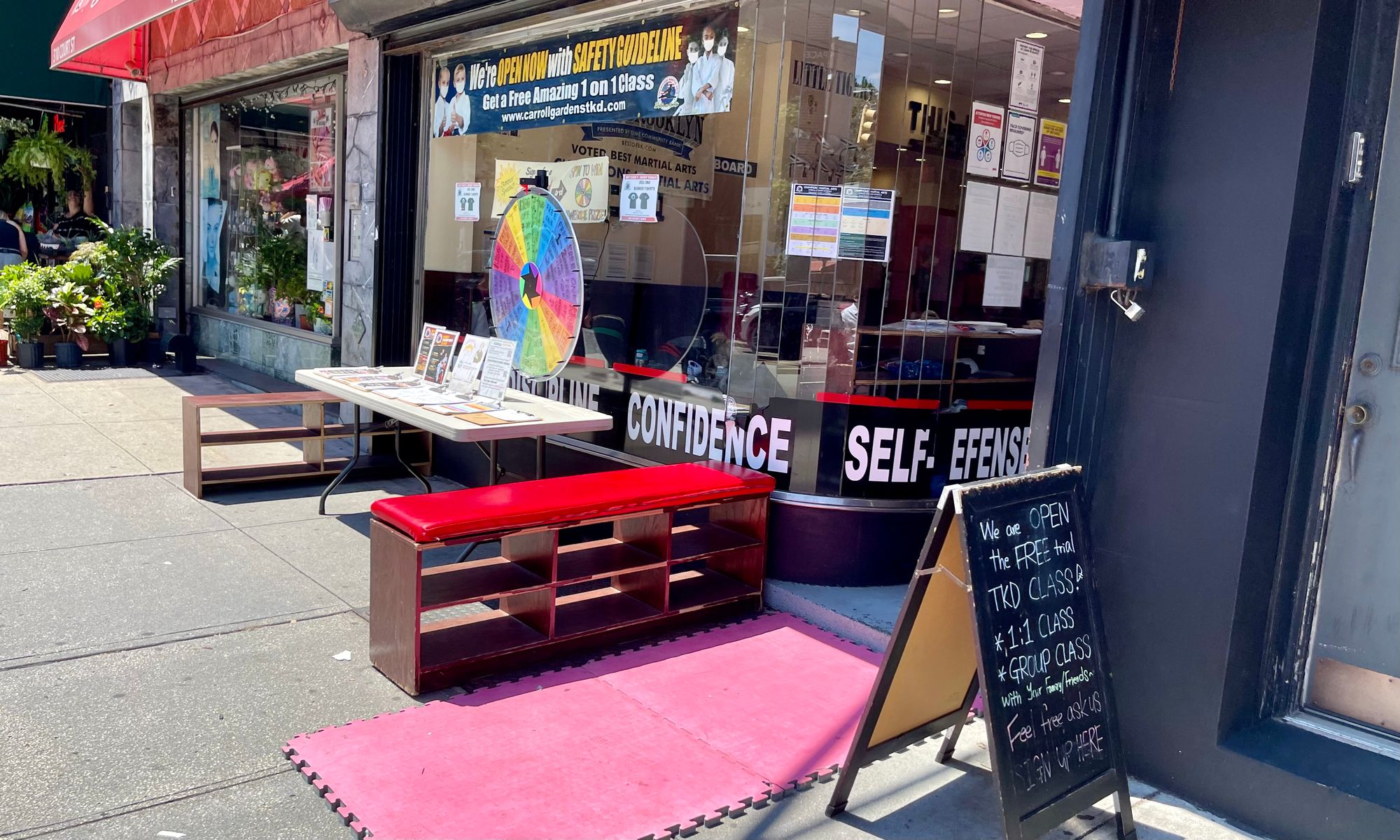
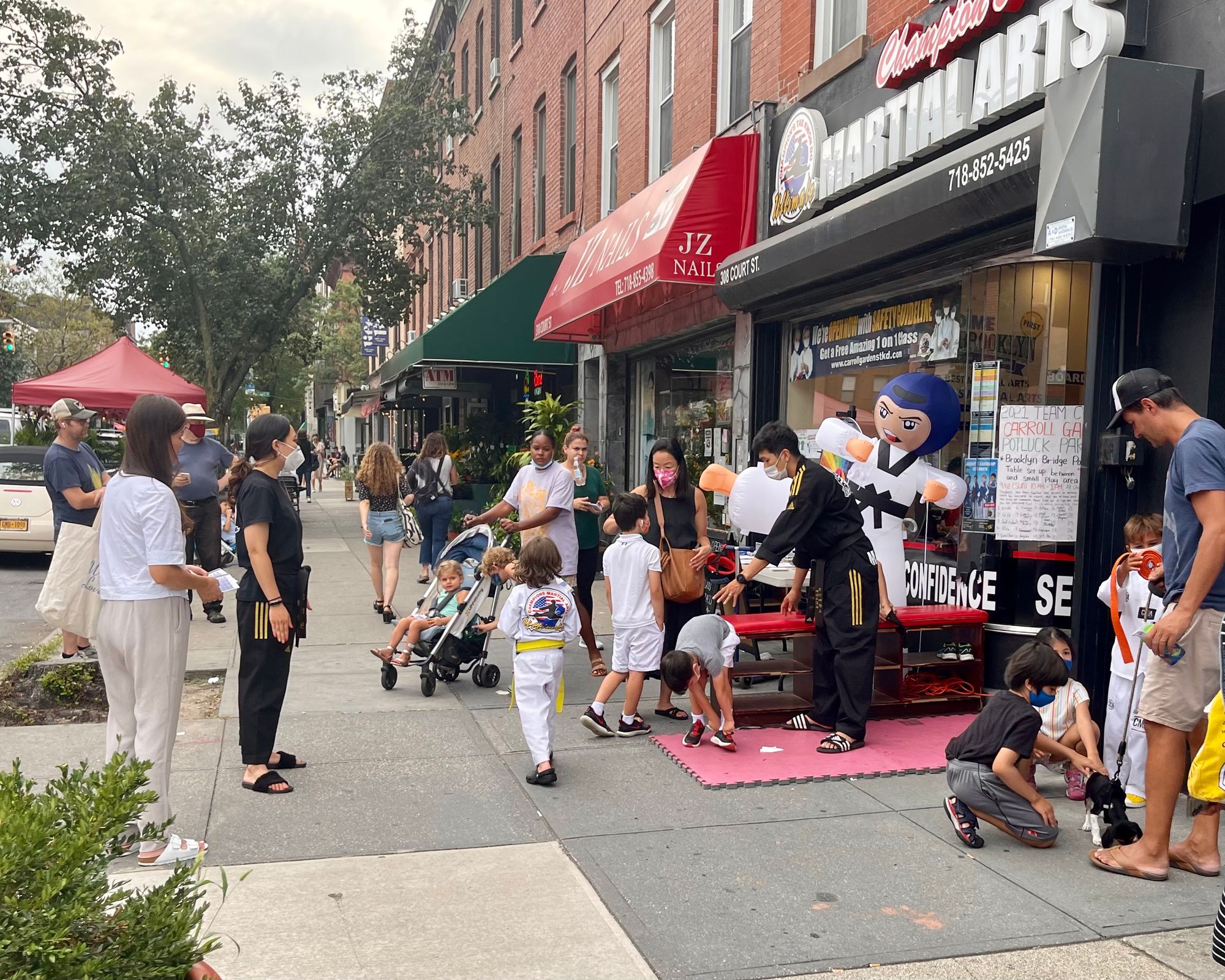
A French bakery sits on the other corner of the above restaurant.
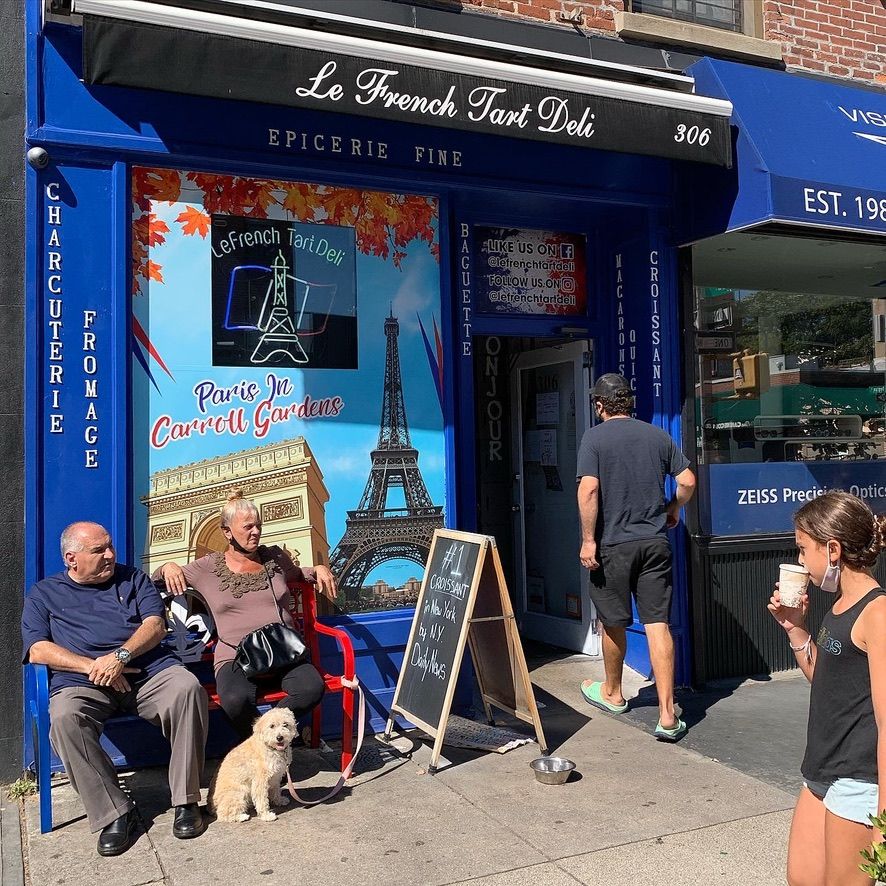
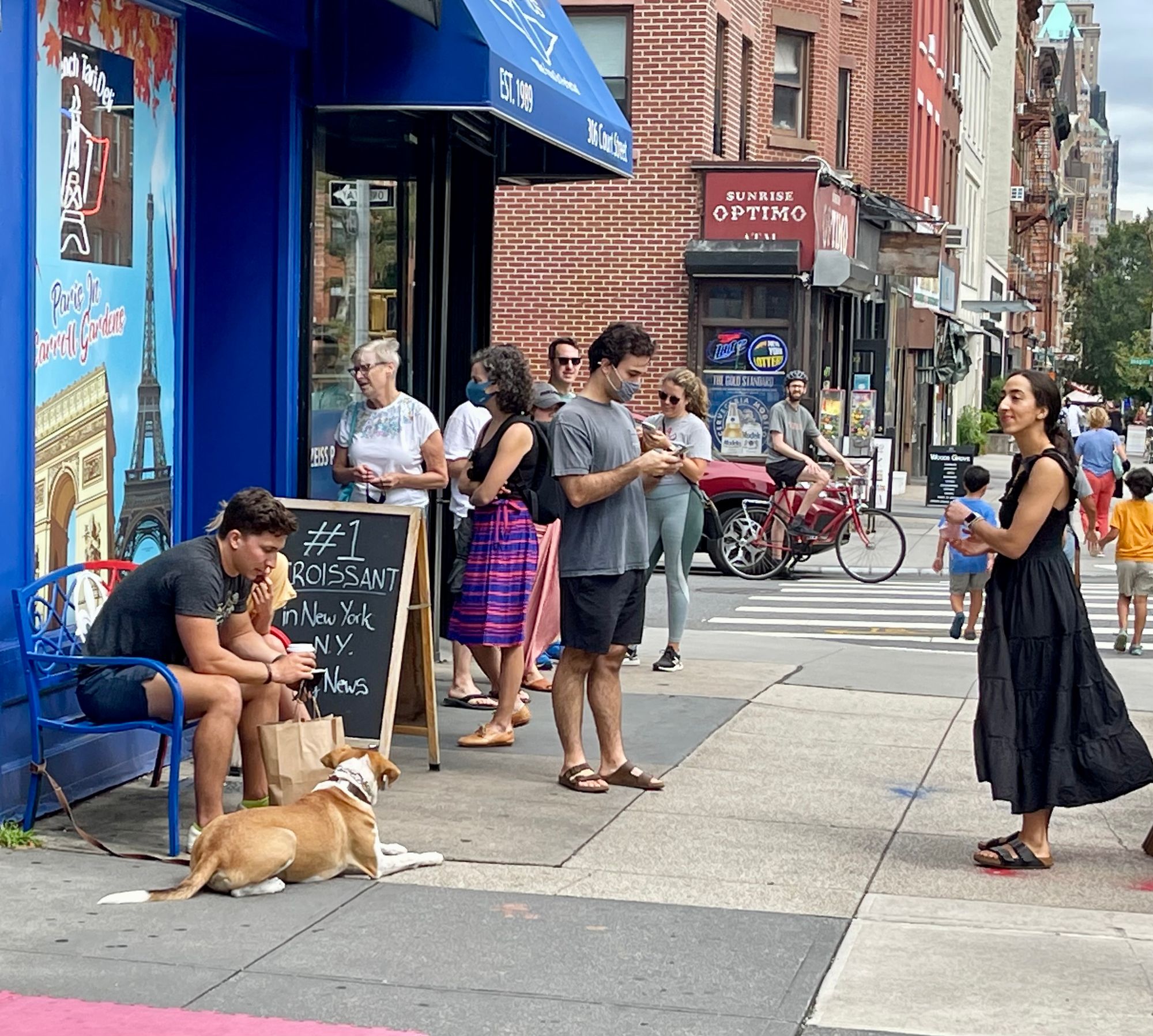
Unfortunately, without the dining shed, we lost the vibrancy of this great block
Because of the impending rules and changes, the dining sheds were removed from this block. Now, without the sheds which allowed restaurants to stretch their reach on the street, most of the activity has gone from this once magical area and it is back to what it was before Covid... a dull strip of sidewalk and a significant loss to the neighborhood. This is what is about to happen to all the currently vibrant sidewalks where the dining sheds are to be taken out.


Le Petit Cafe in Carroll Gardens
This iconic streetery was designed with great attention to detail and beauty, and fills almost an entire block in Carroll Gardens with a sense of elegance and excitement that was missing before. The inside and outside are woven together to create one of the best-designed hubs in the city. It would be a tragedy for the neighborhood to lose this treasure.
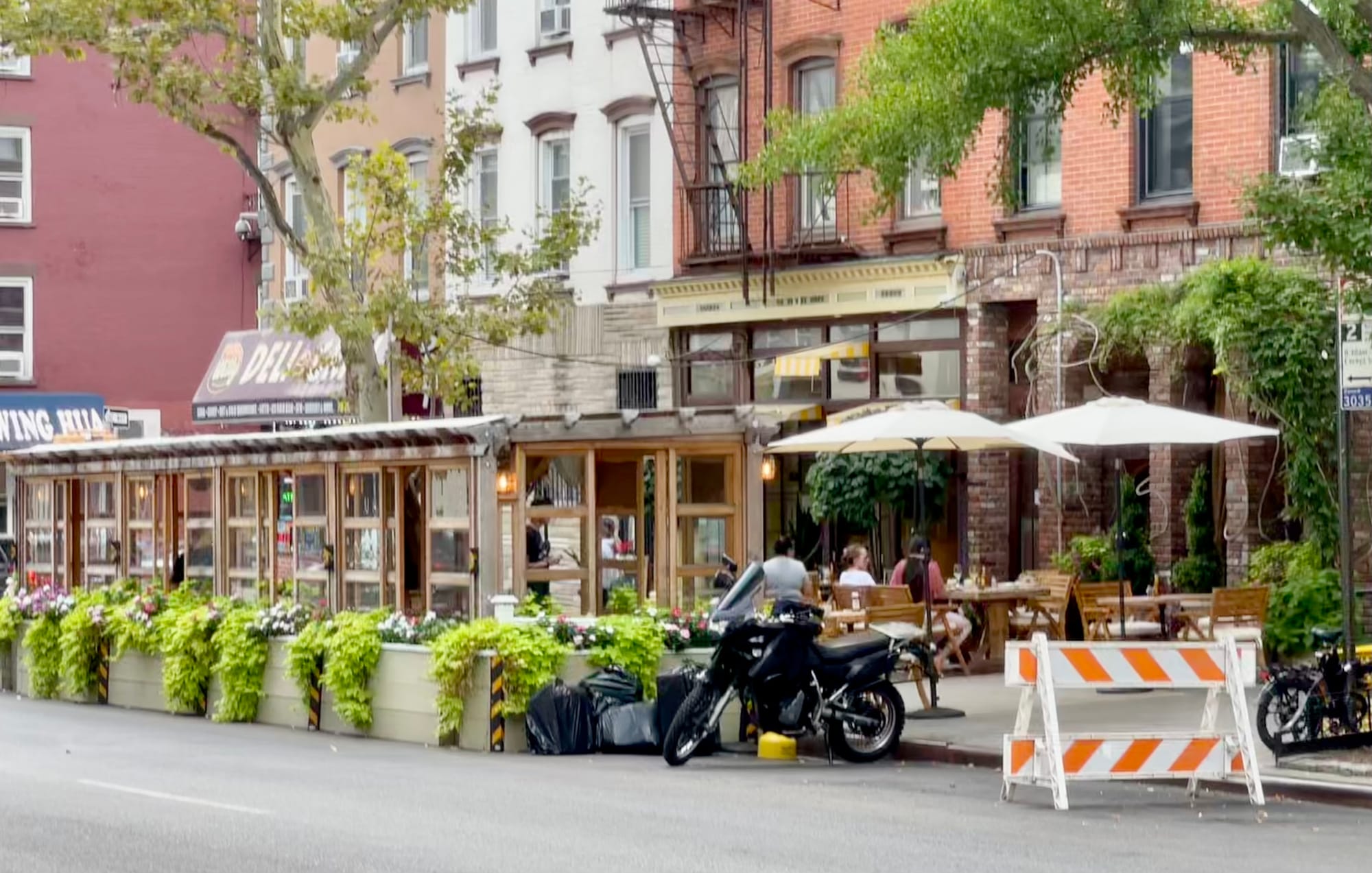
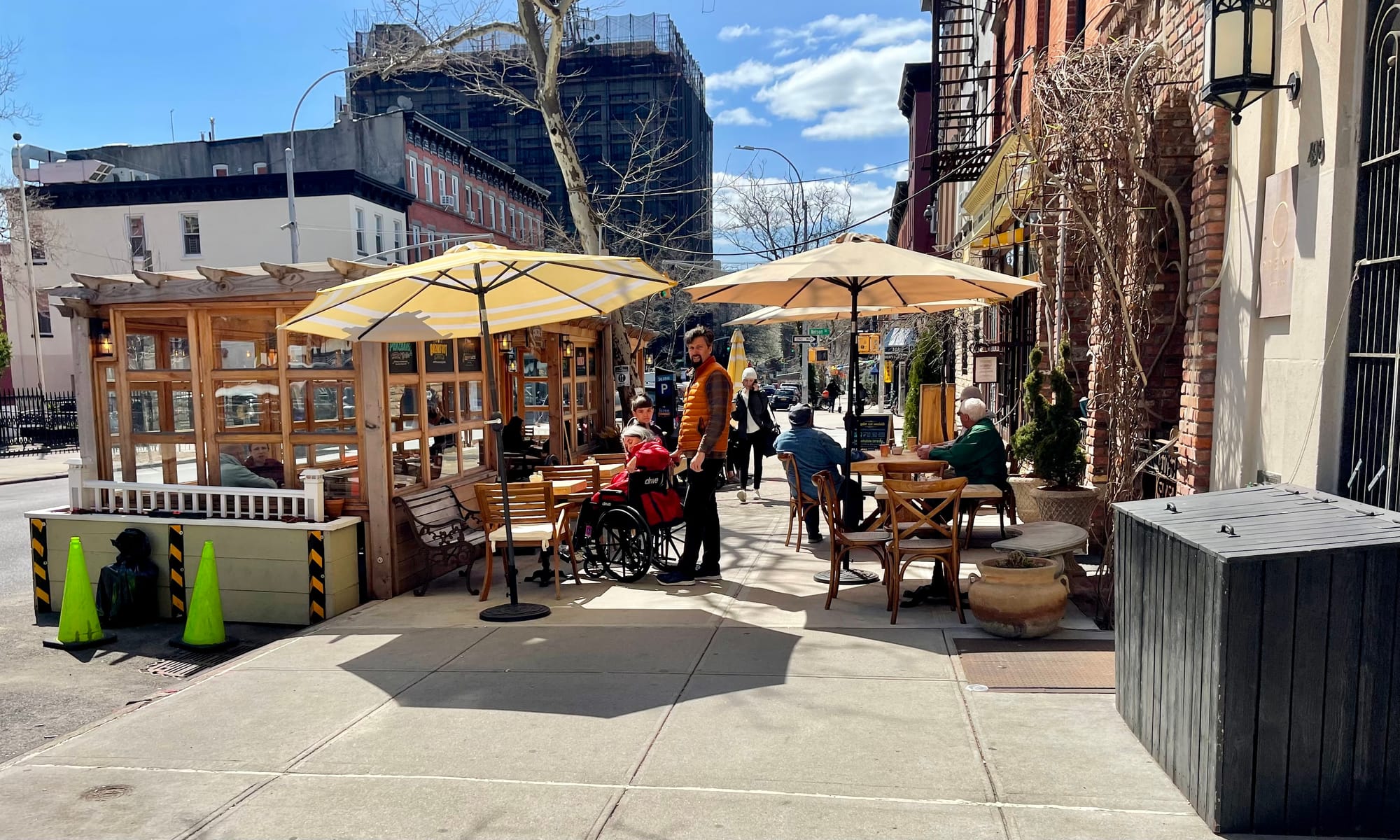
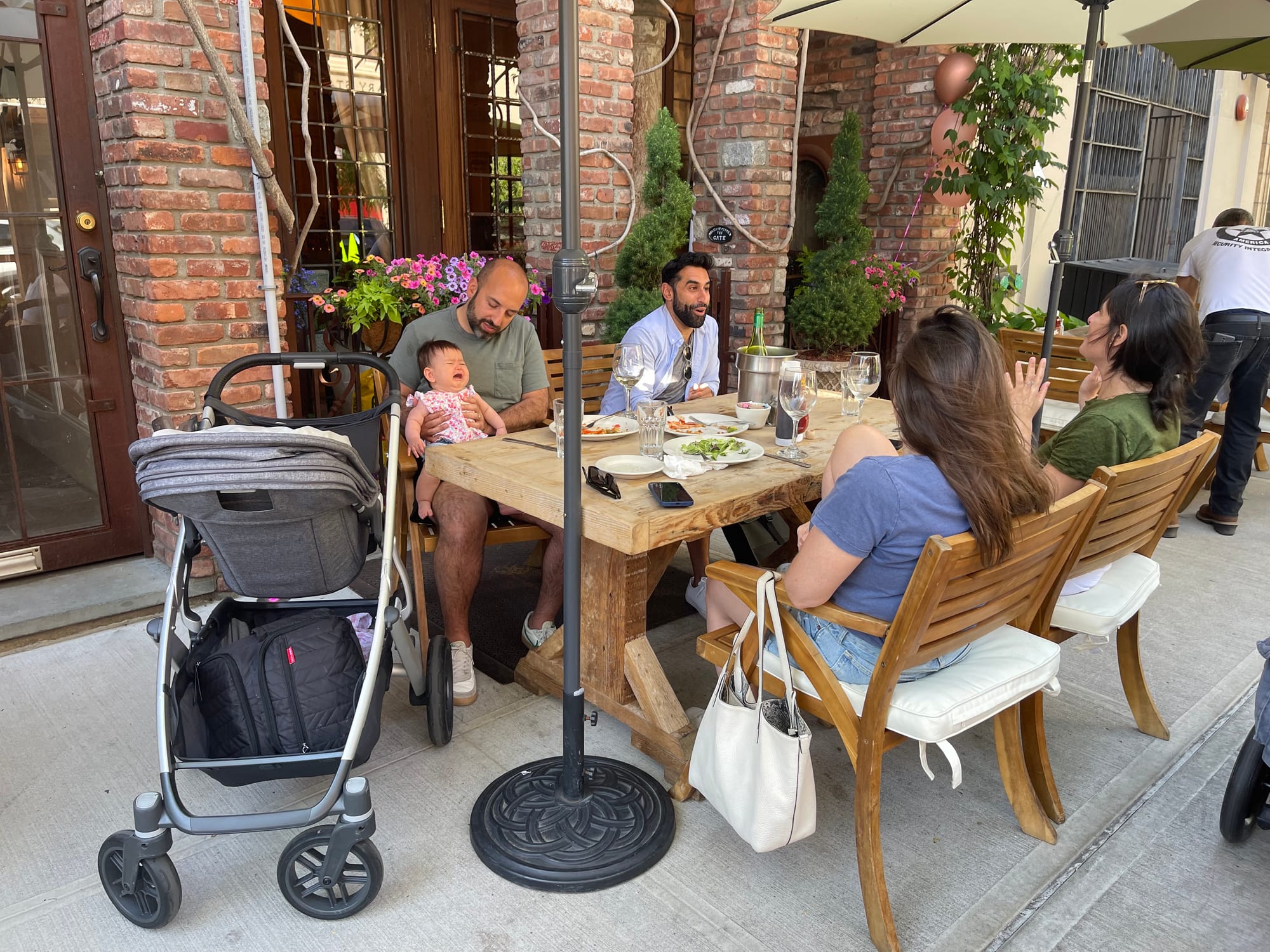
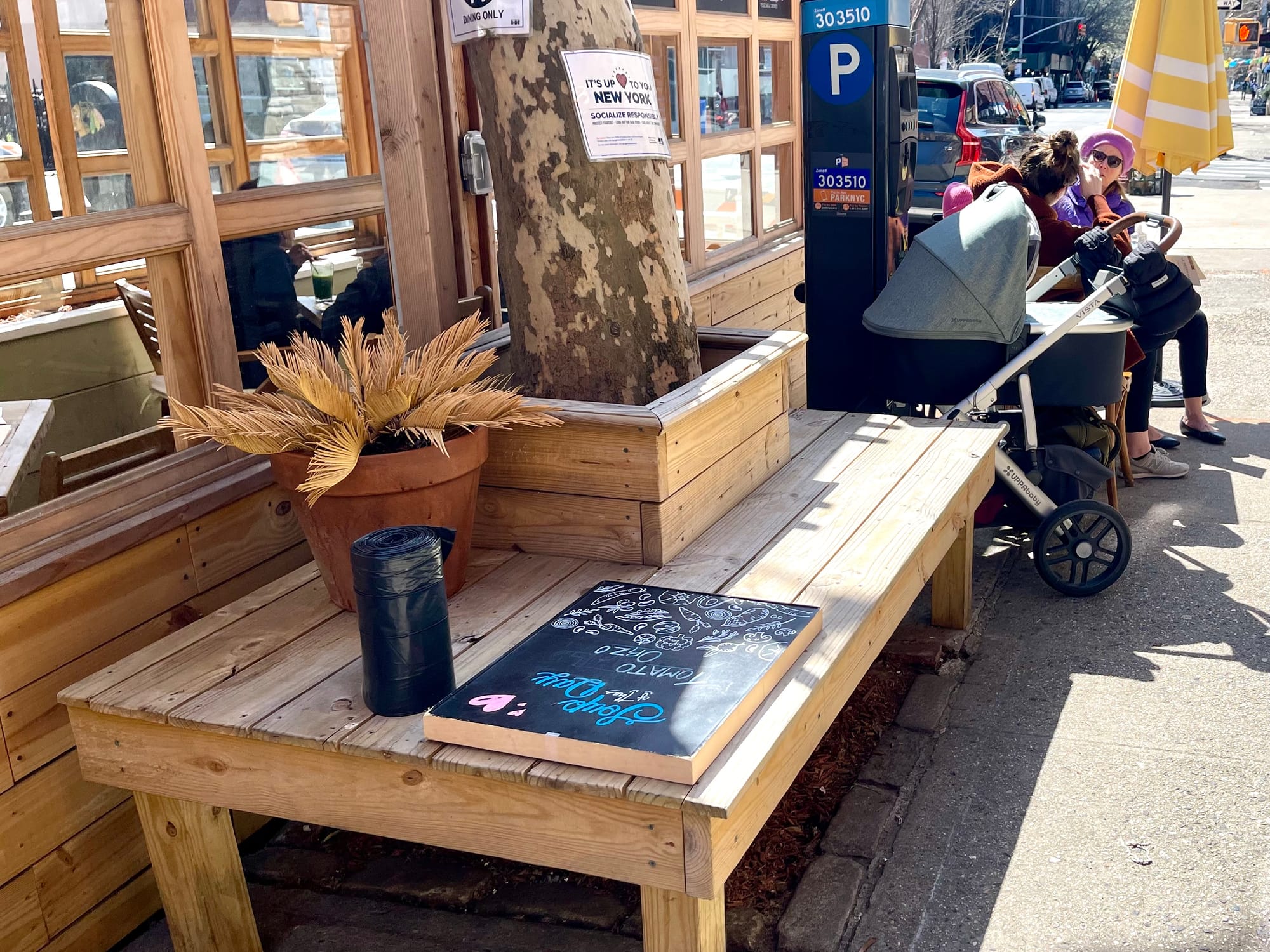
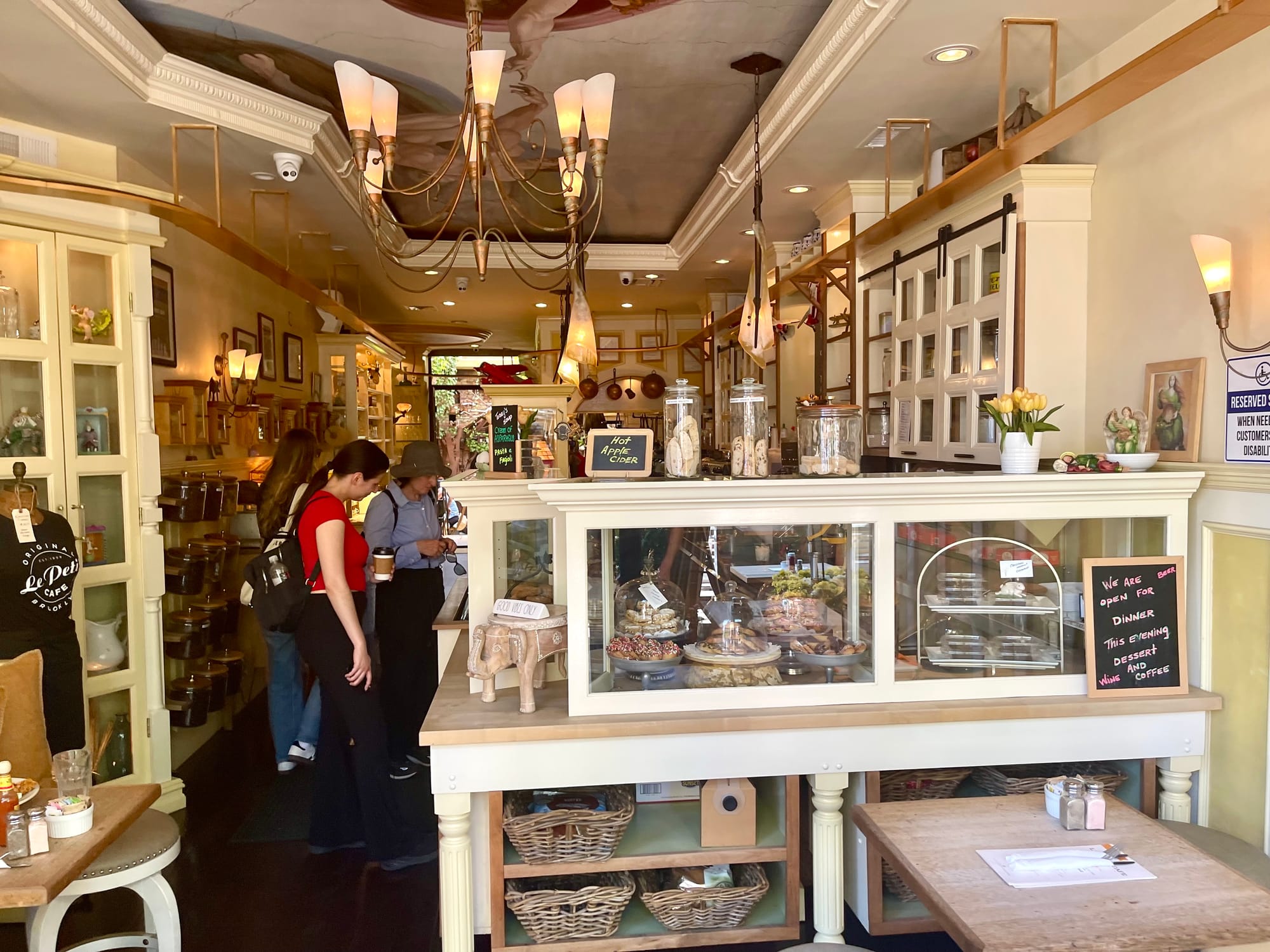
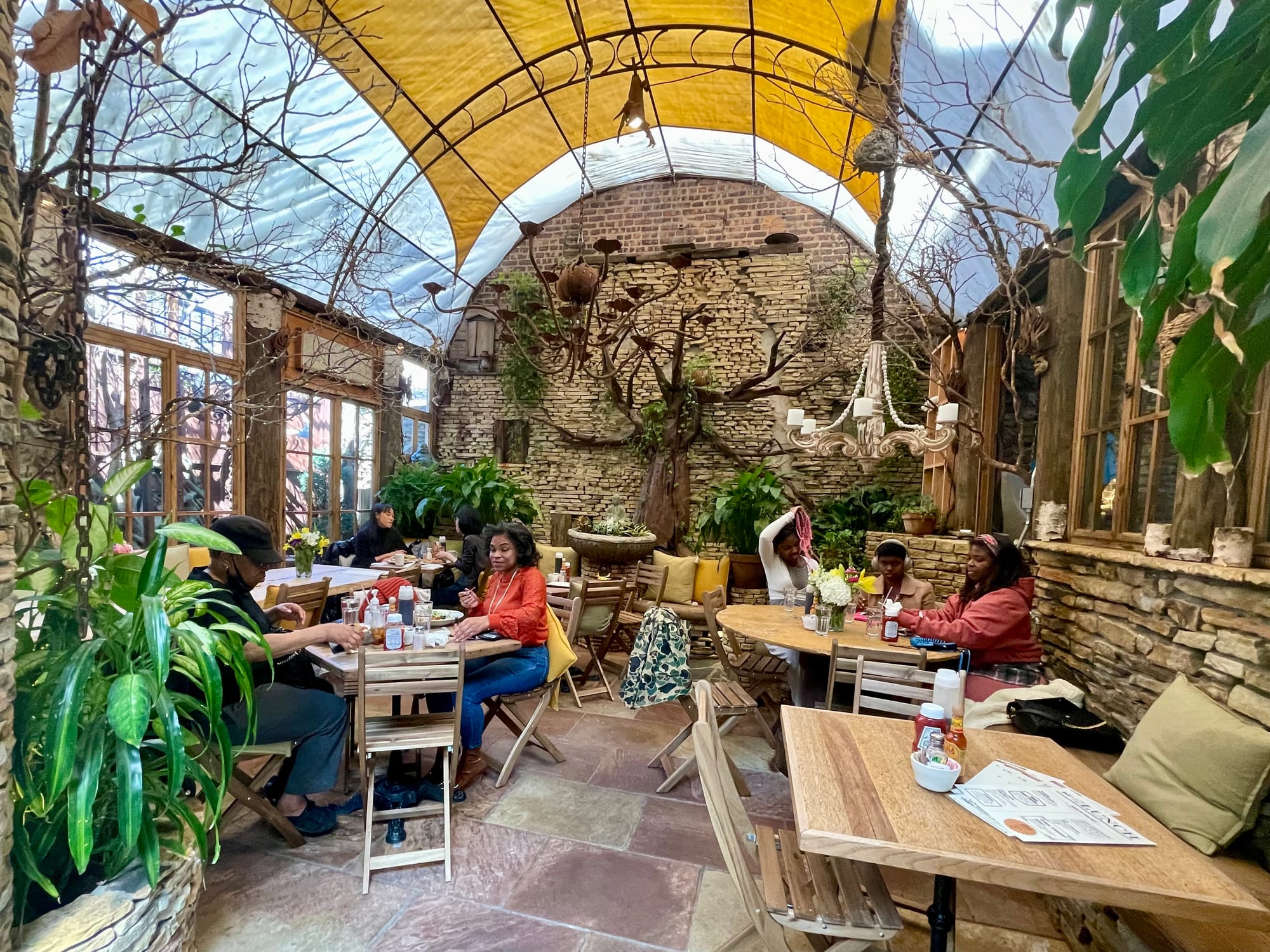
Frankie's
The buildings here weave together in a wonderful way to create a thriving hub. The Frankie's 457 block is a group of open air "rooms" perfect for community events. On the corner you have a great area with a row of tables and chairs with table service. Inside of Black Gold Records there is a combination café, antique and record store.
The double-loaded sidewalk, seating, open window for ordering, and the record store café create a unique and interesting multi-layered setting to the benefit of all.
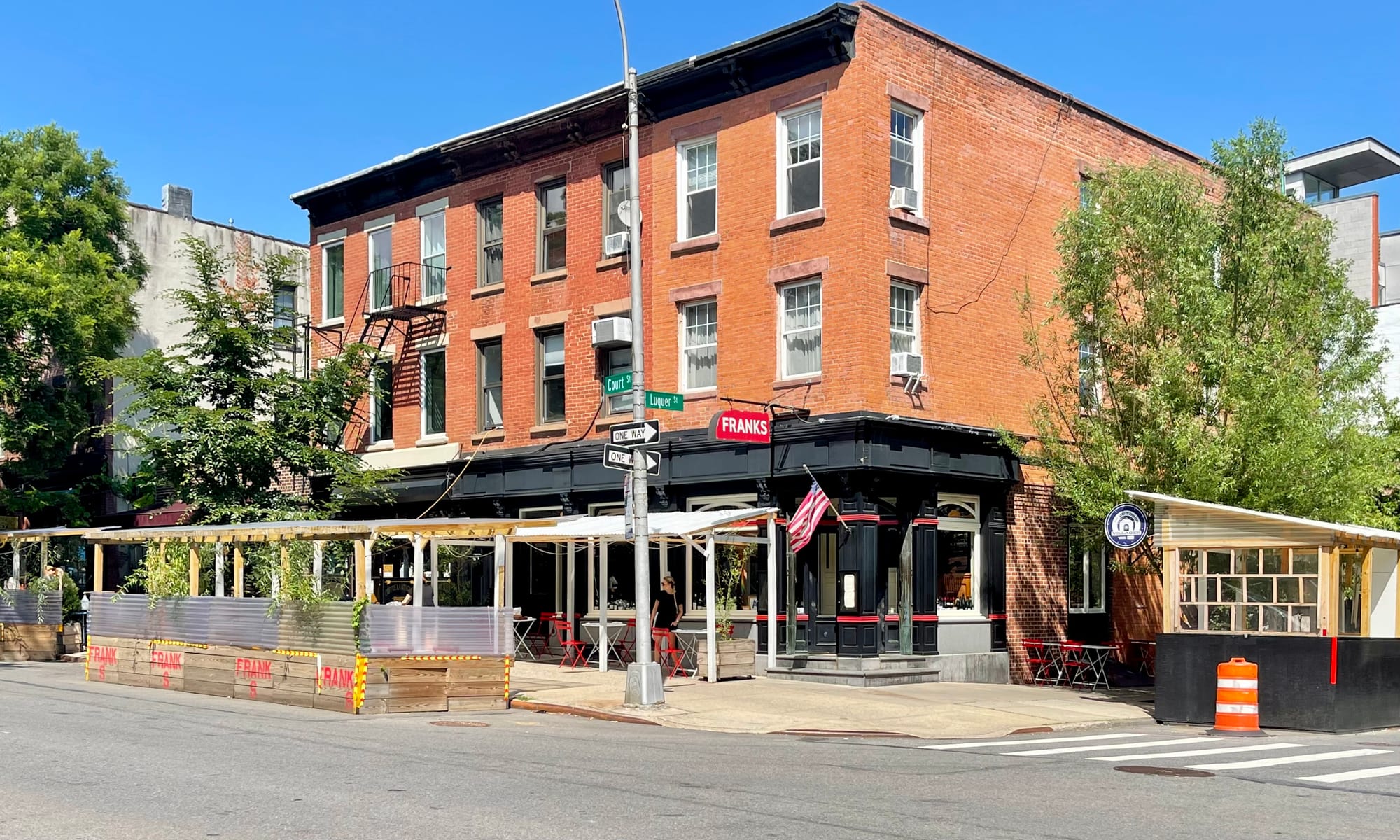
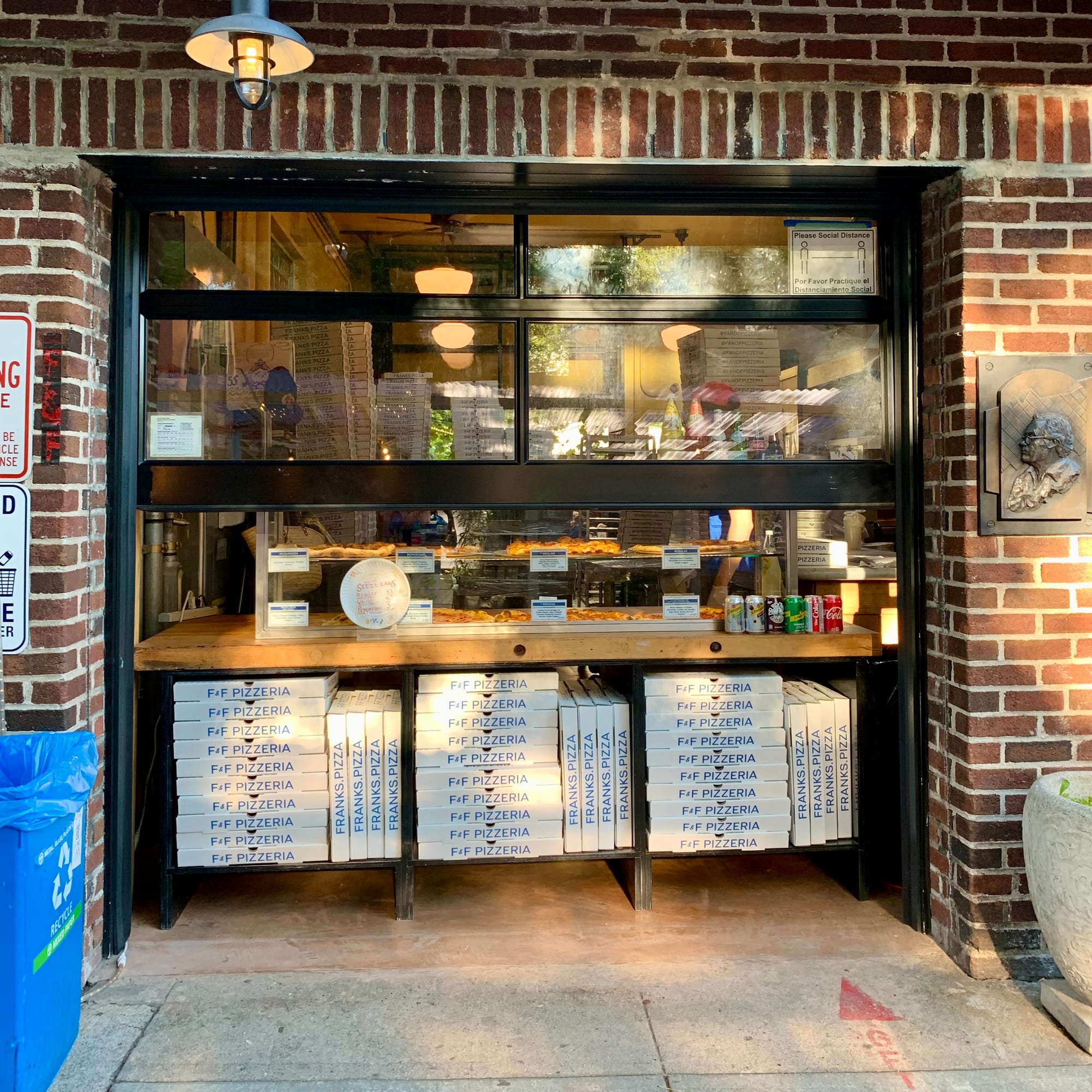
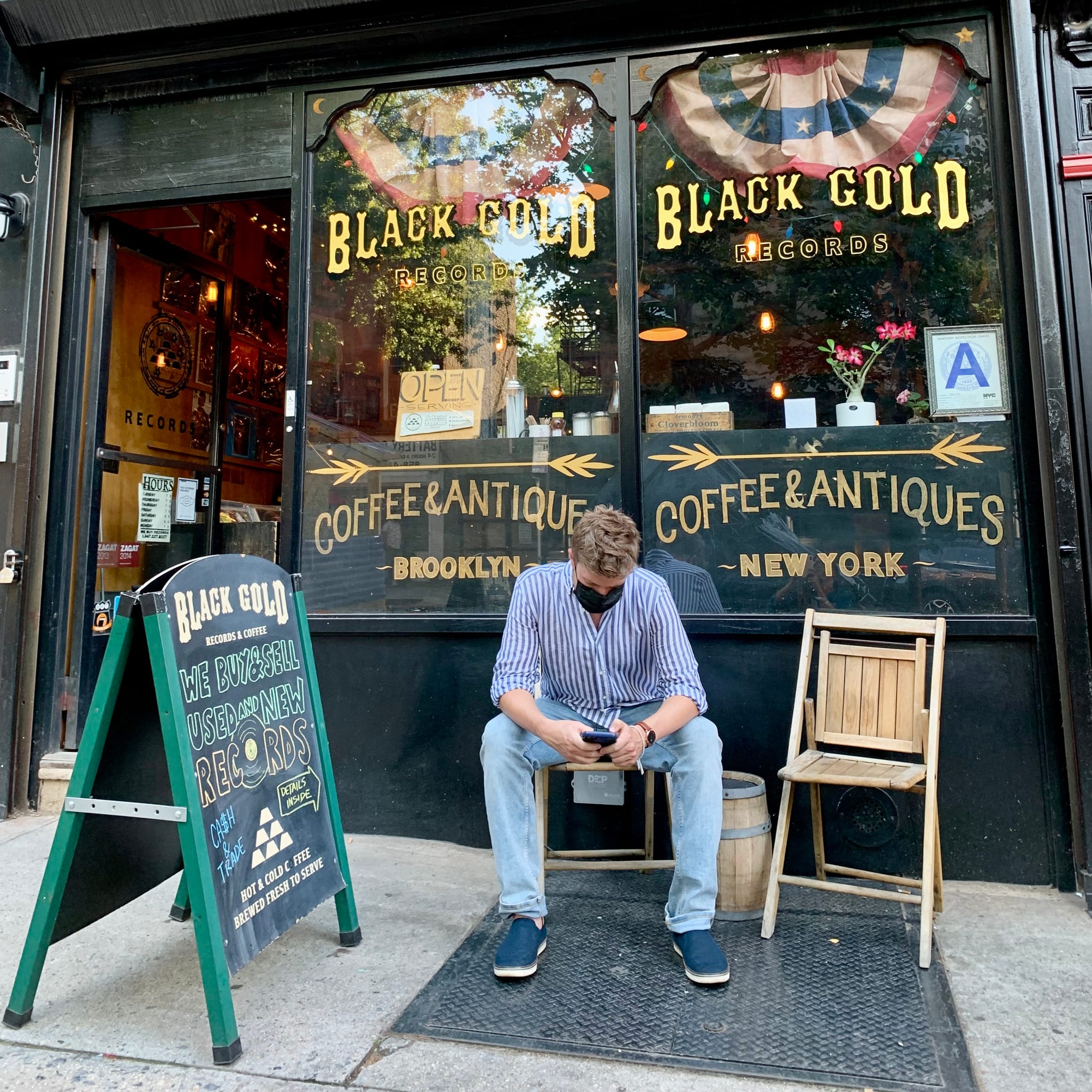
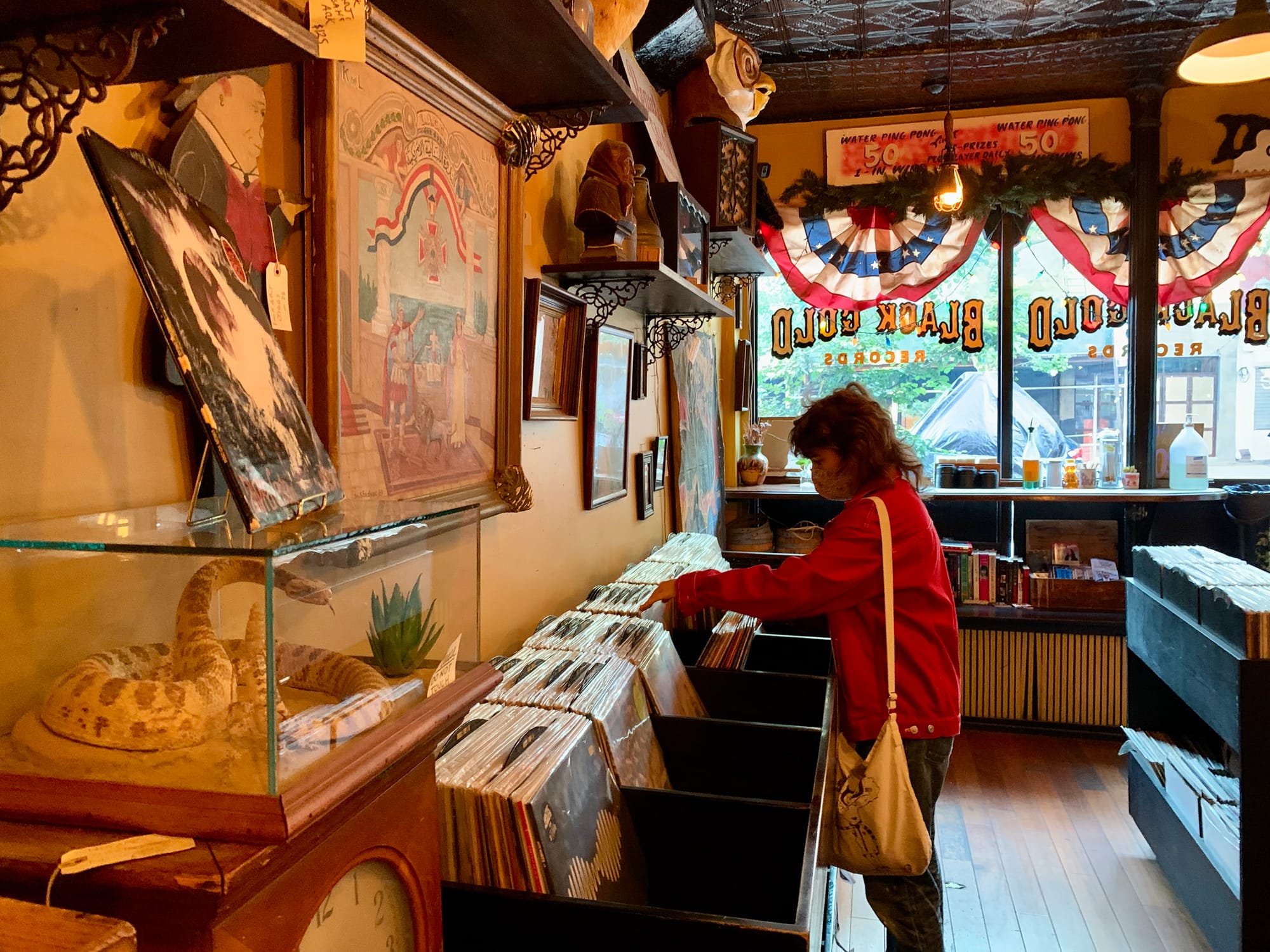
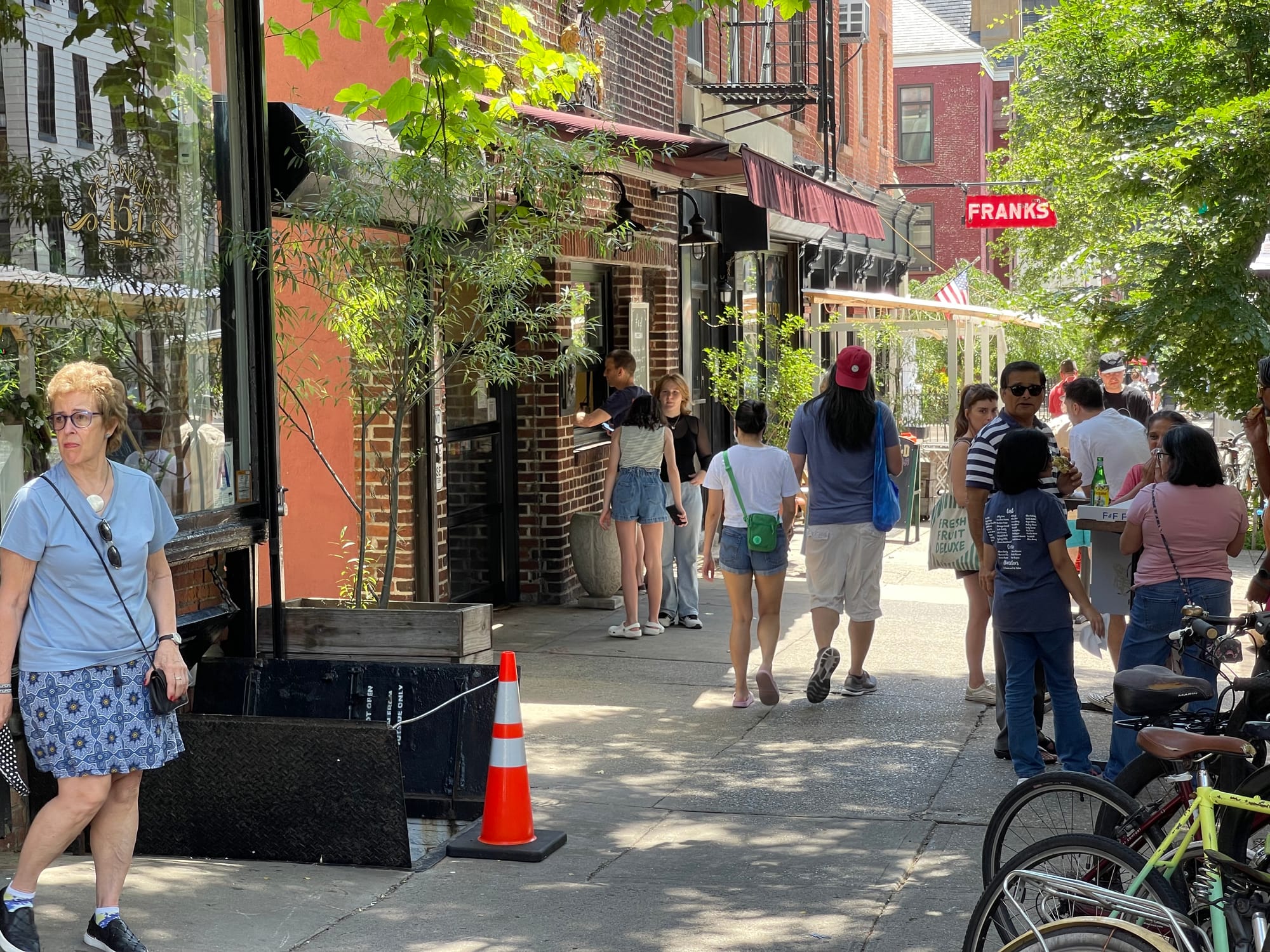
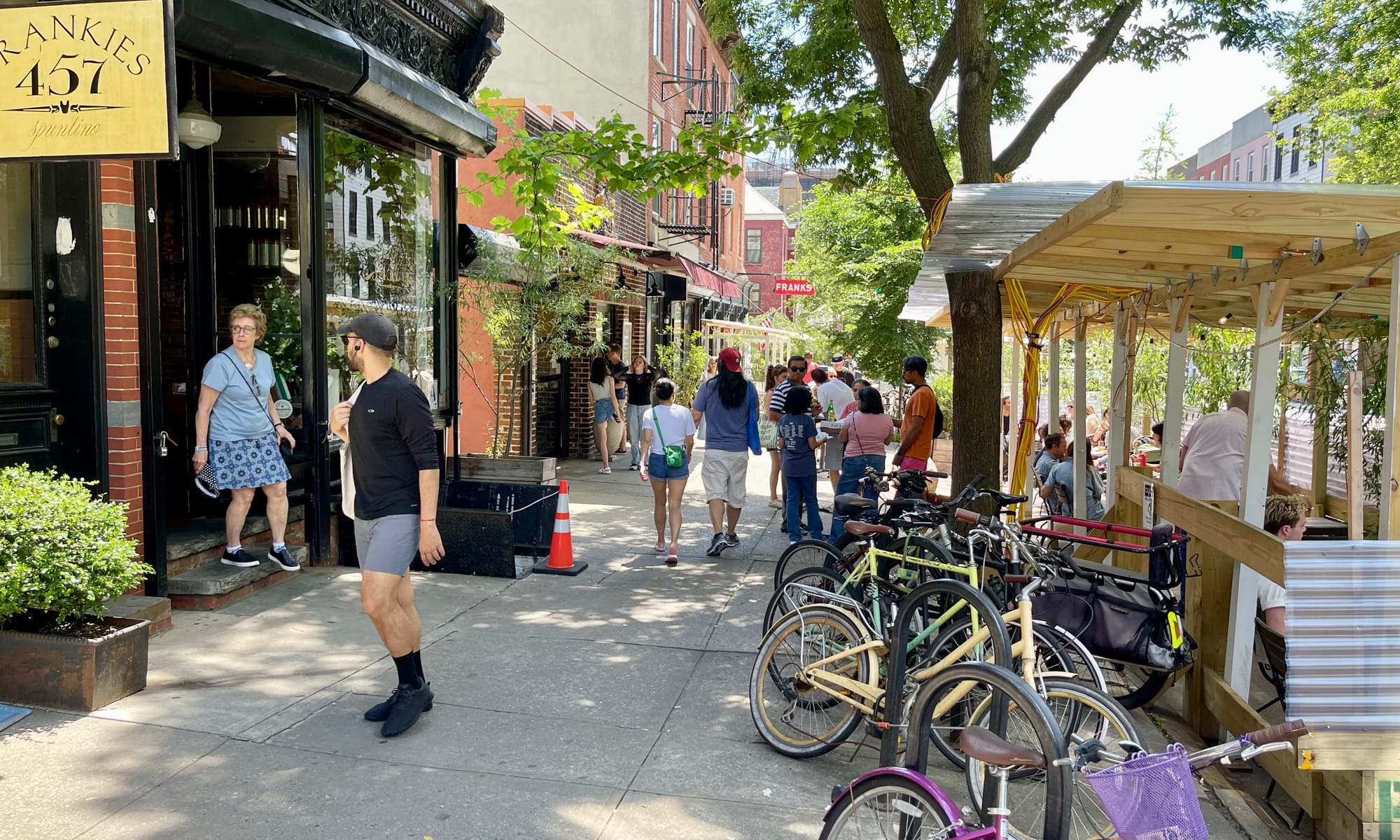
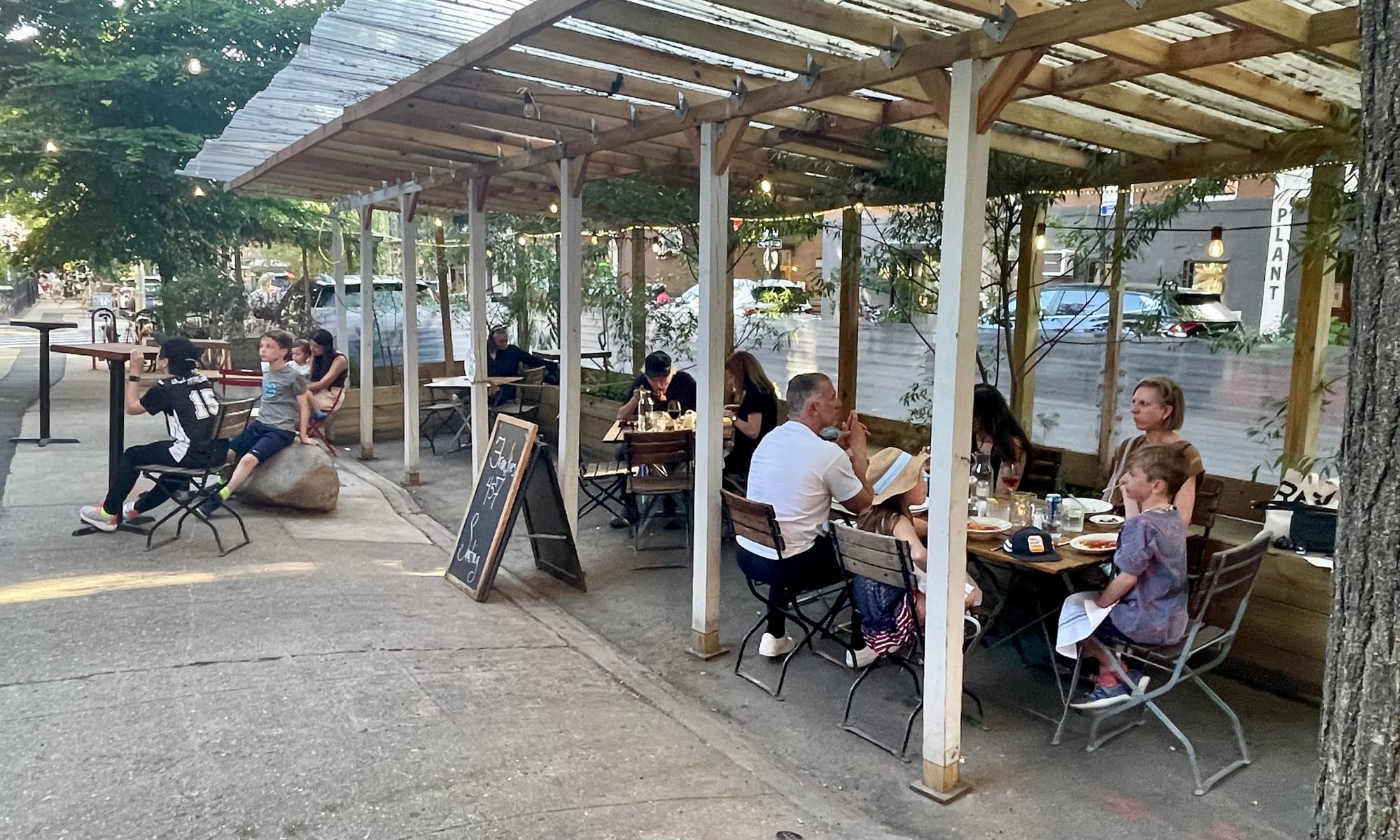
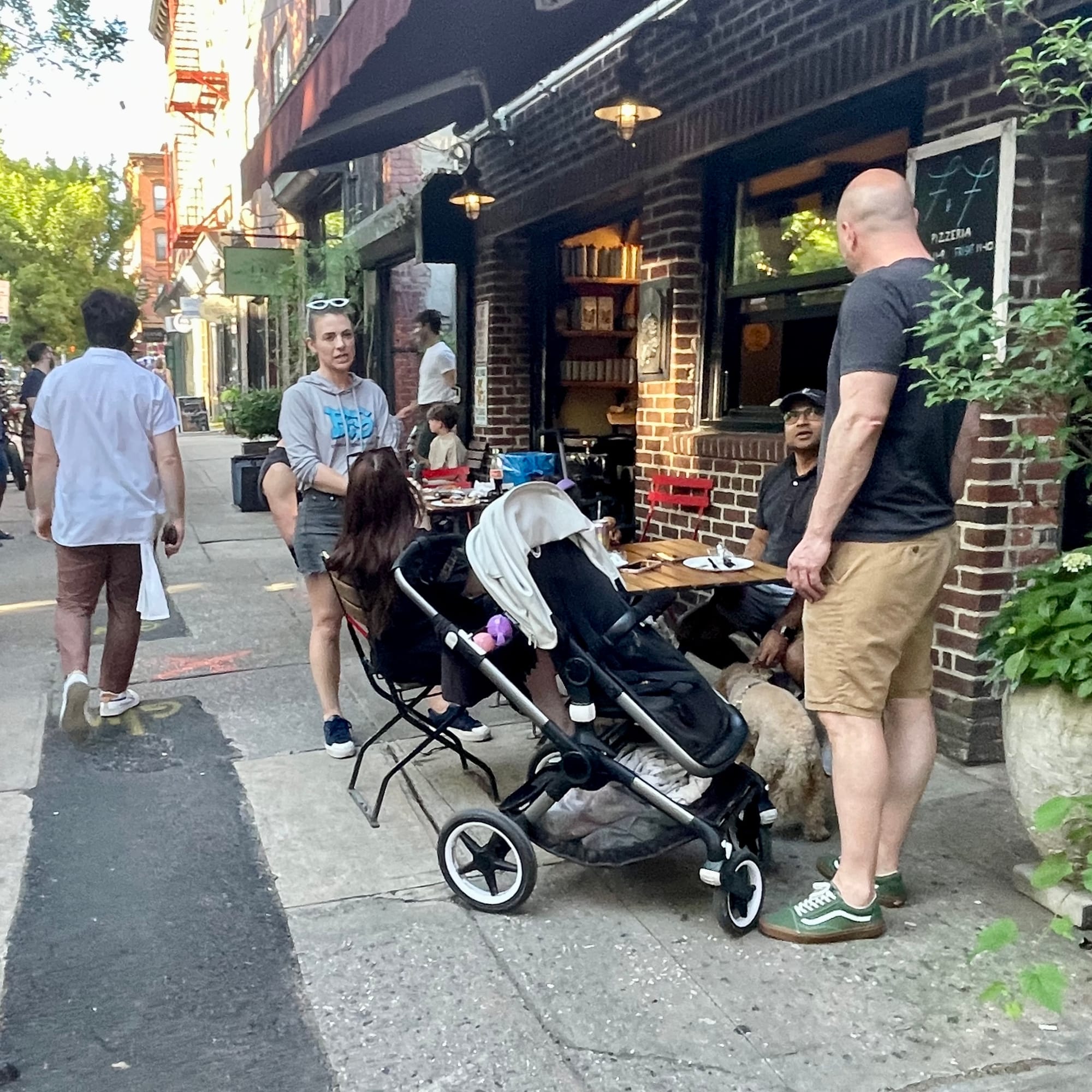
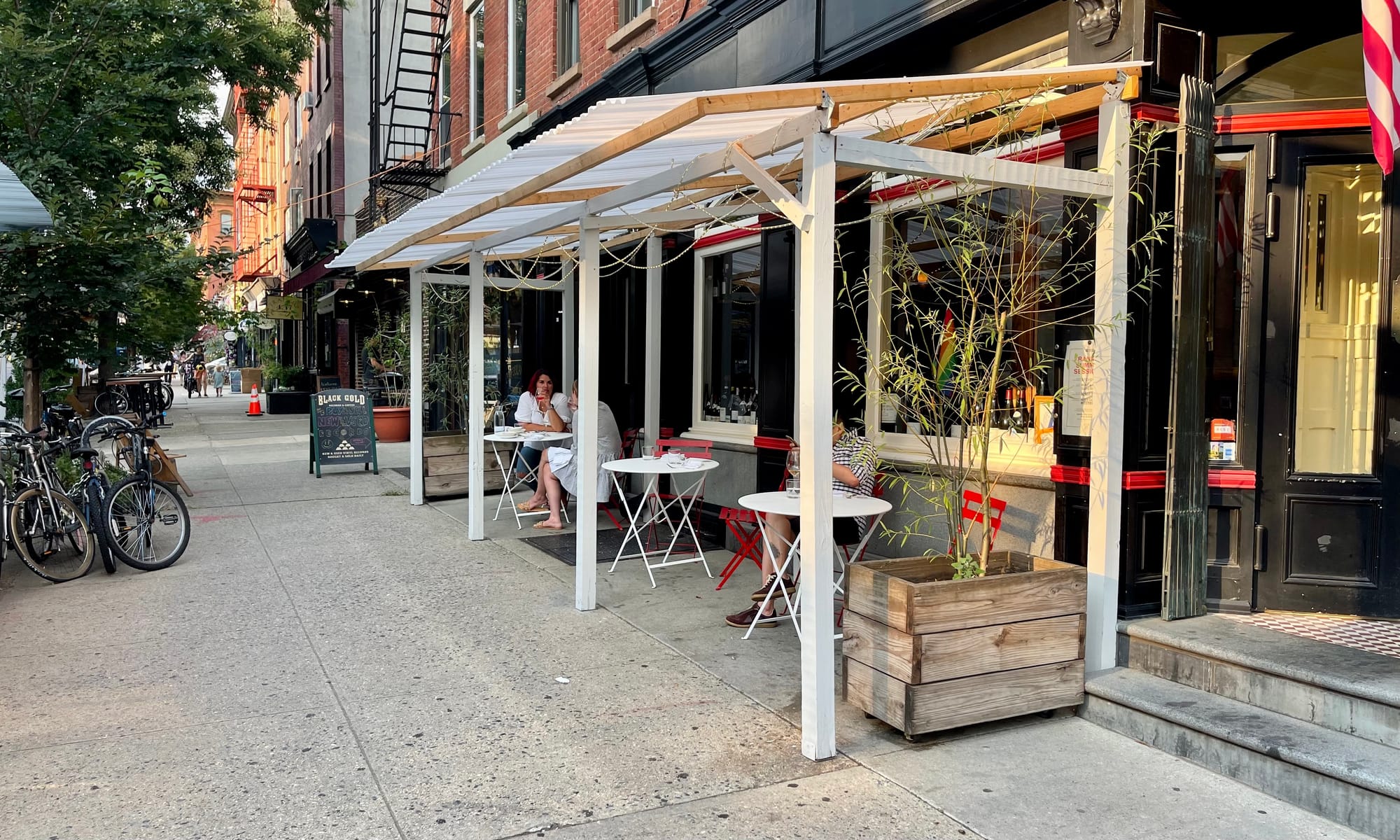
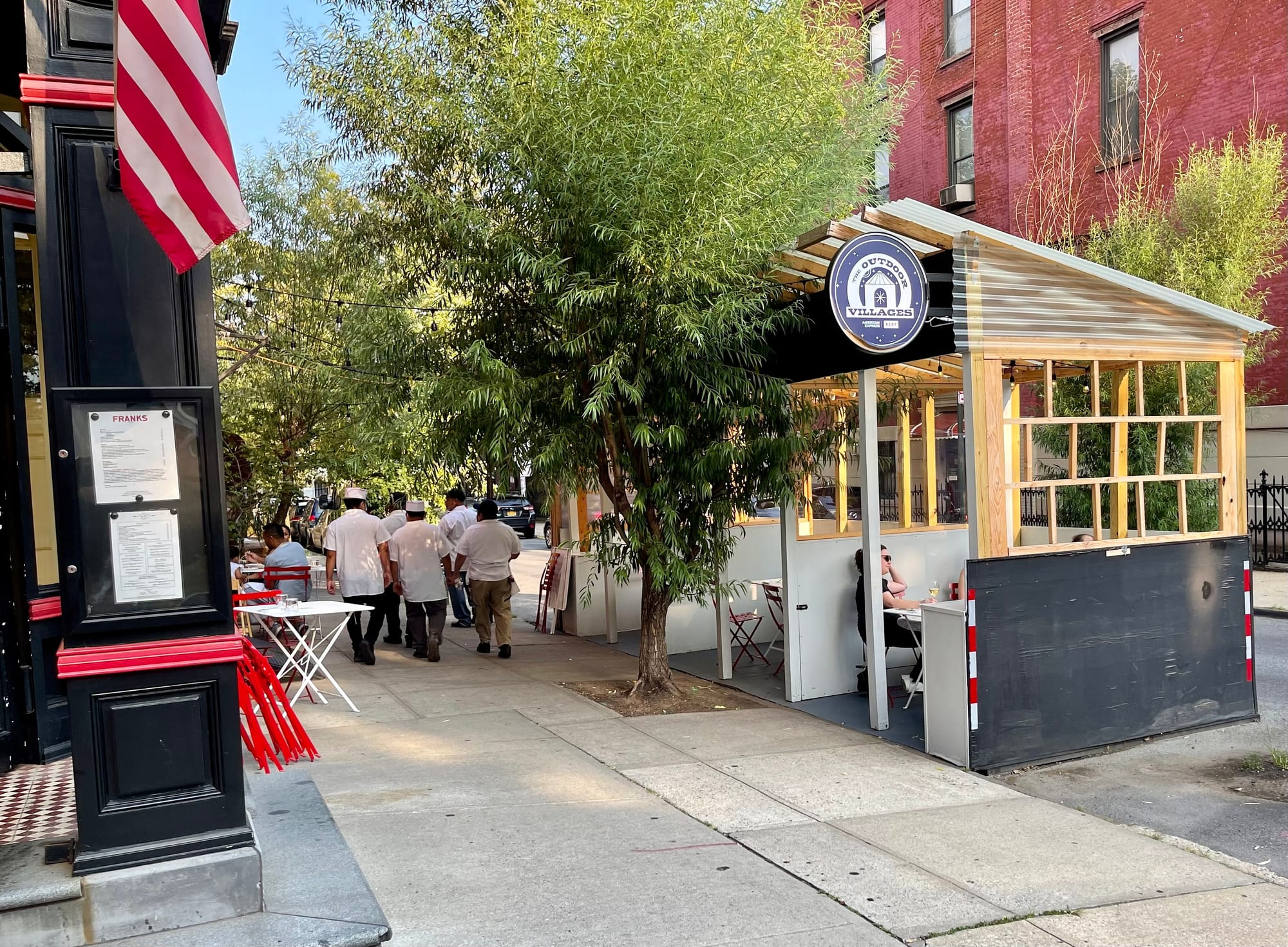
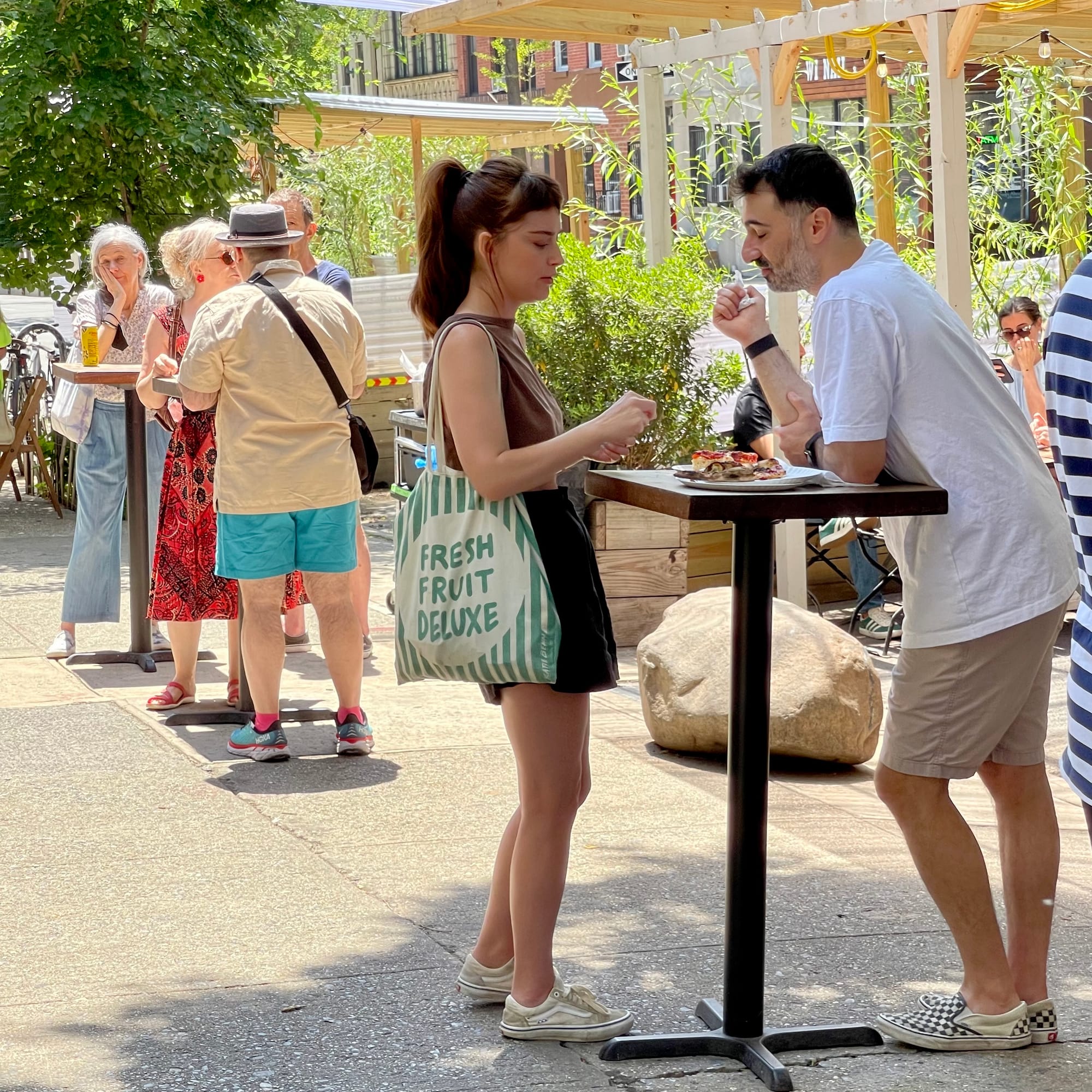
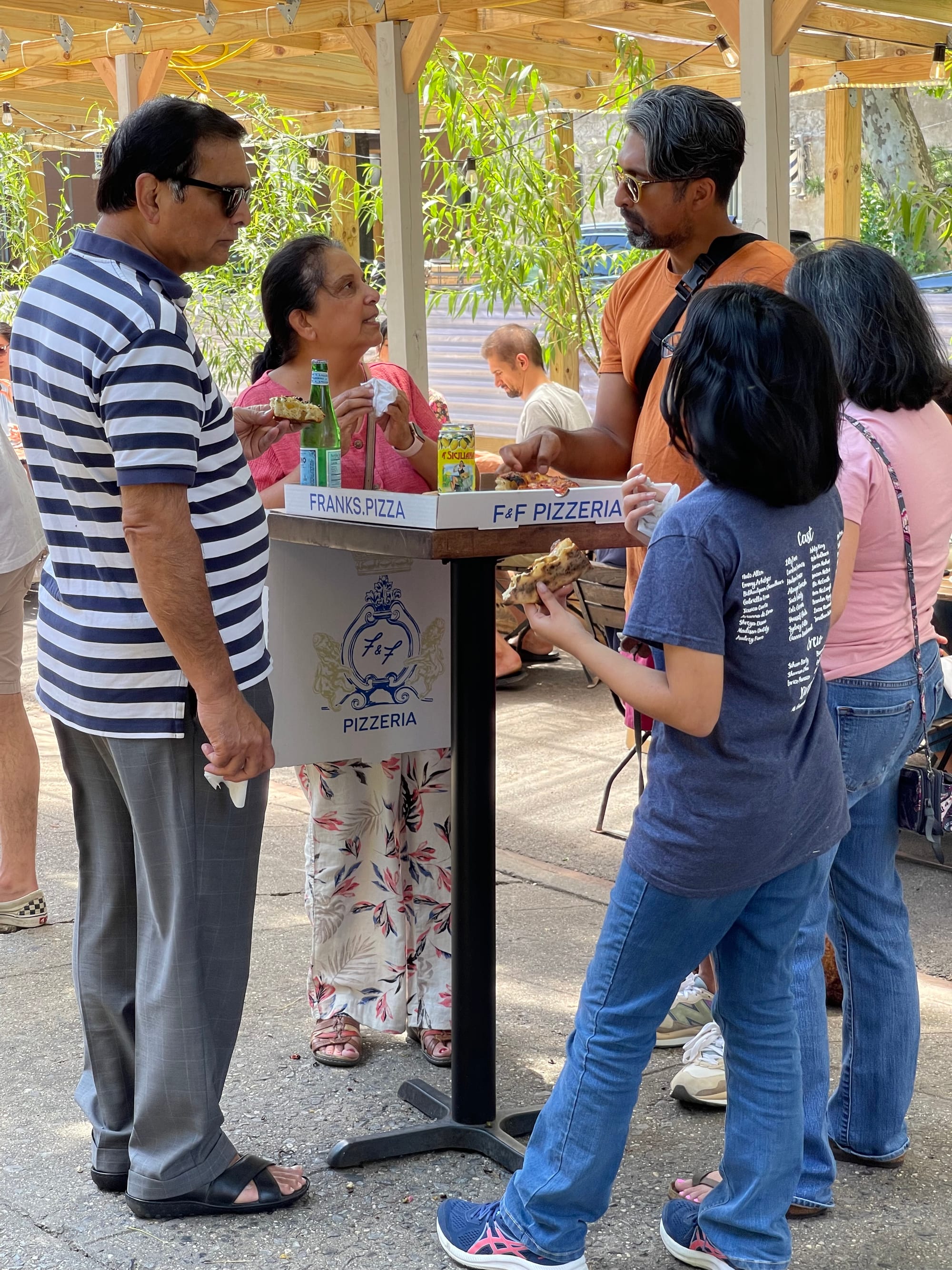
Inside the buildings on this section of the street is a network of courtyard spaces for sit-down dining and events, in this case a wedding.
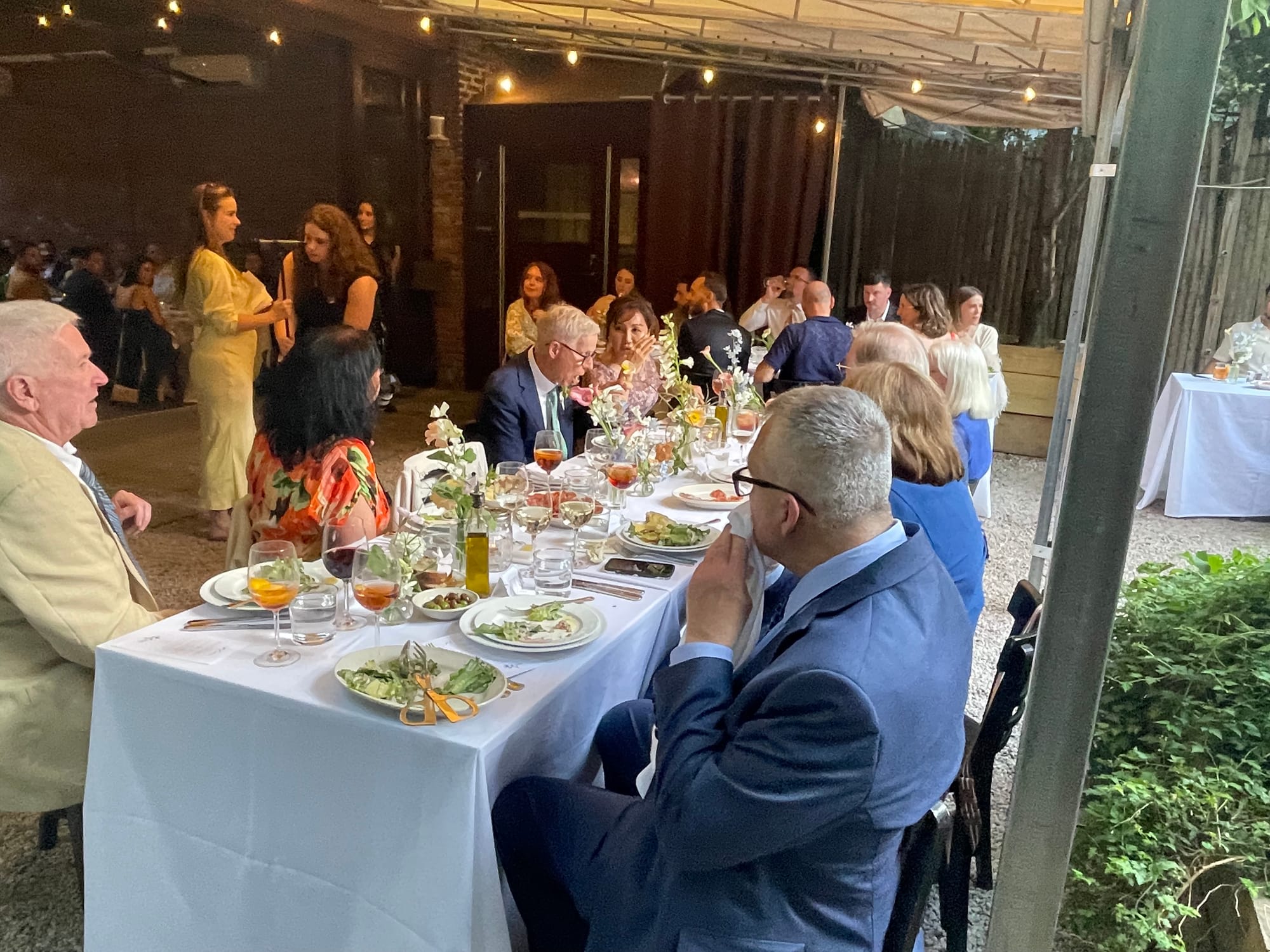
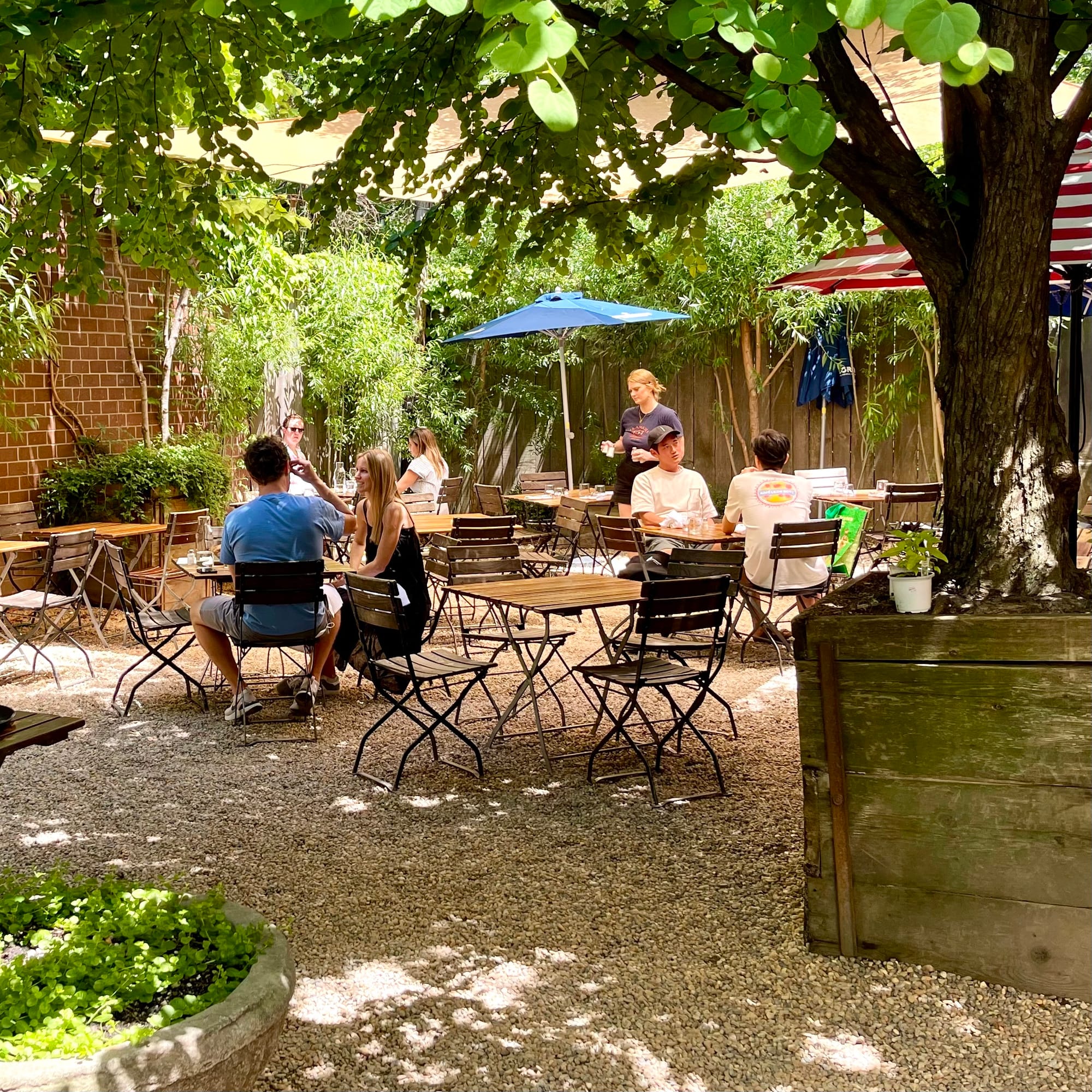
Open air wedding reception
Baby Luc's Pizza
This very popular pizza parlor has an extensive outdoor seating area that is open to everyone. Families and groups meet here, socialize, and have extended meals and meetups. The outside-the-fence seating makes the sidewalks come alive with small groups that add energy and activity to the sidewalk. The area behind the fence has large groups gathering and hosting parties.
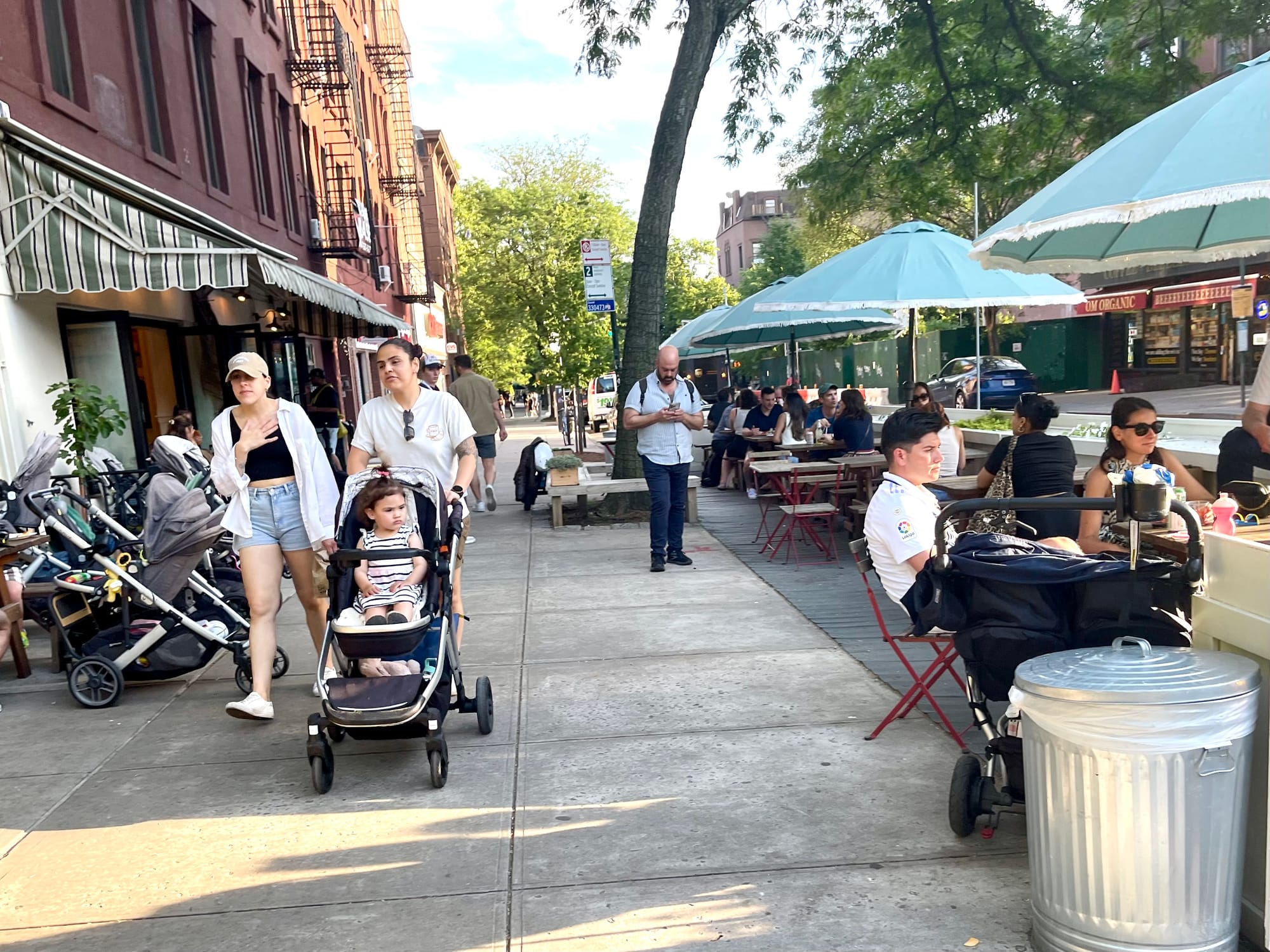
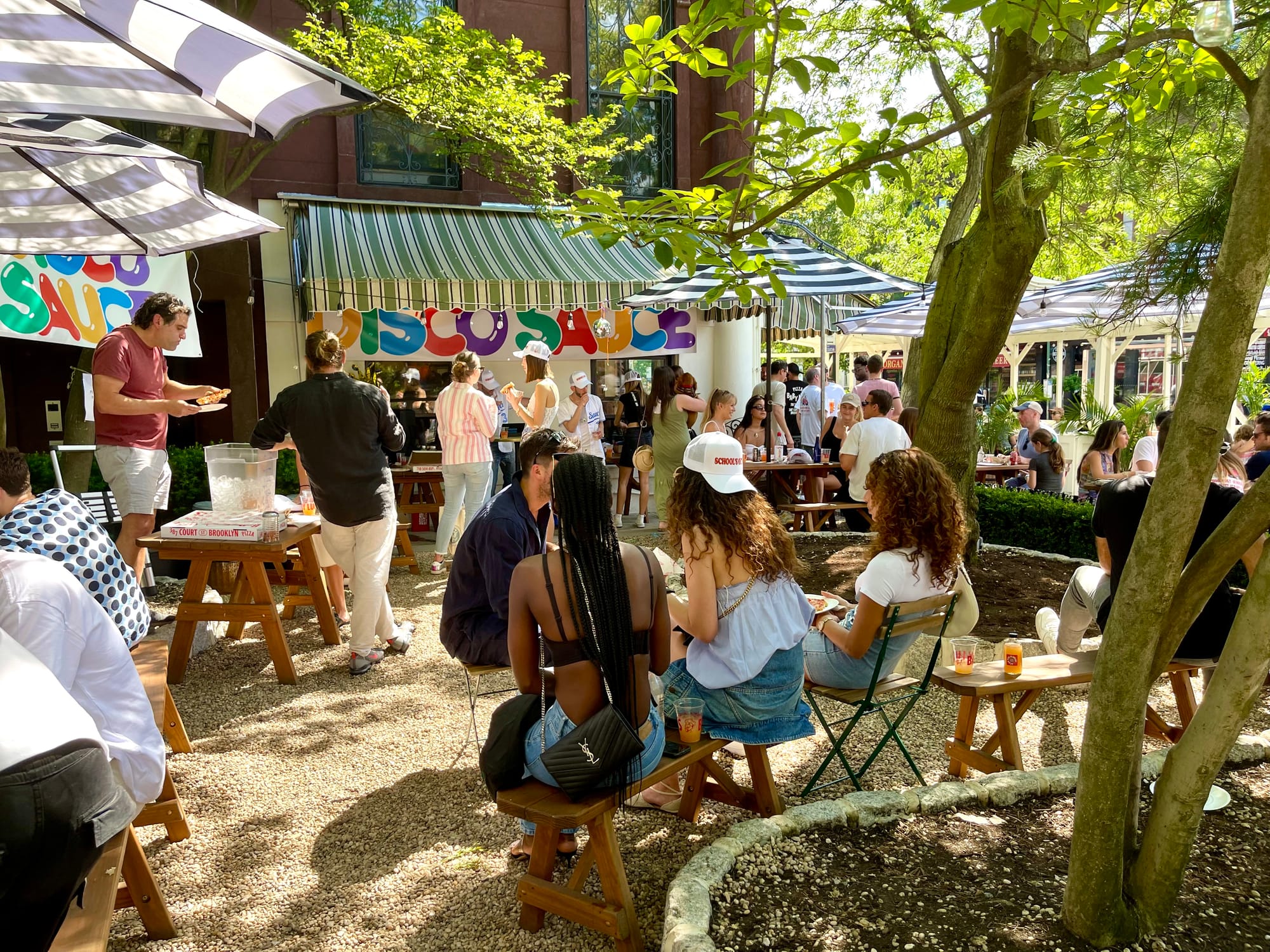
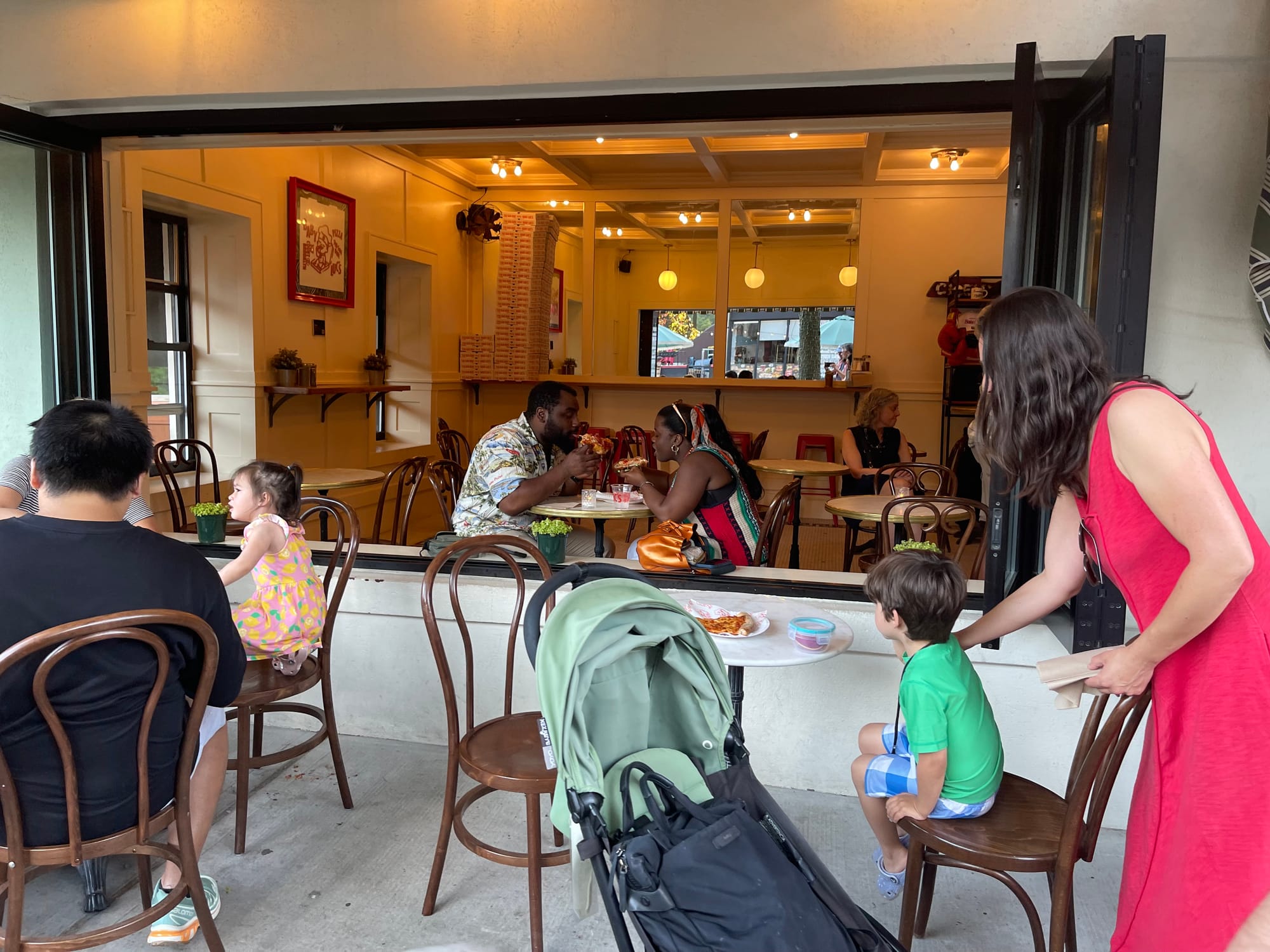
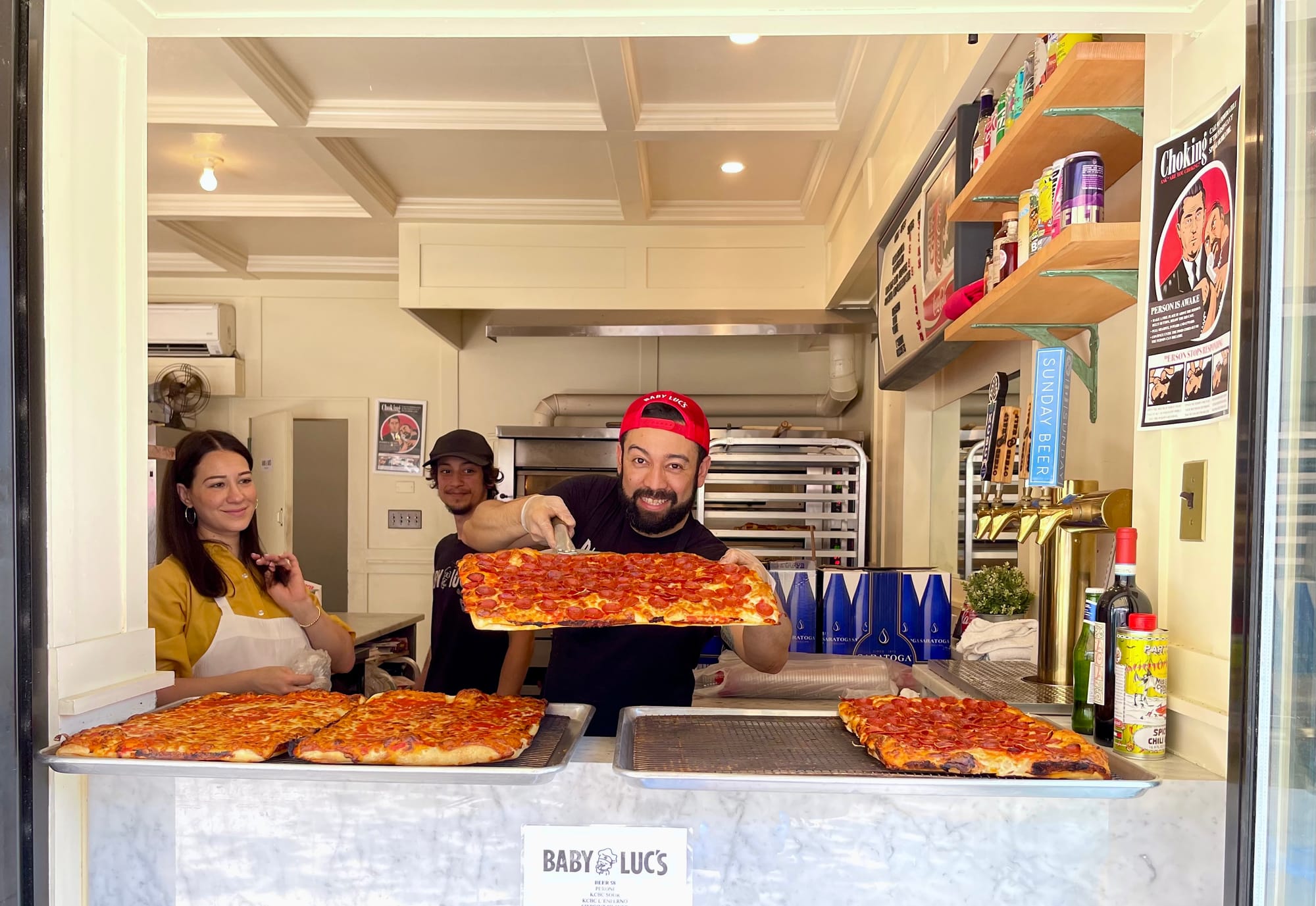
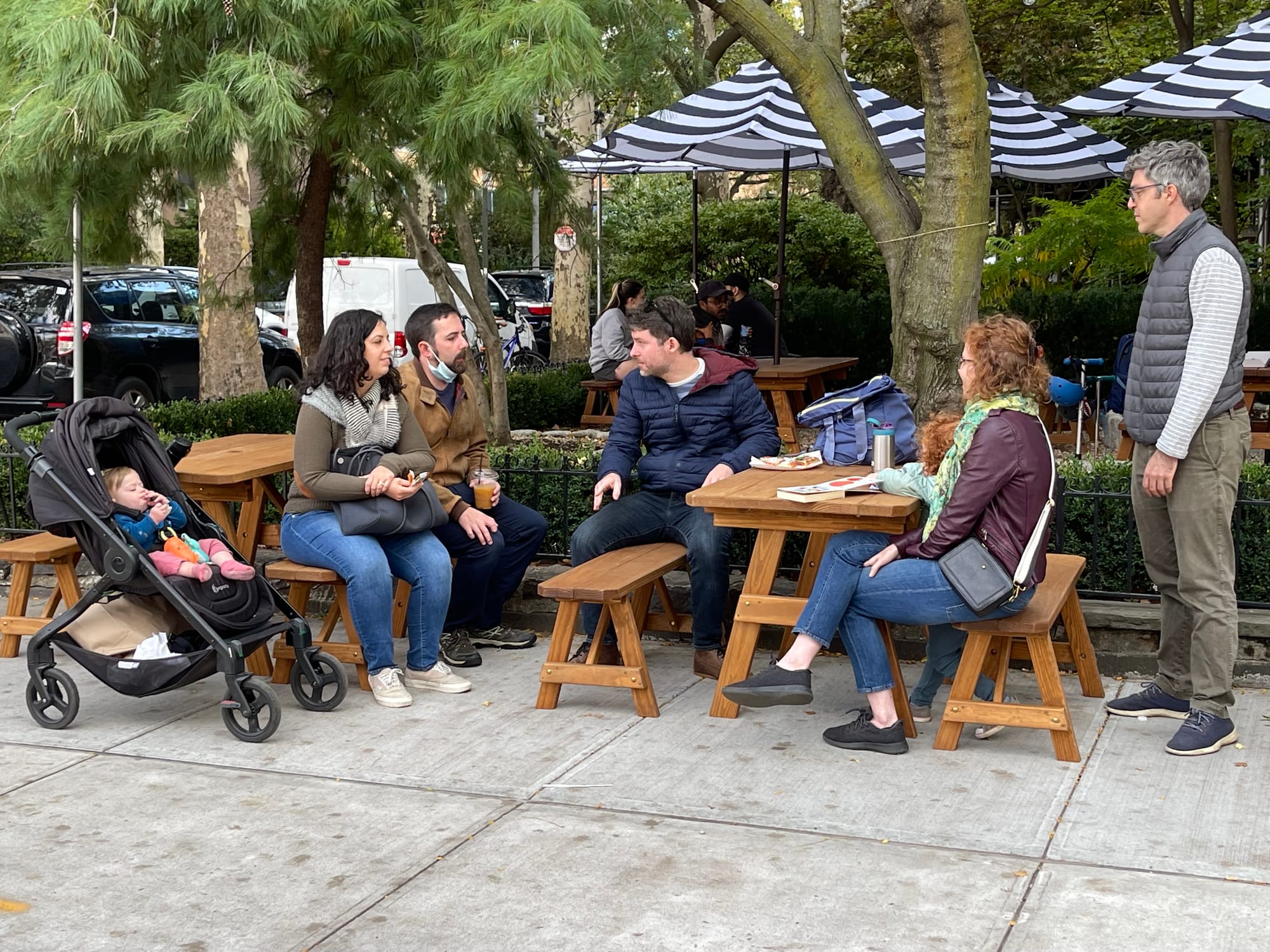
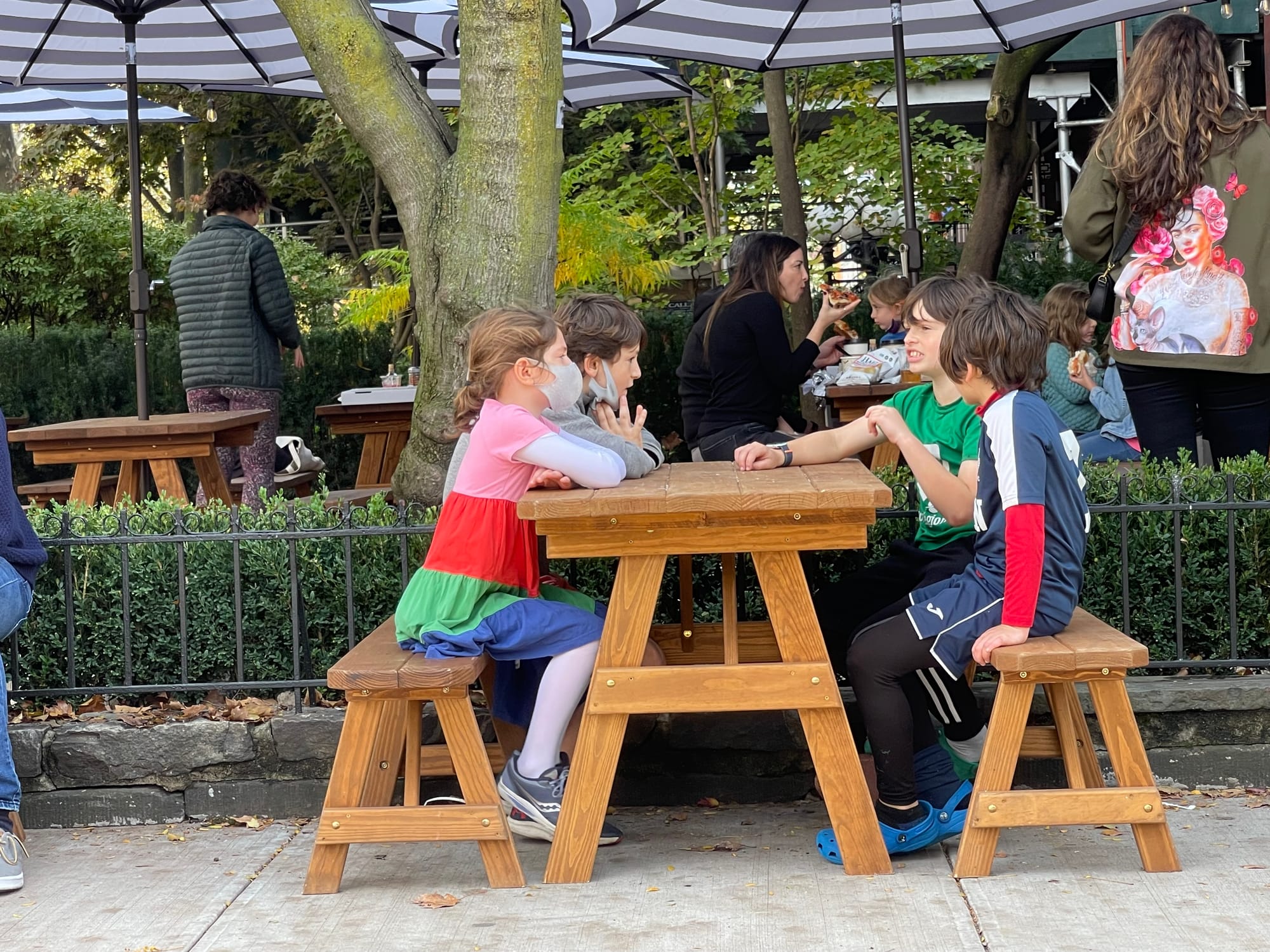
Along the sidewalk, smaller groups of seating add a lot of activity, making it a lively shared space. Collections of baby carriages line the sidewalk.
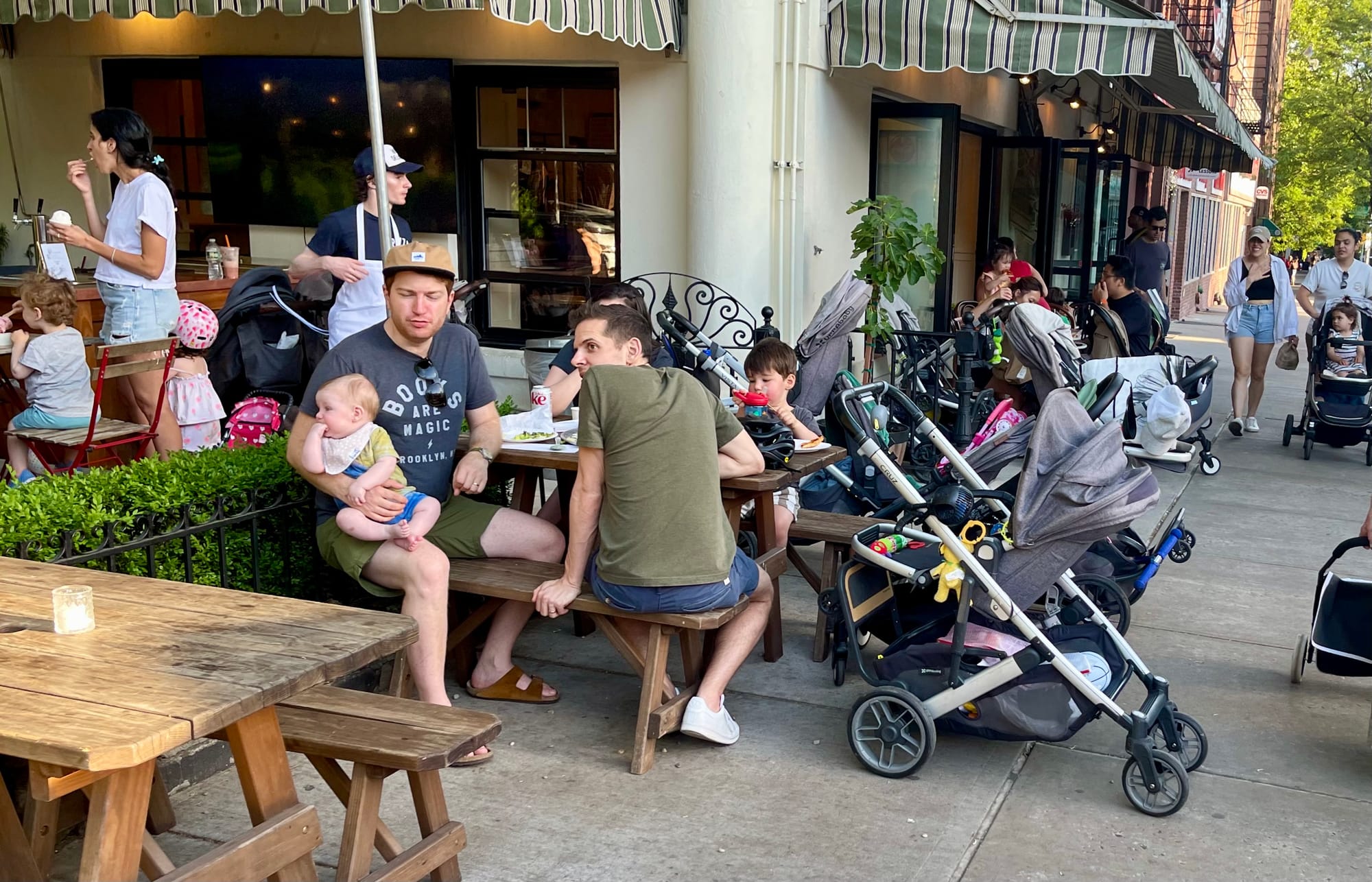
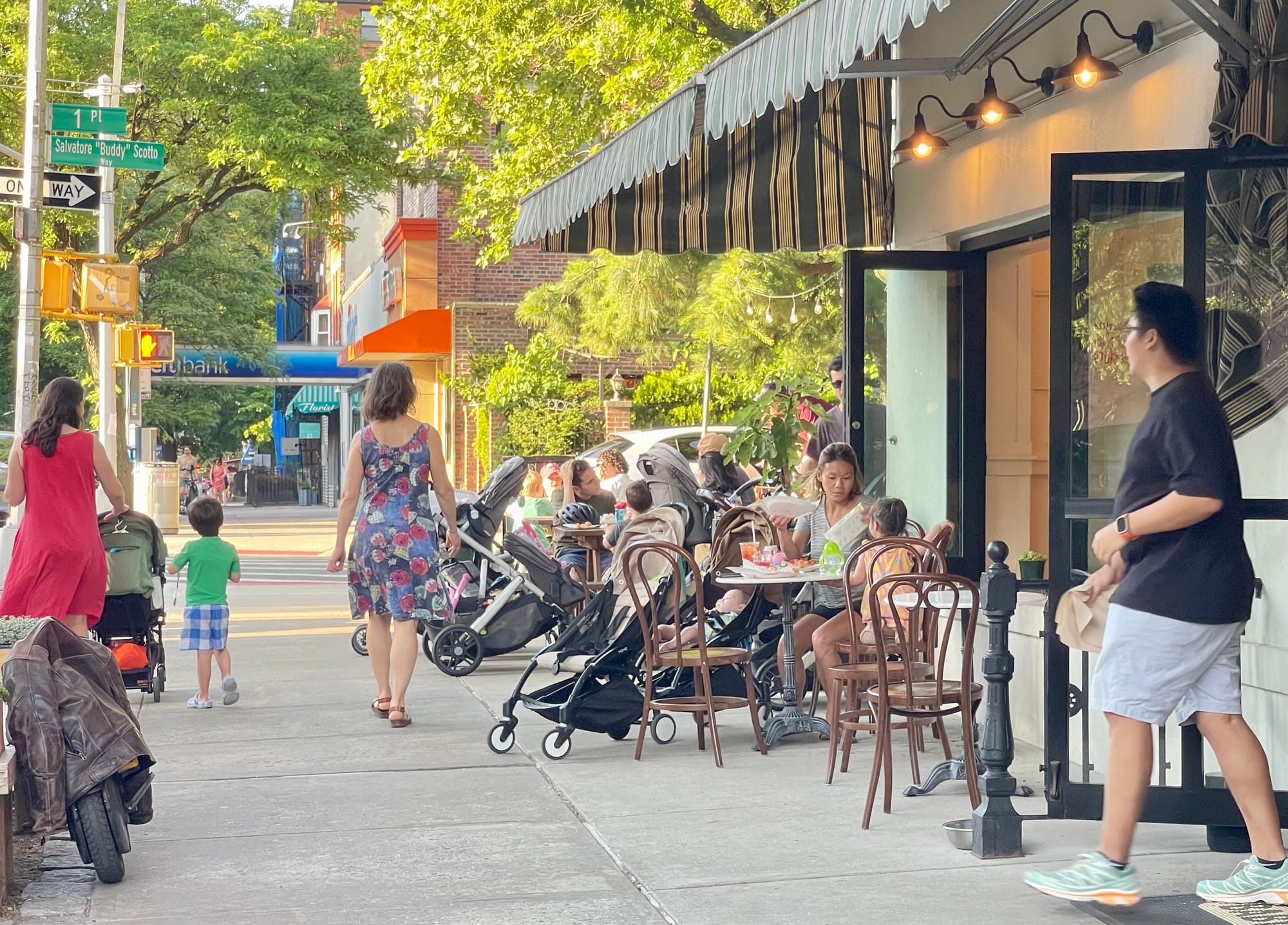
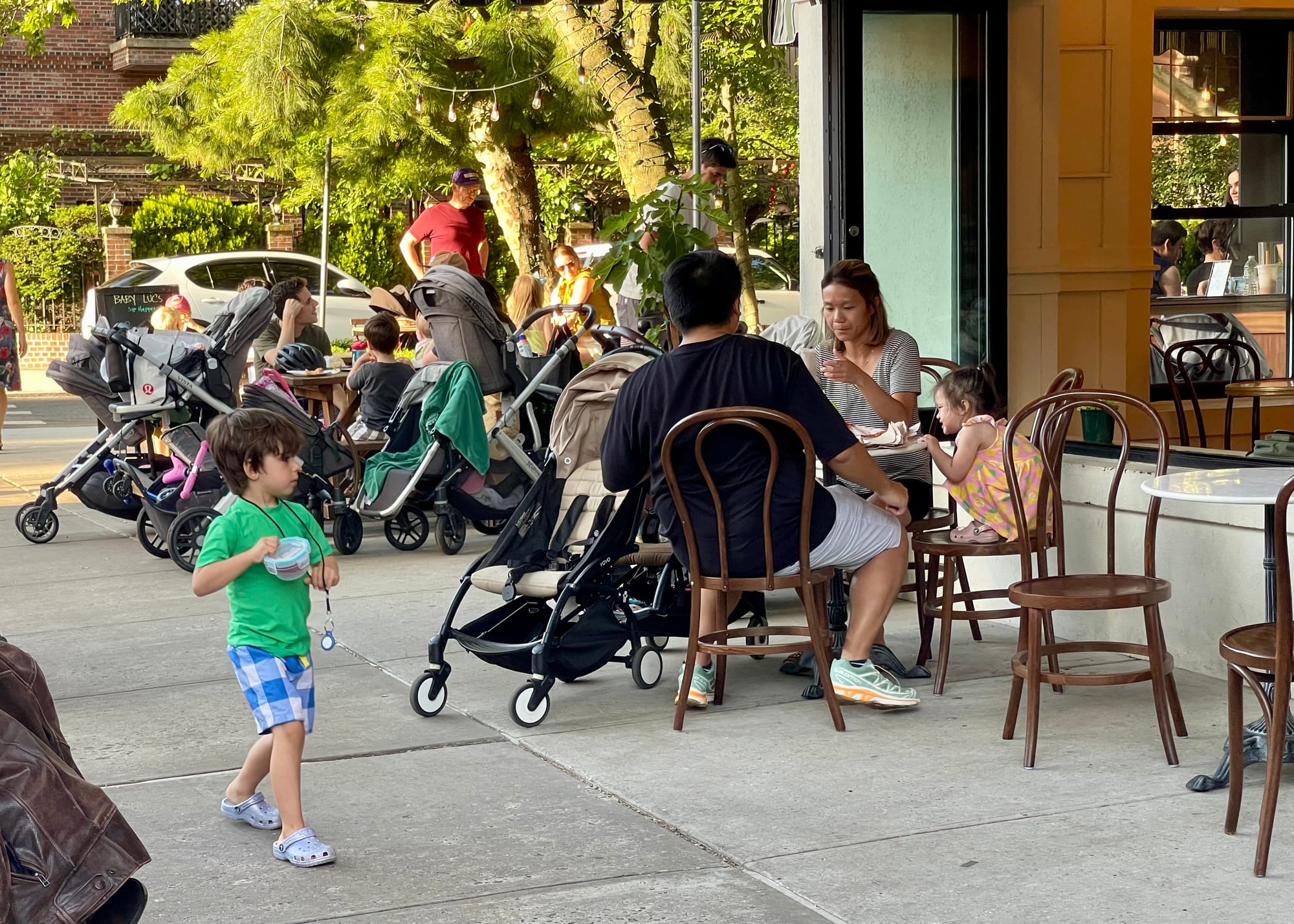
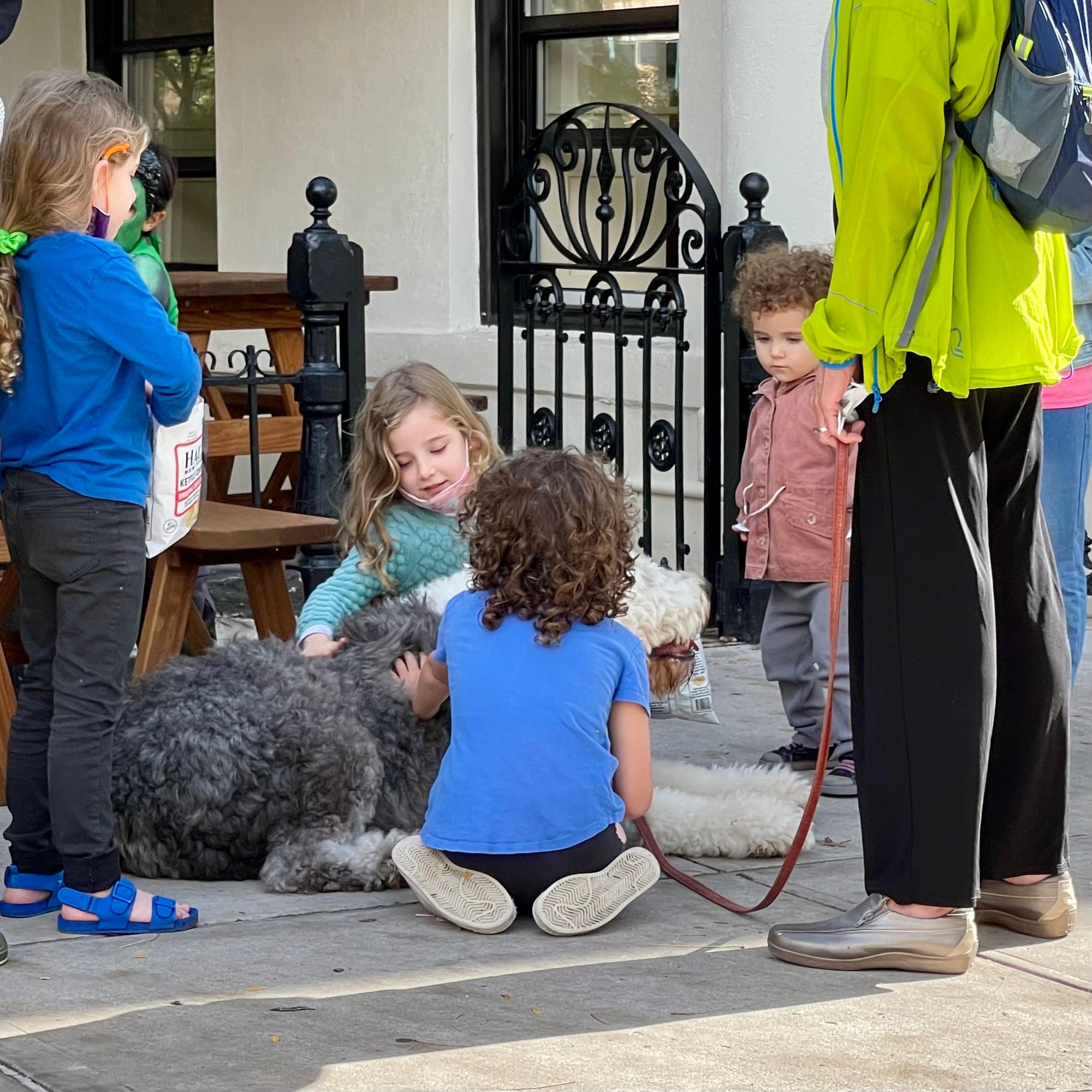
Boran Restaurant
This beautiful, somewhat enclosed shed adds a special atmosphere to the sidewalk of this Thai restaurant in Carroll Gardens. It turns the sidewalk into a safe corridor for pedestrians, children especially, because of how it creates a barrier between them and traffic.
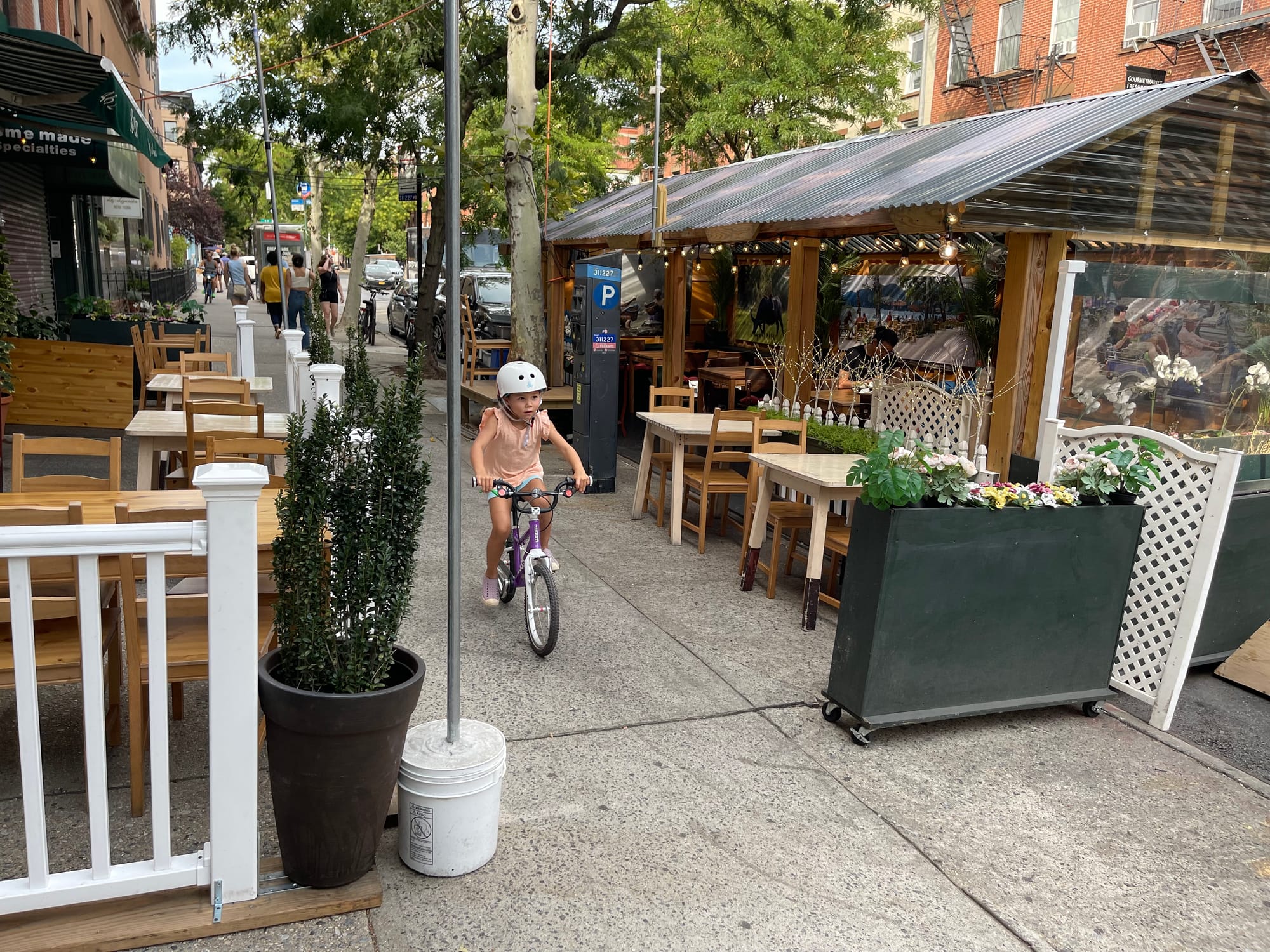
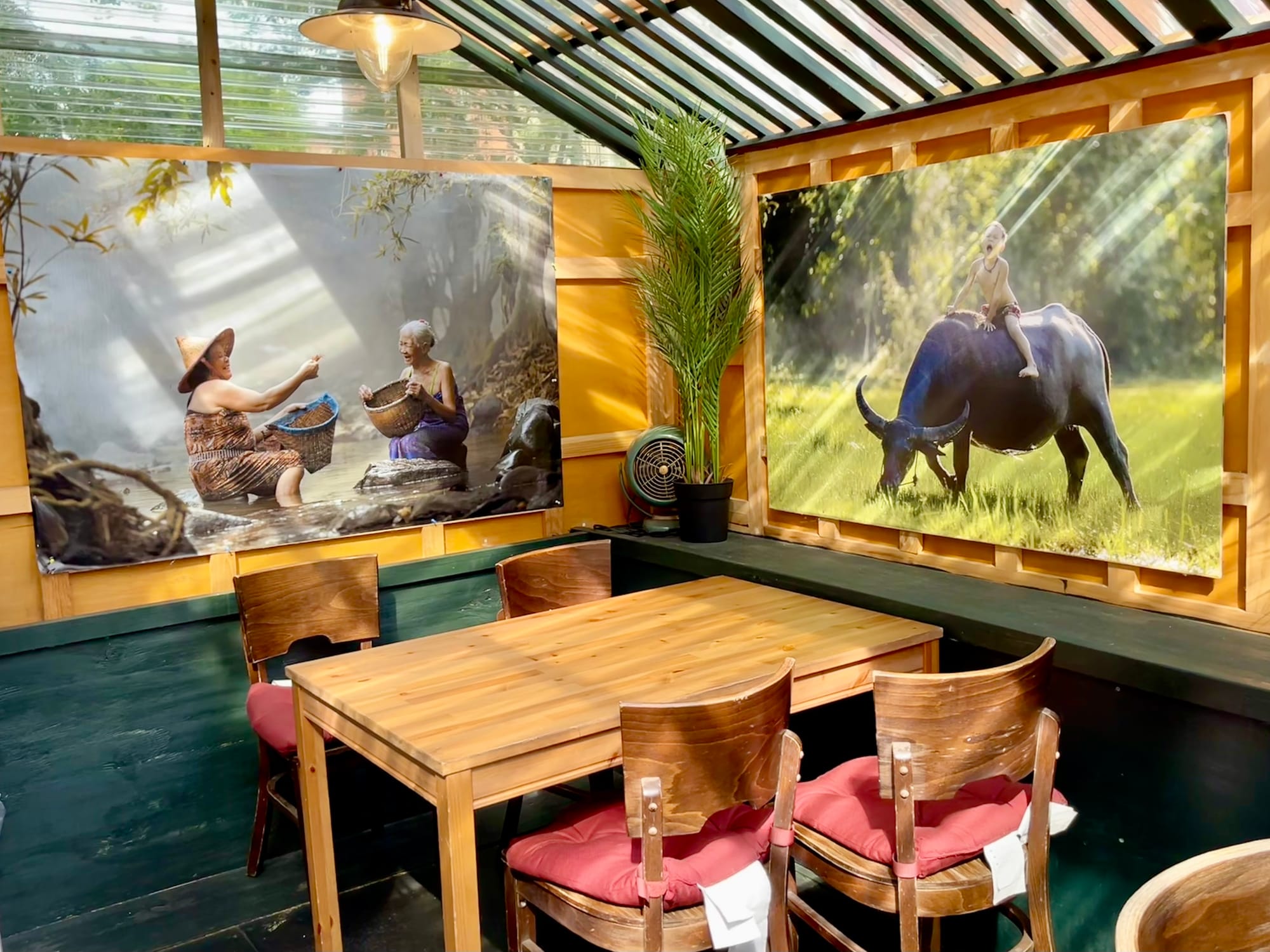
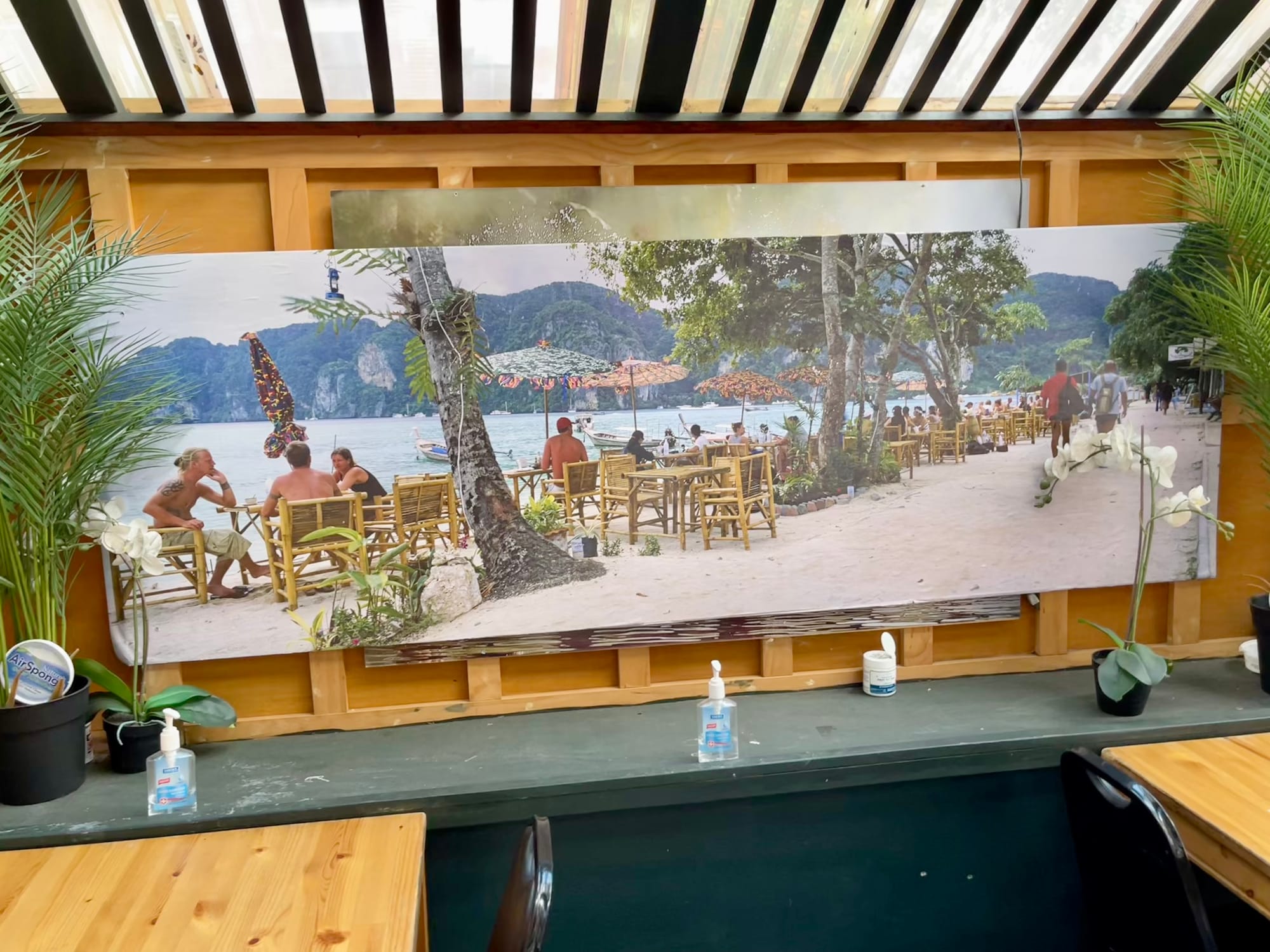
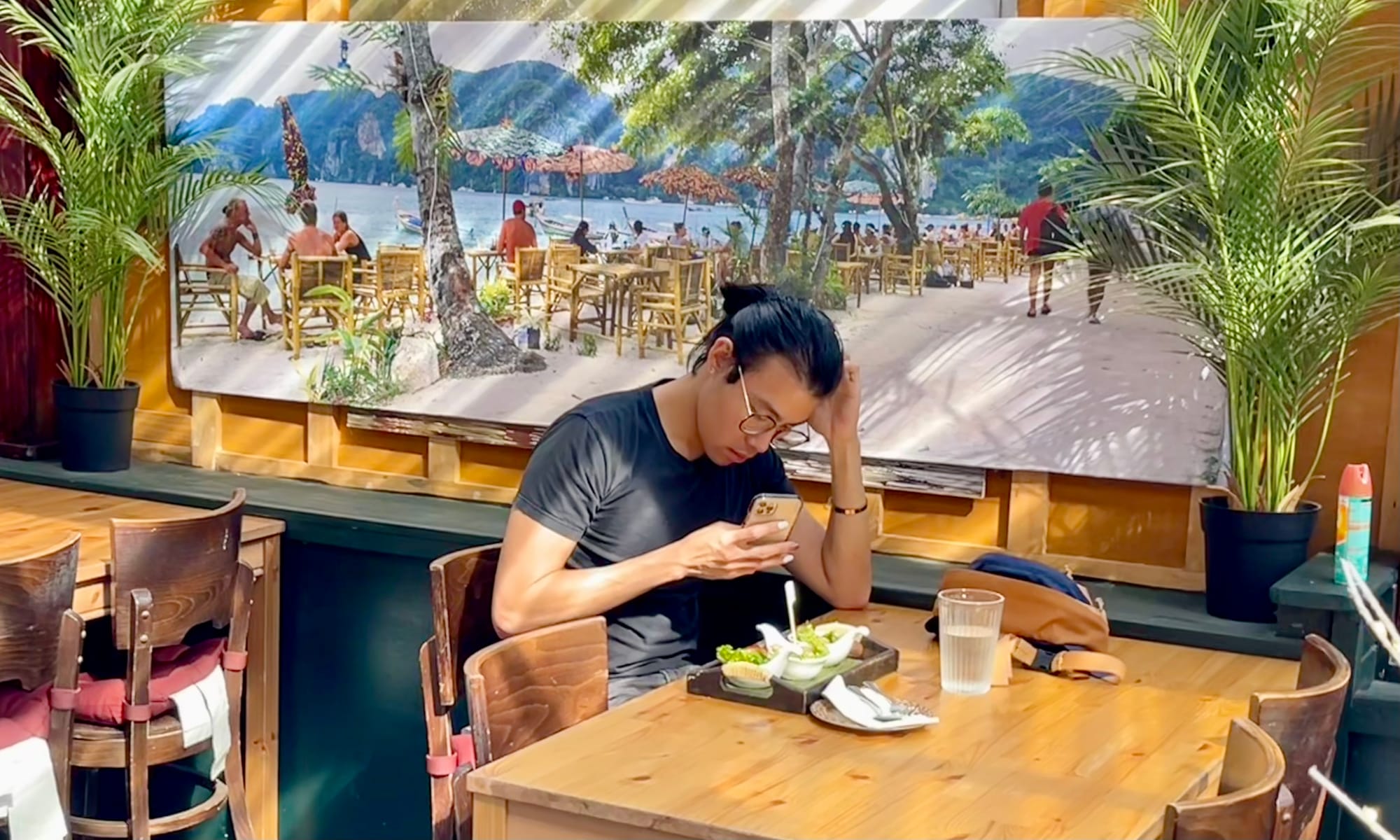
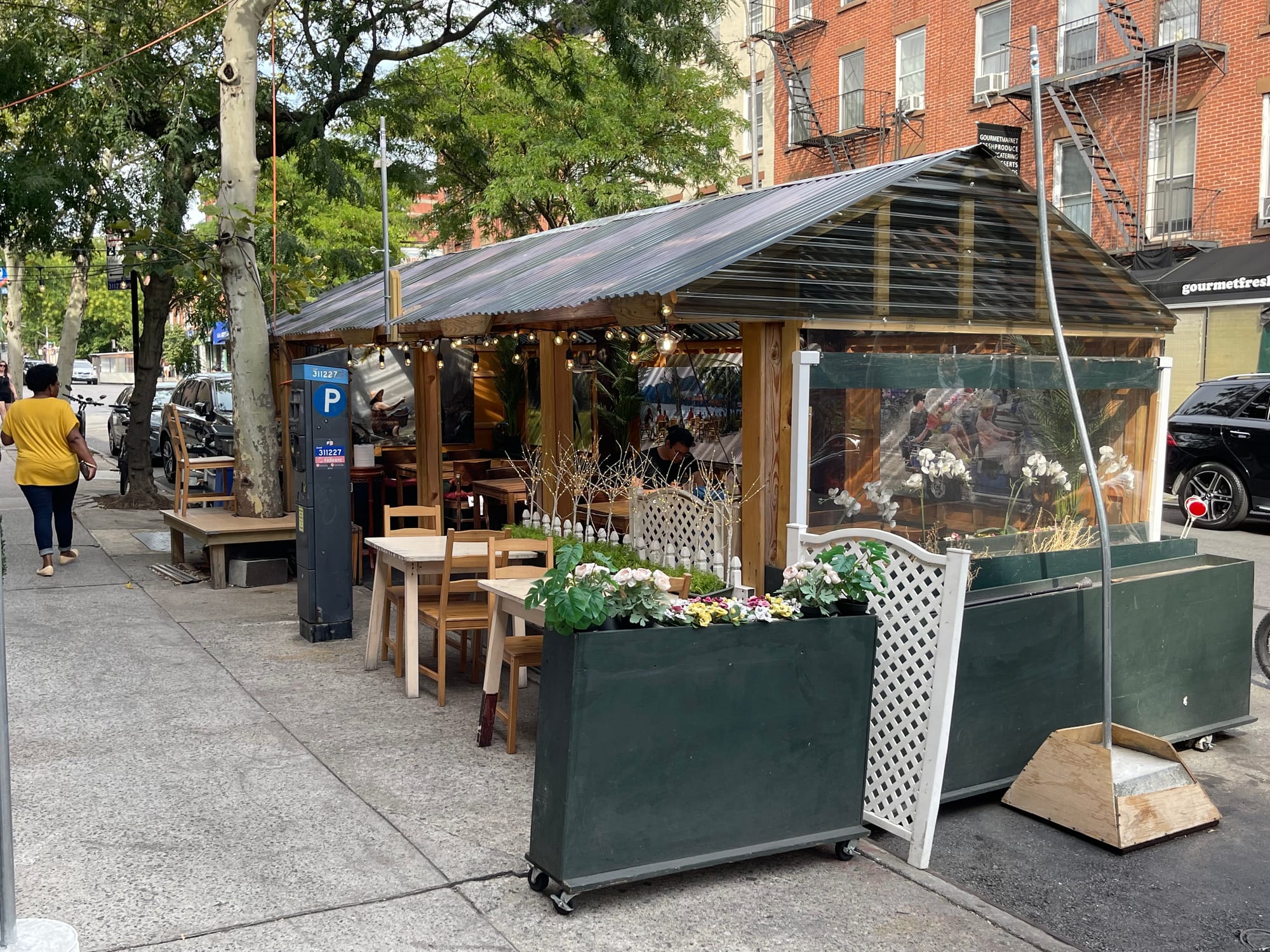
What We Have Lost - A Glimpse of More to Come
This intersection of Warren and Court used to have a bench on the corner. It was a major meeting place because this type of seating is a place to hang out, not just a place to sit and people watch. Being at the corner naturally became a place to spend time with friends, neighbors, and even dogs.
However, this beloved corner bench was taken out and the loss is still felt every time we go by the corner which is now much less lively. The good news is that this bench was so popular it has been replicated in other places throughout the neighborhood.
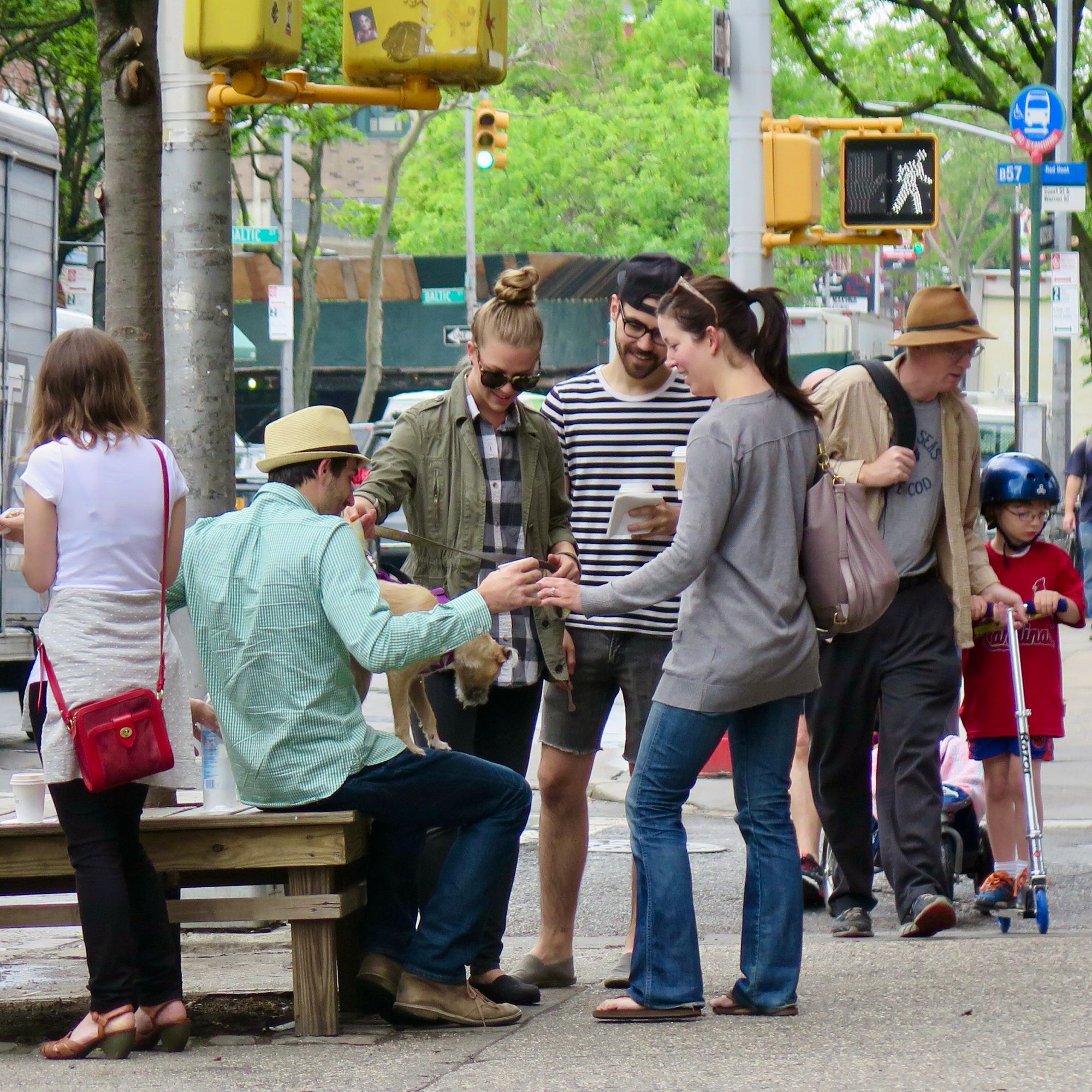


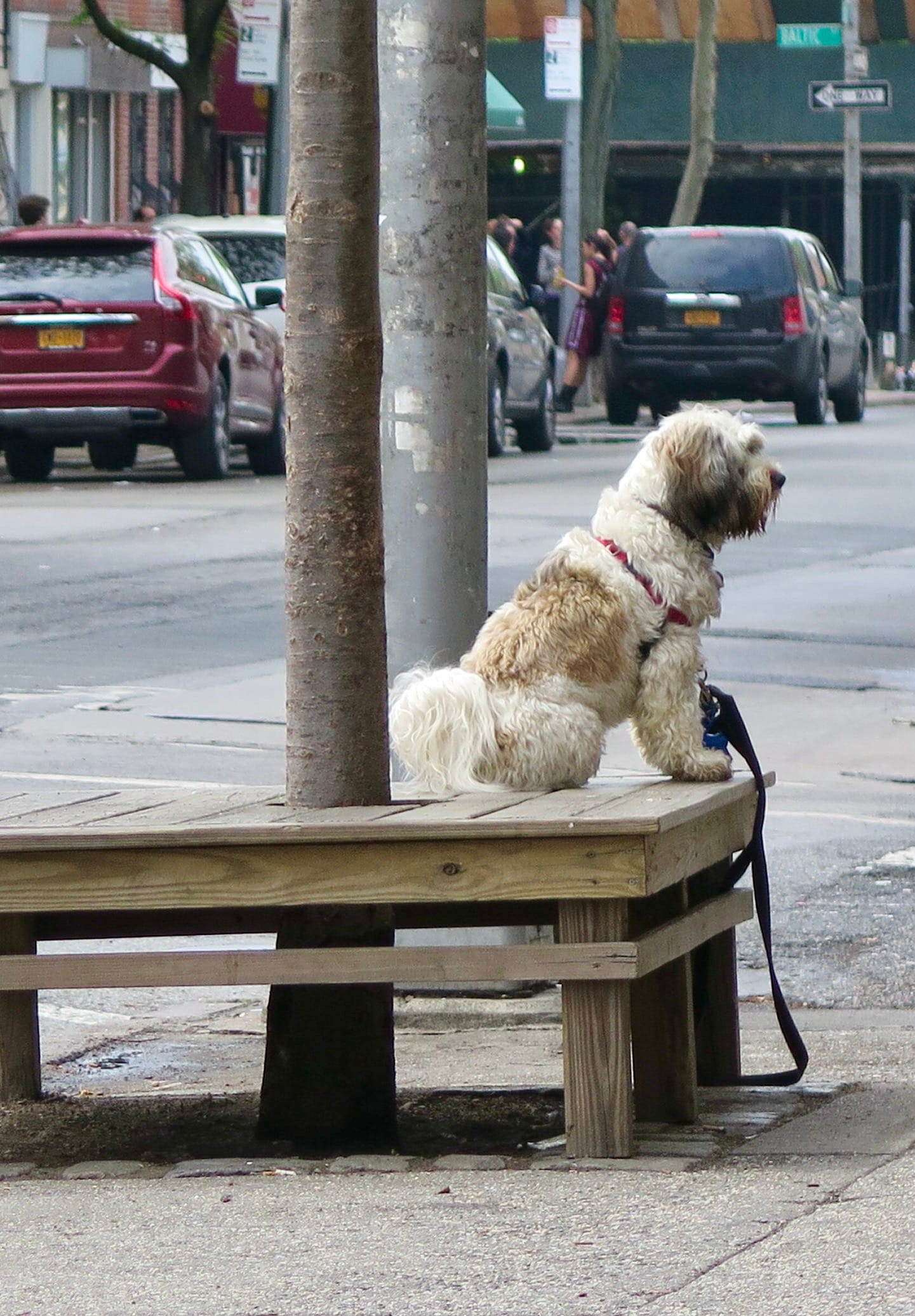
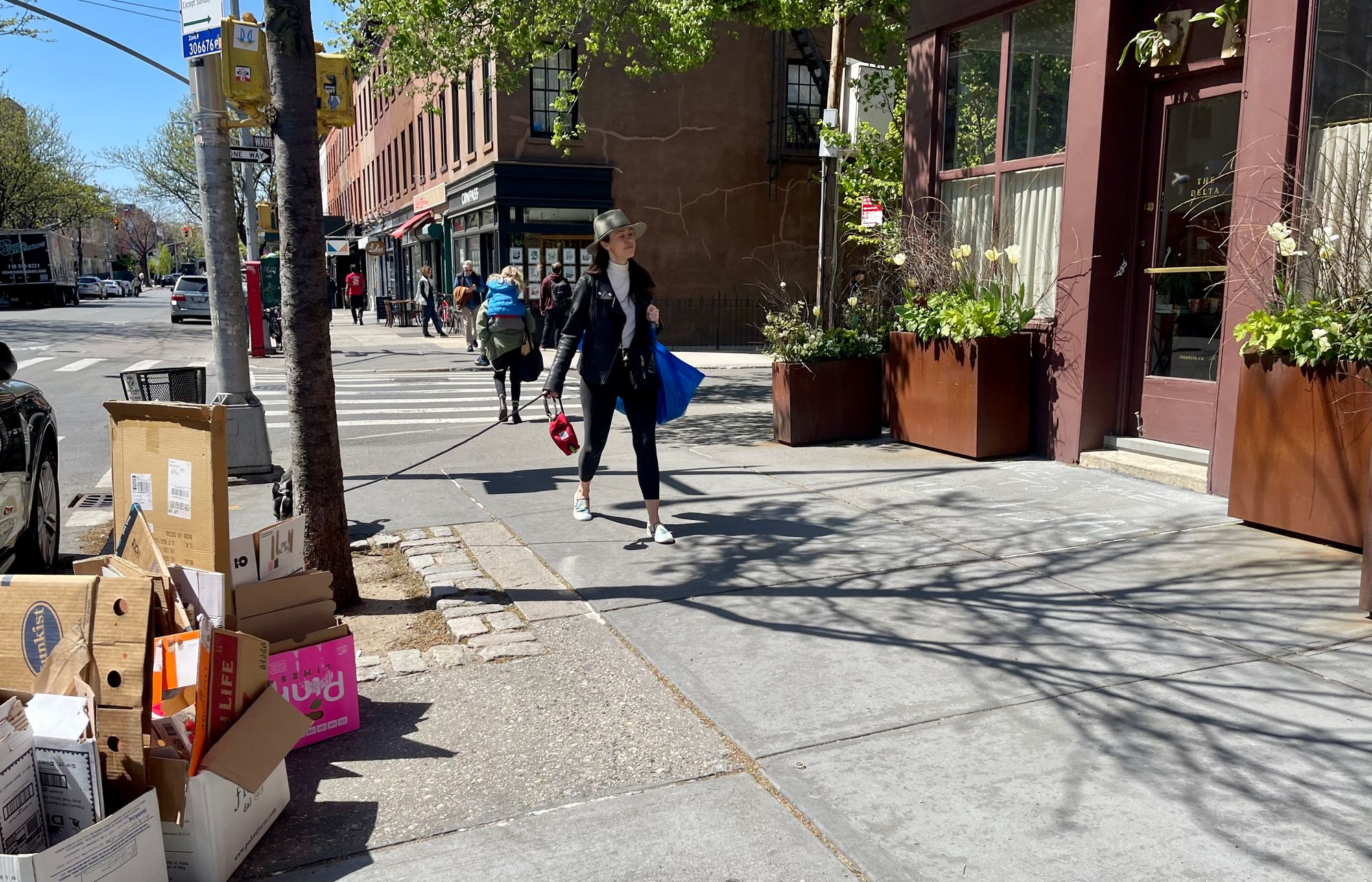
Book Court - Everyone's Favorite Book Store
The Book Court was an amazing community hub centered around a book store where people loved to spend time on the plentiful benches. However, we lost this great place, and you can see on the lower right hand corner what became of it. The chain stores that have occupied the Atlantic Avenue end of Court Street do not understand the dynamics of the street life that older, more established businesses do.
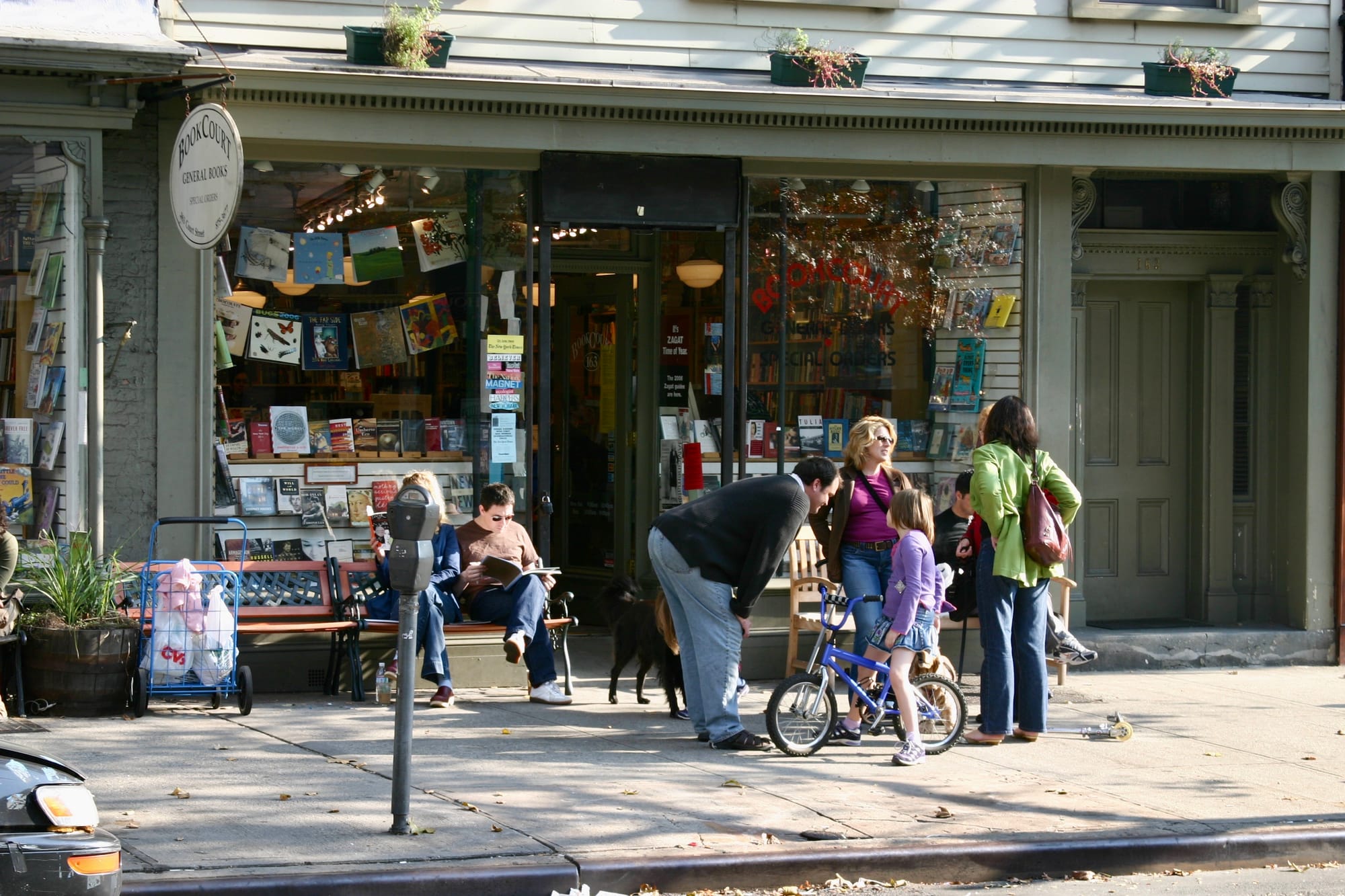
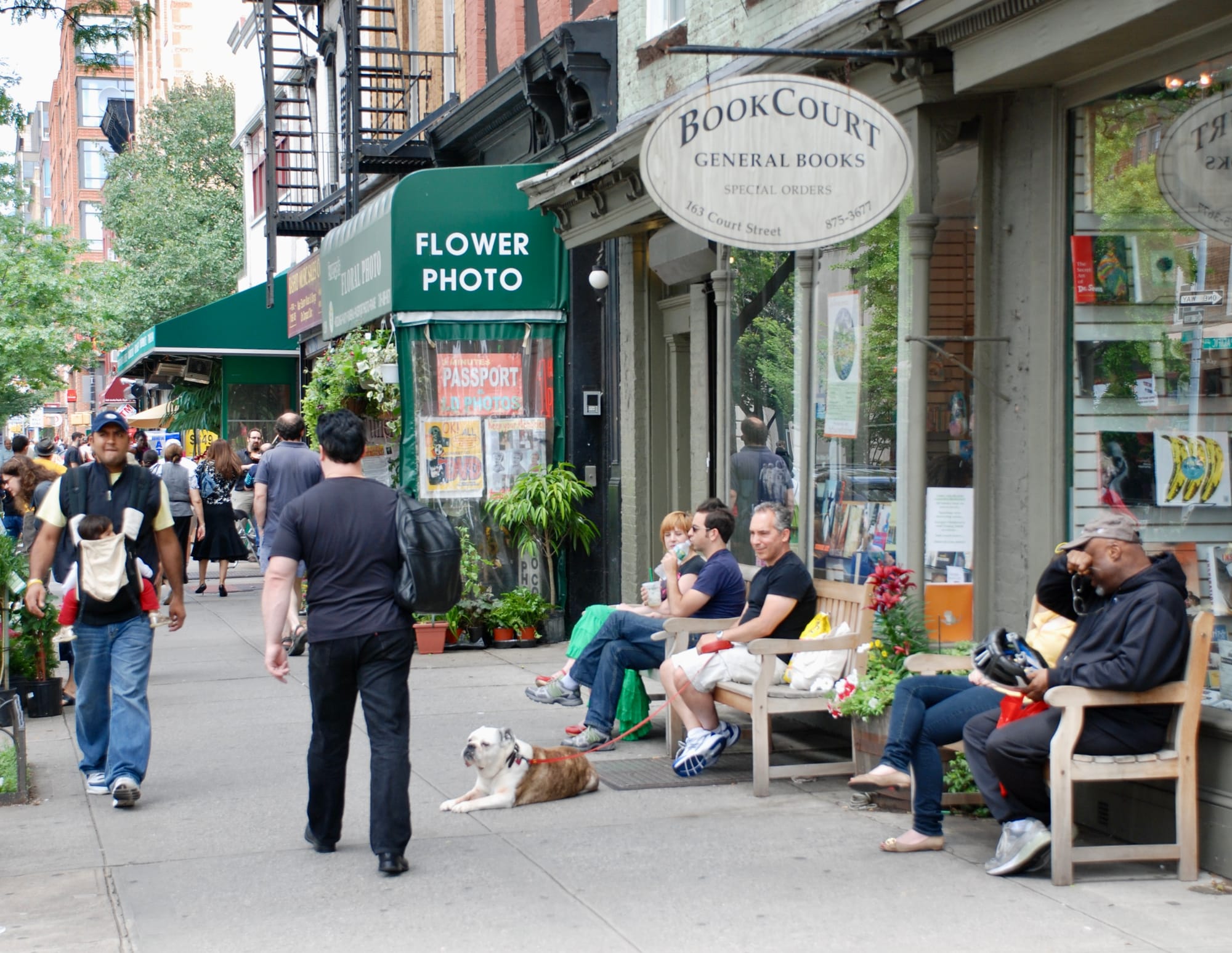
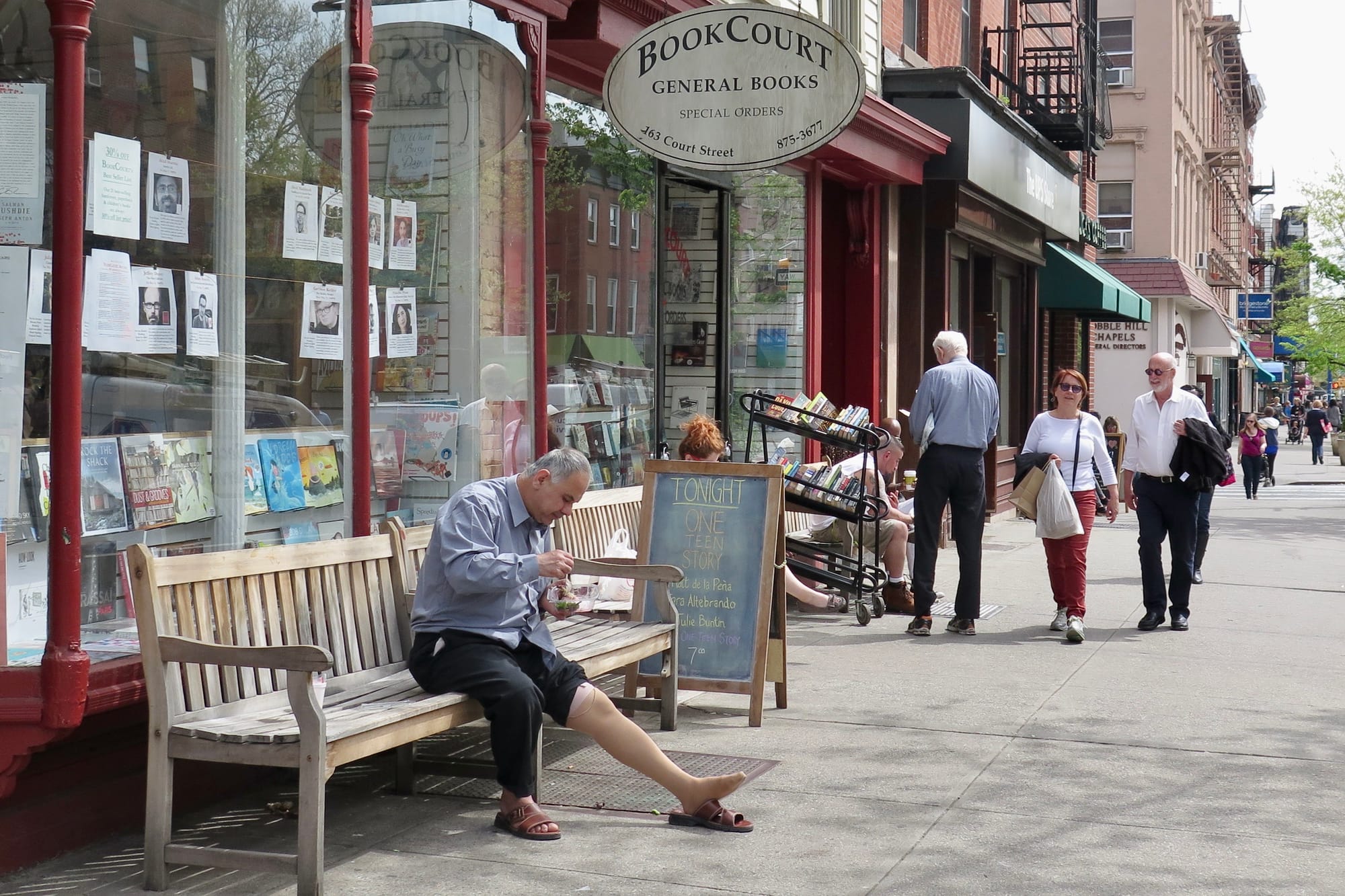
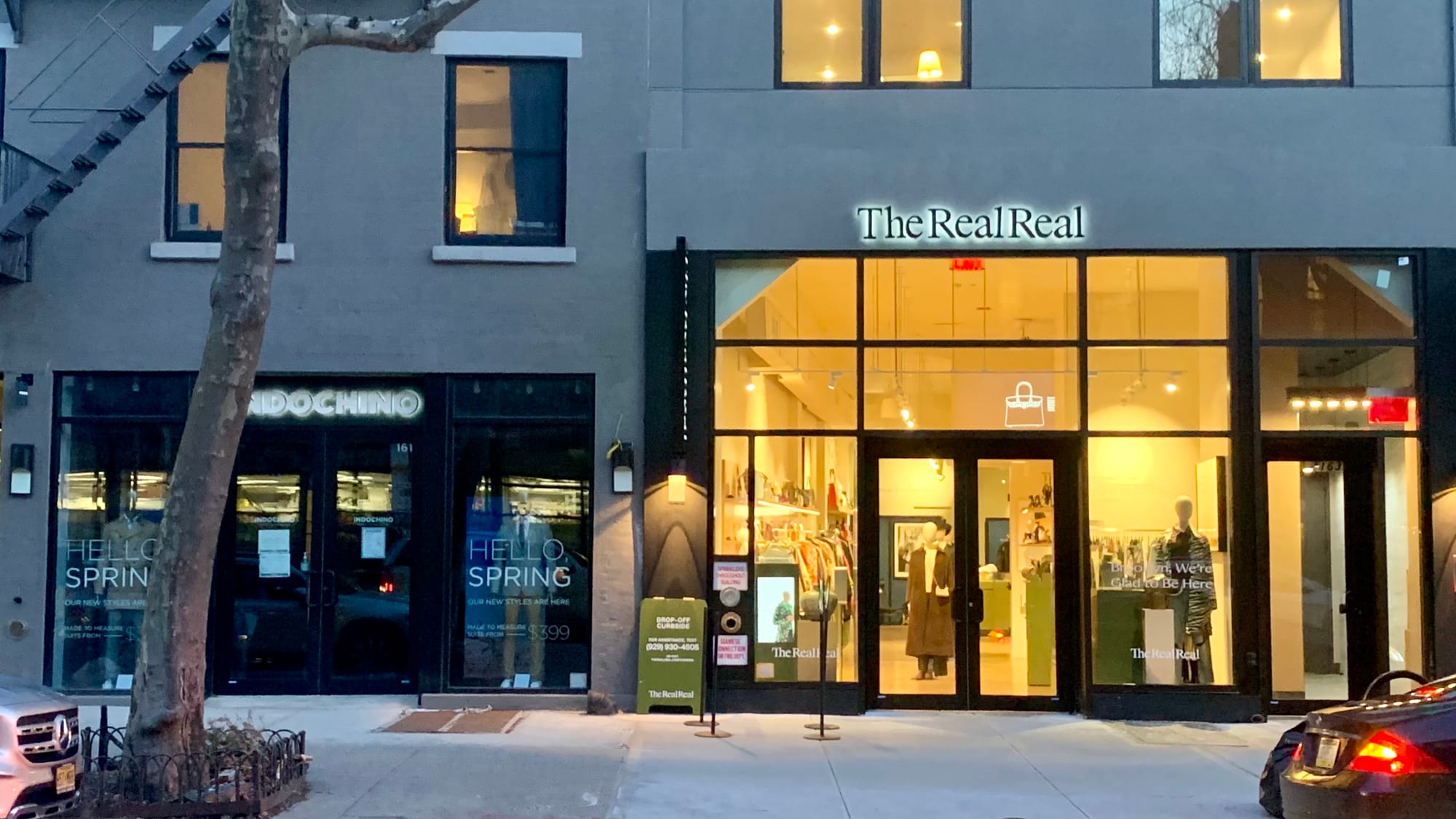
The first images were taken in 2005...the photo of what replaced the Book Corner was taken in 2021
What we are getting instead - places where improvisation doesn't or can't work
When the organic process of a community shaping itself is stifled, the blocks or sections of blocks that are defined by modern buildings or contemporary storefronts of chain stores dominate the urban landscape. They are defined by design that feels generic, out-of-place, and doesn't fit with the community, and they don't integrate with neighboring establishments or sidewalk life. They replace traditional anchors like small local businesses, which are what give communities their unique character, vibrancy, and lovability.
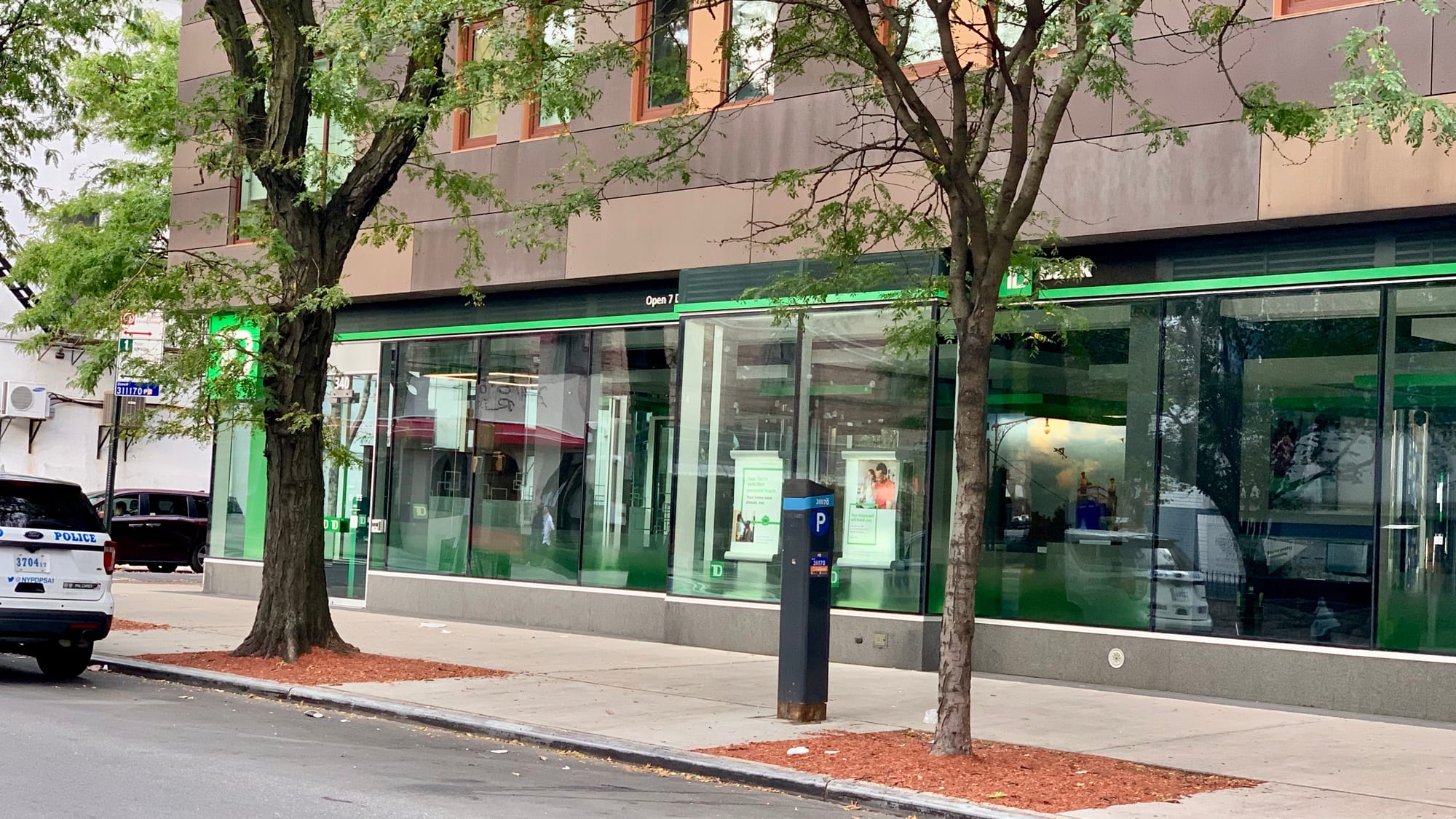
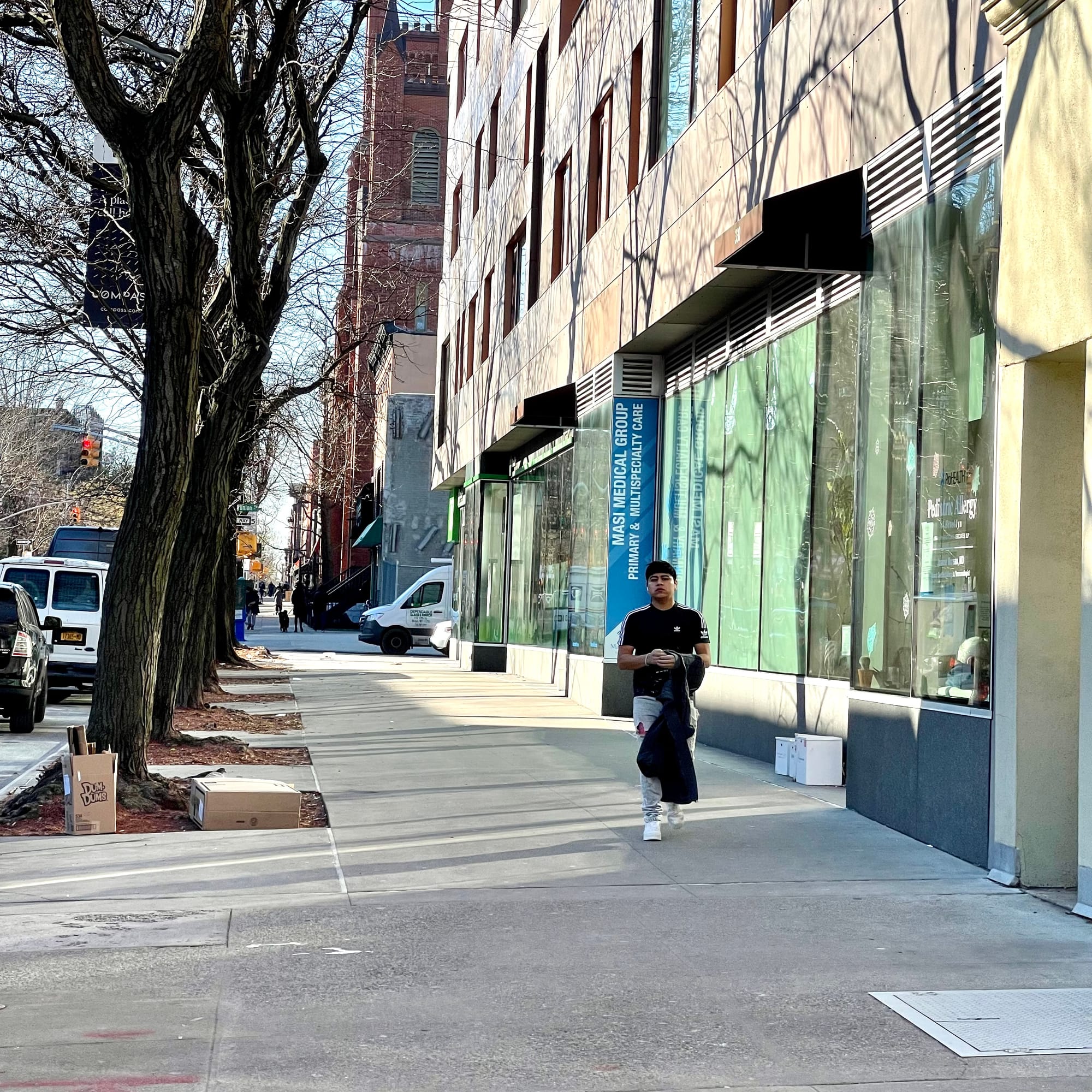
Court Street
There are also various examples of new developments, like the residential tower below, that feel so out of place that they become rejected by the community, true "eyesores" that people avoid and that destroy the lively energy of a once vibrant block.
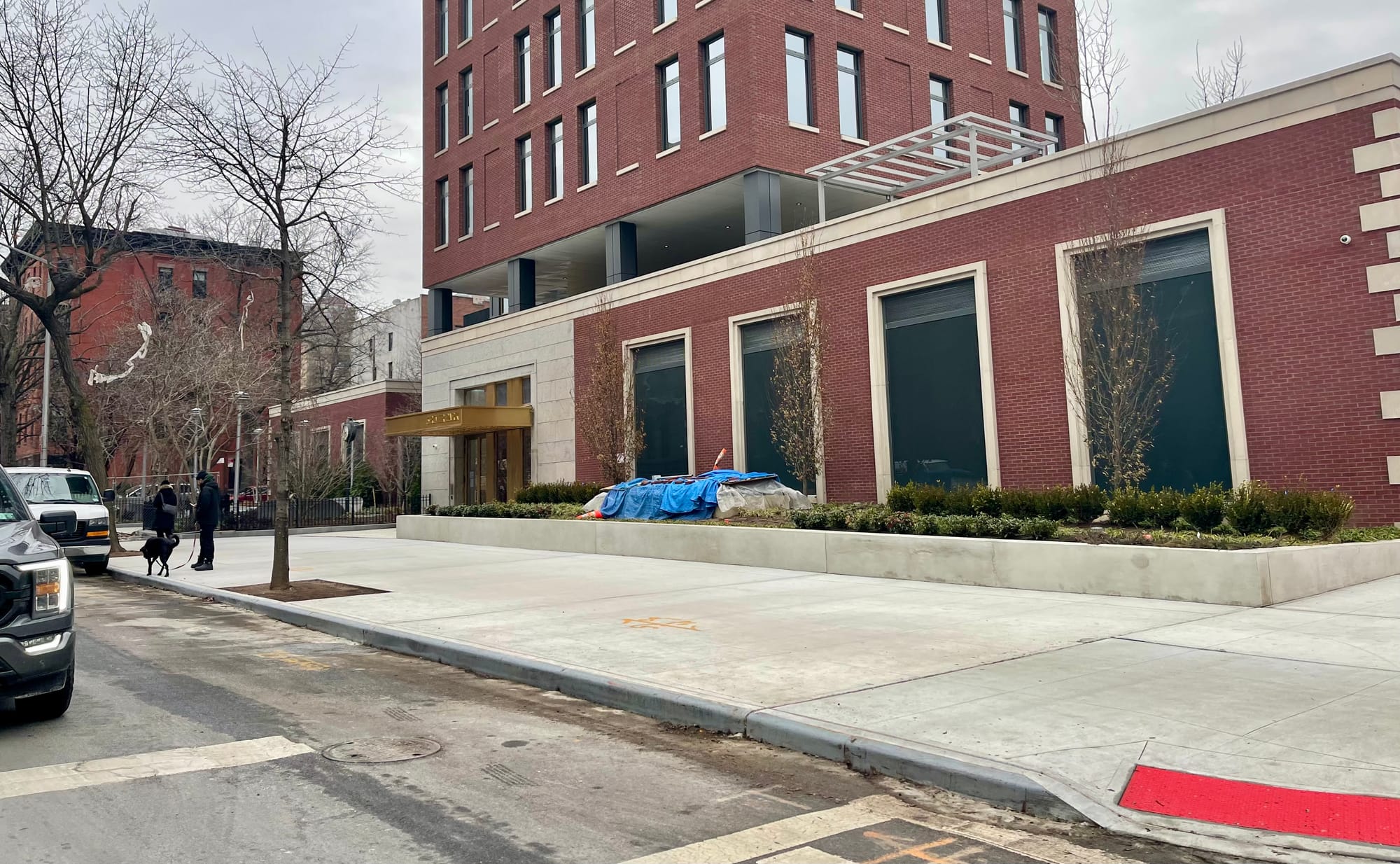
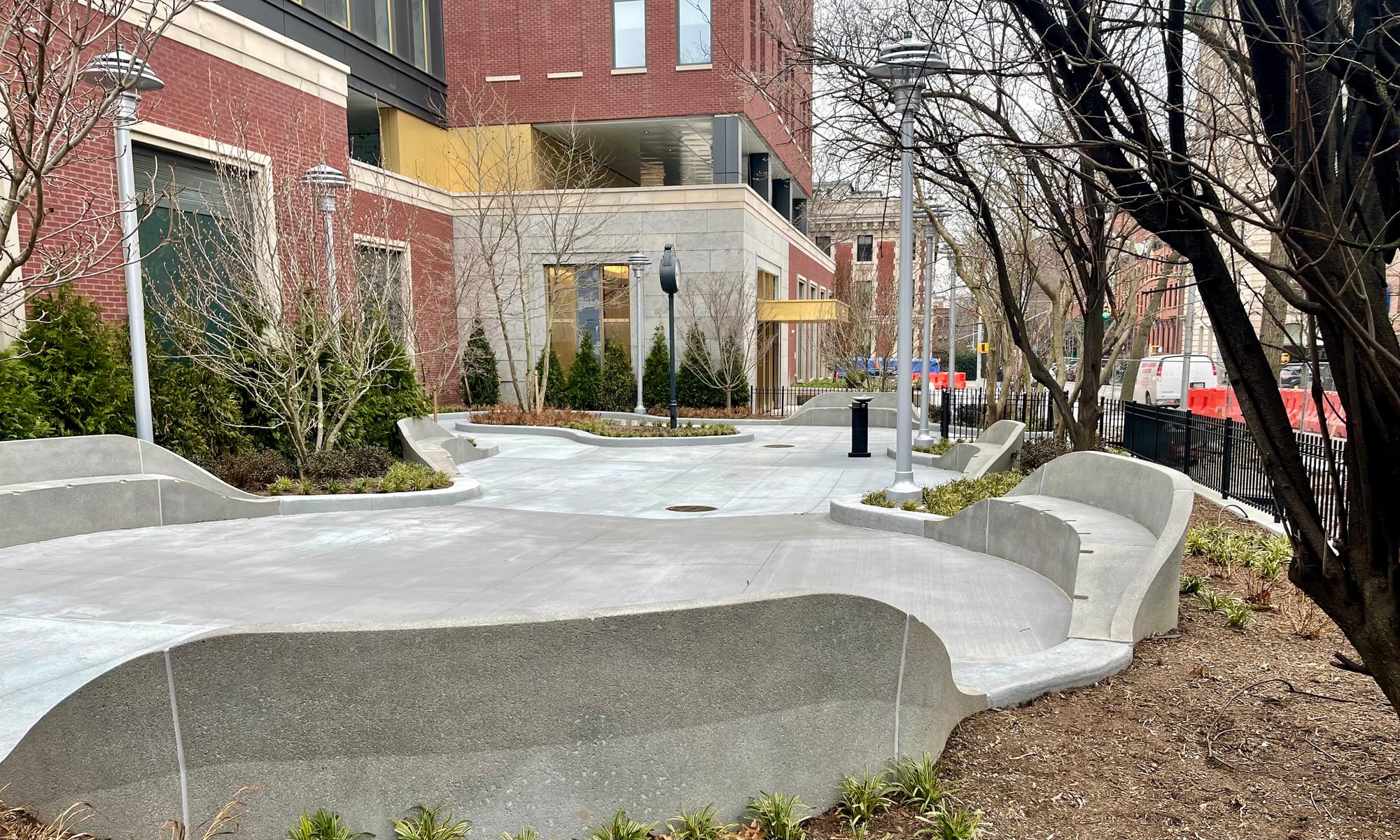
Henry Street
Summary
The Need for Improvisation and Reciprocal Gestures
A "social hub" can only, by nature, be community led. It is local, even hyper local. It happens when changes to the sidewalk are chosen and implemented by shop or restaurant owners themselves because they resonate with the business' offerings and goals and reflect the patrons and the community. This leads to a sense of ownership and pride in the vibrant hubs that end up being created.
Improvisation is the driving force behind this process.
It happens when the business owners and community members develop a unique look and feel for each place that reflects the neighborhood. Improvisation and creativity flourish when there are no mandated rules, but rather each individual store, restaurant, or other kind of establishment is empowered to create their own space using the "laws of attraction" that work best for their business. Local business owners are sensitive to their neighbors' wants and needs and adapt their offerings to them in ways that benefit both.
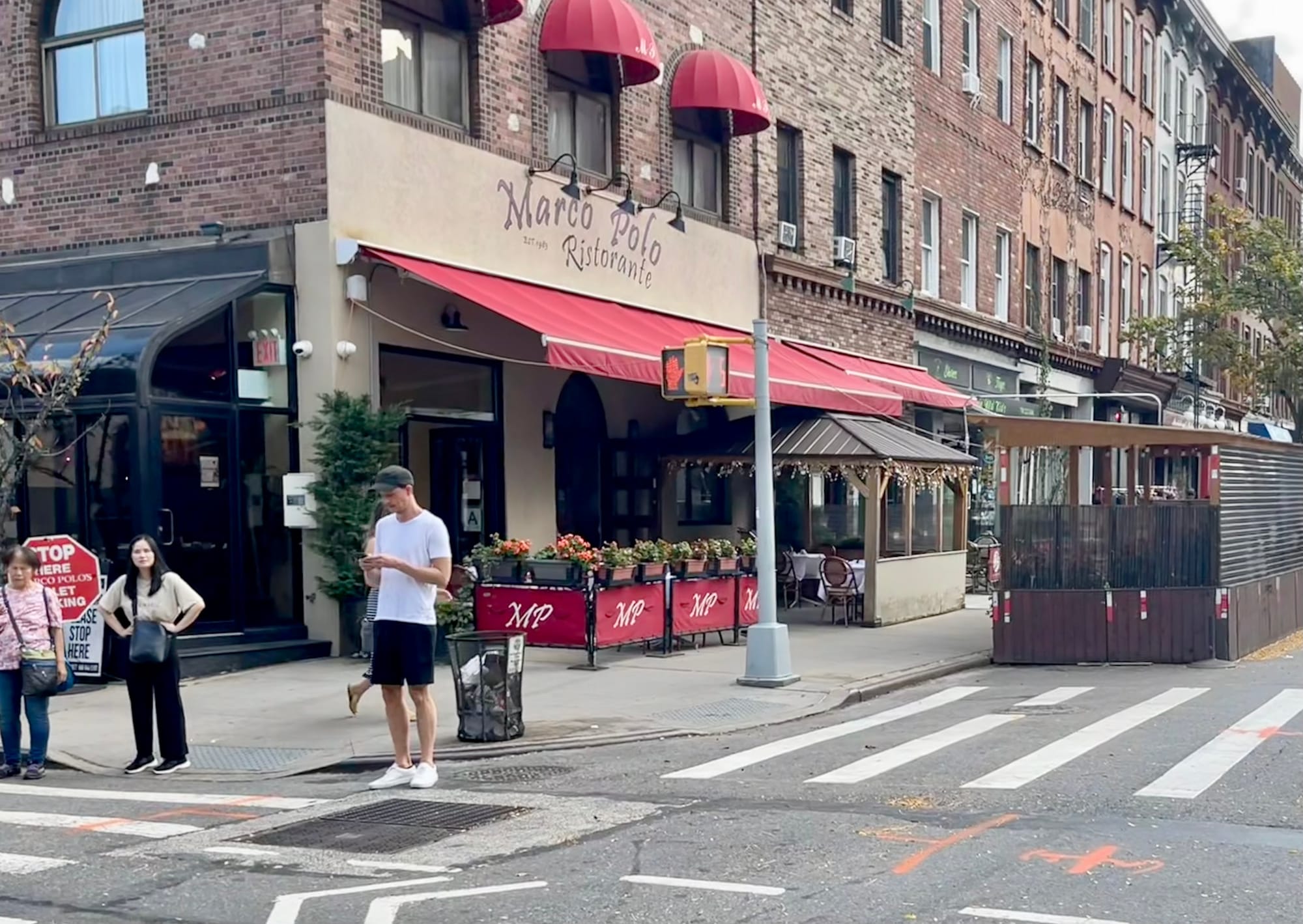
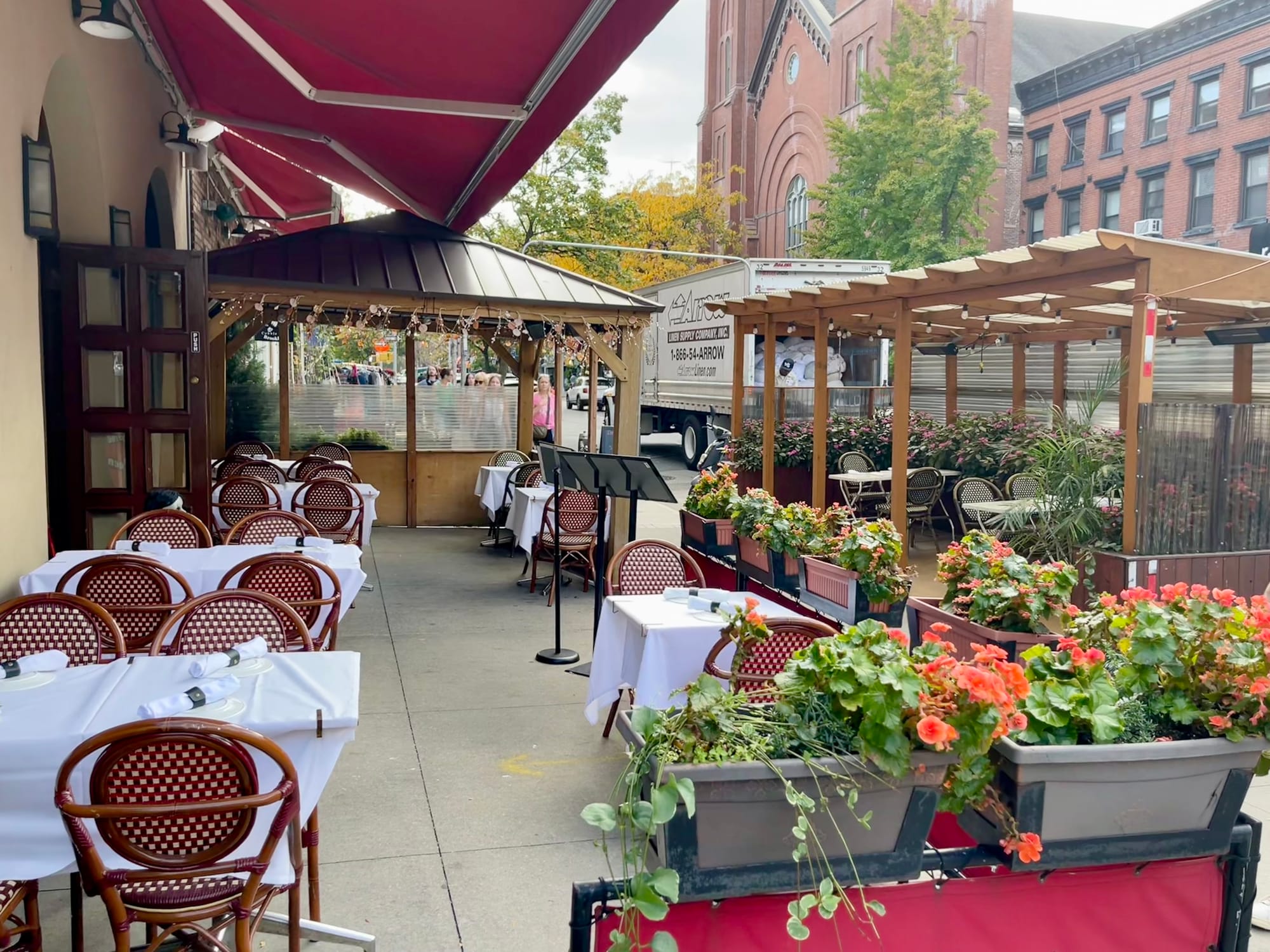
Marco Polo - a new addition to sidewalk hubs
Social hubs have become the lifeblood of so many communities.
The best ones are developed and managed by community members, often business owners who have an idea of what will make their place great based on an understanding of their offerings, customers, and neighborhood. They start experimenting, trying different ways of attracting attention, adapting to feedback, changing from day to day or week to week. This is improvisation at its best.
Reciprocal gestures
This naturally happen as neighboring business get inspired to make changes too. People get creative, seeing what works and improvising. With the freedom to test and grow this creativity, these great spots are able to evolve and sustain themselves organically. There is local self-governance at the level that matters most to community members.
Why are we losing these great places??
Despite the fact that New York's dining sheds have become a powerful catalyst for sacred social hubs and a resurgence of community life, they are now being destroyed. Why? It comes down to pushback from a vocal minority that is stuck on how things used to be, failing to realize they haven't been very good for quite some time. People say dining sheds take up parking spots, attract rats (we'd argue that the bags of trash on the street do that) and anything else to get rid of them despite how popular they are and how much they've improved our previously car-dominated streets.
To pull the dining sheds back under government control, an extensive set of new rules has been passed that will strip them of their uniqueness and allow them to be open for only part of the year. These restrictive rules will likely put a stop to the recent progress we have made in revitalizing our streets. This new and exciting practice of long time owners making their businesses better through improvisation, initiative, and creativity will have to end.
COVID gave us a sense of what it would be like if NYC was a place for people and active social life instead of for cars and traffic. Considering the fact that the vast majority of New Yorkers don't drive, as well as the fact that the city is actively taking measures to decrease the presence of cars in the city via (hopefully) a congestion tax implemented soon, doesn't it make sense to pursue and support this less car-focused way of living?
What's more, it make sense to empower communities and local businesses to shape their environments into unique and interesting destinations that they take care of and take pride in. This is a practical, hands-on approach to revitalization of both businesses and public spaces. As such, it should be encouraged, not stifled by limiting the freedom of those who want to be involved. This is an iterative approach which can draw people in on multiple levels, from community members to business owners to local leaders, creating a powerful collaborative effort towards city betterment. It is a great way to get people engaged and invested, improving and maintaining their communities.
This is Placemaking at its best
To keep this great initiative alive, there could and should be an agency or a public/private entity developed to help guide and support these community-led efforts, through a set of flexible guidelines, a kind of "Pattern Language." Helping businesses attract foot traffic and customers by letting them expand into vibrant social gathering spaces that people flock to is just plain good business. This should be supported, not stifled. It is true Placemaking in action and we should fight for it.
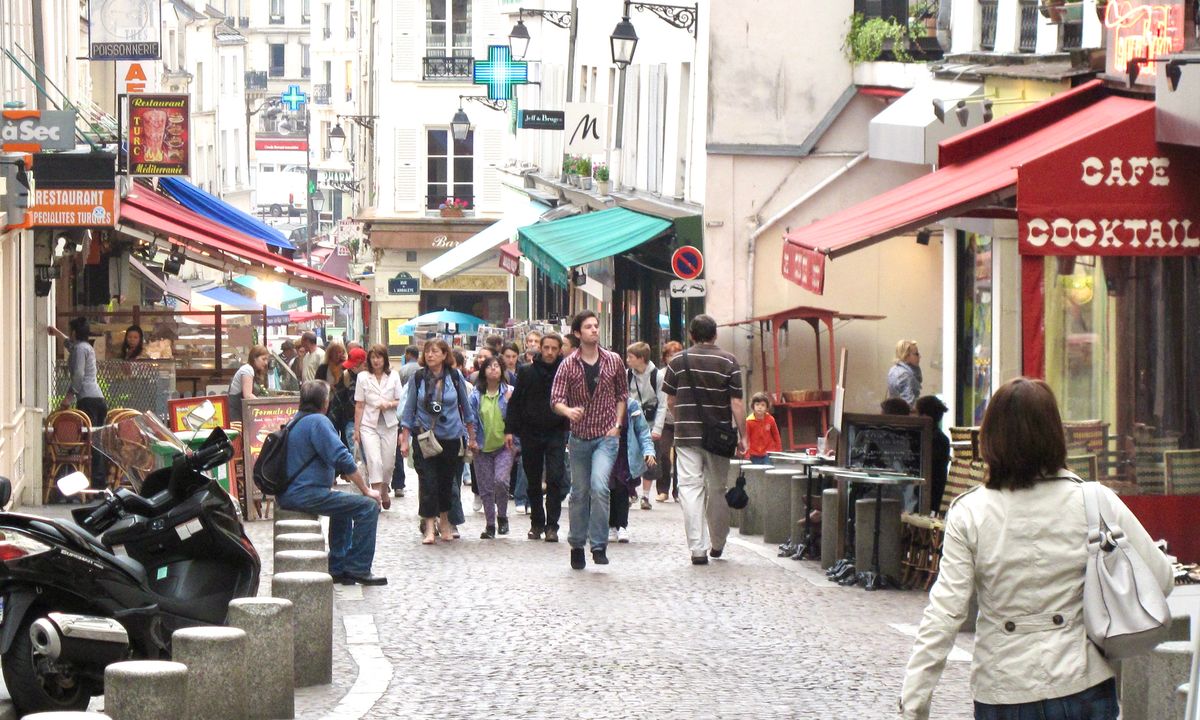
“Dull, inert cities, it is true, do contain the seeds of their own destruction and little else. But lively, diverse, intense cities contain the seeds of their own regeneration, with energy enough to carry over for problems and needs outside themselves.” - Jane Jacobs
Further Reading
The following posts are drafts of follow-up articles on this topic that we will be posting soon.

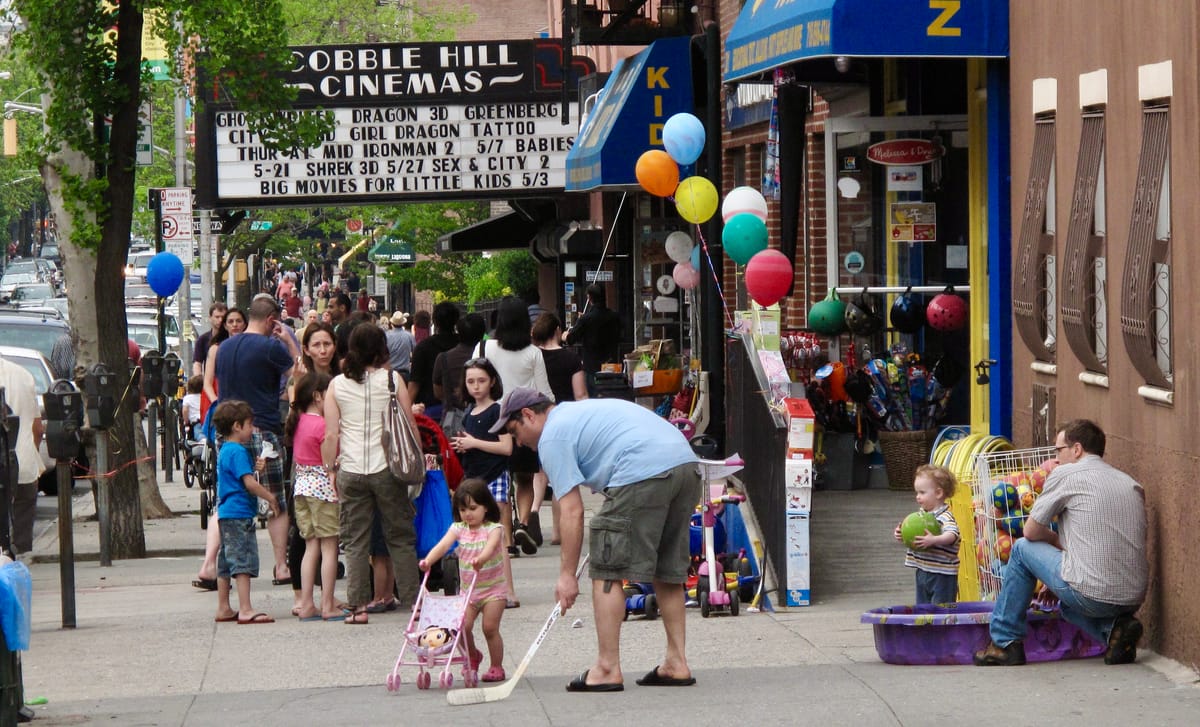
Other NYC Posts
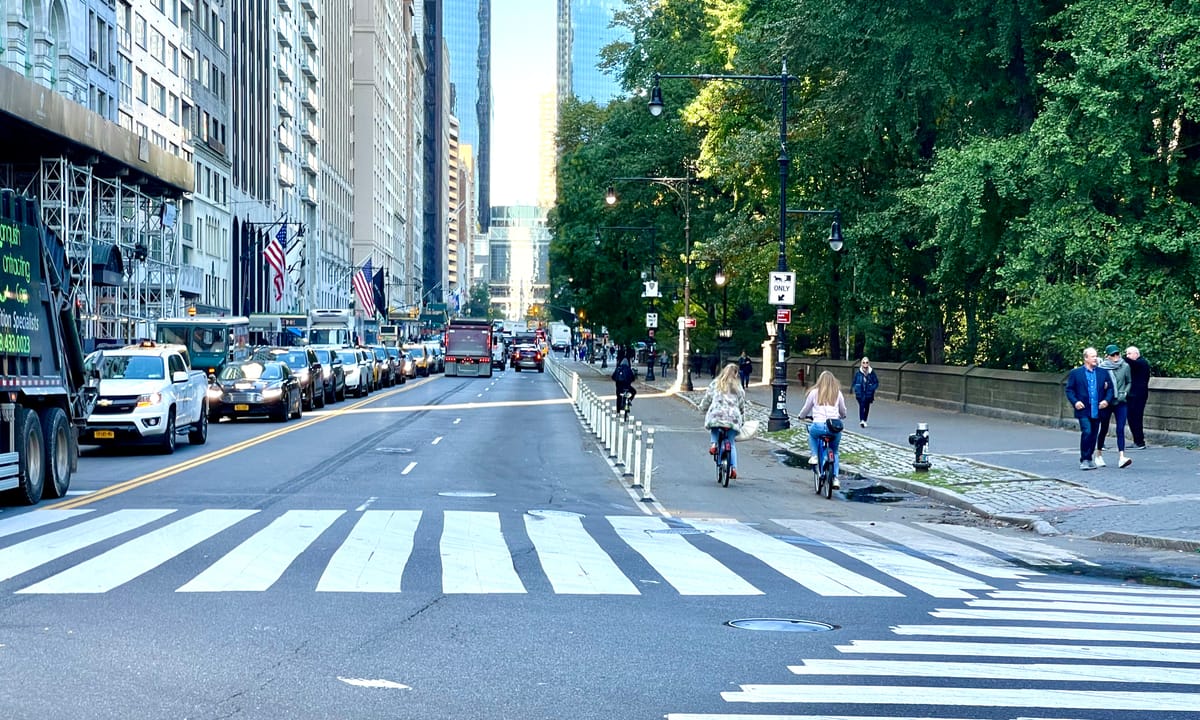
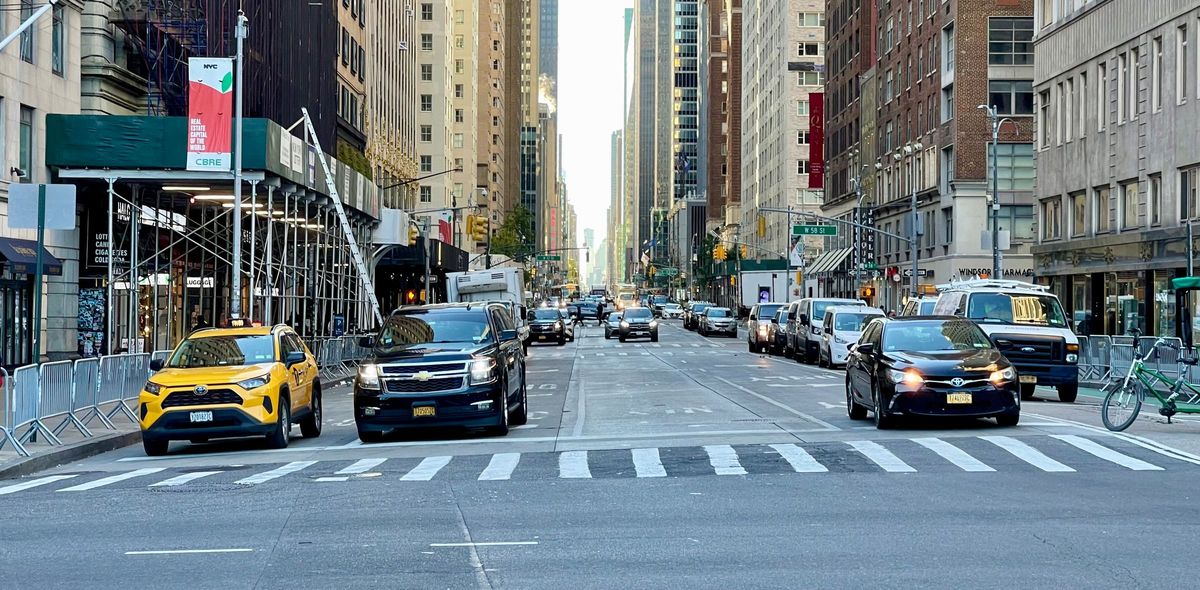
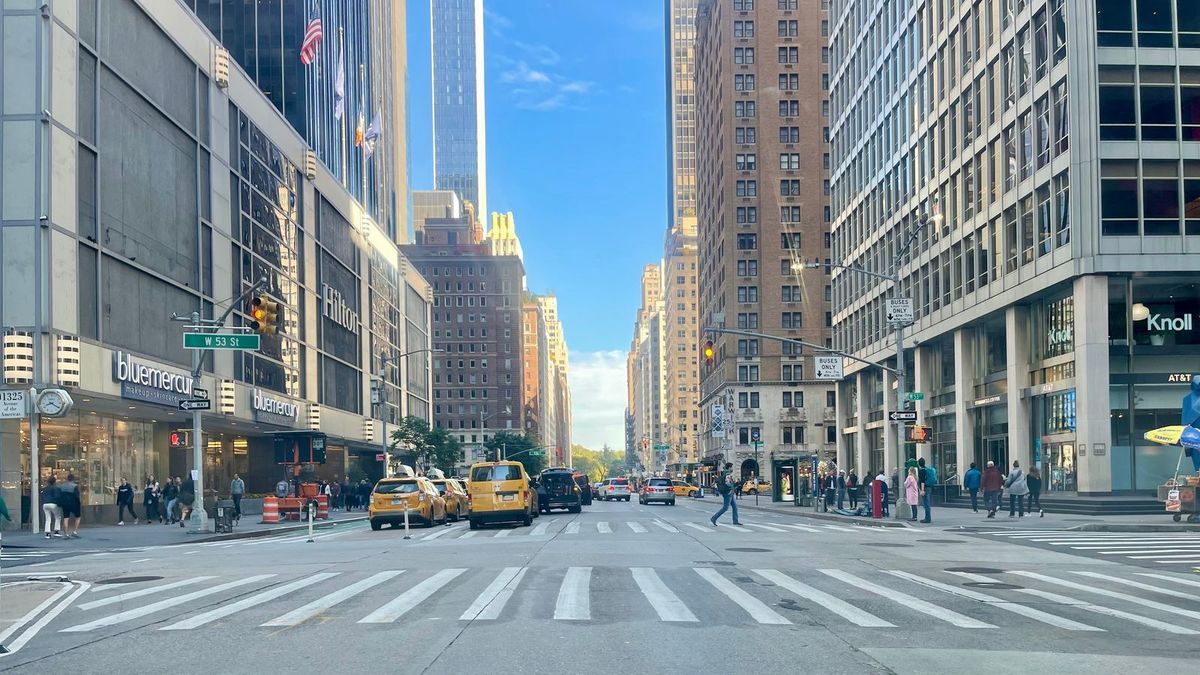
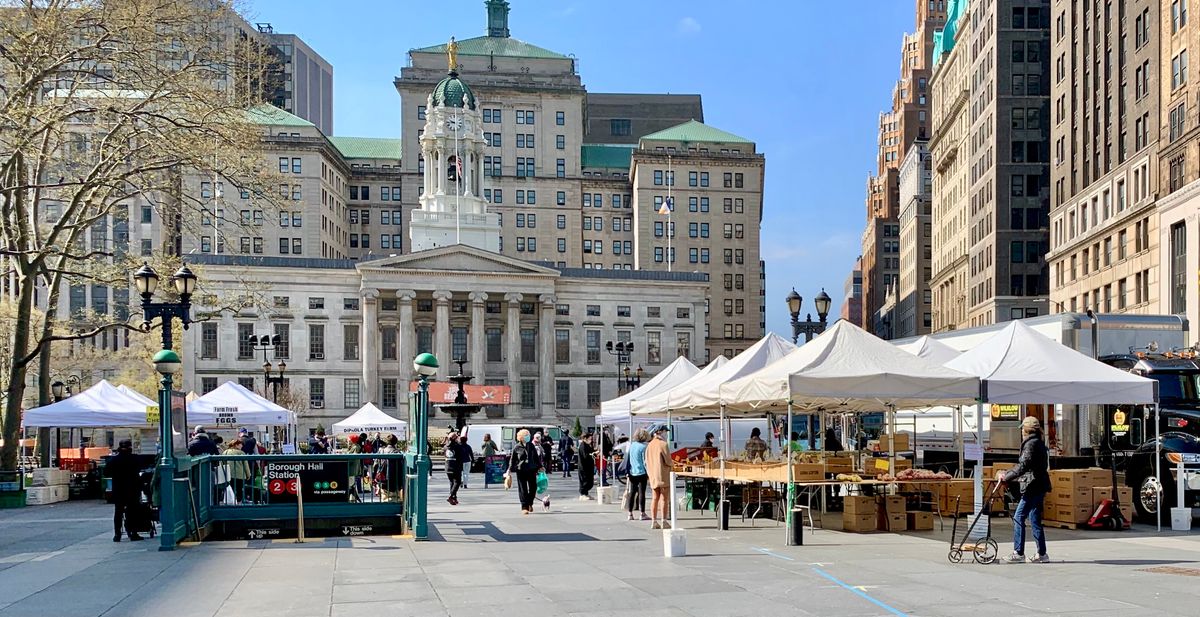
Who We Are
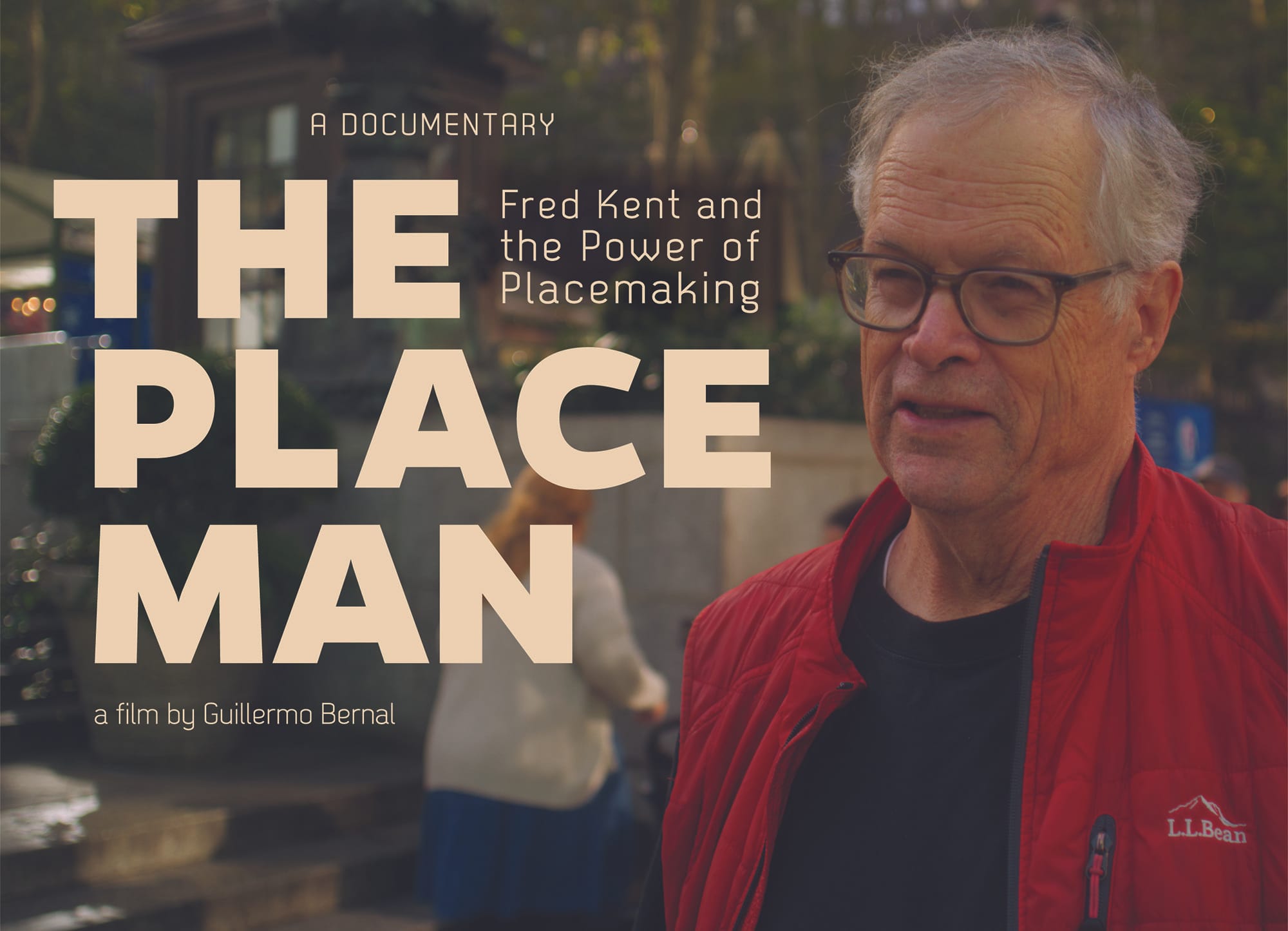
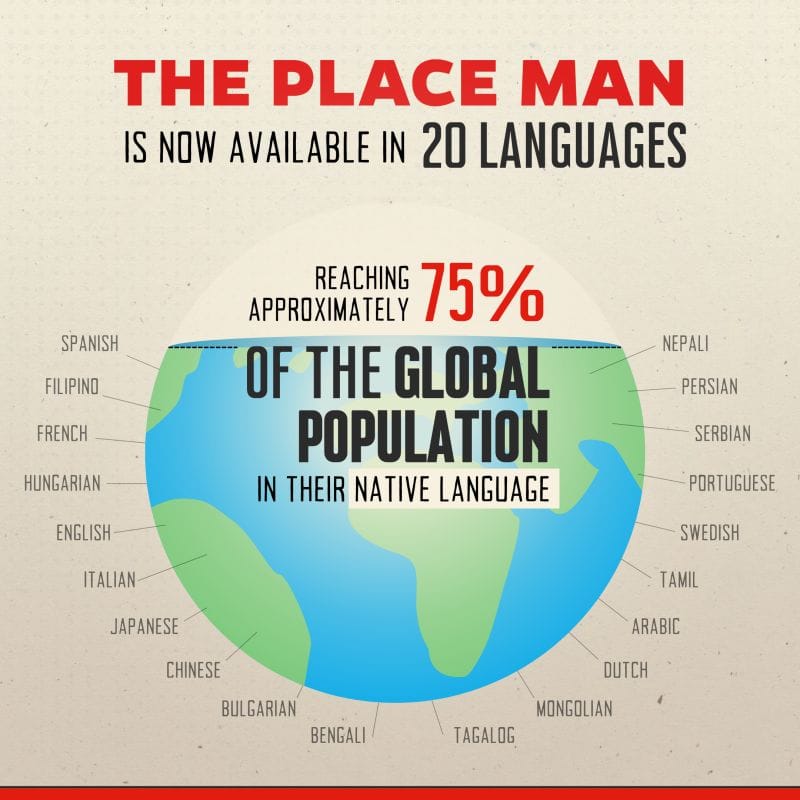
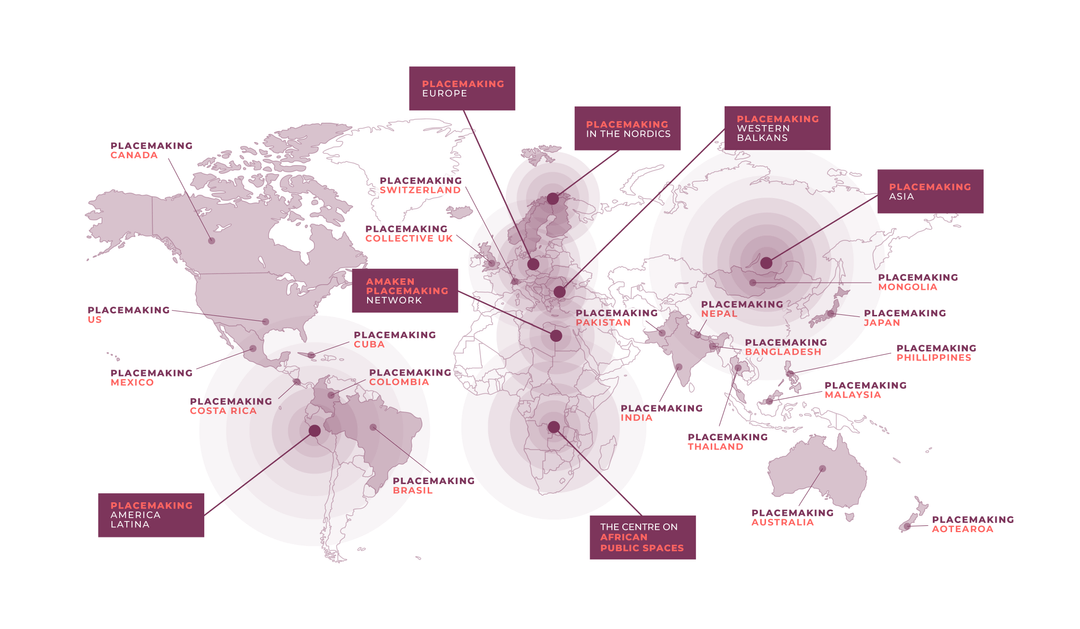
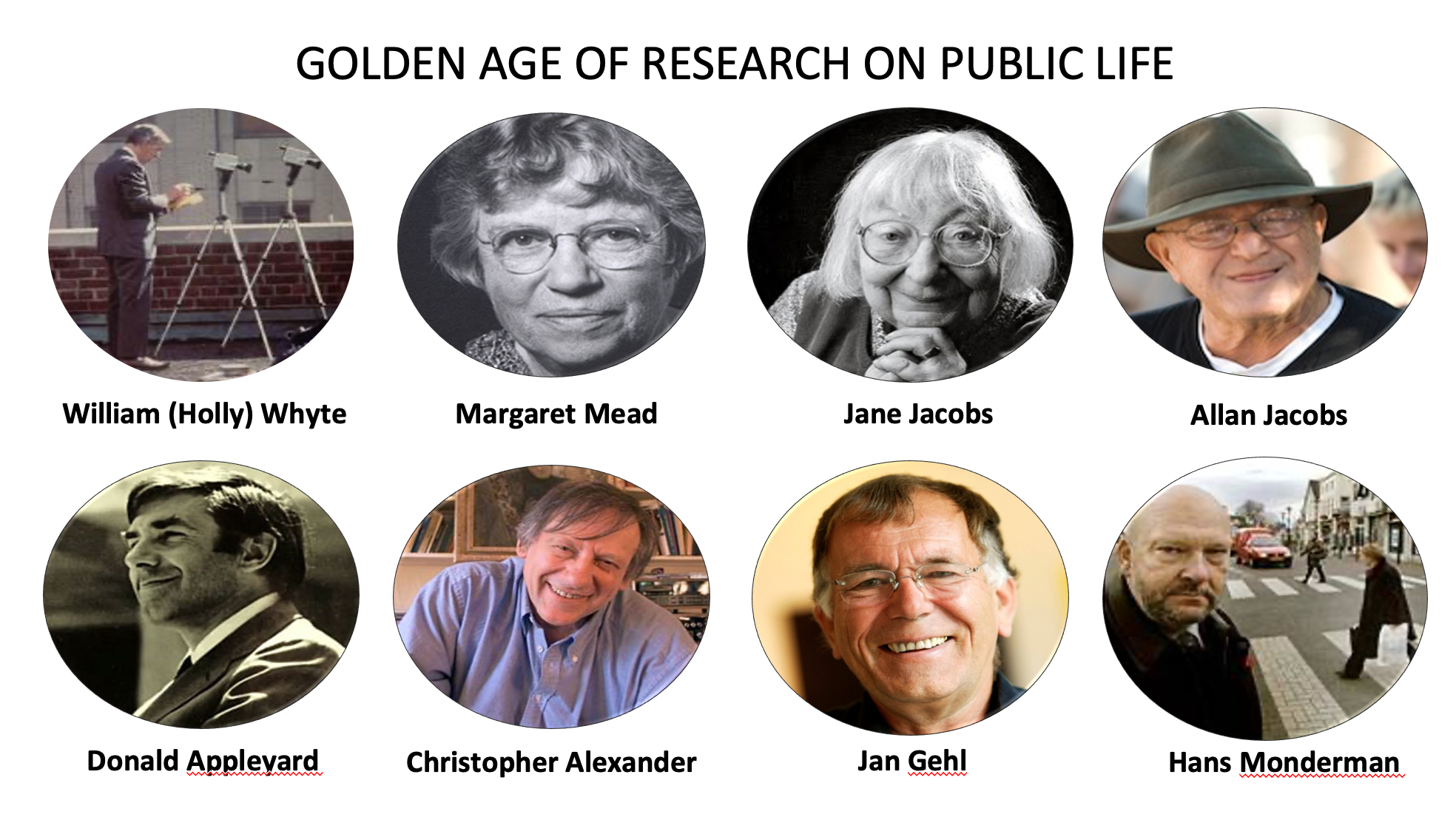
We have led the Placemaking Movement. There are over 30 centers of Placemaking globally. Our mentors were part of what we call, The Golden Age of Research on Public Life




